The “w126 body” S-class (or “126”) body style sold from 1980-1991 is considered one of the most influential designs in Mercedes-Benz’s history. It’s hard to argue that 126’s exude power, sophistication and continue to inspire imitation today. Among the sleekest designs on the road when introduced, 126s were among the first modern luxury cars equipped with anti-lock brakes, airbags, traction control, and many other technological advances.
(Photo slideshow for all S-Class variations is at end of article)
Many cinematic films selected this generation of S-class to be driven by sinisterly powerful characters – bad guys that command fear and respect. One might say the w126 is a major motion picture star for its classic styling and clean lines that have not diminished even by today’s standards.
Whether you’ve always wanted one to collect or to use every day, prices have never been more affordable than they are now. As an owner of a 1984 500SEL, I’ve created this reference guide to help understand variations that existed during the w126 production run.
BOTH 1970s FUEL CRISISES AFFECT 126-BODY DEVELOPMENT AND INTRODUCTION
When designers and engineers began designing the 126-body S-class, the 1973 fuel crisis was fresh in their minds. Engineers decided the next large Mercedes-Benz to be introduced would be lighter and more efficient than the 116 body S-class it replaced.
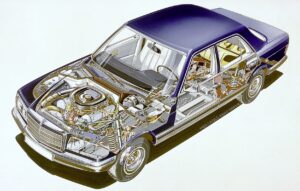 With typical Mercedes thoroughness, engineers cut no corners. Lightweight aluminum V8 engines of several sizes were designed and perfected with this luxury class model in mind. The new body was given better aerodynamics. Ways to cut weight and at the same time improve body strength were analyzed with great detail. Fuel economy requirements that would go into effect for the 1980 model year in the United States were important development factors as well.
With typical Mercedes thoroughness, engineers cut no corners. Lightweight aluminum V8 engines of several sizes were designed and perfected with this luxury class model in mind. The new body was given better aerodynamics. Ways to cut weight and at the same time improve body strength were analyzed with great detail. Fuel economy requirements that would go into effect for the 1980 model year in the United States were important development factors as well.
Front stabilizer bars were moved from the firewall to frame legs for better crash performance. Rubber mounts in the rear suspension were made larger for better isolation. Brake pads were made thicker and of improved lining materials. Power steering sensitivity gave better road feel. Doors were designed to overlap to allow opening after a crash. Steering wheels were slightly larger, and power seats were available for the first time.
1980: NEW 126 MODELS DEBUT IN EUROPE ONE MODEL YEAR EARLIER THAN IN THE UNITED STATES.
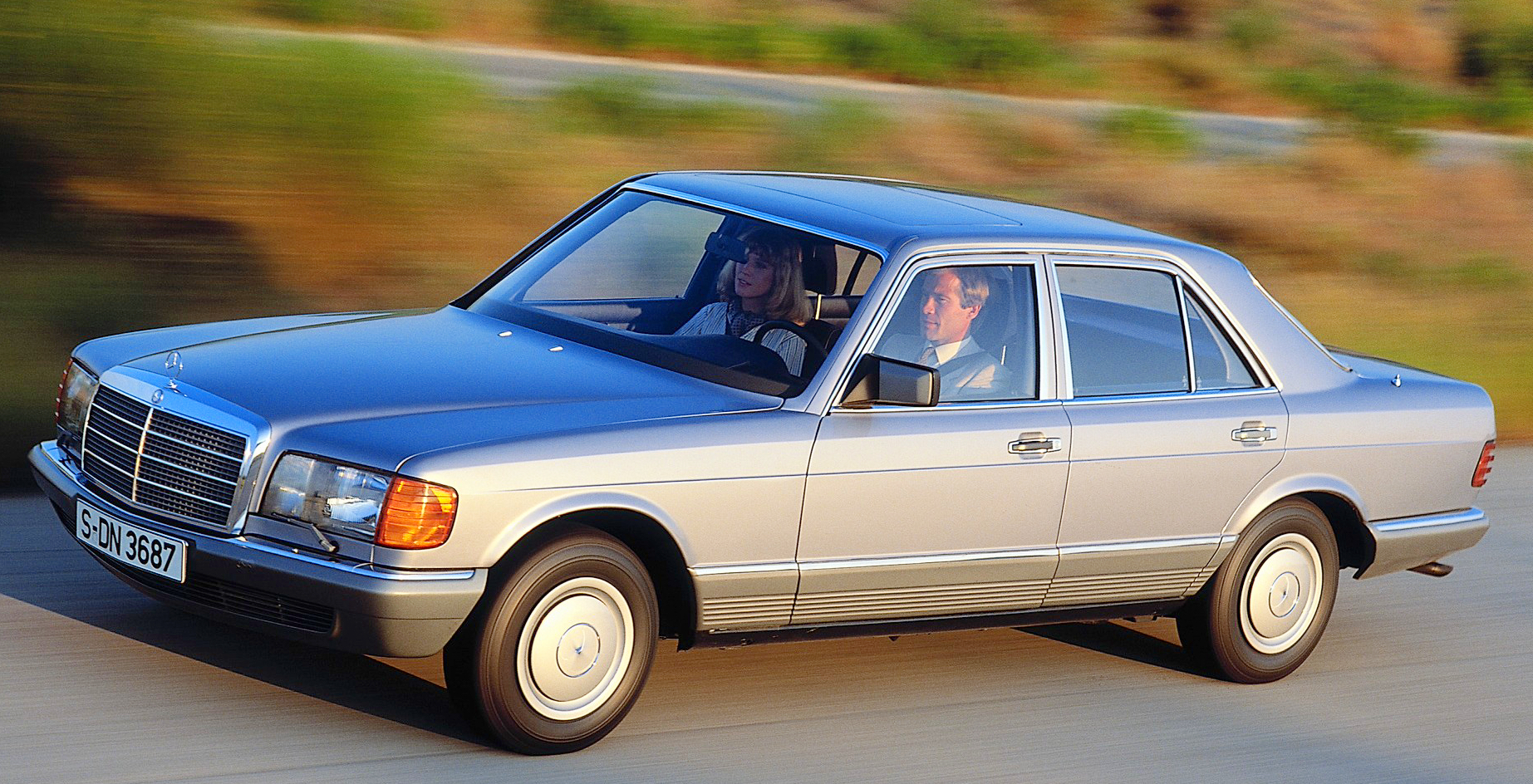
Short-wheelbase 280S, 280SE, 380SE, and 500SE models went into production first in late 1979 as 1980 models for the European market only. The following spring, 1980 long-wheelbase SEL models debuted in Europe. Any w126 with completely flush headlights, smaller plastic bumpers, and plastic wheel covers likely started out as a European model.
The w126 generation of the “S” (“Super”) class Mercedes was unveiled at the 1979 Frankfurt Auto Show. As with prior S-classes, both a standard wheelbase design and an “L” (Long wheelbase design stretched four inches at rear door openings) were created. Standard-wheelbase 280S, 280SE, 380SE, and 500SE models went into production first in December, 1979 as 1980 models for the European market only.
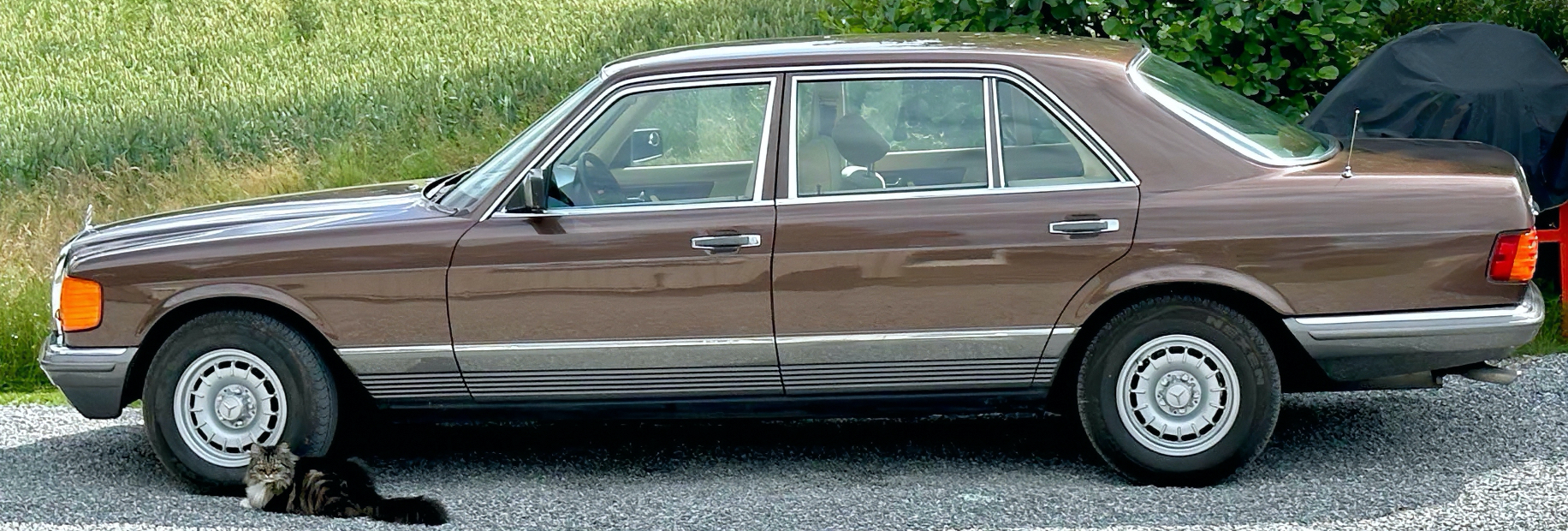
Since W126 long wheelbase sedans were introduced late in the 1980 model year, there are some out there – but not as many as other years. Shown here: a 1980 500SEL.
The following spring, 1980 long-wheelbase SEL models debuted in Europe. For clarification, “E” stands for fuel-injection, which the 280S did not have. It’s interesting to note that 1980 versions of the previous w116-body S-class were still being sold both in Germany and in the United States.
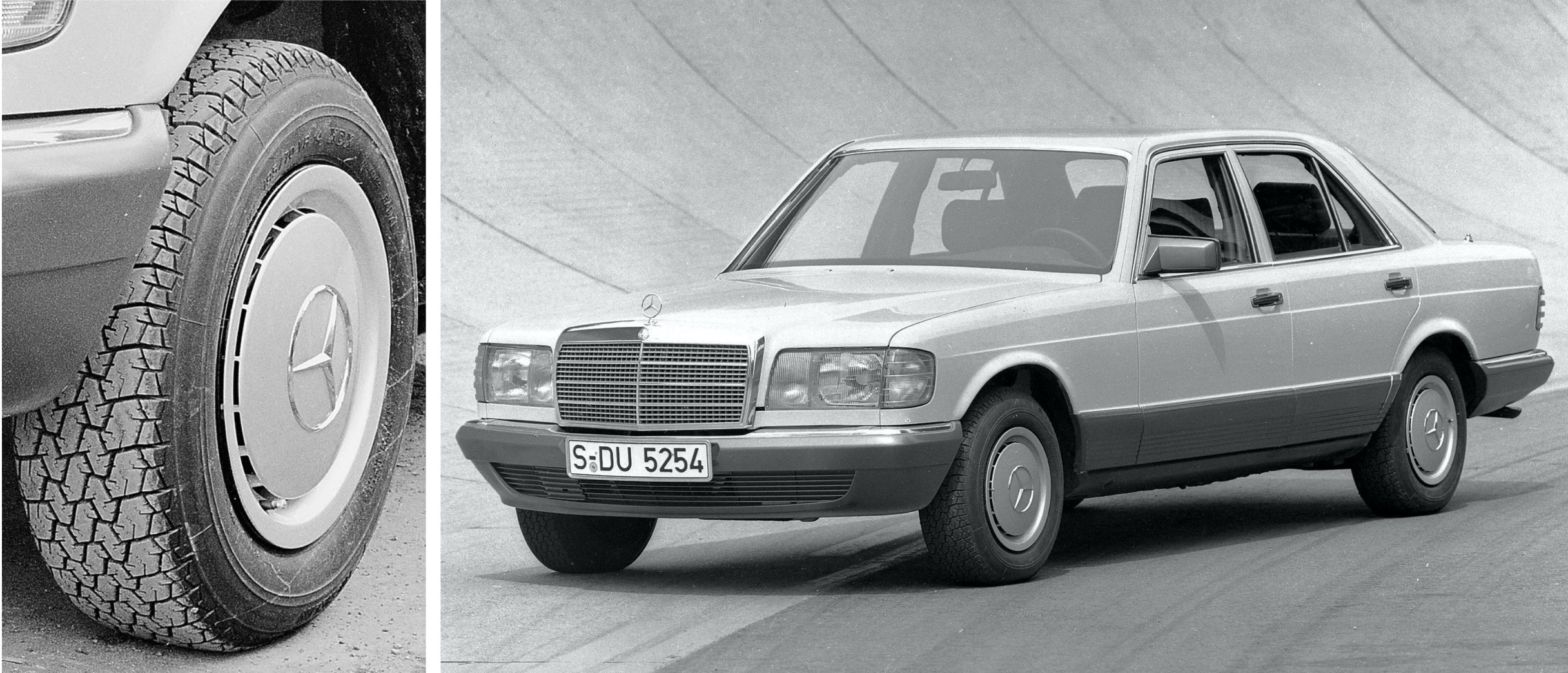
Pre-production w126s featured these 14-inch wheel covers, which were also used in photographs for 1980 model brochures. Mercedes did not put them into production because these wheel covers drew cooling air away from the brakes, and actually hurt the car’s overall coefficient of drag. I’ve attempted to locate a set of these for years, but have never been successful in finding any.

Shown here are the more aerodynamic 14-inch wheel covers that did make it into production. These ran through 1985.
1981: U.S. INTRODUCTION OF 300SD TURBODIESEL AND 380SEL V8 MODELS.
Since 126s were hundreds of pounds lighter than their predecessor, smaller engines and 4-speed automatics (in place of 3-speed units) could achieve greater economy. Iron block 2.8-liter six cylinder engines, and 3.0-liter five cylinder turbodiesel engines were carried over unchanged from the previous S-class.
Making bigger news were two new aluminum V8 engines: A 3.8-liter that produced equivalent power as the previous model’s larger 4.5-liter engine, and a 5.0-liter that approached the older 6.9-liter big block V8’s performance when matched to the lighter 126 body. Long-wheelbase models were introduced during 1980 as late ’80 models in Europe, and as 1981 models in the United States.
During that time, fuel shortages and high prices meant buyers were more concerned about economy than power. The four-engine lineup that had existed on the previous w116-body S-classes in the U.S. was cut down to two through the 1983 model year: the 300SD and 380SEL. The gas guzzling 6.9-liter V8 of the 1970s was banished to the history books.
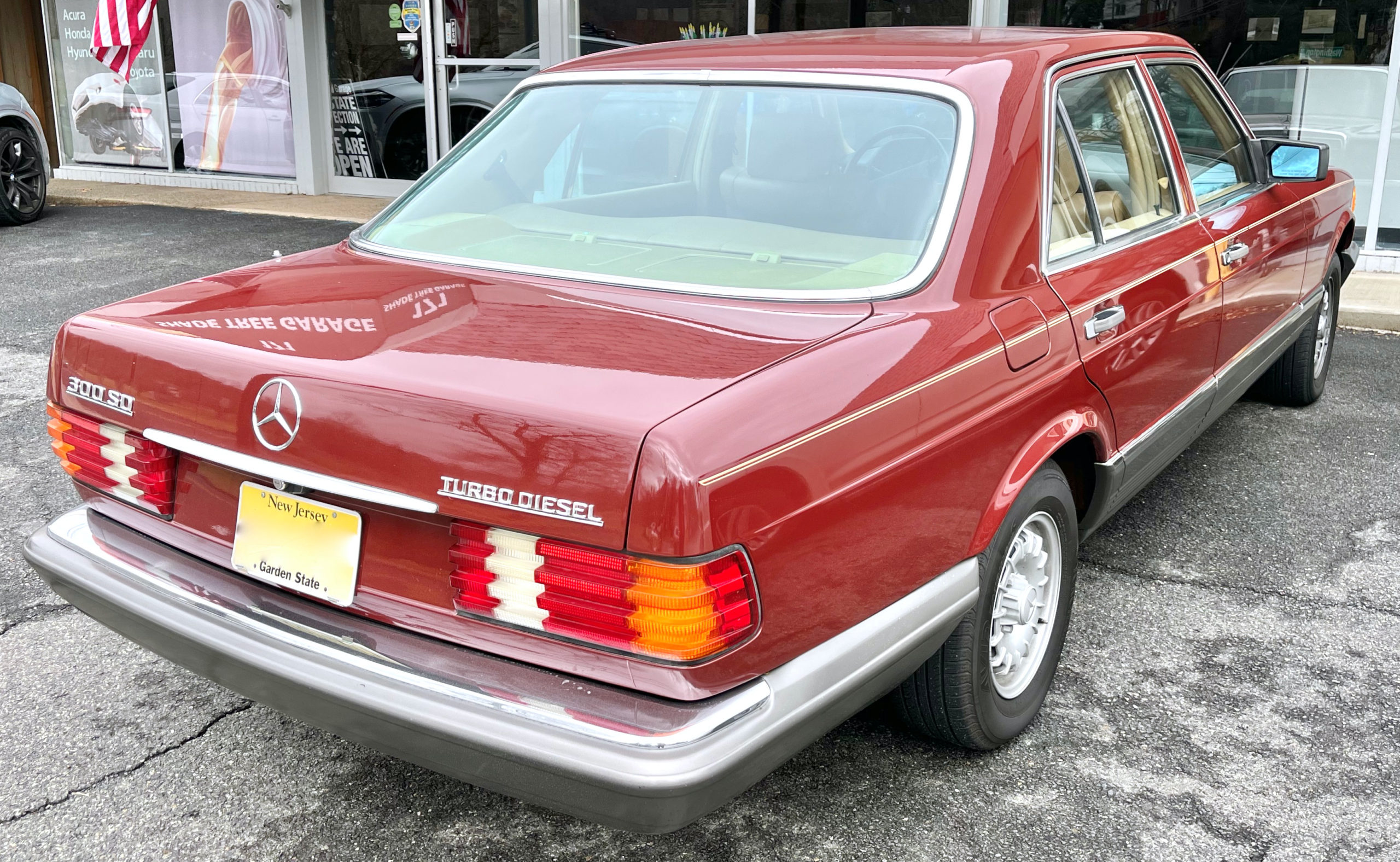
Short-wheelbase 126 bodies came first to the U.S. in the form of 1981-85 300SD models (shown), and 1984-85 380SE models.
300SDs, priced at $34,000, flew off the showroom floor the moment they were introduced in autumn of 1980. The 3.0-liter, 5-cylinder turbodiesel was a proven, robust engine that offered 120 horsepower and superb economy, allowing the 3,750 pound car to attain 33 miles per gallon highway. With gasoline prices at all-time highs in the early 1980s, these were the right cars for the times. During the two-model period of 1981-83, 300SD sales accounted for more than 80% of 126s sold in the United States – many of which are still on the roads today.
The 300SD continued unchanged through 1985, after which two other turbodiesel engines with 6 cylinders were sold. Unlike the 5-cylinder diesel, both of those 6-cylinder engines had mechanical issues.
380SELs were sold in the U.S. during 1981-83 model years. Initially priced at $44,000 and making a tame 155 horsepower, 380SEL sales were not overwhelming – making them harder to find today. Before 1986, trade laws were more flexible regarding private imporation of cars purchased overseas, so it was easy to purchase a European model from Germany and have it shipped over to one of the U.S. Conversion houses that opened to fit emissions equipment required to pass U.S. inspection.
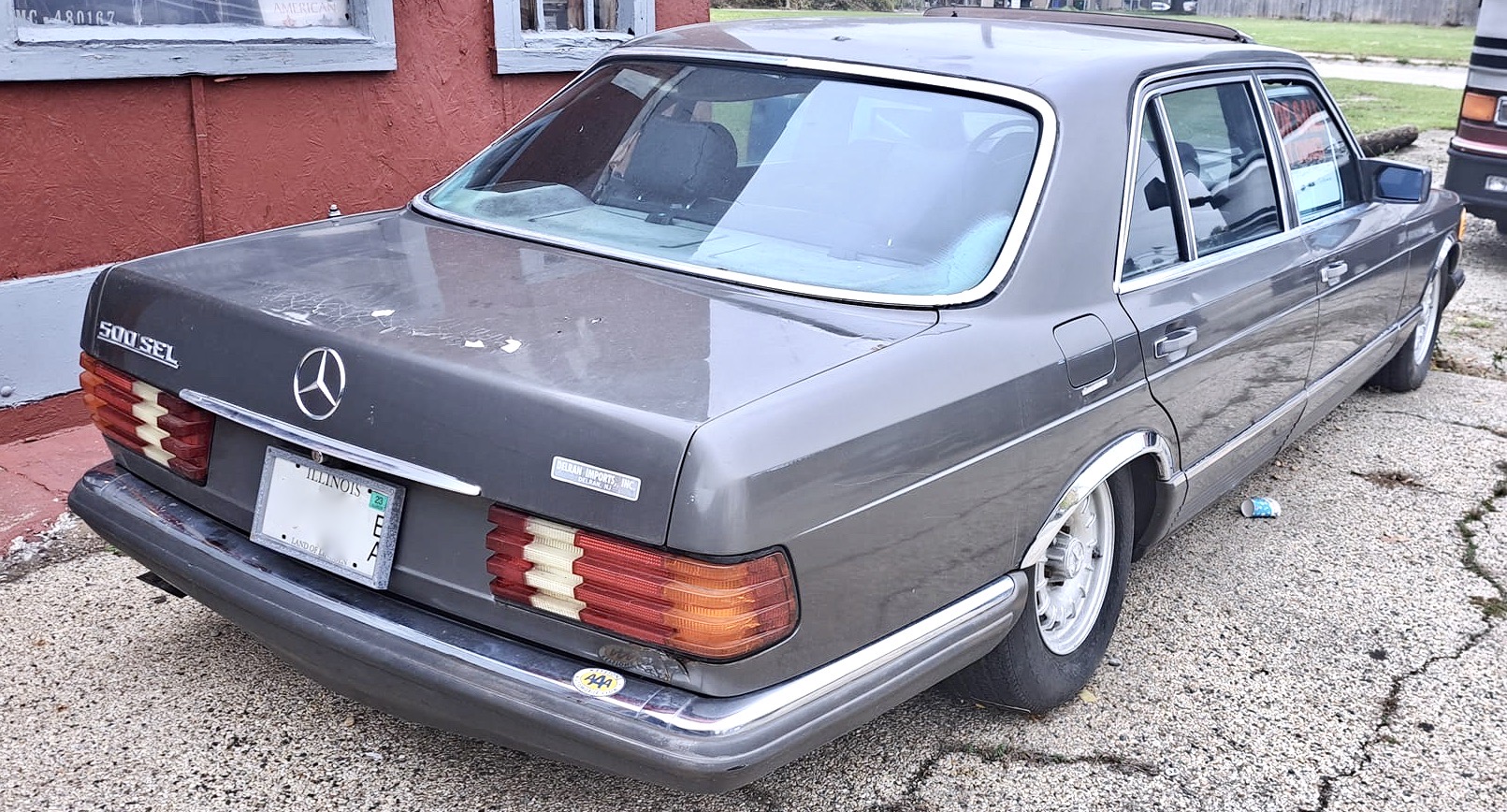
This Euro 1980 500SEL is equipped with a rare 4-wheel version of the company’s hydropneumatic self-leveling suspension (SLS). Offered only on top SEL models, U.S. market W126s SLS systems were only fitted to the rear wheels.
Beginning with 1980 models, Mercedes offered a 4-wheel version of their hydropneumatic suspension on long-wheelbase V8-powered models sold in the European market. With U.S. models, the hydraulic suspension was only fitted to the rear wheels – optional on top 380SEL and 500SEL models through 1985, and standard on all 560SELs. This self-leveling suspension (known as “SLS”) offered a smooth ride that could firm up around corners. However, it is complex and expensive to repair when parts inevitably fail.
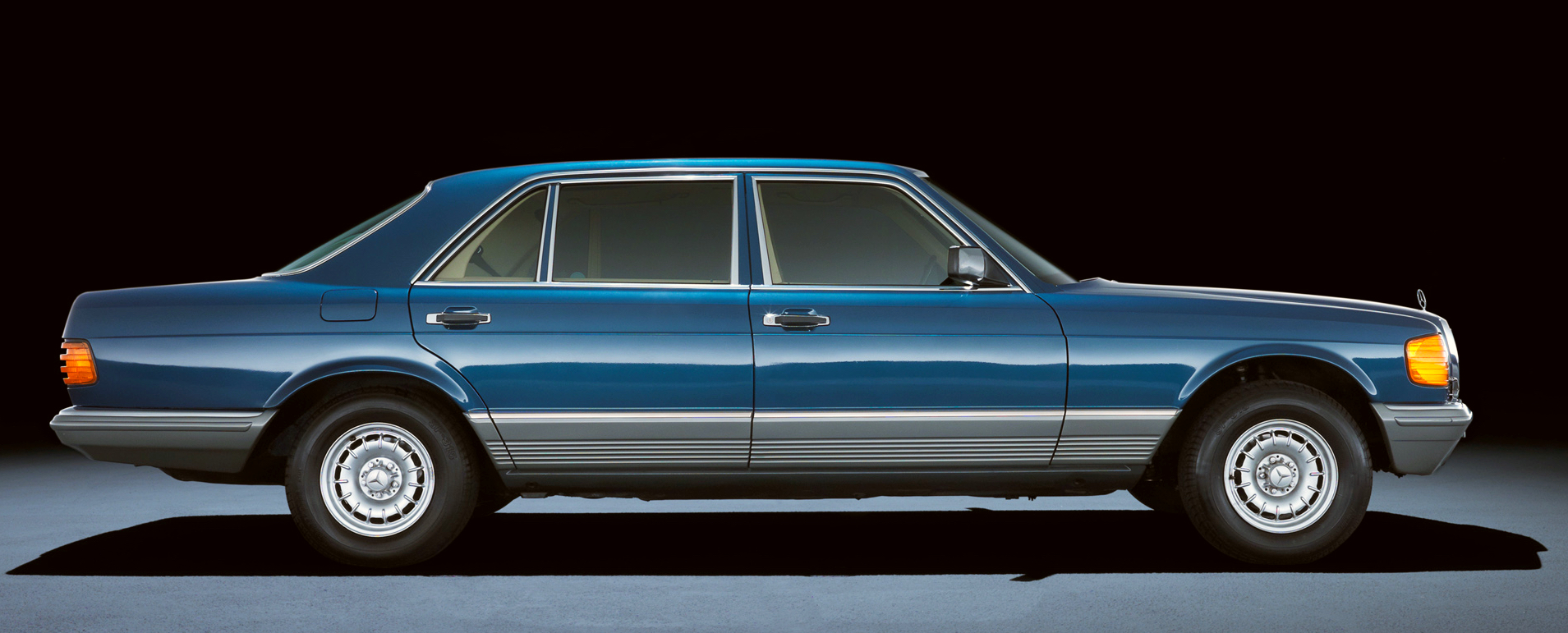
After short-wheelbase models debuted, long-wheelbase 126 S-classes were introduced later in the 1980 model year in Europe, and for the 1981 model year in the U.S.. While body panels were the same, overall length was stretched 4 inches at the rear doors.
When currency exchange rates were factored in, buyers more interested in V8 power and prestige could buy a 240-horsepower 500SEL overseas for only a small amount more money than a U.S. 380SEL, which hurt sales of 380s. A w126 with completely flush headlights, smaller plastic bumpers, lower-cost cloth interiors, and plastic wheel covers is a giveaway, since none of these items were ever available on U.S. models.
1982: RETURN OF THE S-CLASS COUPE
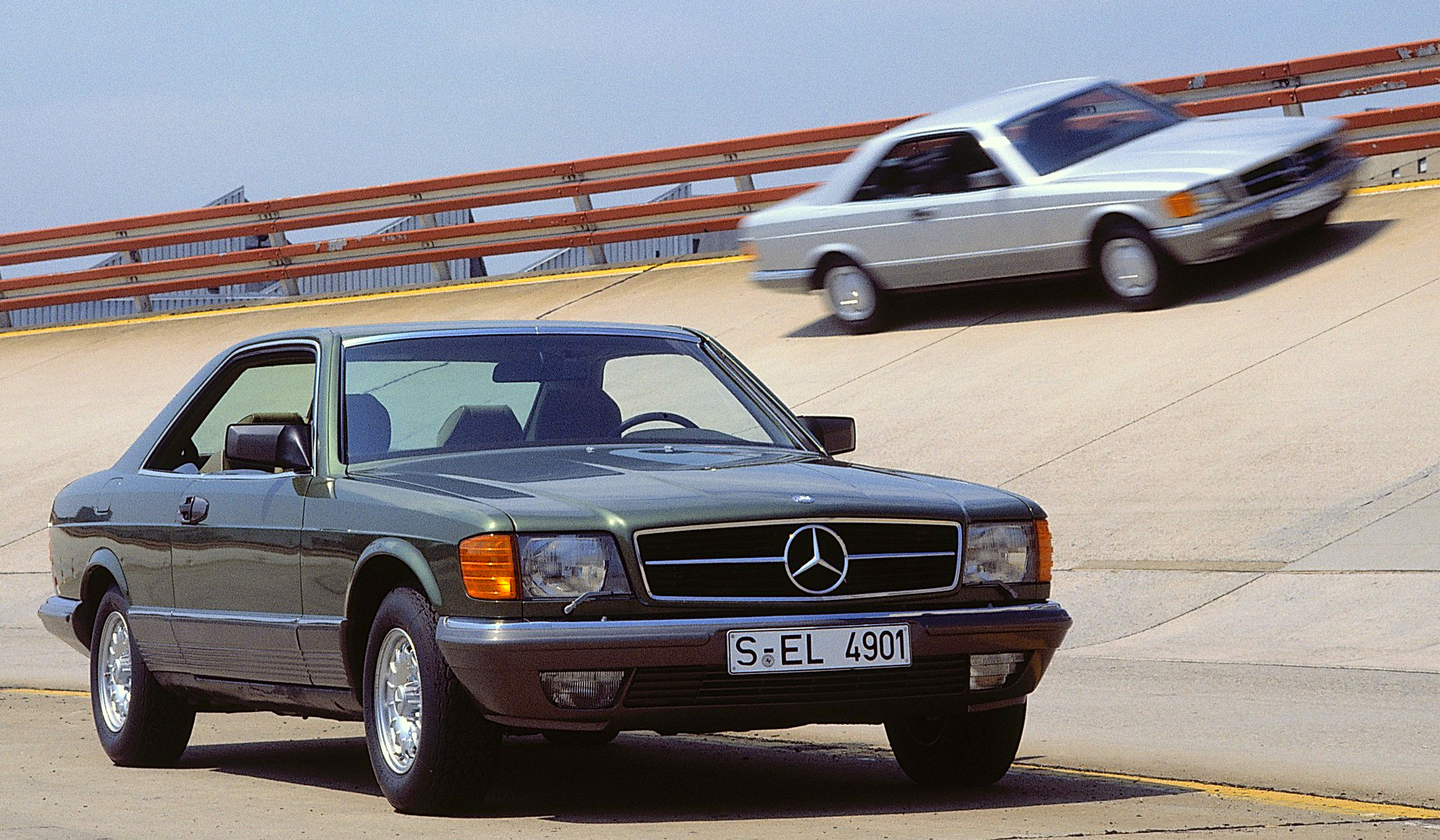
The SEC coupe was introduced for the 1982 model year. U.S. SECs only came equipped with the largest V8 the company offered – each year through 1991.
The 1982 model year saw the introduction of the first S-class coupe since the earlier 1965-73 generation. Built on a wheelbase three inches shorter than the standard SE sedan, the coupe was created to offer a more intimate driving experience. Luxury and prestige were at the highest level. Seats were leather; everything was power; and only the highest and best fittings would do. 126 coupes had their own model badge designation, “SEC”, rather than sharing sedan badge names. The one and only engine choice in coupes was consistently the largest V8 offered in sedans. W126 coupes sold in the U.S. were 1982-83 380SECs, 1984-85 500SECs, and 1986-91 560SECs.
The SEC model designation was unique to the 126s and to the first year of the next-generation W140 S-class coupe (a 1993 model). Technically, SECs were only produced for those ten model years. In keeping with tradition, S-class sedan and coupe advertising was geared towards intelligent, upscale professionals since they were the most likely buyers.
Many fans feel diesels (especially those of early-1980s vintage) can be as collectible as any Mercedes-Benz. They were popular in their day, possess strong originality and purity, embody what many people first perceived a Mercedes-Benz to be, have many cult fans, and make intriguing period pieces. They will likely survive the test of time and enter a nostalgic relm as they age. These factors have always been present in any car design our culture tends to appreciate as a classic. So, if you’re a fan of classic cars (past, present, or future), a 1981-85 300SD Turbodiesel is a sure bet.
1983: A MINOR CHANGE FOR DETAIL WATCHERS
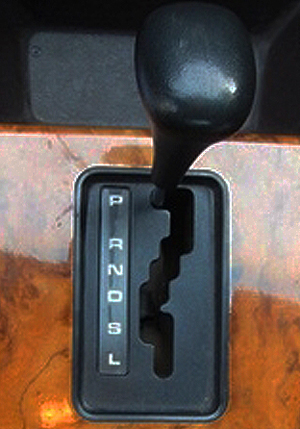
Mercedes 126-body S-class models from 1980 – 82 had gearshift levers that read “D / S / L”. For 1983, the detents were changed to read “D / 3 / 2” – with an extra notch for 1st gear.
One small difference for detail watchers: four-speed automatic transmission gear selector gates are marked “D/S/L” on 1981-82 models; changing to a more accurate “D/3/2” for 1983-on. Manual transmissions were available but only on European six-cylinder models.
Resale value and graceful aging are points that Mercedes-Benz consistently makes through advertising. As one 1983 advertisement says, “There have never been enough Mercedes-Benzes to satisfy America’s demand. Perhaps it is because their value has never been cheapened by annual model changes, or face-lifts, or marketing artifice of any kind.”
Traditional luxury car fans usually agree that keeping a car free of unnecessary year-to-year changes only enhances that car’s appeal in the long run. Aside from headlights and redesigned plastic trim, all 1981 panels are interchangeable with 1991 126-body models. Certainly a definition of classic appeal.
1984: TWO NEW GASOLINE-POWERED V8 MODELS INTRODUCED IN THE U.S.: 380SE AND 500SEL
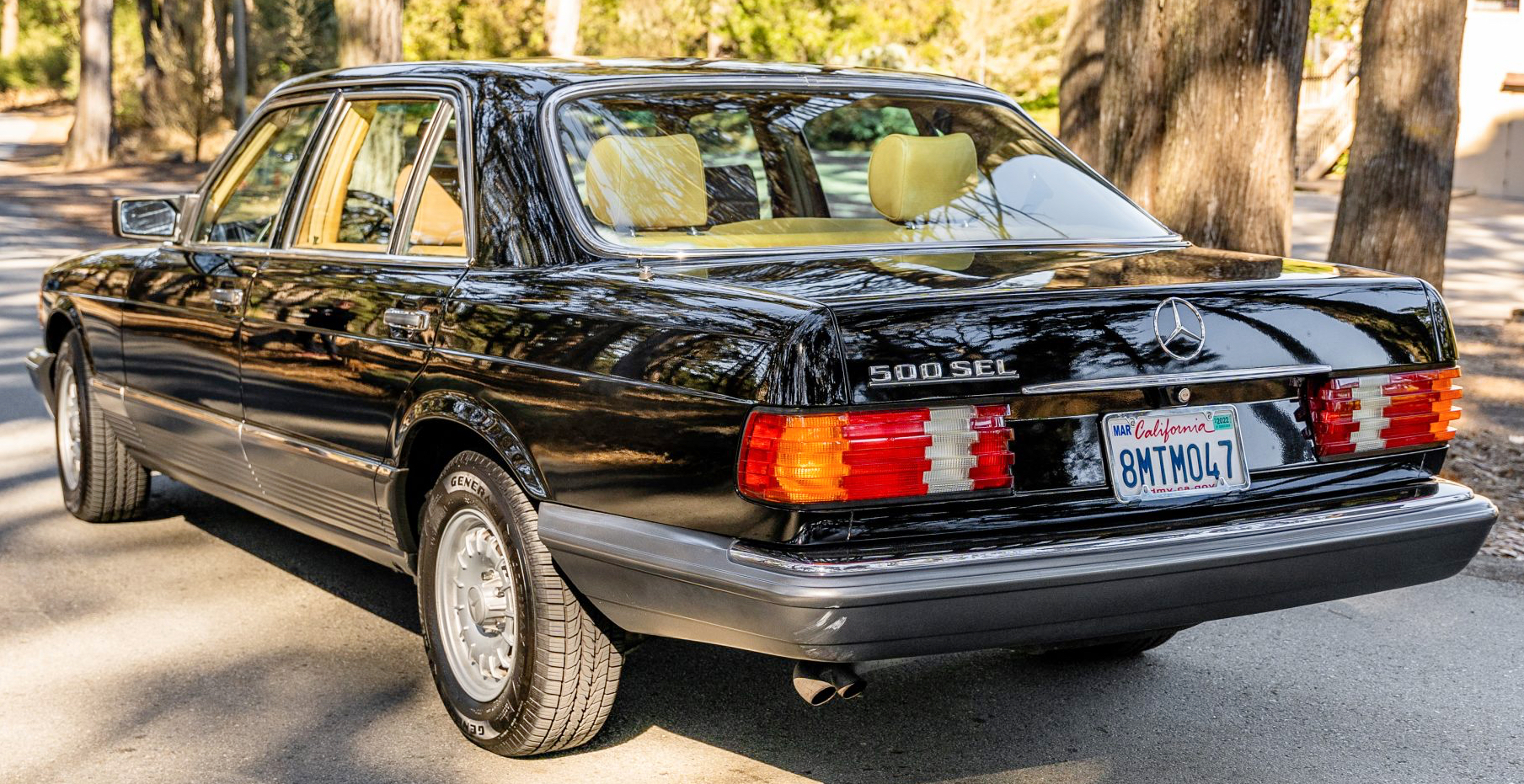
The 500SEL was finally brought to the US for 1984-85, and was the sole long-wheelbase model during those years.
The 1984 model year was an important one for 126s in the U.S., second only to 1986 mid-life styling and engine upgrades. Anti-theft alarm systems were introduced standard on all ‘84s. But more significant were falling gasoline prices and a rejuvenated U.S. economy. The 1980s everyone chooses to remember filled with materialism and desire to show off one’s wealth (or appearance of wealth) started to gather steam at this point. It seemed the party was on, and dancing days were here again.
Because more and more buyers were willing and able to part with the money for V8-powered models than ever, the 126 line was expanded for 1984 in an attempt to reduce “gray market” importation of Euro versions. Though the 300SD remained unchanged, the 380SEL was dropped – replaced by a standard-wheelbase 380SE to fill out the widening 126 price gap.
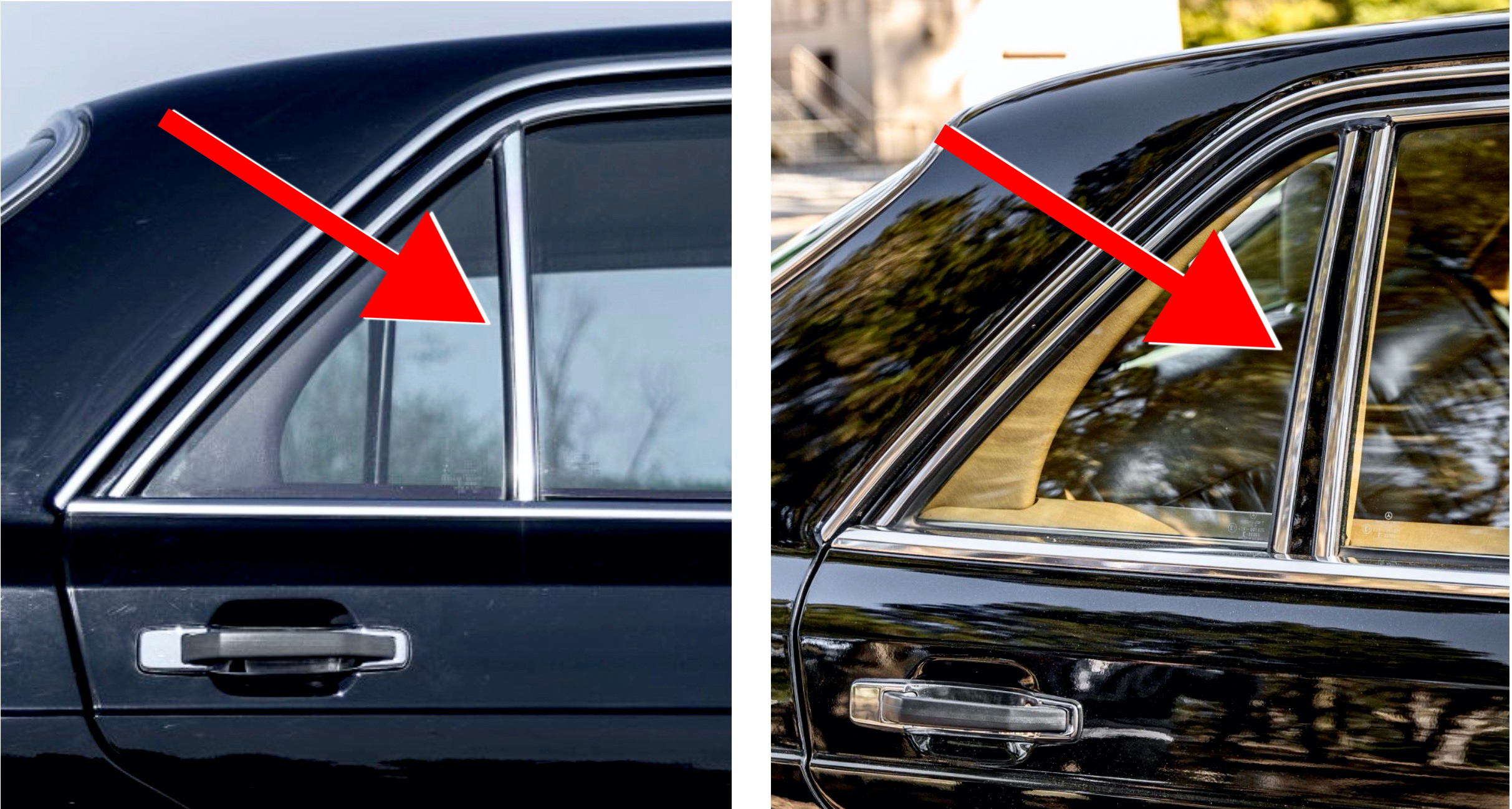
The quickest way to determine if any year of W126 is a short- or long-wheelbase model is to look at the vertical window pillar post on the rear doors. Short-wheelbase models (left) feature a narrow post, while long-wheelbase models (right) have a wide post with a section in the middle that’s painted body color.
And there was a new long-wheelbase king of luxury sedans – the 500SEL. Finally, the U.S. received a version of this top Euro model, powered by the magnificent 5.0-liter V8 introduced years earlier in Europe. The sole SEC coupe offered was upgraded to the larger V8 engine and title of 500SEC.
Note that 1981-83 3.8-liter engines were built with timing chains more prone to stretching, and even breaking. Mercedes corrected this by equipping all 1984-85s with “dual row” timing chains. As pre-’84 models came in for timing chain replacement service, they were fitted with the dual-row ones. If a 380SEL has low mileage it may still have the original one, so ask a seller if they have addressed this issue.

Available in some markets was the digital Trip Computer in the space traditionally occupied by a tachometer. It calculated elapsed time, distance traveled, average speed, fuel consumption, and more. The unit could be programmed to alert drivers if they exceed a pre-set speed. On the right are the console-mounted trip computer control buttons.
All across the model line, gasoline-powered Mercedes-Benzes were making a comeback. Prior ads for the previous five years had featured diesels; and by 1984 the company was beginning to be perceived as all-diesel. Power began to be emphasized over fuel economy once again by the majority of automakers. Looking back, this marketing change was right for the times, and likely kept many M-B buyers from defecting to BMWs.
1984 – SUPPLEMENTAL RESTRAINT SYSTEMS (AIRBAGS)

From L to R: 1980-on non-airbag steering wheel, 1980-85 airbag-equipped wheel, 1986-88 wheel where the center airbag section was reshaped to integrate with the steering wheel rim better, and leather-covered reduced-size 1989-91 wheel.
After development and perfection during the 1970s, Mercedes introduced driver-side airbags in European 126s for the 1981 model year, with some early prototypes appearing in 1980 models given to Mercedes executives. In the U.S. 126s, airbags weren’t offered a few months into the 1984 model year. According to an advertisement that ran during the spring of 1984 midway through the model year , driver-side airbags were “now available on select 1984 models”. In other words, optional equipment. They aren’t commonly found on 1984 U.S. models, but I’ve seen one so equipped built as early as February 1984.
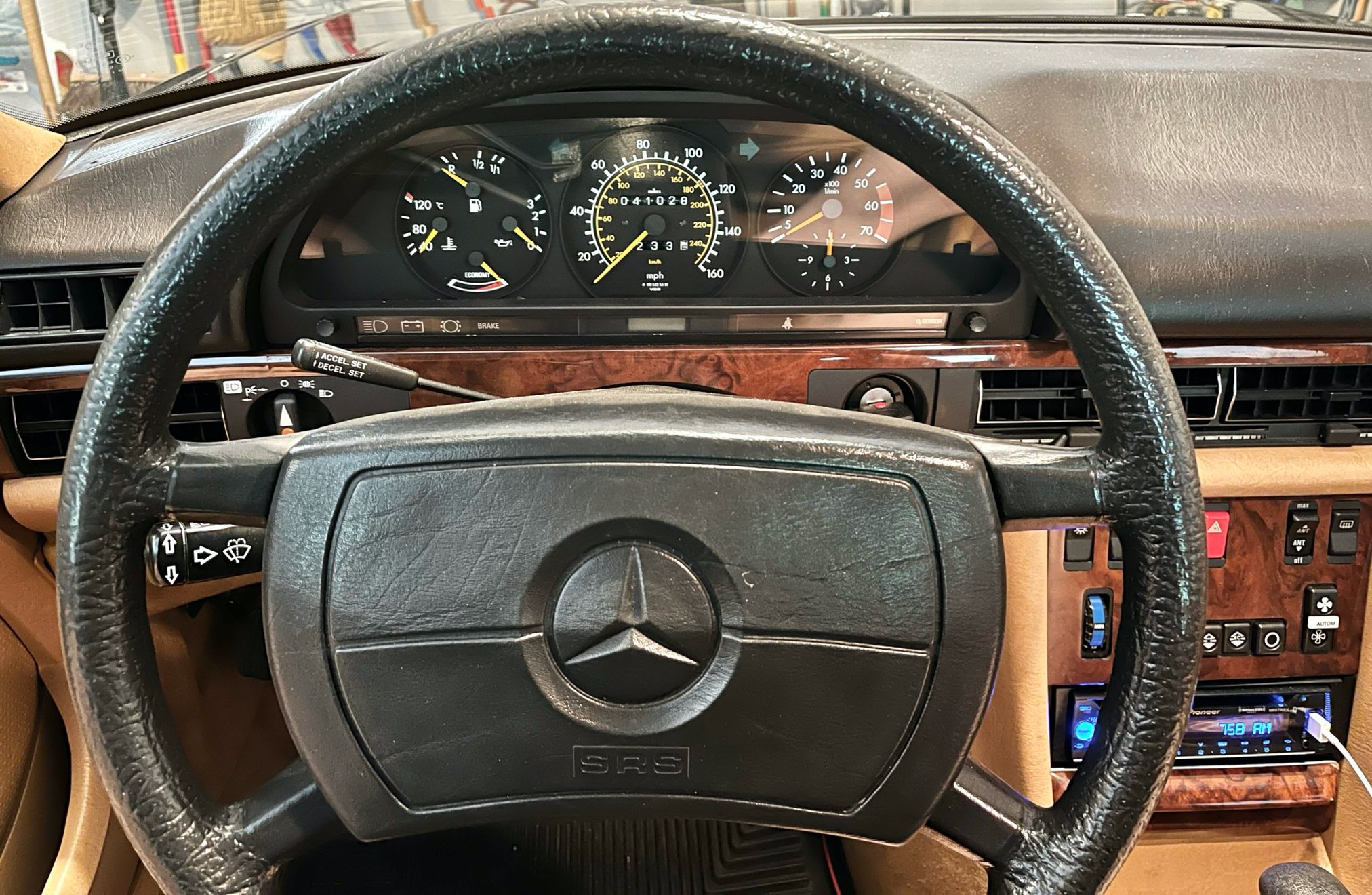
While driver side airbags were first fitted on a trial basis to 1980 model Euro W126s, U.S. market ones did not receive them until early 1984.
For 1985, driver-side airbags were made standard on 500 coupes/sedans and optional on 300SDs and 380SEs before becoming standard across the board for 1986. Astute observers will notice that early 1981-85 airbag units fitted in in the center of the steering wheels were bulkier with squared-off corners. 1986 and later airbags were redesigned to flow with the natural shape of the existing steering wheel rim.
Passenger-side airbags did not come until the middle of the 1989 model year; standard on V8 models, optional on lower ones through 1991.
1985 – ANTI-LOCK BRAKING SYSTEMS (ABS) INTRODUCED TO THE U.S.
Mercedes anti-lock brake systems were first introduced on 1978 European models, but were never available on U.S. models until they were made standard on all 126s for the 1985 model year.
As with Supplemental Restraint Systems, these have posed no safety problems over the years such as activation at the wrong time. A very worthwhile feature to have, it should be noted that weight and complexity are added with these systems.
Brake components do require more frequent brake fluid changes, and replacement parts tend to be costly. For those who seek the safest models, 1985-91s are the best bet. For those preferring low complexity, 1981-84 126s may be the best choice. Retrofitting ABS on a w126 is not practical because doing so requires paying for a myriad of new parts and computer controls, plus a good deal of labor to replace the old ones.
1986 – A MAJOR YEAR OF REVISIONS FOR 126-BODIES
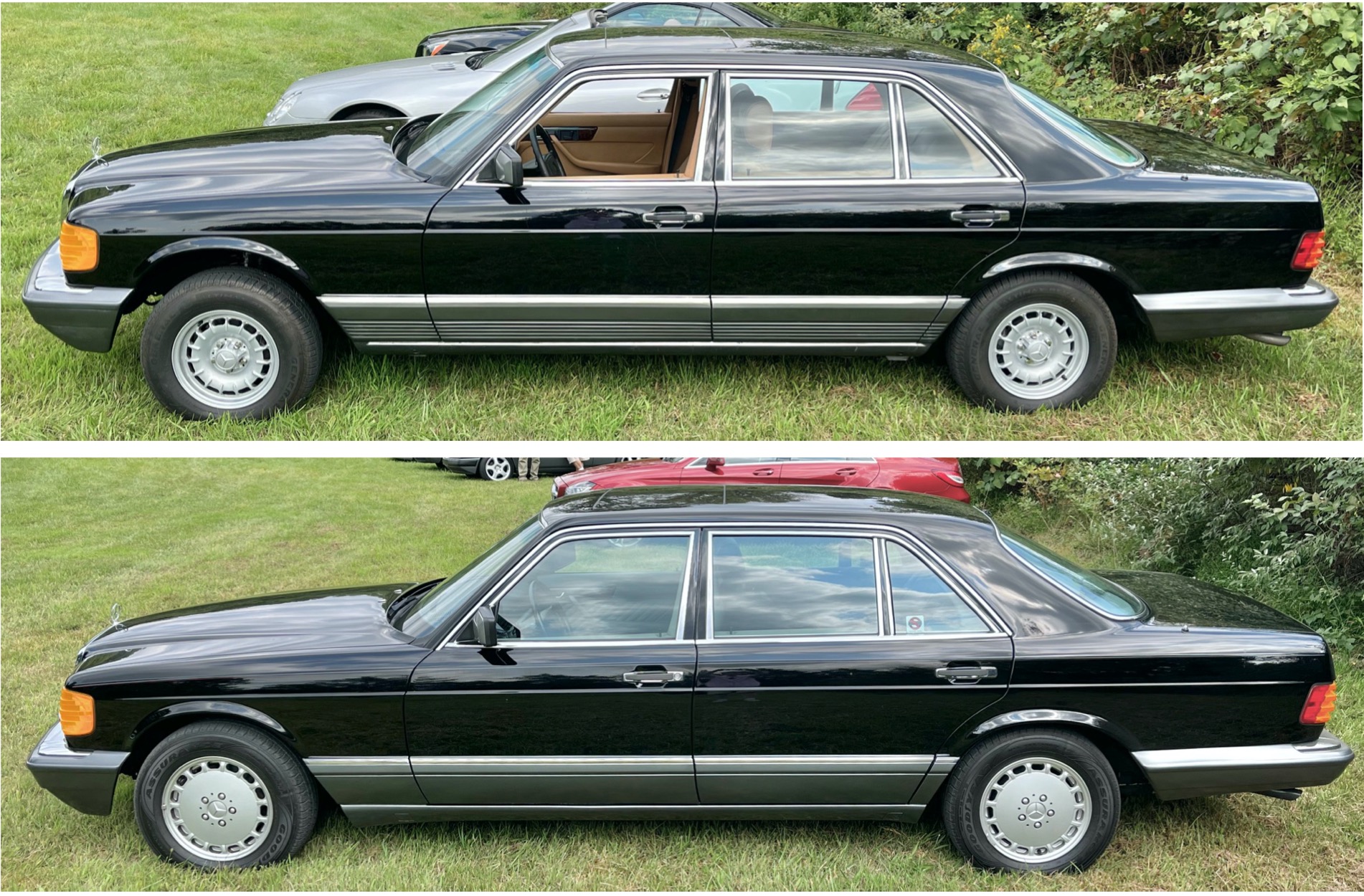
Above: At the top, a “generation 1” W126 as produced for 1980-85 model years. Below it, a “generation 2” W126 produced for 1986-on.
The 1986 model year is the point which many Mercedes-Benz fans use to distinguish early “Generation 1” years of the 126 from later “Generation 2” years. Why? Because it was the only year that outwardly visible styling changes were made. And because virtually all of the model names (and engines) had now also changed.
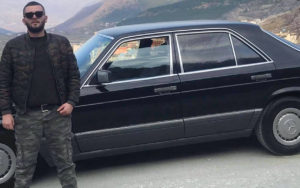
1985 models produced late in the model year in some markets featured 1986-style side cladding early, perhaps due to shortages of the old style. This 1985 SE shown here was not modified, and features the original 14-inch wheels and 1981-85 style airbag.
Aerodynamic styling was catching on in automotive design during the mid-1980s. All manufacturers redesigned exterior parts to create less wind resistance, resulting in flush surfaces with smoother, creamier overall shapes. Even Mercedes-Benz, the company that abhorred change for change’s sake, finally decided a little freshening was worthwhile. While the only real changes were to wheels, headlights, bumpers, and plastic side cladding, the cars seemed visually transformed and modernized by the changes. All other body panels remained identical, so fenders and grilles from an 1980 model are interchangeable with a ’91.

According to the owner of this late 1985 model 280SEL, it was built with generation 2 side cladding pieces and Euro bumpers and delivered new to his uncle as seen here. He is unsure if the generation 2 wheels are original or were added later.
Perhaps the most noticeable to the eye are the alloy wheel upgrades. The 14-inch wheel design (unchanged since 1969) was replaced by 15-inch flat wheels known as the “Gullideckel” style. Many prefer the look they give the car. However, one should not rule out 1981-85s for this reason – all that’s needed to fit an older 126 with newer style rims is a longer set of lug bolts, available from dealers. Sets of the 15-inch wheels are often seen for sale on ebay and other sources for $100-$300 depending on the level of refinishing needed.
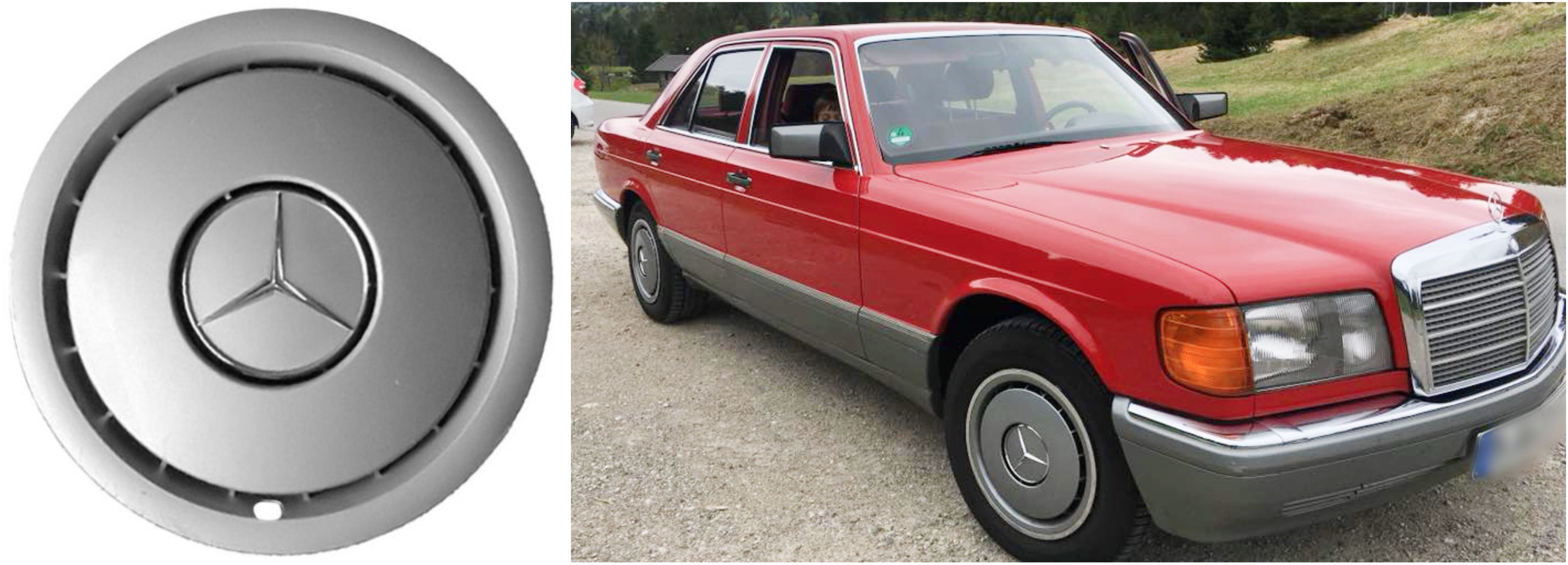
For 1986, base model steel wheels were also upgraded from 14 to 15 inches and given these larger plastic wheel covers. Buyers could opt for the wheel covers in a darker shade of gray that matched the lower body cladding.
NEW HEADLAMP STYLING FOR 1986
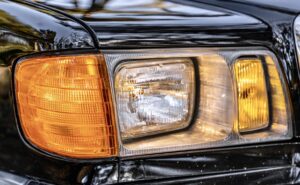
U.S. market 126s from 1981-85 featured recessed headlights and foglights to comply with government headlight regulations.
The second most visible change for ’86 was headlamps. US 126s from 1981-85 featured recessed headlights and foglights to comply with government headlight regulations. When these laws were amended in the early 1980s, carmakers were free to use flush-style composite headlights already used in Europe for decades.
Mercedes felt a semi-flush design maintained a look more continuity with earlier U.S. 126s, so square headlights actually remained a separate glass piece.
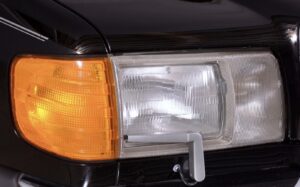
U.S. market Mercedes-Benz S-class headlight assemblies looked like this for the 1986-91 model years.
Because they now had a larger surface area and were almost completely flush with the surrounding assembly, headlight wipers were fitted to all 1986-91s. Newer style headlight assemblies can be perfectly retrofitted to early 126s easily, so don’t rule out a good ’81 model just because of this.

Above: A close-up look at the European w126 headlight assembly, with small dedicated wiper arms that face a different direction that U.S. models.
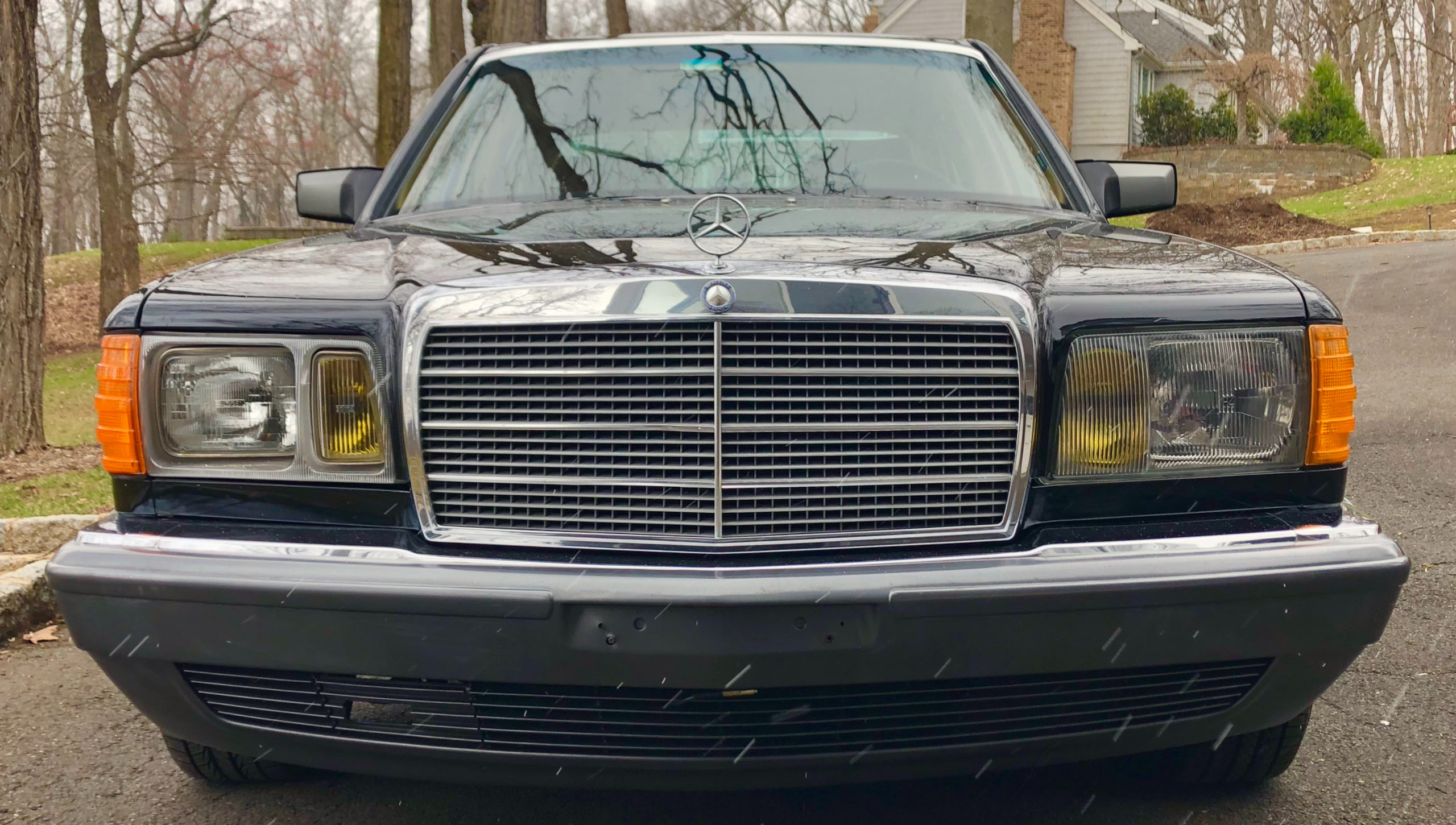
Shown here, a close-up comparison between (early) U.S.- and 1980-91 European-market headlights on my 1984 500SEL.
NEW LOWER SIDE PLASTIC BODY CLADDING FOR 1986
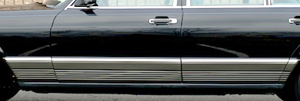
Lower plastic body side cladding on all 1980-85 126 body S-class models was ribbed and looked like this.
Another styling revision was the redesign of lower side plastic body cladding. Pre-1986 models have ribbed plastic side trim that runs along the bottom of side doors and sides only, most often painted gray. For 1986 stylists added a thicker plastic strip beneath the door openings, and flattened out the ribbing on the door pieces. Bumpers were revised almost unnoticeably.
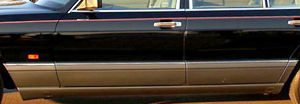
For 1986 stylists added a thicker plastic strip beneath the door openings, and flattened out the ribbing on the door pieces.
A matter of personal preference, many 126 fans are divided into two camps on bodyside cladding. Those who prefer pre-’86 styling say the smaller, ribbed panels were the cleaner design. And that if a 1981 380SEL is parked next to a 1986 SEL, the ’81 will appear longer and sleeker because the body does not appear as massive and tall. Fans of later 126s prefer the more aerodynamically smooth plastic panels.
SHORT-WHEELBASE SEDANS ARE DROPPED IN THE U.S. FOR 1986. ENGINE DISPLACEMENT INCREASES ON ALL THREE ENGINES OFFERED
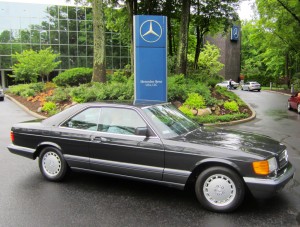
For 1986, SEC coupes were upgraded with improvements similar to sedans. Sole engine choice for 1986-91 was the 5.6-liter V8. (1991 560SEC shown)
With the introduction of Benz’s more modern-looking 1986 E-class (initially sold as the 300E in the U.S.), the S-class was pushed further upmarket. Only long-wheelbase models were available in the states, and engine displacement grew larger and more powerful across the board. For example, the 3.8-liter V8 (380SE) was enlarged to 4.2 liters and now powered the 420SEL while the 5.0-liter V8 was bumped up to 5.6 liters to power the 560SEL and 560SEC coupe. Both of these V8s produced were noticeably more muscular than ones they replaced, making “later” 126s the most desired models today. In European markets where catalytic converters were not required on exhaust systems, the 5.6-liter V8 was rated for 300 horsepower.
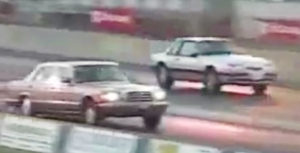
Click on this picture to see our Youtube video of a 1986-91 Mercedes 560SEL taking on a Mustang 5.0 at a drag strip. Without catalytic converters, the Mercedes 5.6-liter V8 was factory rated for 300 horsepower – so this result really comes as no surprise.
The tried-and-true 3.0-liter, 5-cylinder turbodiesel was discontinued in favor of a new 3.0-liter, 6-cylinder turbodiesel of a quieter running design. The short wheelbase chassis used in earlier 300SDs was dropped, and the ’86 diesel offering became the 300SDL.
Widespread problems with this engine arose from trap oxidizers built into exhaust systems which were designed to catch and hold soot until it heated up enough to burn away. Parts of these ceramic devices tend to break off and fly into the turbocharger itself, causing early demise of the whole unit. These engine have good durability records otherwise, so if you’re considering a 300SDL, make sure you ask the seller about this issue because replacement exhaust components are available without trap oxidizers. Because these problems showed up early, the 300SDL was dropped after the ’87 model year – and diesel 126s took a hiatus until 1990-91.
A SHIFT IN ADVERTISING THEME
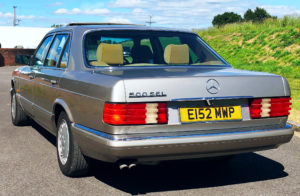
DID YOU KNOW? The 500SE and 500SEL, powered by a 5.0-liter V8, are the only W126 models produced continuously for different markets from 1980 through 1991. Here, a 1988 500SEL is shown.
By 1986, the United States economy was doing well, and consumers were spending money freely on big-ticket items, resulting in a record sales year for luxury carmakers of all nationalities – especially Mercedes. Honda’s Acura division was started up with great success, and Lincoln and Cadillac found more new buyers than ever. With competitors embracing the new trend of power and modern styling, economical themes became passé. 1986 S-class advertising took aim at competitors, albeit very discreetly. It’s interesting to note how advertisements in the late 1980s took on a more genteel upscale feel to match the good times. Luxury cars were a much easier sell now, so far less data and text was deemed necessary in print ads.
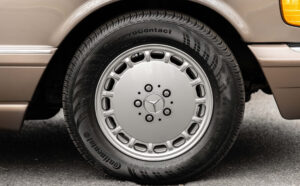
A close look at the 15-inch aluminum wheels equipped on all U.S. model S-classes from 1986-1991. These replaced the 14-inch wheel design that ran from 1969-85.
Traditional large American luxury cars were targeted to start with. The subtle advertising theme was to establish an S-class as a better choice than “overbearing” luxury cars saddled with “bulk and ostentation”. Copywriters may have had Honda’s upstart Acura luxury division in mind when creating advertising text for 1987. Although Acuras had only been on the market for one year, their success could not be ignored. Readers were reminded of Mercedes-Benz’s 100-year heritage, tradition and pedigree which Acura (or any other Japanese manufacturer) could not possibly match. Tiny 1-liter-engine cars and motorcycles were Honda’s heritage – not very fitting for a luxury brand to trumpet. Mercedes ads began to feature more close-up pictures of their classic hood ornaments and grilles than ever.
“You drive the automobile that pioneered ABS and SRS, but has never pioneered an onboard electronic gizmo”, proclaims a 1988 advertisement. Buyers were still reassured, in classic tradition, that they were buying a car of the highest engineering values.
History was also touched on by, “S-class. For people who have learned from experience to buy all the integrity they can get.” And, “…but the greatest comfort of the S-class may ultimately be a purely emotional one; the absolute reassurance of absolute integrity.” Cleverly written, these may have been effective in swaying buyers away from Japanese and other luxury brands. Because when push comes to shove in making a large purchase such as a luxury car, the desire to follow the path of lesser doubt can be a strong one.
1988: SHORT WHEELBASE MODELS RETURN, NEW 6-CYLINDER GAS ENGINE REPLACES DIESEL IN BASE MODEL.
After the demise of the 1986-87 300SDL, there was a gap at the bottom of the U.S. 126 lineup that needed to be filled. Since diesel sales had slowed, the refined 3.0-liter 6-cylinder gasoline engine from the 300E midsize line was used, and the 300SE and 300SEL were introduced for 1988. With 177 horsepower, this engine managed to hold its own in the S-class. Economy was slightly better, but the lower horsepower and torque of the 6-cylinder necessitated gearing which forced the engine to rev much higher at speed. 300SE/SEL models continued unchanged through 1991.
1989: PASSENGER-SIDE AIRBAGS ARE INTRODUCED, LOWER PLASTIC BODYCLADDING COLOR NOW MATCHED TO BODY, SEATS & DOOR PANELS HAVE NEW LOOK.
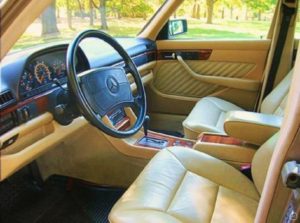
For 1989, seat covers were revised as shown here and no longer had small ribbings running front to back. Door panels went from flat to ribbed as well. (1991 420SEL shown)
As mentioned earlier, late-1989 production models saw the introduction of passenger-side airbags, a feature well worth having in a car seeing use as a daily driver. These were standard on 420 and 560 models, optional on lower ones. Because the passenger side dash-mounted airbag unit took up space where glove boxes were normally located, 126s so equipped feature a locking storage console between the front seats.
From 1980 through 1988, virtually all colors of 126 models (except beige, brown, and gold) featured gray lower plastic side cladding. For 1989-1991, plastic cladding was more closely matched to the car’s body color, except white, black, and smoke silver colors which kept the same gray as before).
All 1989 w126-body sedans adopted the seat cover look present on SEC coupes since 1982. While front and rear seatbacks and seat cushions no longer had a ribbed pattern, door panel interiors now did.
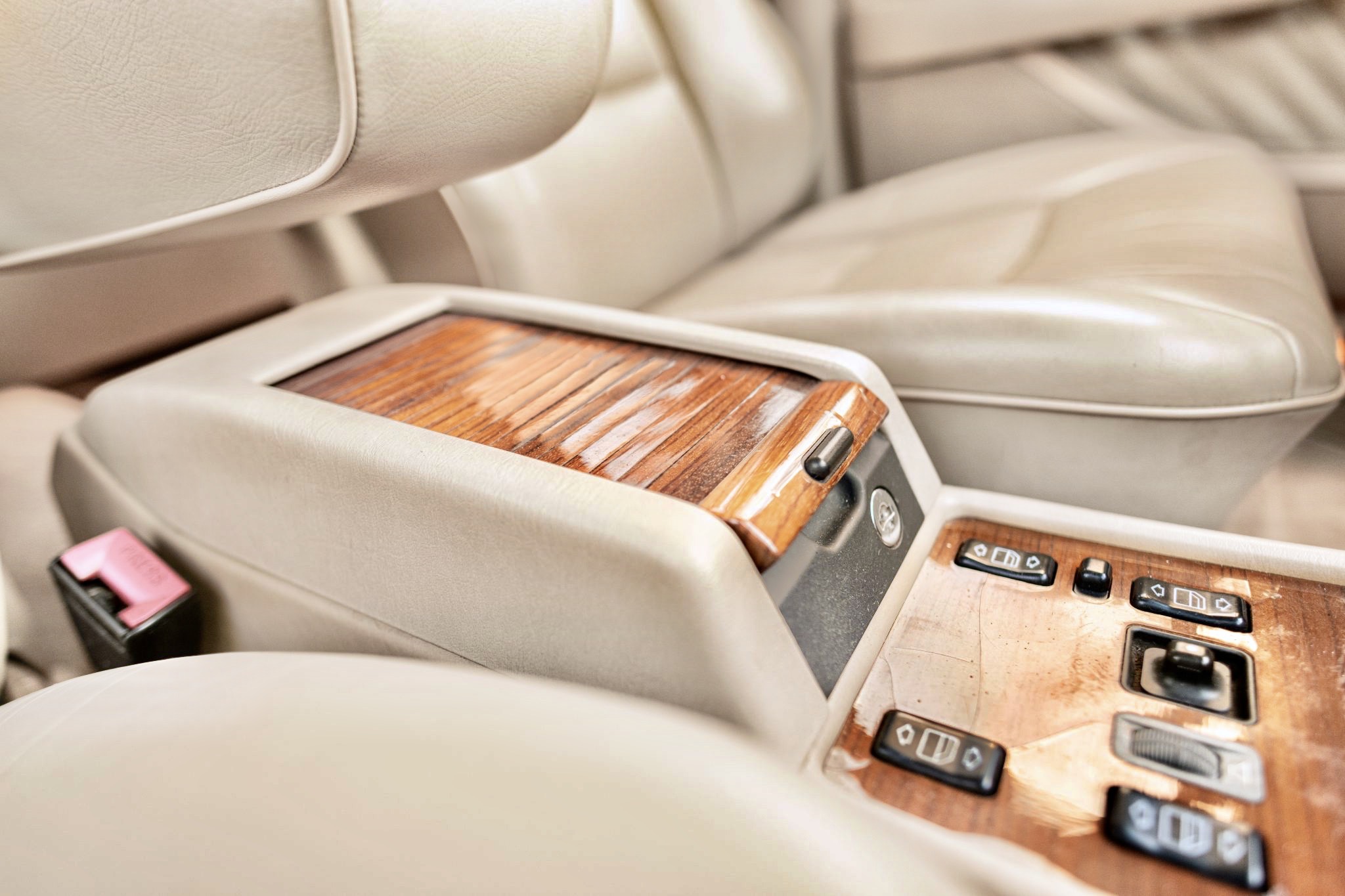
Because passenger-side airbags used the space in the dash where gloveboxes normally went, these locking “rollaway” storage compartments were fitted between the front seats.
1990: DIESEL MODELS RISE AGAIN
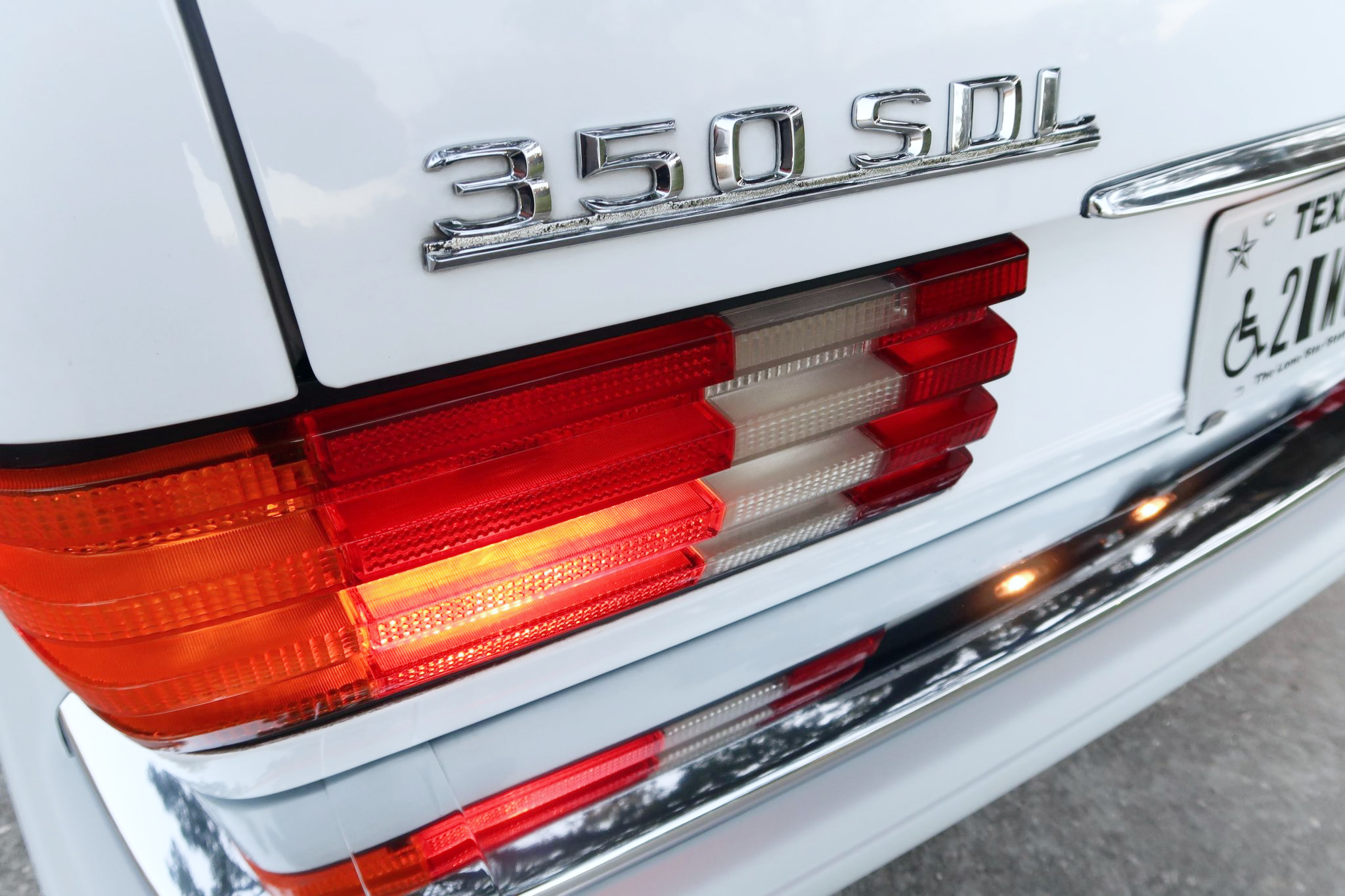 With a recession taking hold in early calendar year 1990, the time was right to re-introduce a diesel model in the 126 lineup. The 3.0-liter 6-cylinder turbodiesel of 1986-87 was redesigned and enlarged to 3.5 liters, creating 1990 350SD and long-wheelbase 350SDL models which were the most powerful and refined diesel 126s in existence. However their sales did not approach the 300SD’s glory of ten years earlier, making them scarcer and harder to find today as a result.
With a recession taking hold in early calendar year 1990, the time was right to re-introduce a diesel model in the 126 lineup. The 3.0-liter 6-cylinder turbodiesel of 1986-87 was redesigned and enlarged to 3.5 liters, creating 1990 350SD and long-wheelbase 350SDL models which were the most powerful and refined diesel 126s in existence. However their sales did not approach the 300SD’s glory of ten years earlier, making them scarcer and harder to find today as a result.
One can tell, looking closely at period advertisements from 1990 and 1991, that luxury cars were suddenly a harder sell than they had been in the latter half of the 1980s. Selling points of a sober nature were again stressed over images of heritage – selling points such as durability, dependability, crashworthiness, and resale value. Engineers also noticed the shift in buying values and acted.
Although troublesome trap oxidizers were not installed on this engine, the new 3.5 turbodiesel had its share of widespread maladies. Weak connecting rods (they connect pistons to the engine’s crankshaft) tended to start bending at about 75k miles and up, causing eventual engine failure. Many owners experienced this problem, and Mercedes-Benz replaced a good number of 3.5 engines under warranty. In short, 350s are well worth having for the diesel fan, but proceed with caution.
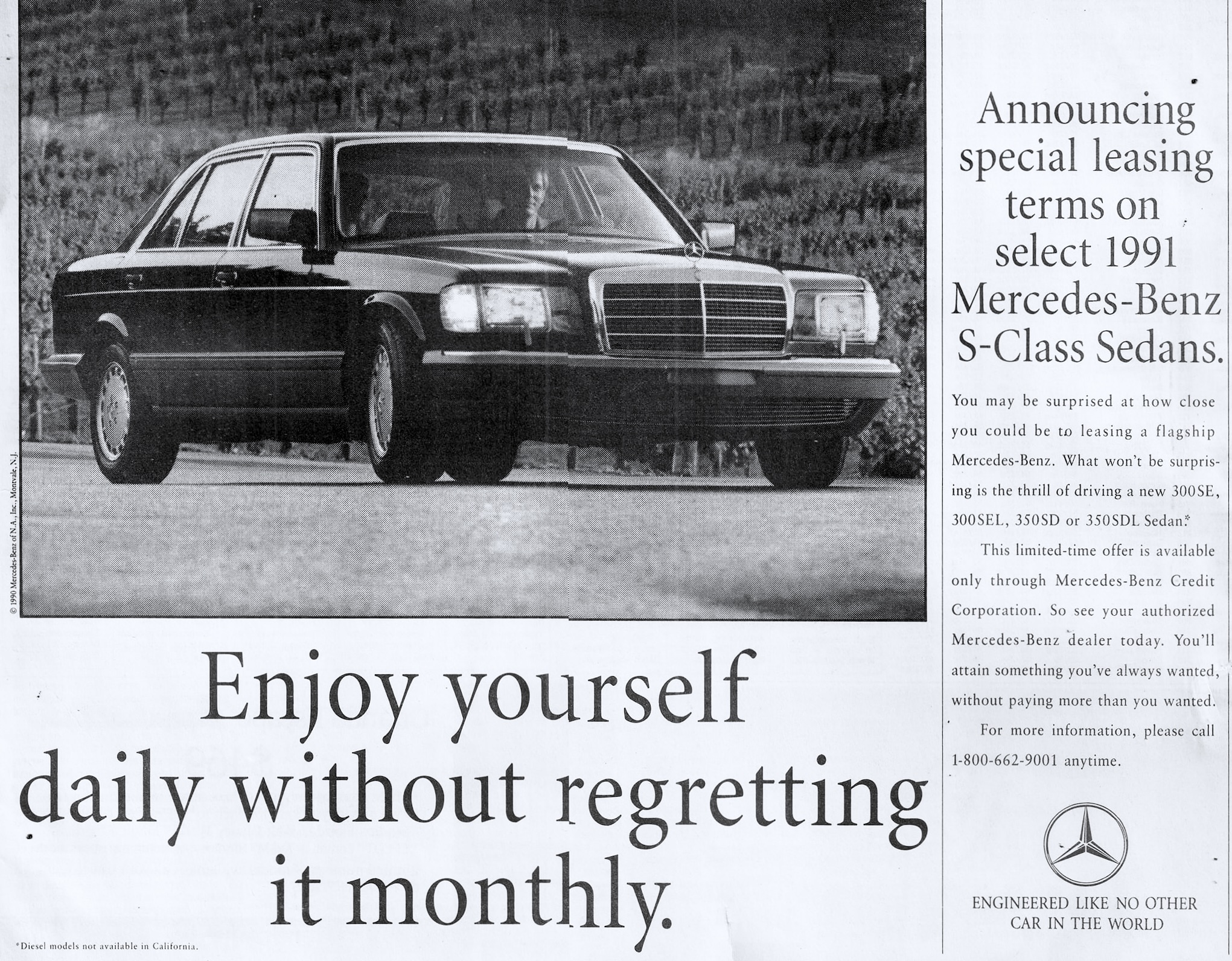
This 1991 ad plays with the notion that Mercedes is offering great lease deals on base six-cylinder gas and diesel models.
You’ll often see “new engine” or “rebuilt engine” on a seller’s list of strong points. Look for this, as replacement parts cured the problem. Again, few 350 diesels were sold to begin with, so be prepared to pay for a decent, corrected one. This engine was used through 1995 on the next generation of S-class and was discontinued when these problems became widespread.
Those seeking to avoid mechanically complexity suspension systems may wish to avoid 1986-91 560SELs. These top line models were all equipped with complex, expensive-to-fix self-leveling rear hydraulic suspension systems in place of standard coil springs. This system was also optional on 1984-85 500SELs.
1991: “ASR” TRACTION CONTROL IS INTRODUCED AS AN OPTION ON ALL 126 MODELS.
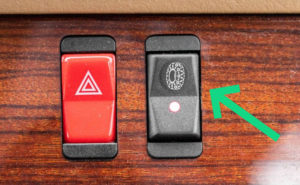
Models with ASR all feature this black button on the center console with a snow tire design on it. This button serves not to turn ASR off completely, but to allow for extra wheel slippage if tire chains are equipped in severe climate areas.
Newly optional on all 126s for 1991 was “ASR” Automatic Slip Control. ASR measures variations in rotational speed between rear drive wheels and front wheels. When one or both rear drive wheels start slipping and spinning faster, the ASR system applies braking power to the specific wheel or wheels to reduce spin. If brake application doesn’t restore traction, a computer automatically reduces engine power by means of electronic throttle control.
Models with ASR all feature a button on the center console with a snow tire design on it. This button serves not to turn ASR off completely, but to allow for extra wheel slippage if tire chains are equipped in severe climate areas.
1992 W126 MODELS MADE IN THE SOUTH AFRICAN MARKET

The W126-body S-class saw continued production for the South African market for the 1992 model year. The last 100 of these made were badged commemoratively as Limited Edition models.
It’s a true, but little-known, fact that Mercedes-Benz kept their 126 plant in East London, South Africa running well into the 1992 model year in order to use up an abundance of extra parts on hand. It’s estimated 30,000 to 40,000 sedans were produced with popular 6- and 8-cylinder gasoline engines. As production was nearing completion, 100 “Limited Edition” models were built – each one with numbered commemorative plaques mounted on the center console and underneath trunk model badging, which adopted the individual trunk badge lettering of the following 1992 W140 body S-class.
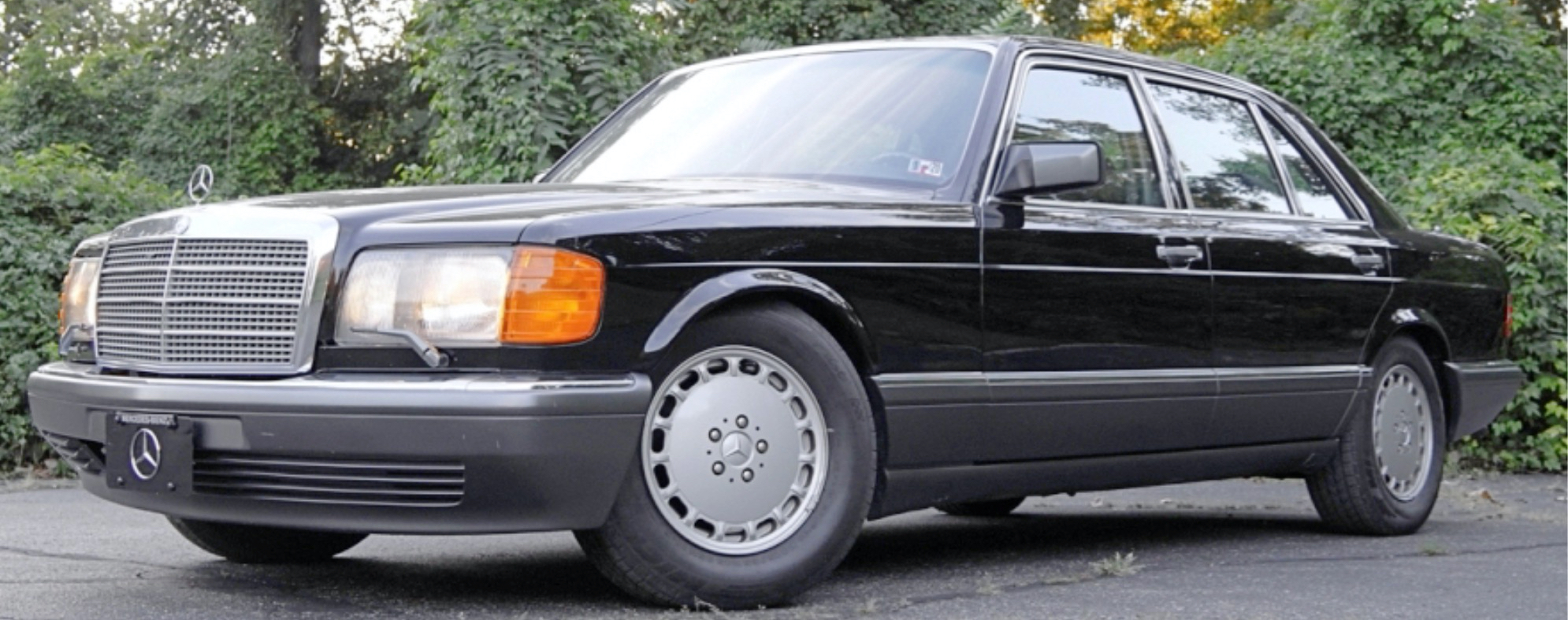
Regardless of miles traveled, coil springs on 126s tend to lose their resiliency and sag over the years. Replacement coil springs will restore proper ride height.
Million-mile longevity
In the late ‘80s, Mercedes-Benz became aware that several of their cars had attained over 1 million miles each in private hands. This was a truly impressive feat for any vehicle, even more so considering the vintage of these two diesels (both are shown in the 1991 model advertisement at the beginning of this article). During 1990, the company decided to make this an advertising and public relations campaign. Automotive magazines were encouraged to test drive the two vintage cars and give Mercedes-Benz any coverage they chose.
It was perhaps one of their most effective campaigns. Many fans remember it and say it made believers out of them. After all, how can one not like a car possessing “stubborn determination to repay its owner with many miles and many years of driving satisfaction”?
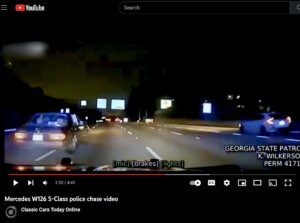
Click here to see a video on our Youtube page of a police chase involving a generation 2 W126. The fact that the driver could recover after several spins and keep flying is testament to the quality of these.
The longevity of the 126 design is really quite remarkable, spanning 11 to 13 model years depending on where you count. This is a record besting all other S-class designs before or since, and one that won’t be toppled soon. The 126 saw global economic conditions change from poor to boom times, then back to poor for the last several years of its life.
The advertisements included in the picture below sum up the 126 well. Virtues that Stuttgart engineers held dear were certainly borrowed and touted by other carmakers also. But when all was said and done no one else had the well-rounded, scholar-athelete type of record that Mercedes-Benz did. Deeds, indeed.
-CLICK ON ANY OF THE PHOTOS BELOW TO ENTER SLIDESHOW. HIT ARROW BUTTONS UNDER EACH PICTURE TO SCROLL TO BACKWARDS OR FORWARDS
- The 126-body Mercedes S-class is becoming an excellent classic car investment. This final-year ’91 advertisement focuses on traditional M-B brand attributes.
- Here, a Mercedes w126 prototype is fitted for wind tunnel testing.
- A prototype Mercedes 126-body S-Class undergoing wind tunnel testing during 1979.
- A prototype Mercedes 126-body S-class undergoes durability testing during 1979.
- Here, a 1979 380SE pre-production prototype model is photographed at Mercedes headquarters in Germany.
- Here, a 1979 pre-production SE prototype model is photographed on the Mercedes proving track in Germany.
- From L to R: pre-production 14″ wheel covers which were quickly discontinued, production 1980-85 14″ wheel covers, and 15″ wheel covers used on later 126s. These 15-inchers were also used on W201 190Es starting in 1982, and and W124s introduced in 1985.
- The prototype 14-inch wheel covers, as seen in this typical pre-production promotional shot.
- Shown here are the actual production 14-inch plastic wheel covers that were fitted to 1980-85 models.
- 1980 Mercedes 380SEL (Euro market) fitted with 14-inch production plastic wheel covers.
- The “126 body” S-class debuted in Europe as 1980 models, one year ahead of its introduction in the United States. Mostly short wheelbase models were built the first year such as the 280S, 280SE, 380SE, and 500SE discussed in this U.K. market ad. Note the completely flush headlights and plastic wheelcovers that only Euro models were equipped with.
- Long-wheelbase 126 models were introduced later in 1980 as ’80 models in Europe, and as ’81s in the U.S. While body panels were the same, overall length was stretched 4 inches at the rear doors.
- Since W126 long wheelbase sedans were introduced late in the 1980 model year, there are some out there – but not as many as other years. Shown here: a 1980 500SEL.
- Since W126 long wheelbase sedans were introduced late in the 1980 model year, there are some out there – but not as many as other years. Shown here: a 1980 500SEL.
- During the course of the entire 1980-91 run for the w126, the 500SE and 500SEL ( powered by a version of the company’s 5.0-liter V8 racing engine) are the only models produced continuously for different markets from 1980 through 1991. Here, a 1991 500SEL is shown.
- A 1981 Mercedes 500SEL, Galaendewagen, and 123-body sedan are visible in this picture taken in a Paris Mercedes showroom.
- 3-time Formula 1 world champion Nelson Piquet picking up his new 500SEL at the factory.
- (1981 MERCEDES 500SEL) Formula 1 World Champion Emerson Fittipaldi picking up his ’81 500SEL from the factory in late 1980.
- This 1981 Mercedes ad introduces the sole U.S. models – the 300SD / 380SEL. Lighter and more aerodynamic than the previous S-class, this two-model lineup ran through 1983 in the United States.
- Short-wheelbase 126 bodies came first to the U.S. in the form of 1981-85 300SD models (shown), and 1984-85 380SE models.
- Long-wheelbase 126 bodies came first to the United States as 1981-83 380SELs
- 300SD advertisements like this 1982 two-pager personify cars with traits of a desirable executive to appeal to financial decision-makers.
- The SEC coupe was introduced for the 1982 model year. U.S. SECs only came equipped with the largest V8 the company offered – each year through 1991.
- 1982 Mercedes 380SEC coupe introduction advertisement.
- A typical SEC interior from 1982-91. All four windows rolled down and motorized seatbelt “presenters” extended frontwards for the front occupants’ convenience. Sedans adopted the seat patterns shown in this 1982 380SEC for the ’89 model year.
- A 126 SEC coupe at dusk, at “full coupeness”.
- 1984 MERCEDES 500SEC (Euro market)
- Kareem Abdul Jabar’s 1985 Mercedes 500SEC recently went to auction.
- In keeping with tradition, S-class sedan and coupe advertising was geared towards upscale professionals who most often purchased them. Presuming the potential buyers were financial decision-makers, this 1982 300SD ad made a pure, no-nonsense appeal to those who prize substance and efficiency. A car that did the same would be valued highly.
- Here, Mercedes 126s roll off an assembly line in Germany during the early 1980s.
- Beginning with 1980 models, Mercedes offered a 4-wheel version of their hydropneumatic suspension on long-wheelbase V8-powered W126s sold in the European market. With U.S. models, the hydraulic suspension was only fitted to the rear wheels – optional on top 380SEL and 500SEL models through 1985, and standard on all 560SELs. When system components fail, ride height drops to the ground.
- This fluid reservoir tank is for hydropneumatic suspension-equipped W126s.
- For some Euro markets that required amber fog lights by law, W126 composite headlamp assemblies featured amber reflector plates behind the fog light bulbs as seen on this 1982 380SE.
- 1984 300SD.
- This ad introduces the 1984 380SE model to the U.S. Appearing identical on the outside, the 300SD Turbodiesel and 380SE standard-wheelbase models were engineering masterpieces, each in their own way.
- 1985 Mercedes 380SE advertisement.
- The 1984-85 U.S. market short wheelbase 380SE was outwardly identical to the 300SD and featured a 3.8-liter V8 gasoline engine. (1984 380SE shown).
- The 500SEL was finally brought to the US for 1984-85, and was the sole long-wheelbase model during those years.
- Top-of-the-line 500 and 560 customers could order their sedans with coupe style rear seats if desired.
- This 1984 Mercedes ad details the Supplemental Restraint System, which included driver side airbags. While driver-side airbags were offered since 1981 in Europe, they were brought to the U.S. during mid-1984.
- Early W126 airbag-equipped steering wheels from 1981-85 looked like this. Notice the center airbag was not as well integrated into the design of the steering wheel rim.
- For 1986-88, notice the center airbag was reshaped slightly to blend better with the look of the original W126 steering wheel rim. For 1989-91, the steering wheels were made slightly smaller with smooth, leather-covered surfaces.
- This style of 14-inch aluminum wheel was available on all Mercedes-Benz models through 1985.
- A close look at the 15-inch aluminum wheels equipped on S-Classes from 1986-1992.
- U.S. market 126s from 1981-85 featured recessed headlights and foglights to comply with government headlight regulations.
- After government regulations changed, U.S. market Mercedes-Benz S-class headlight assemblies looked like this for the 1986-91 model years.
- For 1980-85 model years, lower side cladding was ribbed as seen here.
- 1986-1991 S classes featured revised lower side plastic body cladding that looked like this. The previous horizontal slats were now smoothed out.
- An additional look at the revised Generation 2 side cladding.
- Euro bumpers saw a slight but noticeable change for the 1986 model year.
- When it comes to U.S. models, there really isn’t much difference between generation 1 and 2 bumpers.
- Above: At the top, an “early” W126 as produced for 1980-85 model years. Below, a “later” W126 produced for 1986-91 model years.
- As this picture shows, rear bumpers on U.S. models did not change much for the the generation two 1986 model year.
- Shift gate patterns on all 126-bodies through 1982 are marked “D-S-L”. Regardless, all U.S. model 126s came with 4-speed automatic transmissions.
- Some markets received transmission controls that allowed the driver to change the transmission shift points. For example, “Fast” upshifts at higher RPMs to give a sportier feel, while “Econ” upshifts earlier for better fuel economy.
- Shifter gates were updated for 1983 to properly read “D-3-2″ and feature a 1st gear detent marked “B” to the right of 2nd gear position on V8 models. Transmissions normally started in 2nd gear unless first was manually selected this way.
- 1985 Mercedes S-class models saw the widespread introduction of anti-lock braking systems in the United States. The system had been in place years earlier in Europe.
- Above: notice how the envious gentleman resembling George W. Bush going the other way in this 1986 Rolls-Royce advertisement is driving a Mercedes 126 S-class. After all, is there really any “other car” that would have been as effective to use here? Looking closely at the gray plastic panels on the bottom of the doors, the ribbed pattern indicates this is an “early” 1981-85 S-class.
- According to the owner of this late 1985 model 280SEL, it was built with generation 2 side cladding pieces and Euro bumpers – delivered new as seen here to his uncle. He is unsure if the generation 2 wheels are original or were added later.
- 1985 models produced late in the model year in some markets featured 1986-style side cladding early, perhaps due to shortages of the old style. This 1985 SE shown here was not modified, and features the original 14-inch wheels and 1981-85 style airbag.
- 1985 Mercedes 500SEL
- 1986 Mercedes 560SEL factory photo.
- Looking at this U.S. market 1989 420SEL, it’s easy to see how headlamps, wheels, and plastic side body cladding were revised for the 1986 Generation II updates.
- For 1986, base model steel wheels were also upgraded from 14 to 15 inches with these plastic wheel covers. As seen here on this 1990 500SEL, buyers could order the covers in a darker gray shade that matched the lower body cladding.
- The 260SE was a price-leading S-class model sold only in Europe for the 1986-91 model years. Power came from the same 2.6-liter six cylinder found in 190E 2.6 models.
- 260SE’s were typically ordered to a lower price point, with 5-speed manuals, cloth interiors, crank windows, and no airbags.
- An alternate view of a Euro-market 260SE S-class (1988 model shown). Note the absence of headlight washers.
- Base European 126-bodies featured 15-inch steel wheels from 1986-1991 (instead of 14-inch ones). Here, a 1986 300SEL Euro model wears base 15-inch plastic wheel covers.
- A view of Generation II 15-inch steel wheels.
- In 1987, upstart Japanese luxury models were also selling well. This ad, and others to follow, take the approach of pointing out M-B’s rich 100-year history, something other makes could not do.
- 1987 Mercedes 420SEL fitted with newer M-B wheels.
- By the mid-to-late 1980s, good economic times had returned in the U.S. This ad takes a look back at prior generations, while celebrating modern advancements and technology.
- As highlighted in this ad, short-wheelbase models disappeared in the U.S. market for 1986-87. The lineup consisted of the 300SDL diesel, 420SEL, and 560SEL.
- Short-wheelbase 126-bodies made a return in the form of the 1988-1991 300SE and the 1990-91 350SD (1988 300SE shown).
- Mercedes-Benz advertisements from this period tended to focus on showing the star emblem and classic grilles prominently. Buyers were reminded of M-B’s wealth of experience in building superbly well-rounded automobiles, and that buying an S-class was a reassuring choice.
- 1988 MERCEDES 560SEL
- For 1988, the previous “entry-level” 300SDL Turbodiesel was replaced by 300SE and 300SEL six-cylinder gasoline models
- A typical S-class sedan interior through 1988. Notice the difference in seat and door panel patterns to ’89s.
- For 1989, seat covers were revised as shown here and no longer had small ribbings running front to back. Door panels went from flat to ribbed as well. (1991 420SEL shown)
- 1989 560SEC advertisement
- While lower plastic bodycladding had been painted gray on most 126s through 1988, it was closely matched to body colors on 1989-91 models. Black and white cars were the exception. (1991 420SEL shown).
- While lower plastic bodycladding had been painted gray on most 126s through 1988, it was closely matched to body colors on 1989-91 models. Black and white cars were the exception.
- This 1990 Mercedes S-class ad discusses all the safety features of the 126 body.
- With a recession taking hold in early calendar year 1990, the time was right to re-introduce a diesel model in the 126 lineup. The 3.0-liter 6-cylinder turbodiesel of 1986-87 was redesigned and enlarged to 3.5 liters, creating 1990 350SD and long-wheelbase 350SDL models which were the most powerful and refined diesel 126s in existence.
- The 1990 500SE presented to Nelson Mandella after his release.
- This 1991 Mercedes S-class ad highlights a 1957 180D and 1968 220D that have been driven over 1 million miles each.
- A wider view of a typical 1986-91 long-wheelbase S-class sedan. (1991 420SEL shown).
- 1991 Mercedes 420SEL in “desert taupe” metallic paint.
- The snow tire button in the center top of this picture indicates that a 1991 S-class is equipped with optional ASR traction control. (Photo credit: Sean Connor)
- 1991 Mercedes S-Class advertisement. (Photo credit: Mercedes-Benz USA)
- For the W126 owner who wanted the convenience of a built-in refrigerator, Mercedes offered this factory-designed unit for dealer installation.
- 1986-87 Mercedes S-Class Color Chart
- 1988 Mercedes S-Class Color Chart
- 1989 Mercedes S-Class Color Chart
- 1990-91 Mercedes S-Class Color Chart
- 1991 S-Class and SL model color chart. The top color of each box refers to the paint color of the car, the bottom color refers to the color of the lower body side cladding. (Photo credit: Mercedes-Benz USA)
- 1981 Mercedes 500SEL
- Here, a short-wheelbase Mercedes S-class of 1986-88 vintage is mounted on the side of a building known as Auto Geissel in FurtherTOP Officecenter, Westfalen, Germany
- A Euro-market only 560SE short-wheelbase model.
- Often, buyers outside the United States prefer to create a unique look by equipping their W126s with U.S. market headlight assemblies. Here, we see a couple painted body colors.
- A Euro-market 1984 Mercedes 280SE (126 body S-class) with painted wheel covers from previous-generation models.
- This owner has fitted his 1984 Mercedes 280SE with color-matched 14-inch wheel covers from earlier models.
- This owner has fitted his 1983 Mercedes 380SEL with color-matched 14-inch wheel covers from the previous generation.
- This owner has fitted his 1983 Mercedes 380SEL with color-matched 14-inch wheel covers from the previous generation.
- Side view of a 1986-1991 long-wheelbase Mercedes S-class (1990 560SEL shown).
- A 1986 MERCEDES 560SE Euro-only model front view.
- A 1980 MERCEDES 380SE euro market model. Note the absence of optional headlamp washers usually fitted to these vehicles.
- 1980 MERCEDES 126-BODY S-CLASS short wheelbase.
- 1986 MERCEDES S-CLASS
- Who knew Homer Simpson had a 1982-85 SEC hidden in his garage!
- Here, a 1986-91 SEC owner has replaced the standard coupe sedan hood, grille, and headlights with ones from a sedan.
- A customized Mercedes 126 convertible, fitted with a sedan front clip.
- This W126 sedan owner swapped the hood, lights, and front clip from a coupe.
- This W126 sedan owner swapped the hood, lights, and front clip from a coupe.
- This Euro model 1985 280SE is fitted with 15-inch base wheels and Generation 2 plastic wheel covers.
- Another “gen 1” Euro model SE is fitted with “gen 2” 15-inch base wheels and plastic wheel covers.
- Rendering of what a w126 pillarless sedan might look like. Quite striking.
- In case you were wondering what a 126 looks like with the lower body cladding removed, here’s a picture.
- A close-up view of a 126 sedan with the rear bumper cover removed.
- A close-up view of what 126-body rocker panels look like with body cladding removed.
- 1986-91 MERCEDES W126 STRETCH LIMO
- 1986-91 MERCEDES W126 STRETCH LIMO
- Odds are you haven’t seen a 6-door W126 limo conversion before now.
- Somebody’s rendition of a Mercedes pickup.
- Mercedes W126 sedan as police car (Italy)
- Mercedes W126 sedan as police car (Italy)
- At some point, the w126 made it into the cartoon world.
- Got stance?
- Located in Medellin Columbia, the Pabl Escobar Museum has the former drug king pin’s Mercedes early w126 on display.
- Located in Medellin Columbia, the Pabl Escobar Museum has the former drug king pin’s Mercedes early w126 on display.
- Here, this Generation 1 300SD turbodiesel is being used to power an irrigation pump.
- 1990 Mercedes 560SEL equipped with 215/65-15 tires.
- 1985 Mercedes 500SEL with BBS basketweave wheels.
- 1985 Mercedes 500SEL with BBS basketweave wheels.
- 1985 MERCEDES 380SE
- 1984 Mercedes 500SEL
- 1986-91 Mercedes S-class with AMG package
- 1989 Mercedes 560SEL
- 1988 Mercedes 420SEL
- 1986 Mercedes 560SEL
- 1985 Mercedes 280SE
- 1990 Mercedes 260SE
- 1990 Mercedes 260SE
- 1990 Mercedes 260SE
- 1991 Mercedes 560SEL
- The 560SEL was the most powerful version of the 1980-1991 “126 body” S Class.
- 1990 MERCEDES 560SEC (126-body style, 1980-91)
- 1990 MERCEDES 560SEC (126-body style, 1980-91)
- 1990 Mercedes 300SE
- Here, a Euro-spec Gen II SEC is seen with factory 15-inch plastic wheel covers.
- The 560SEL formerly used as Gorbachev’s personal car.
- 1990 Mercedes 300SEL
- 1983 300SD. The longer you look, the worse it gets.
- W126s in some markets were available with lumbar support adjustment switches, as seen here.
- 1991 Mercedes 560SEL
- 1988 Mercedes 300SE
- 1987 Mercedes 560SEL fitted with later AMG monoblock wheels.
- 1986 Mercedes-Benz 560SEL – U.K. model
- In the U.K., as in most European markets, the 500SE and 500SEL models continued through 1991.
- This generation 2 W126 has been fitted with 1988-later Corvette wheels. Looks good!
- New York City crime boss John Gotti with his 1986 Mercedes 560SEL, a car he bought immediately after elevating himself to the head of the family.

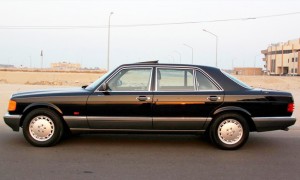
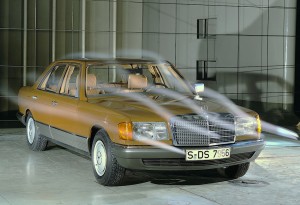
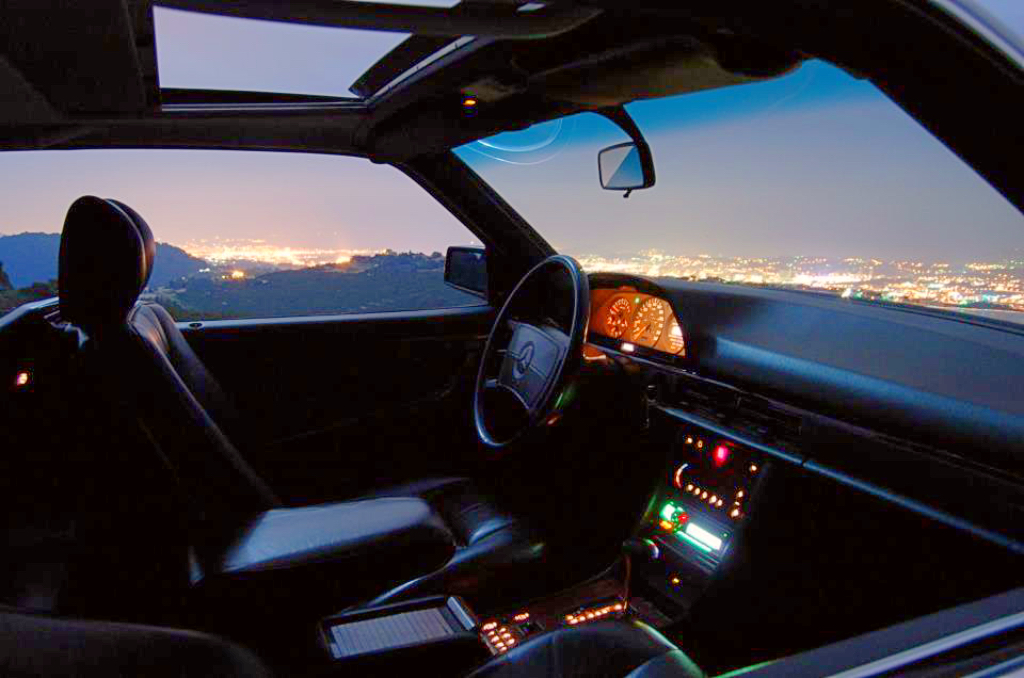
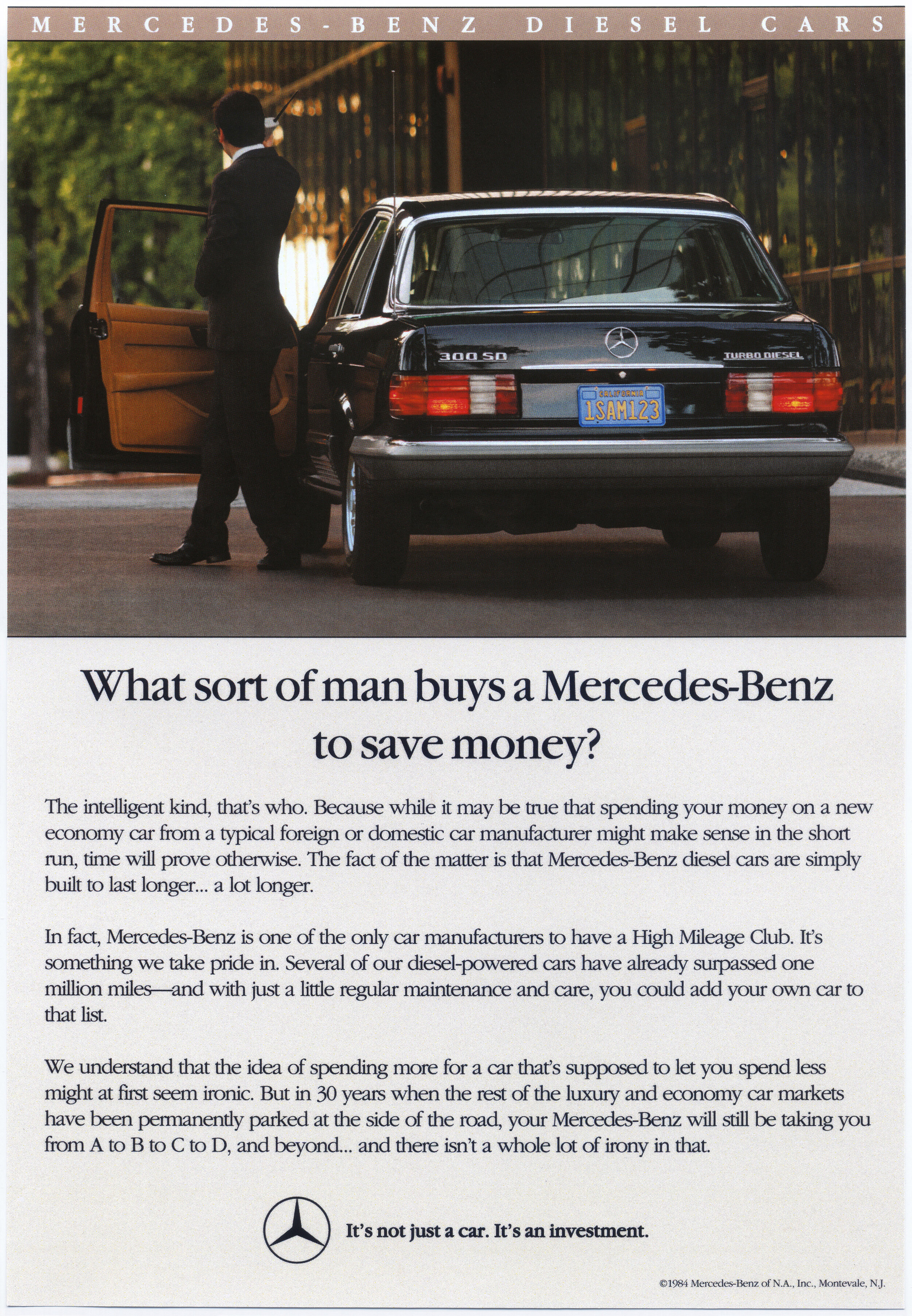
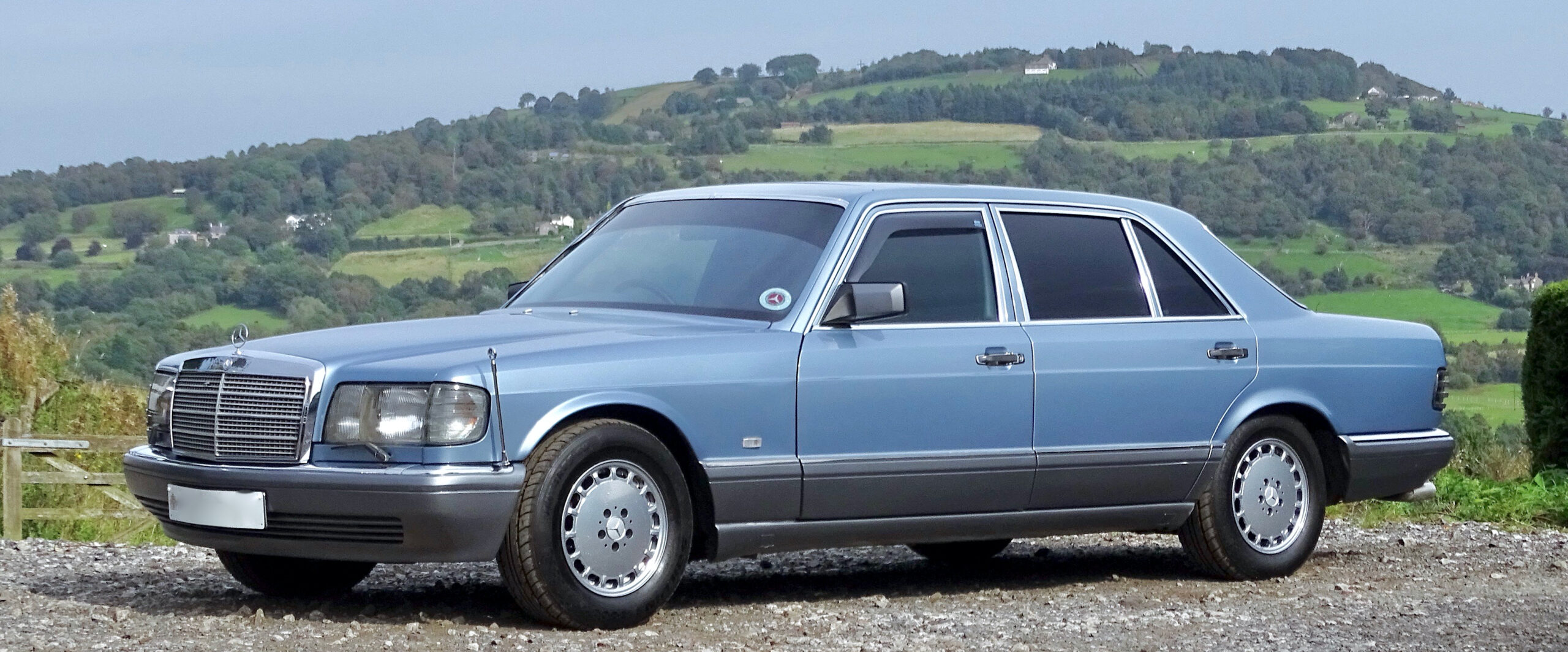
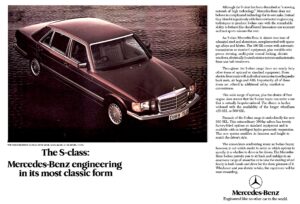
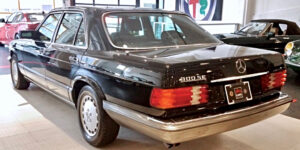
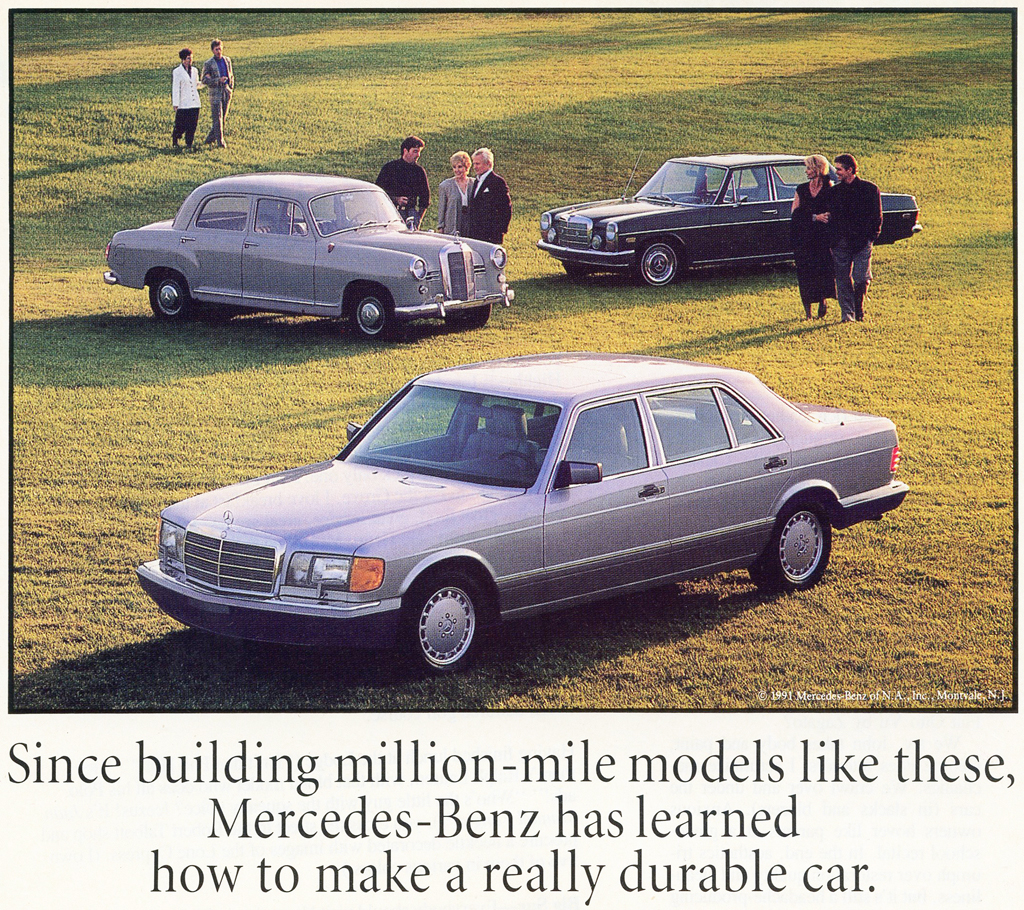
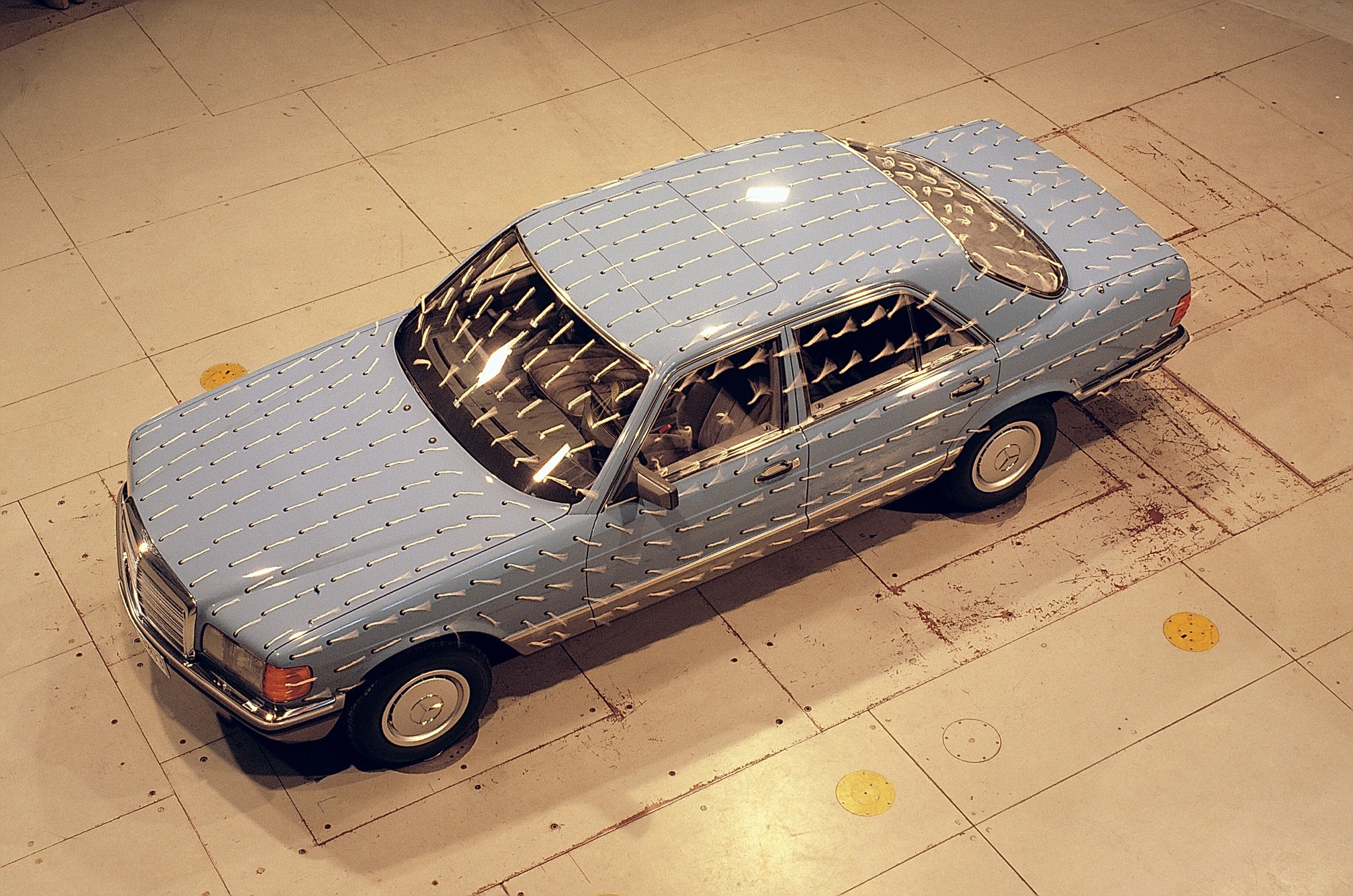
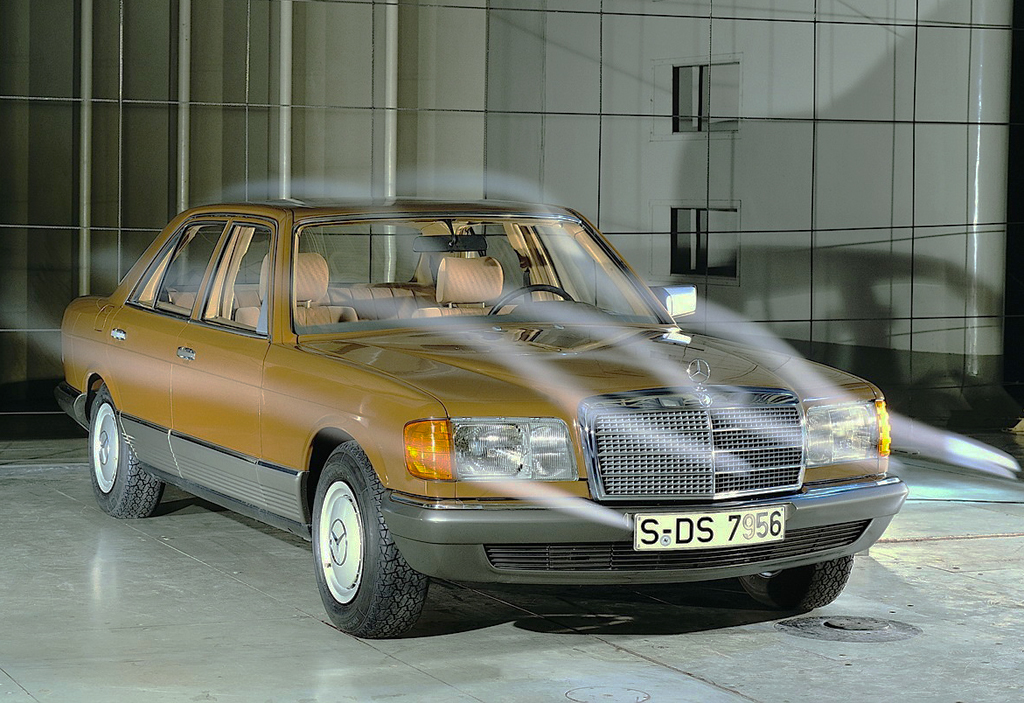
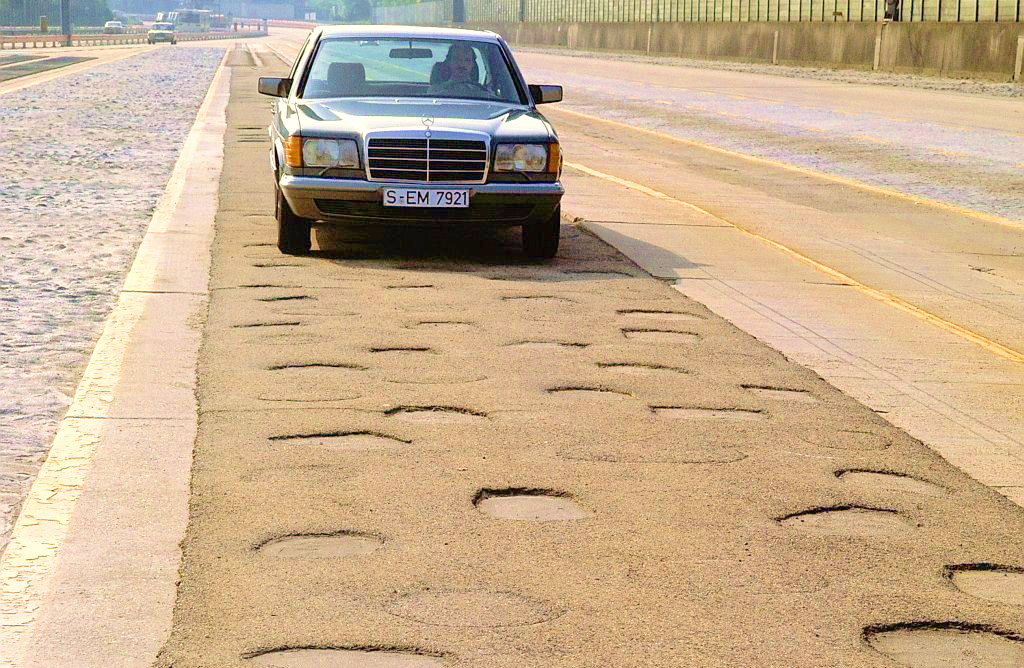
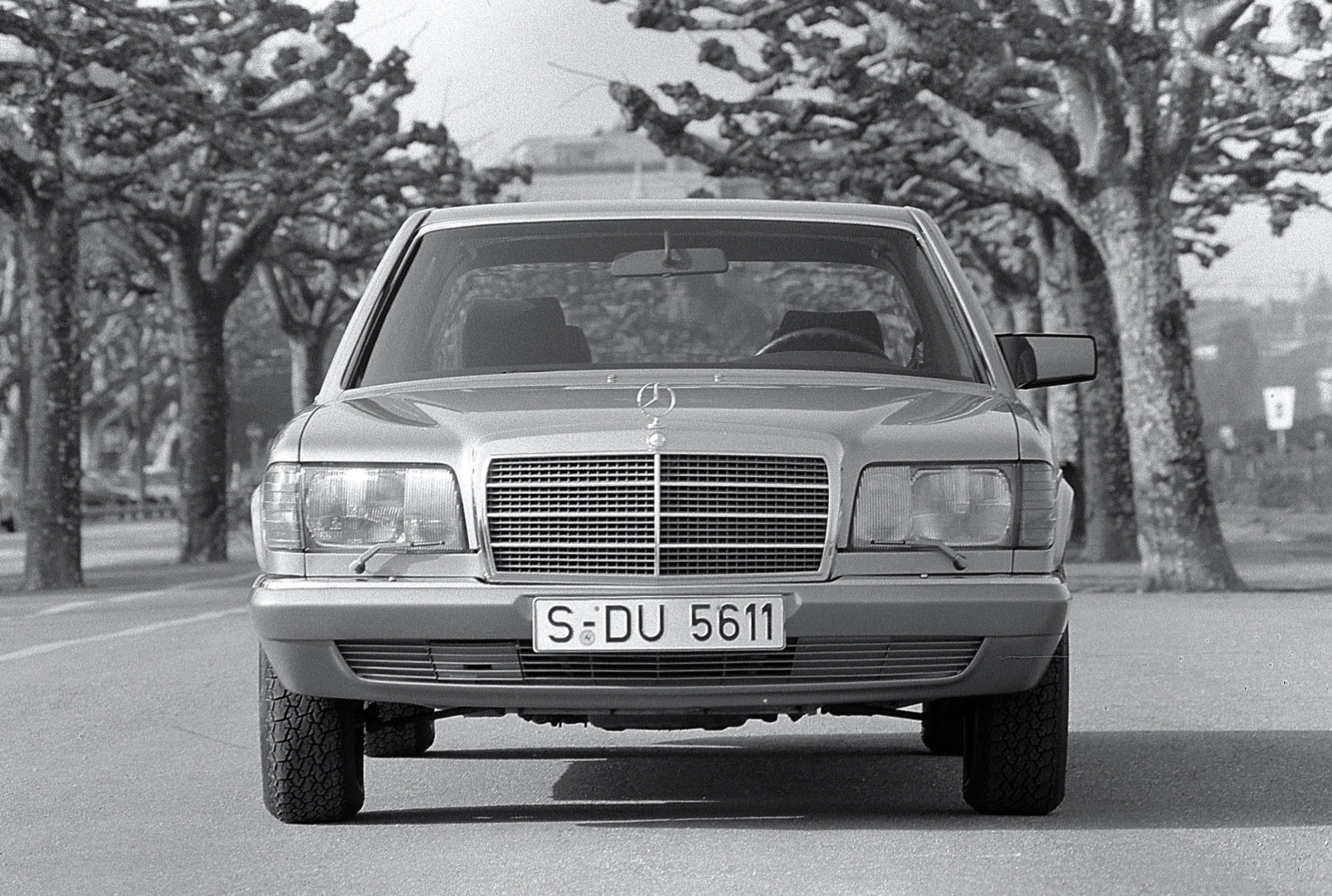
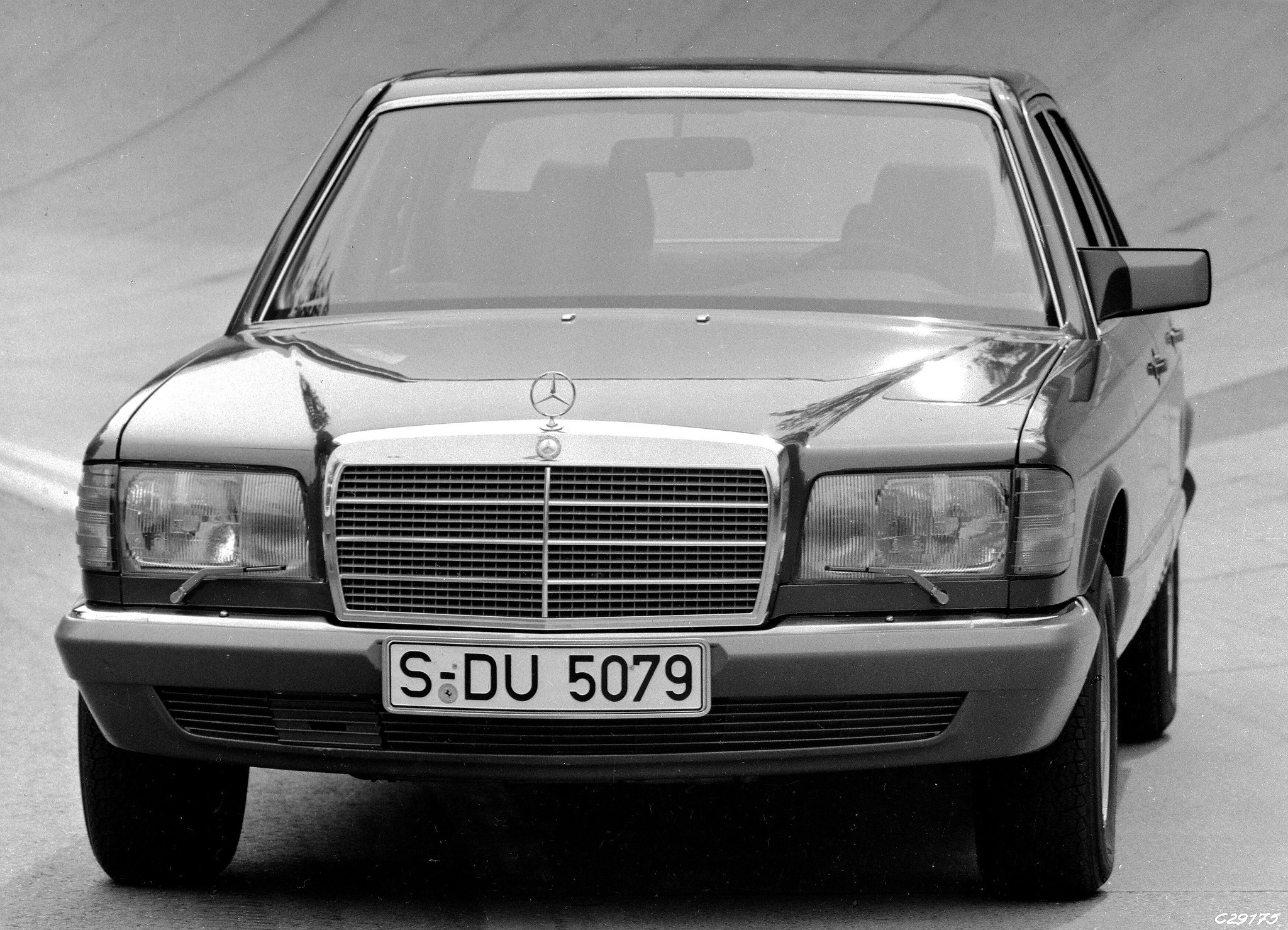
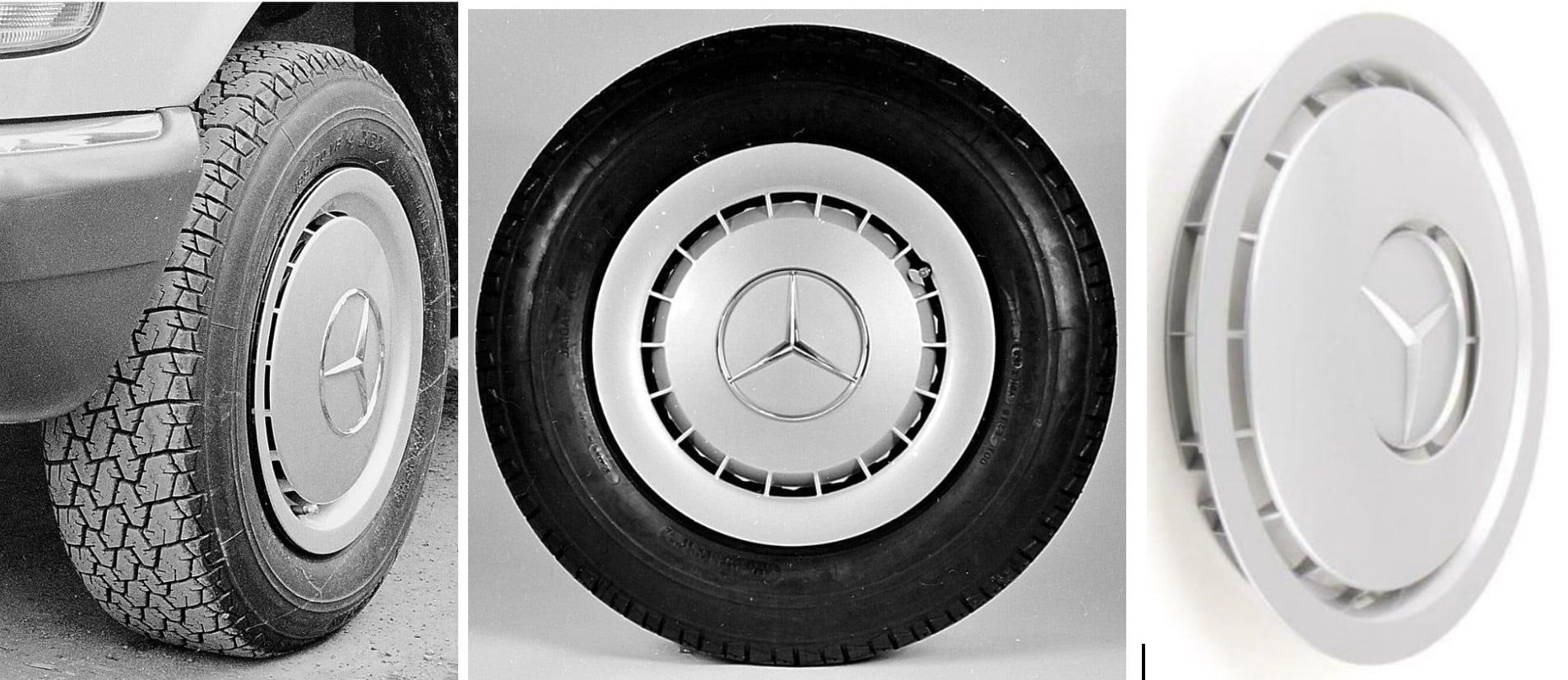
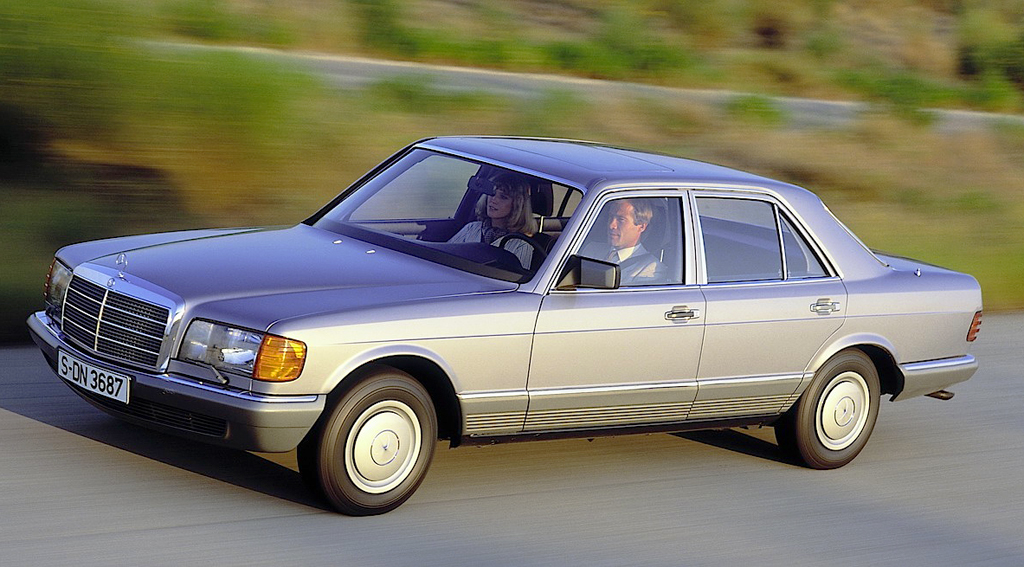
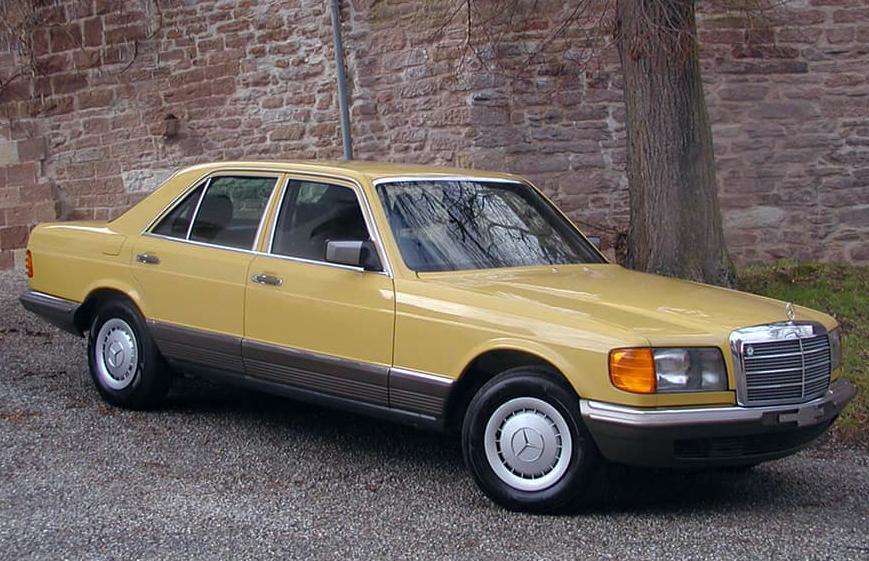
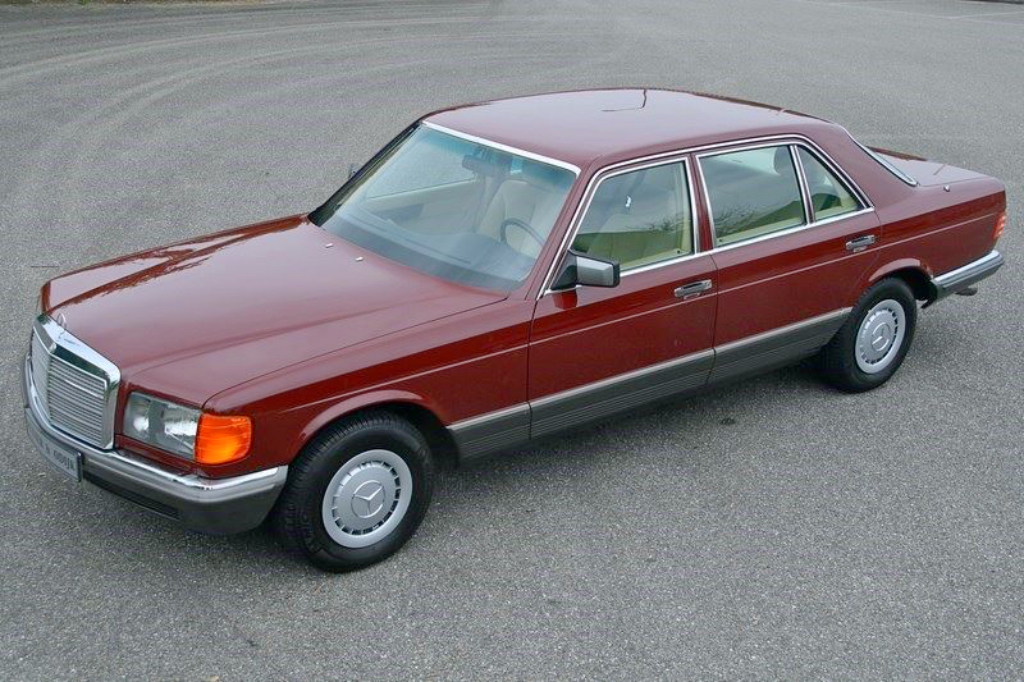
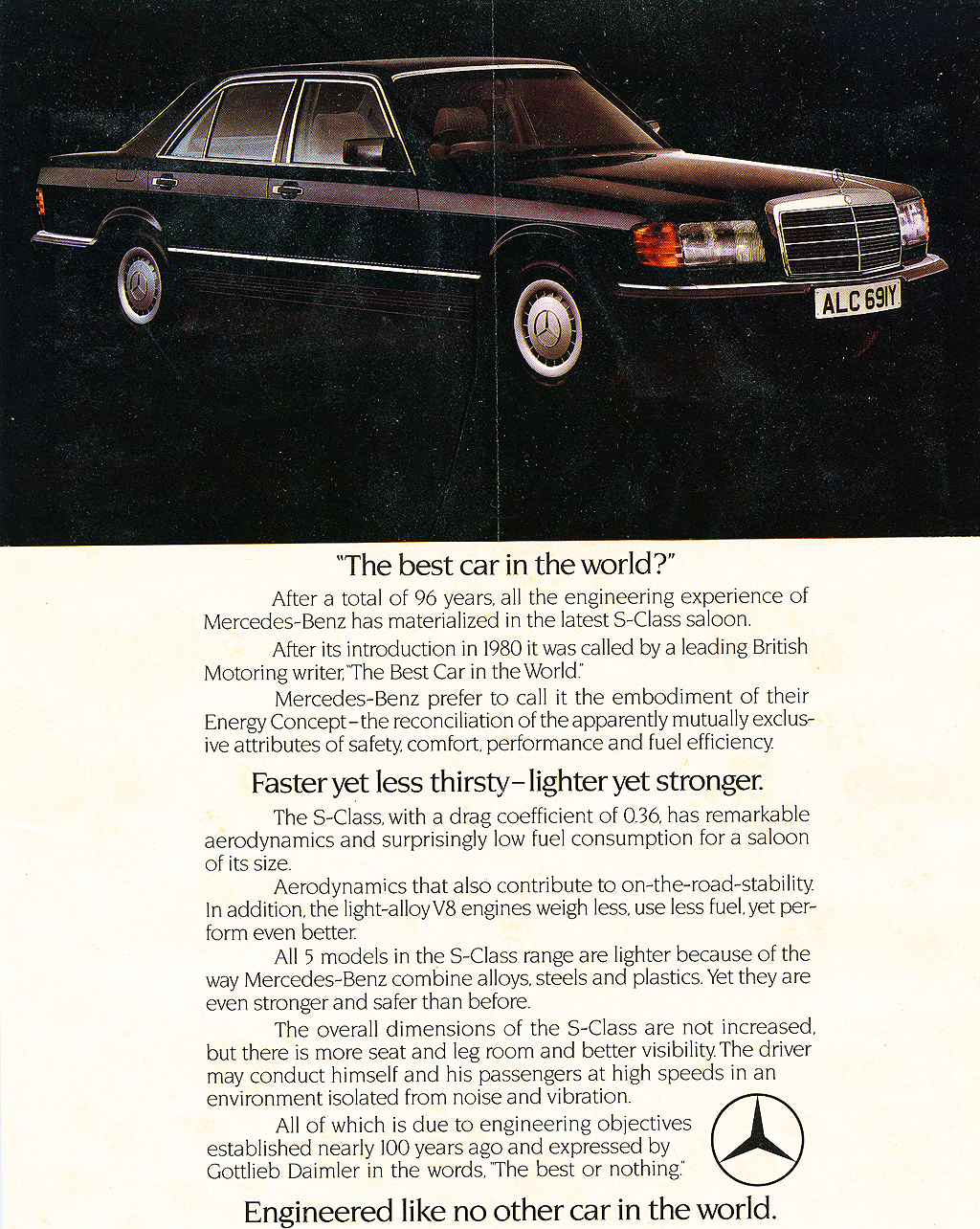

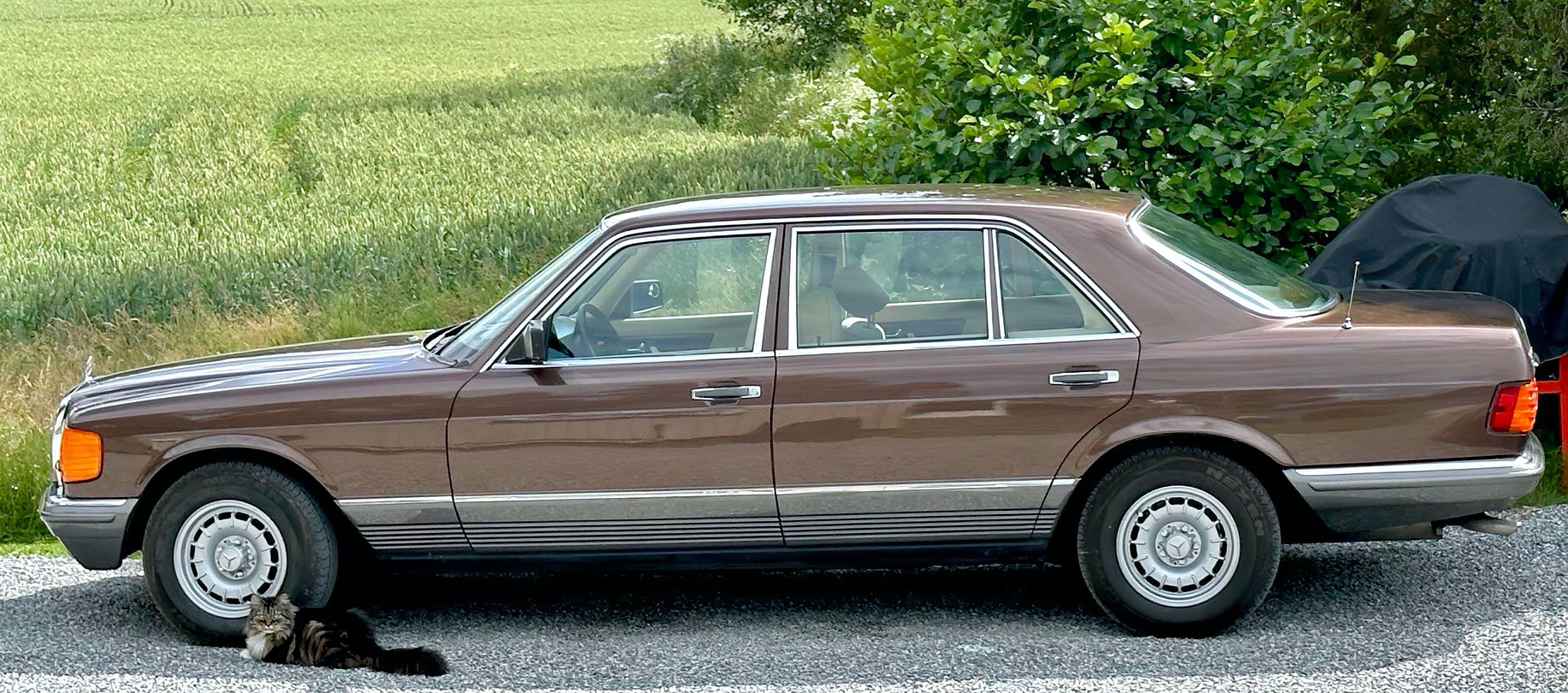
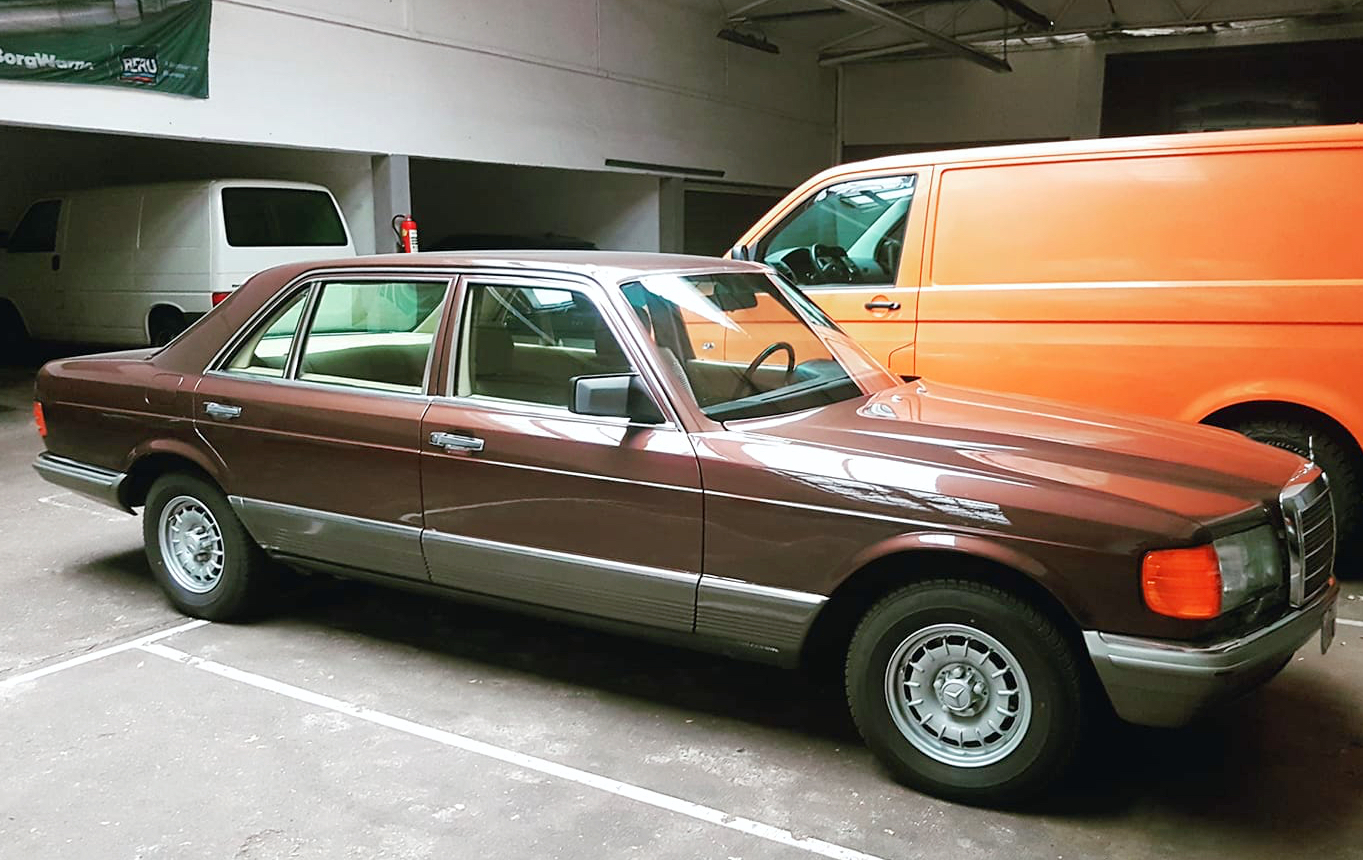
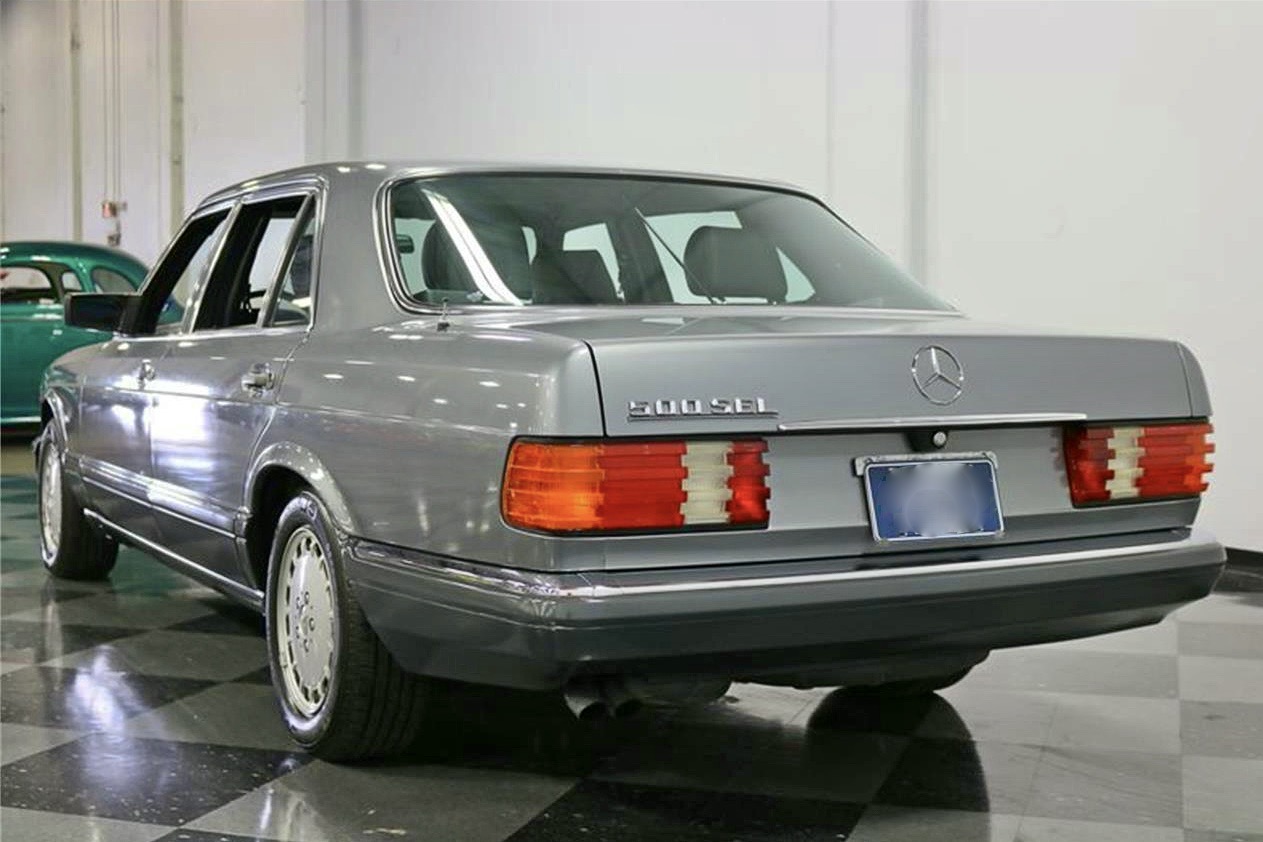
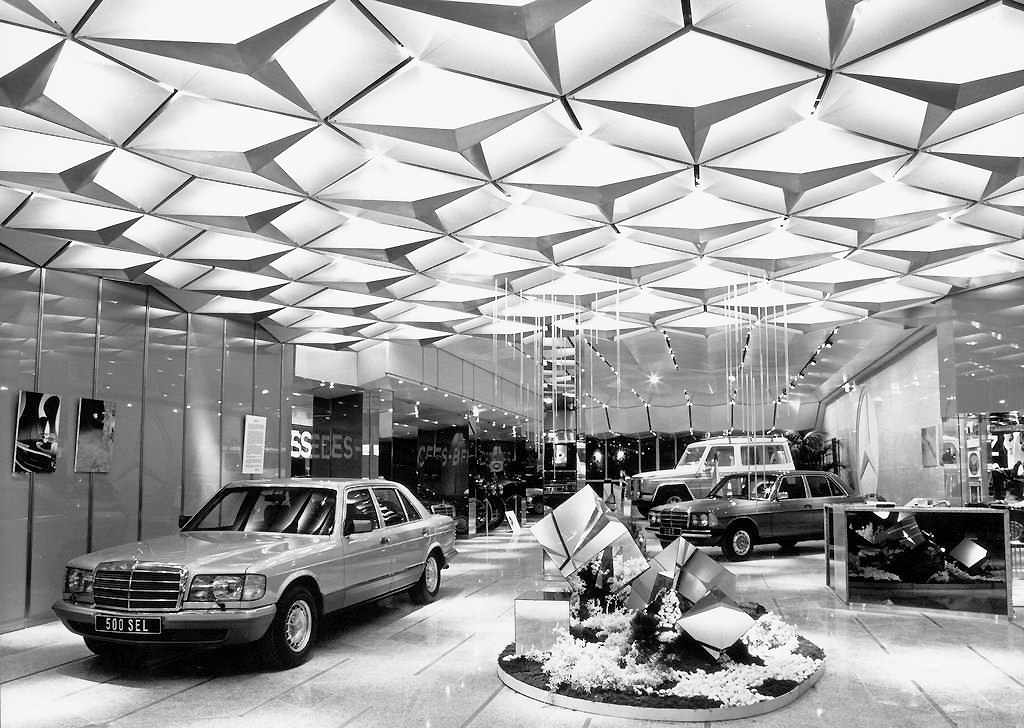
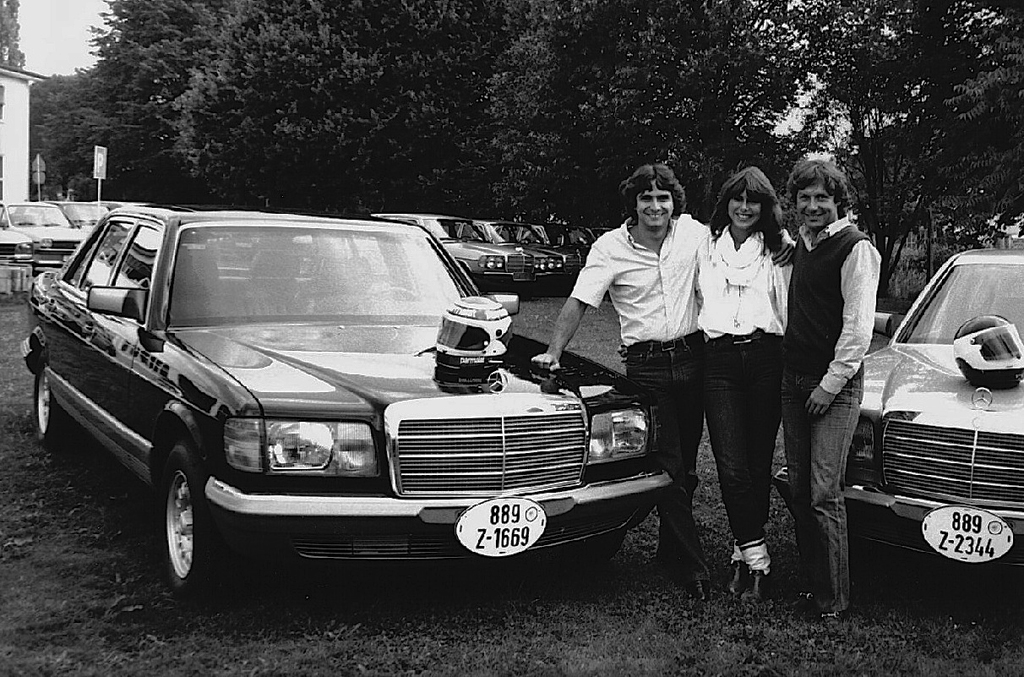
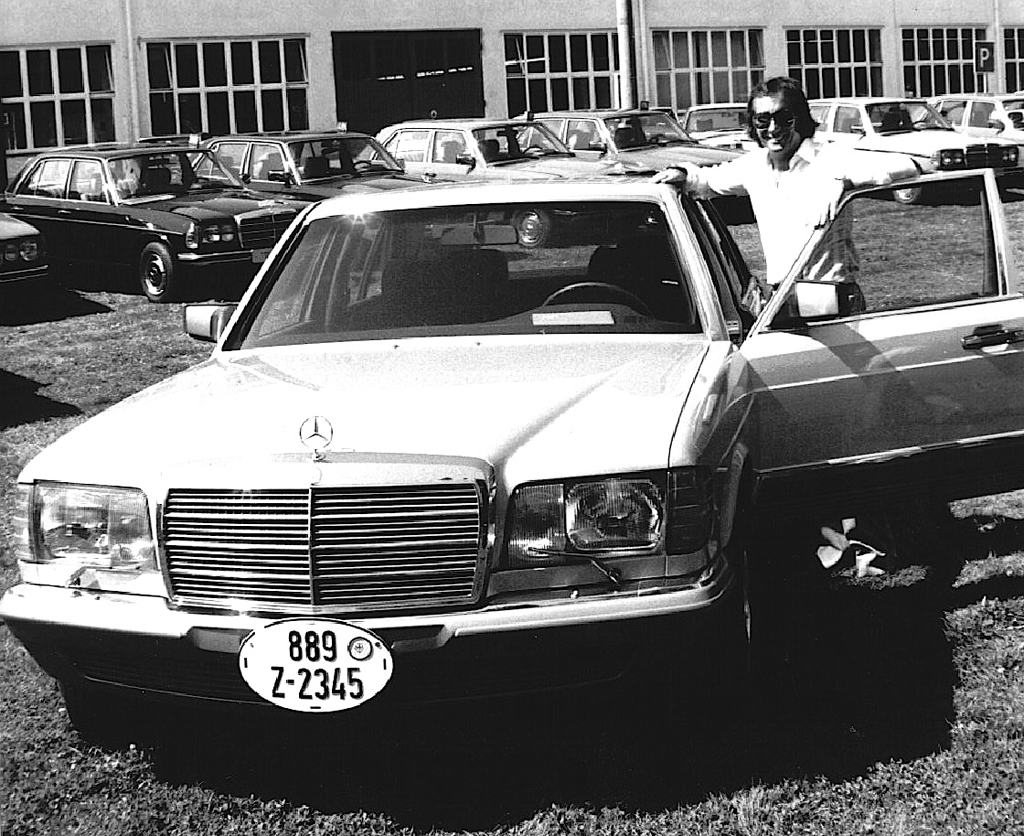
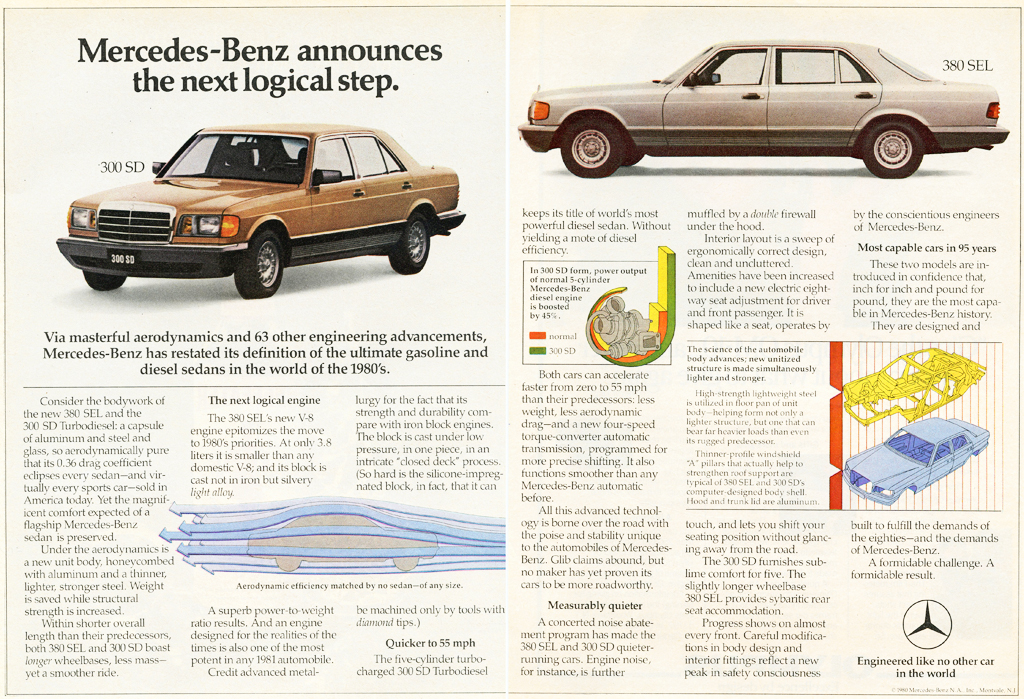
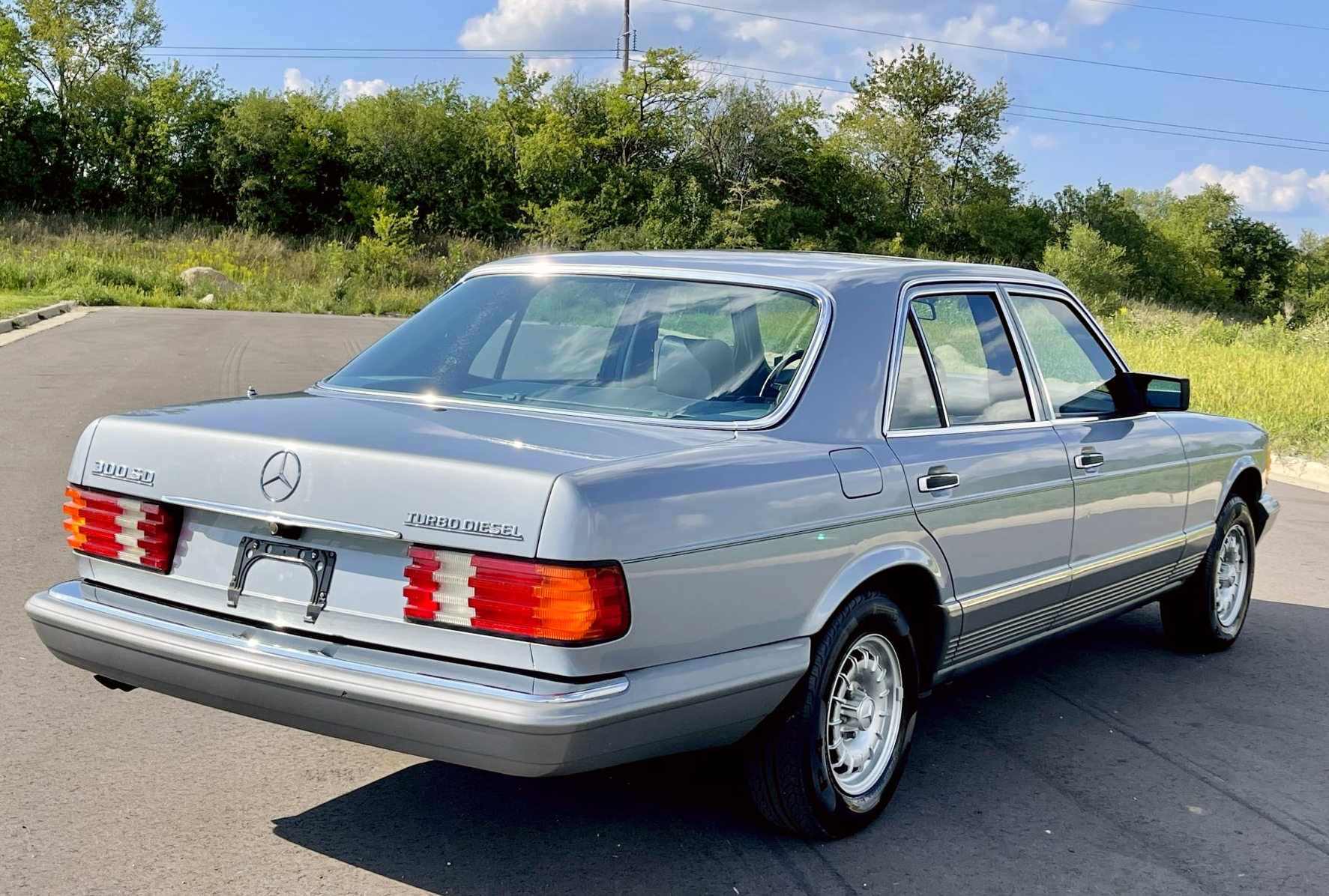
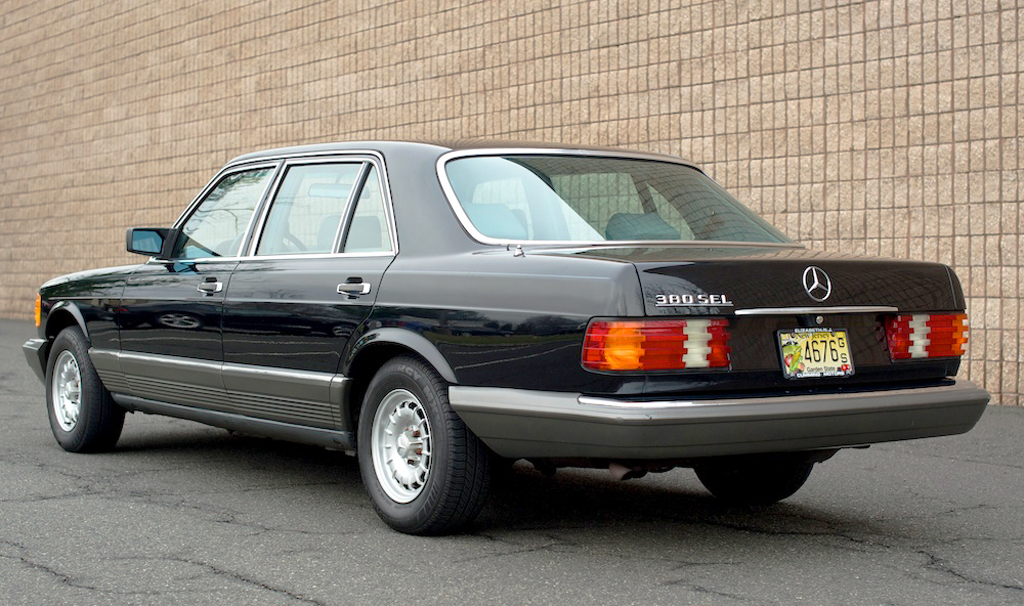
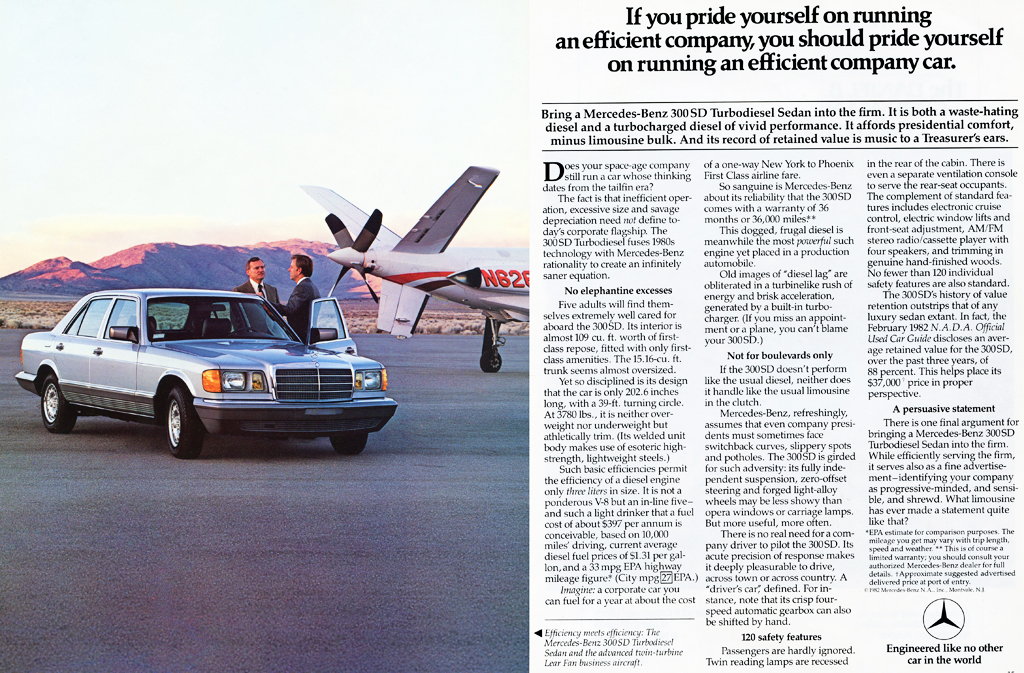

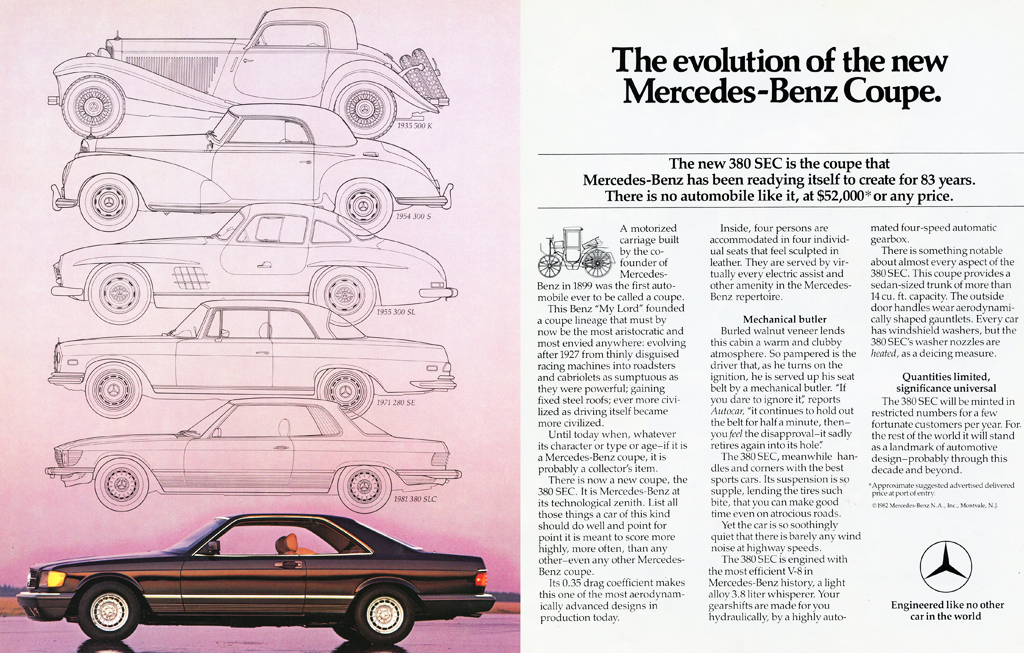
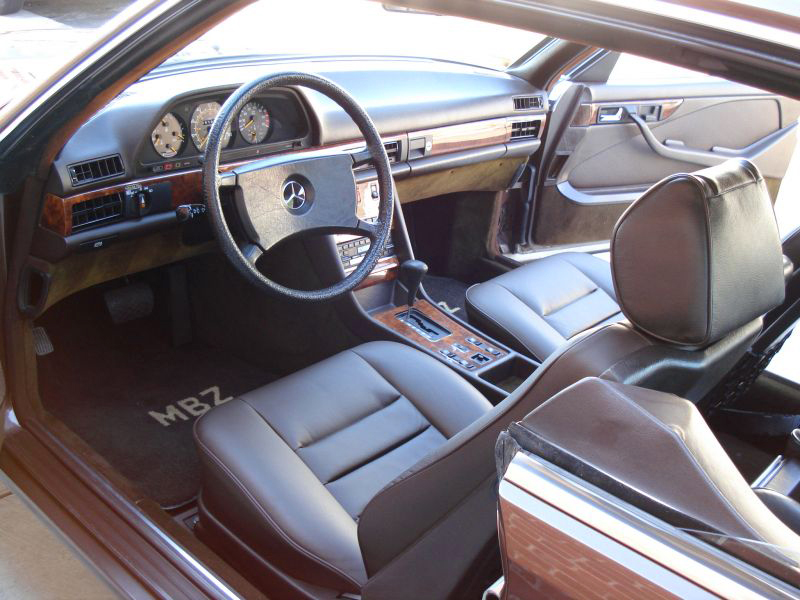

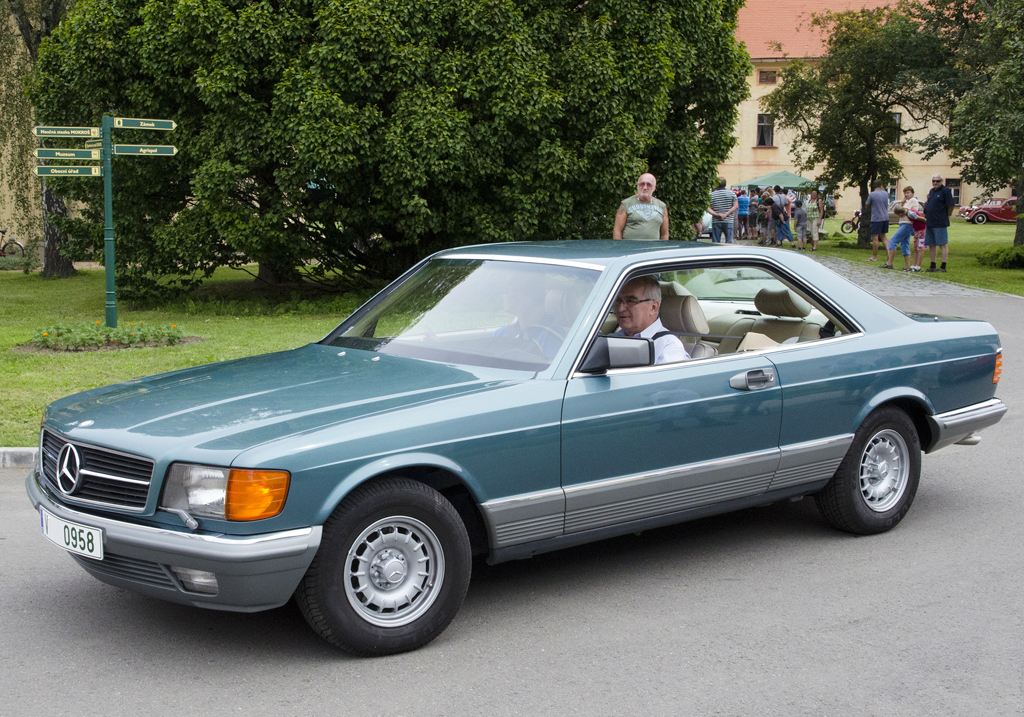
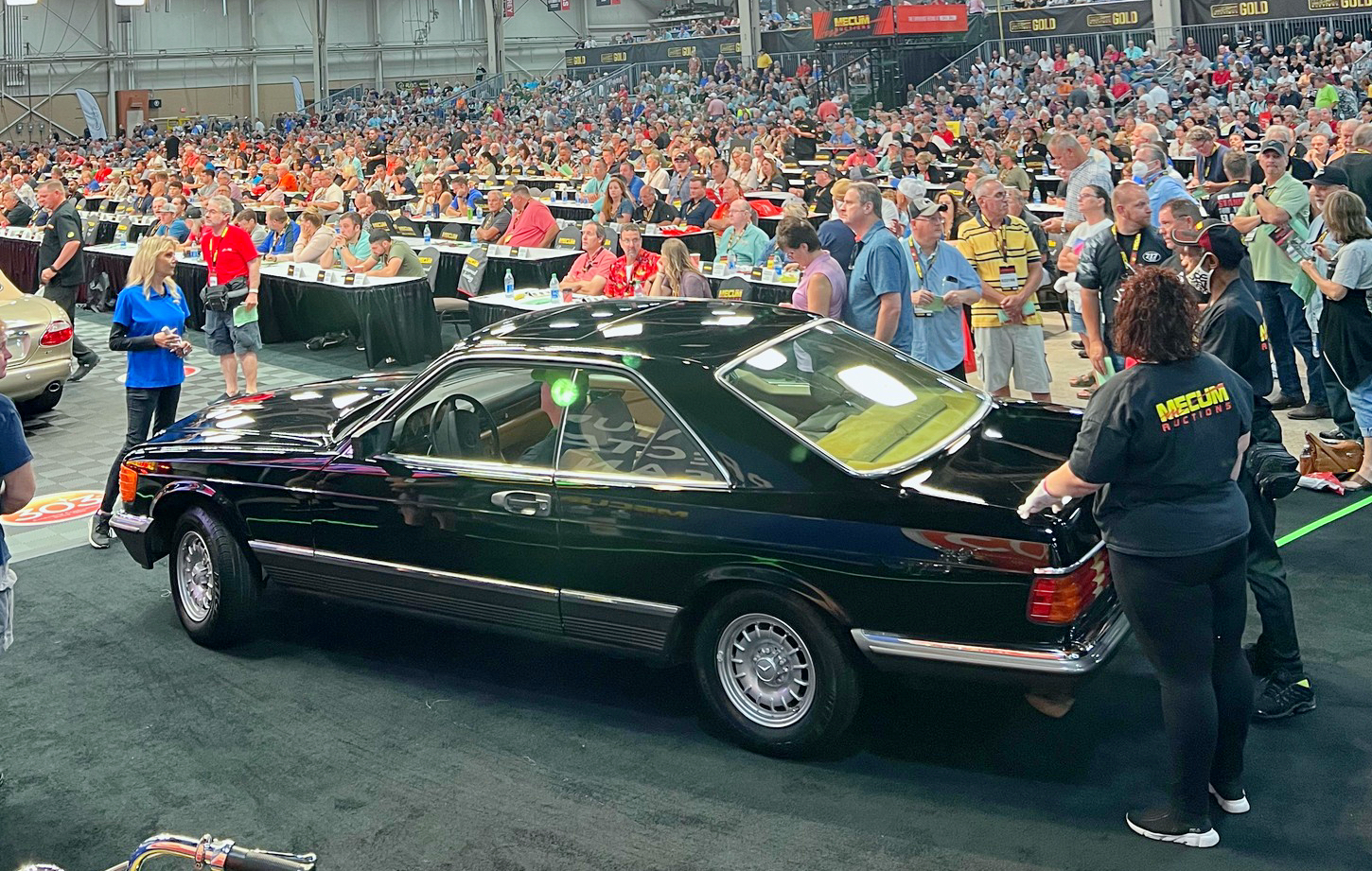
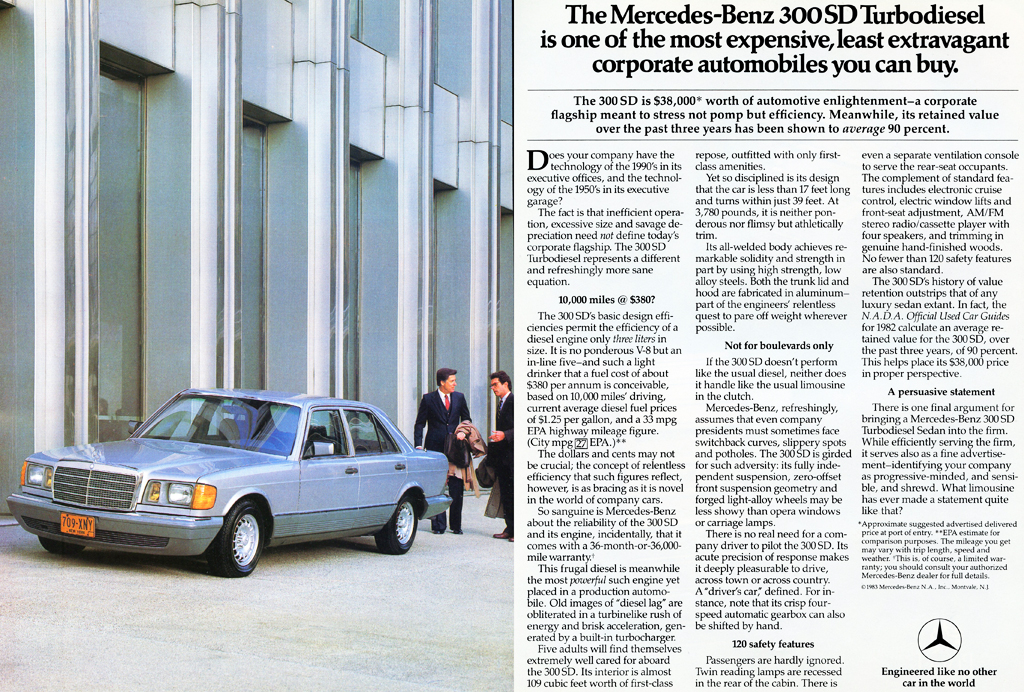
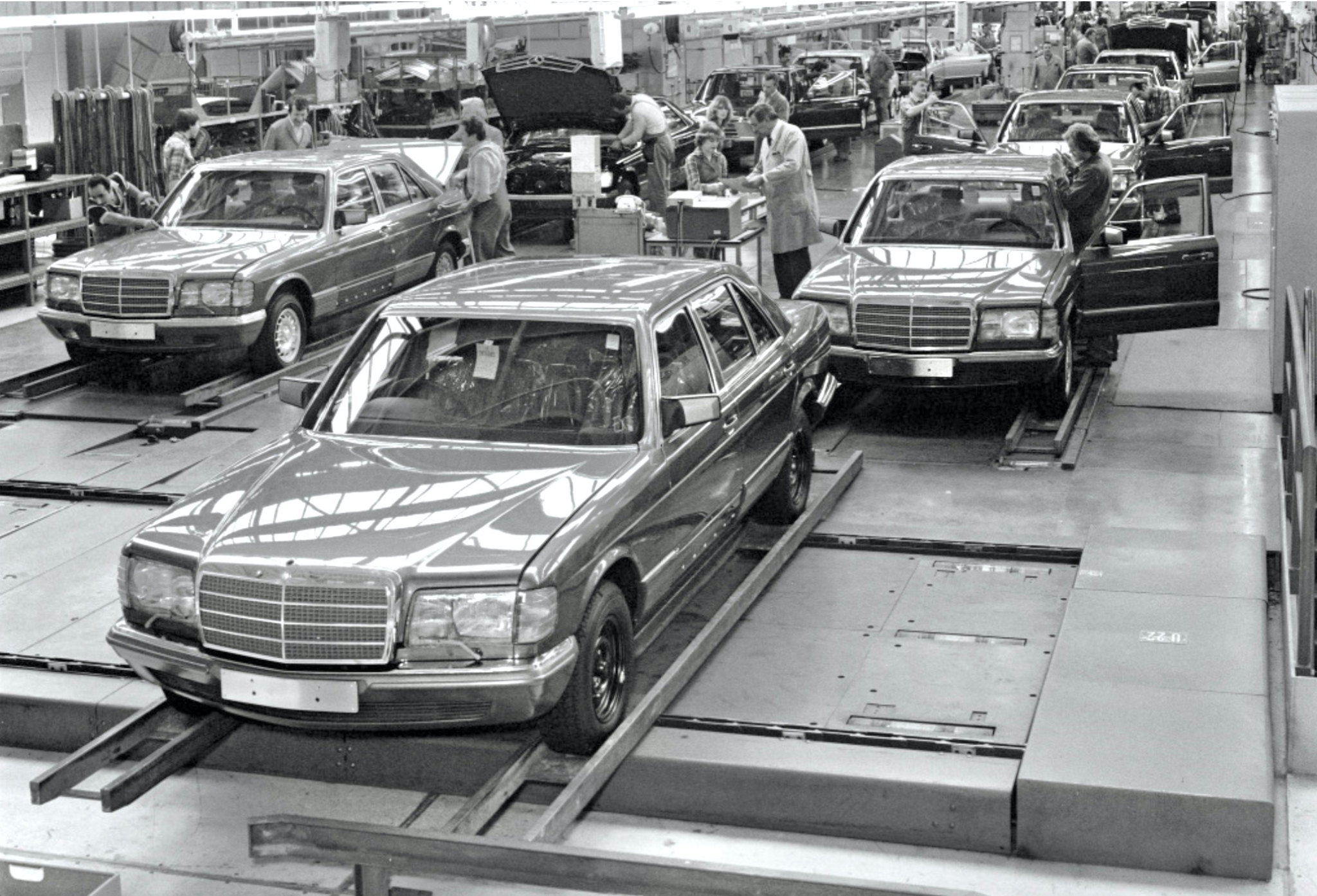
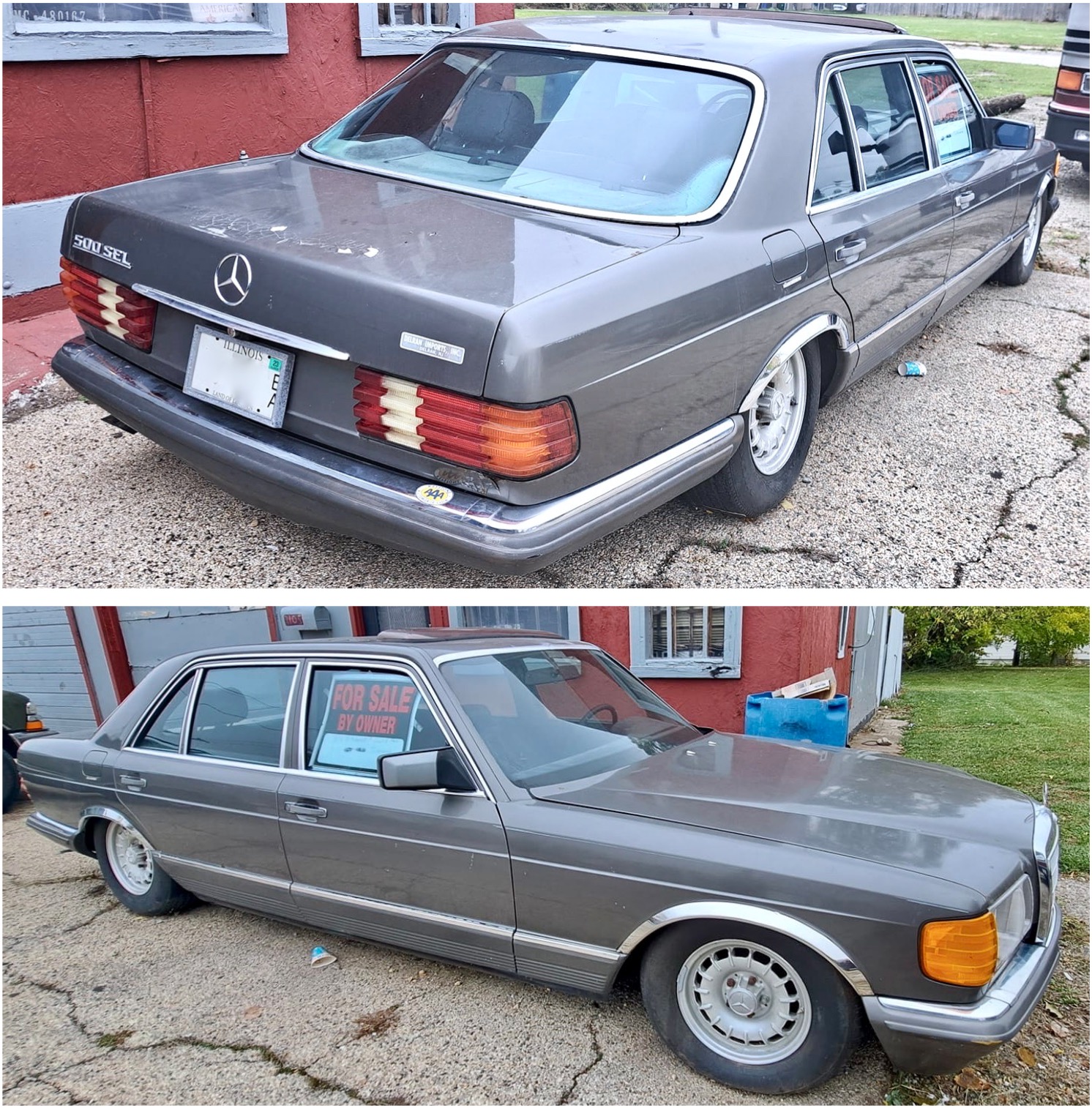
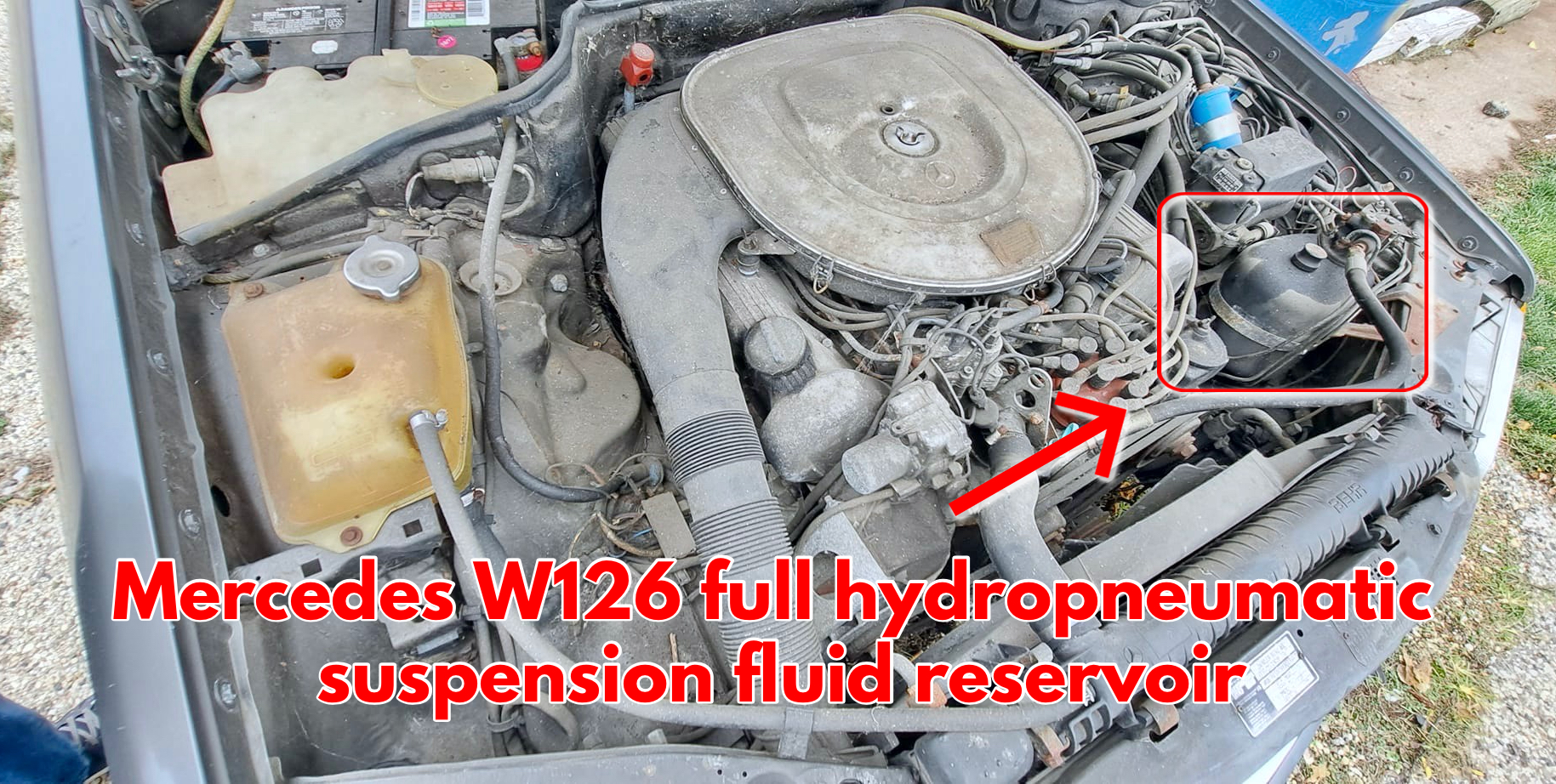
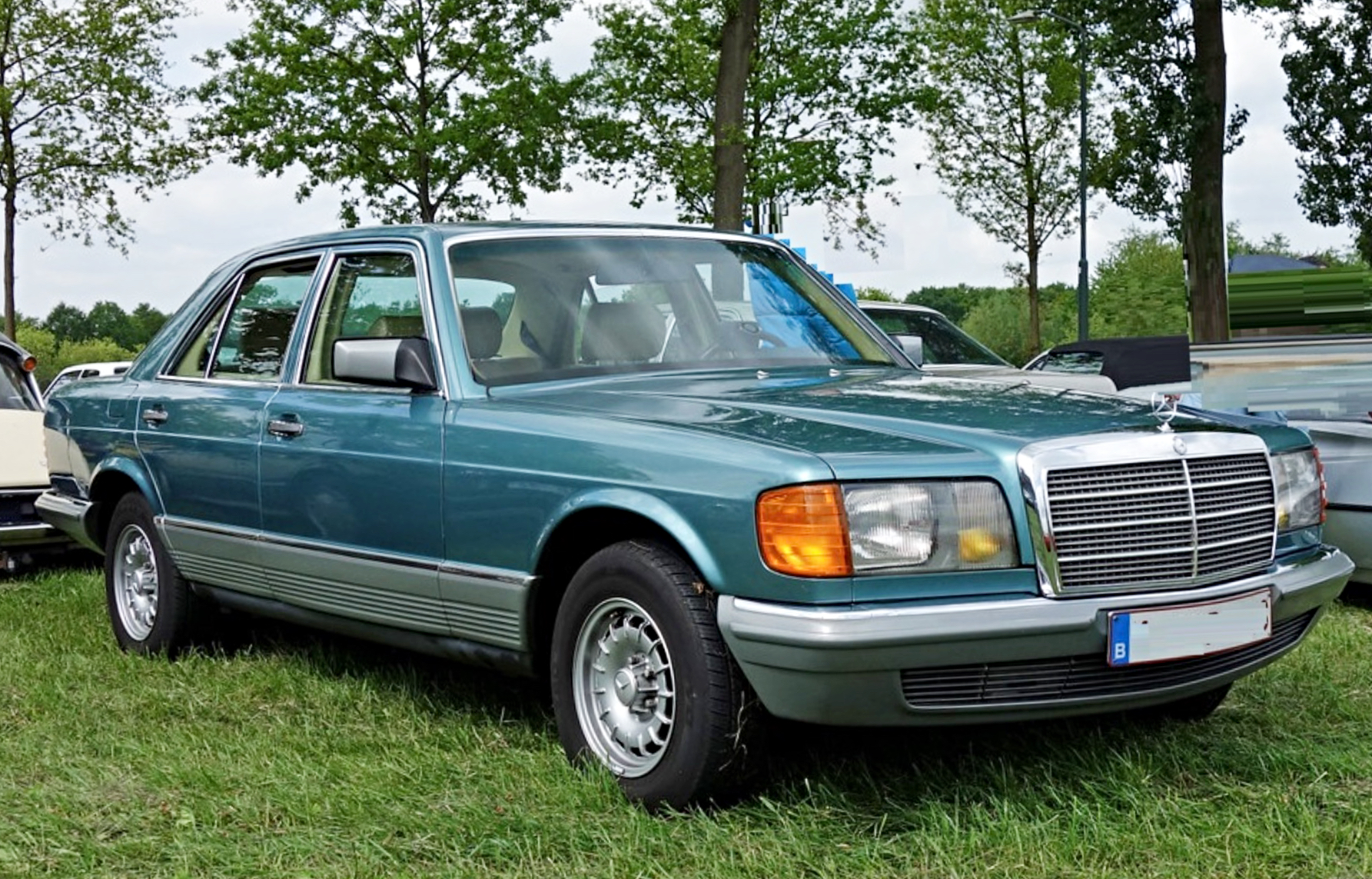
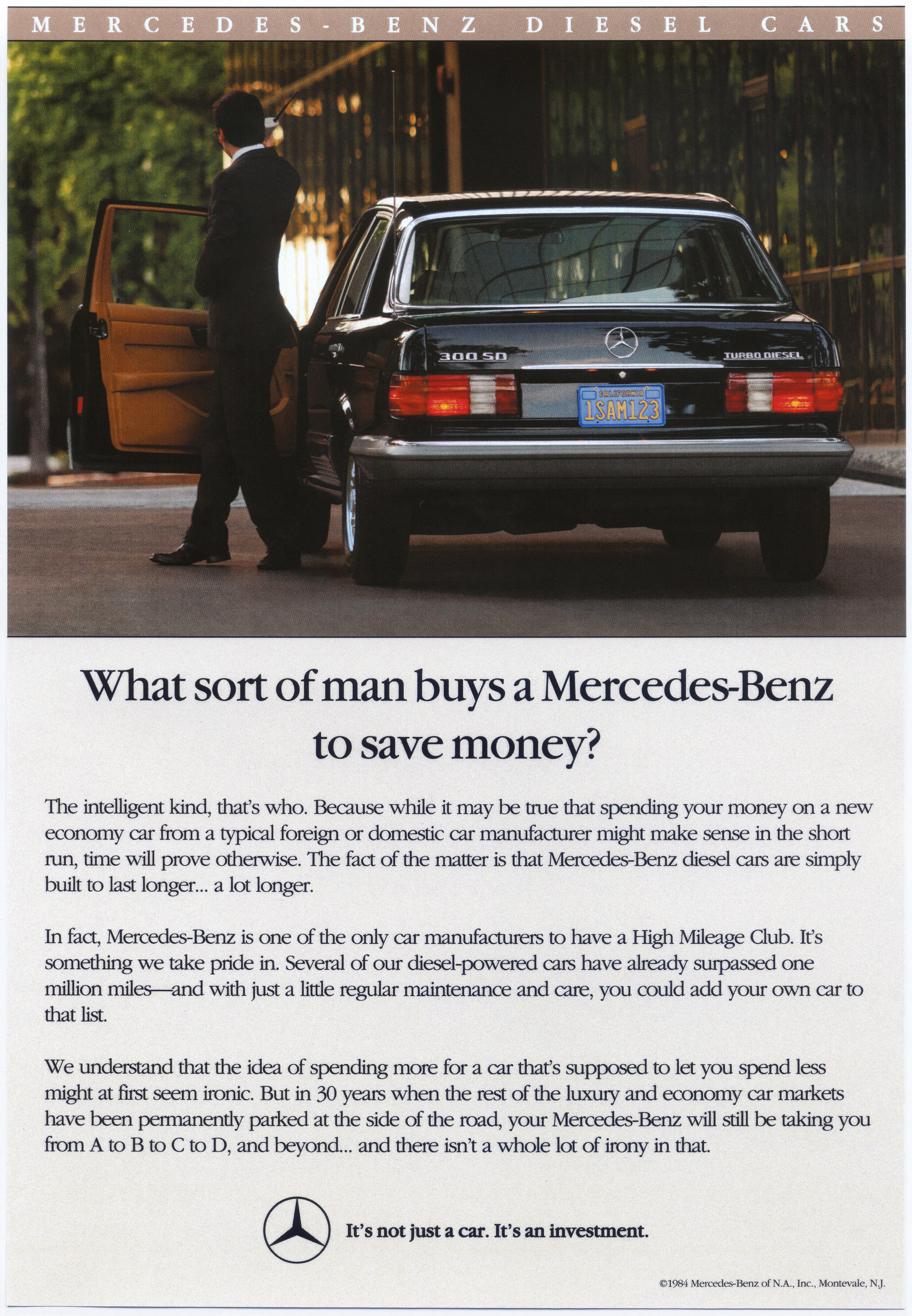
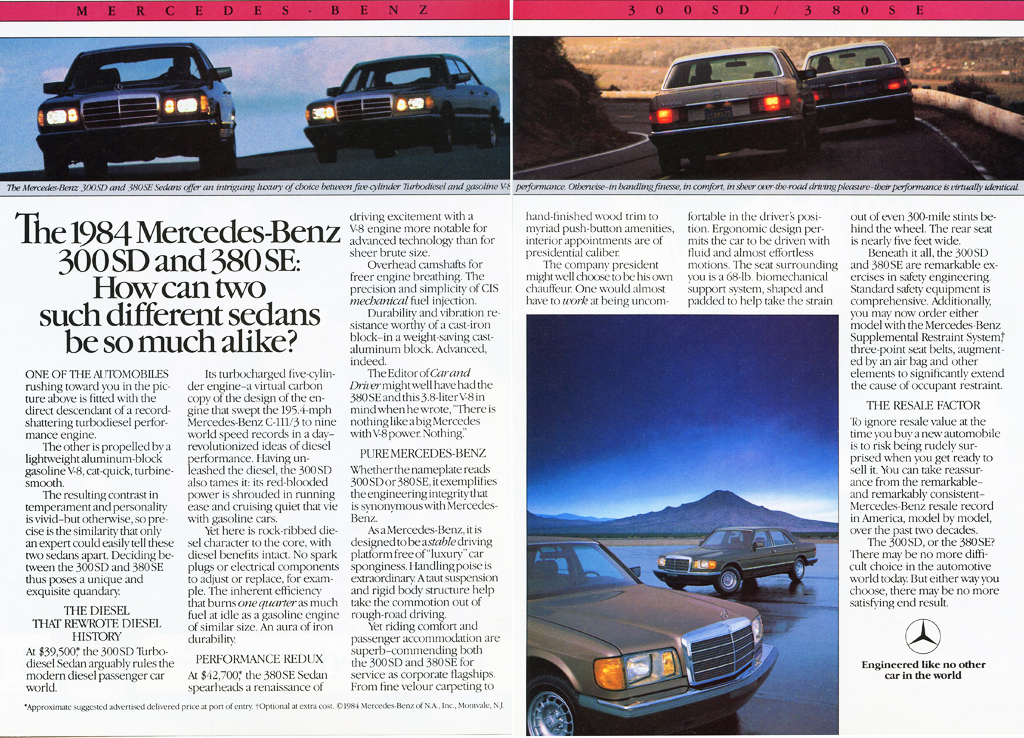
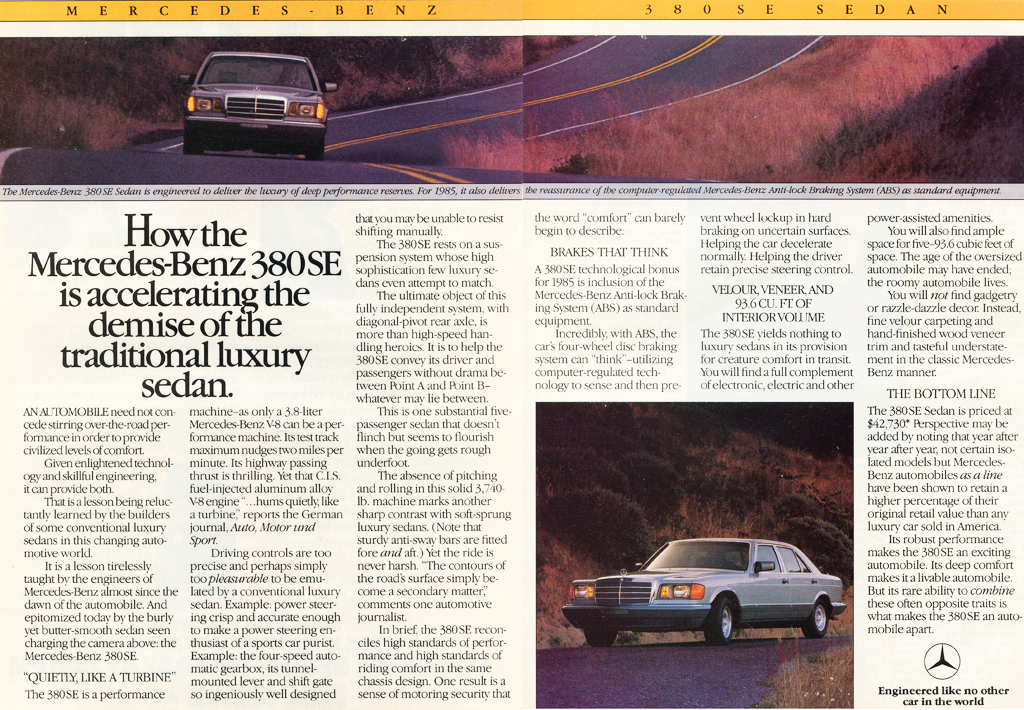
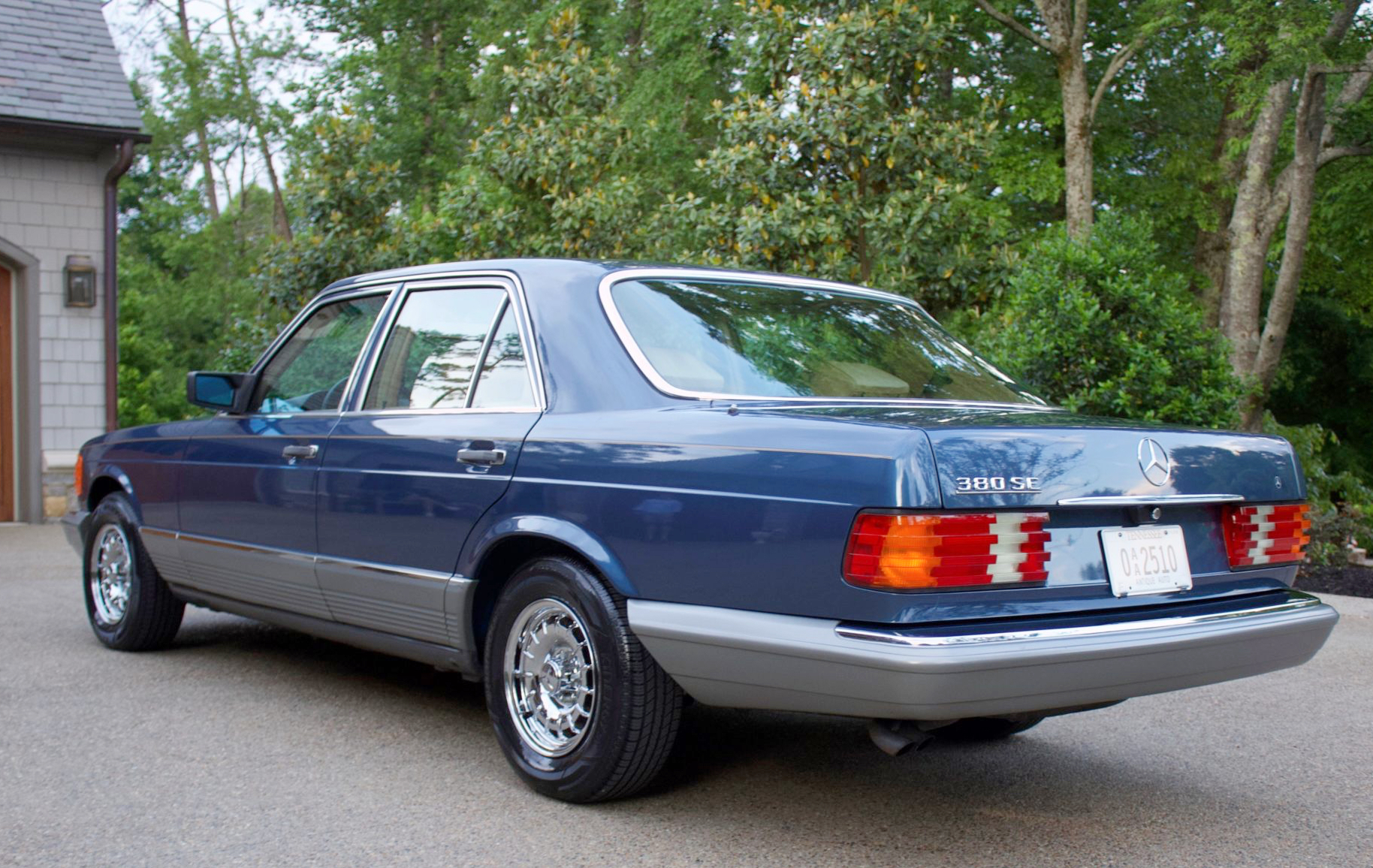
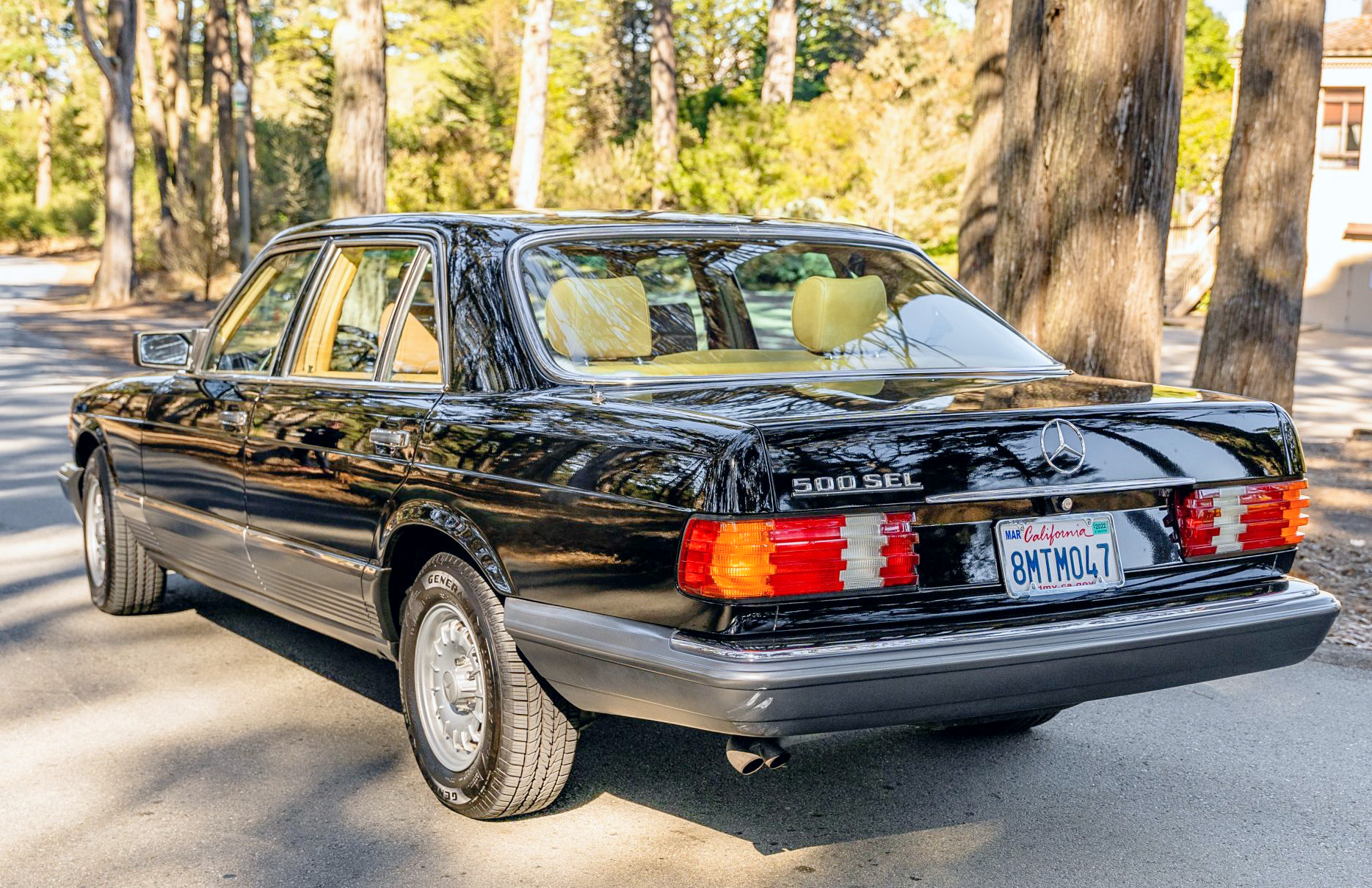
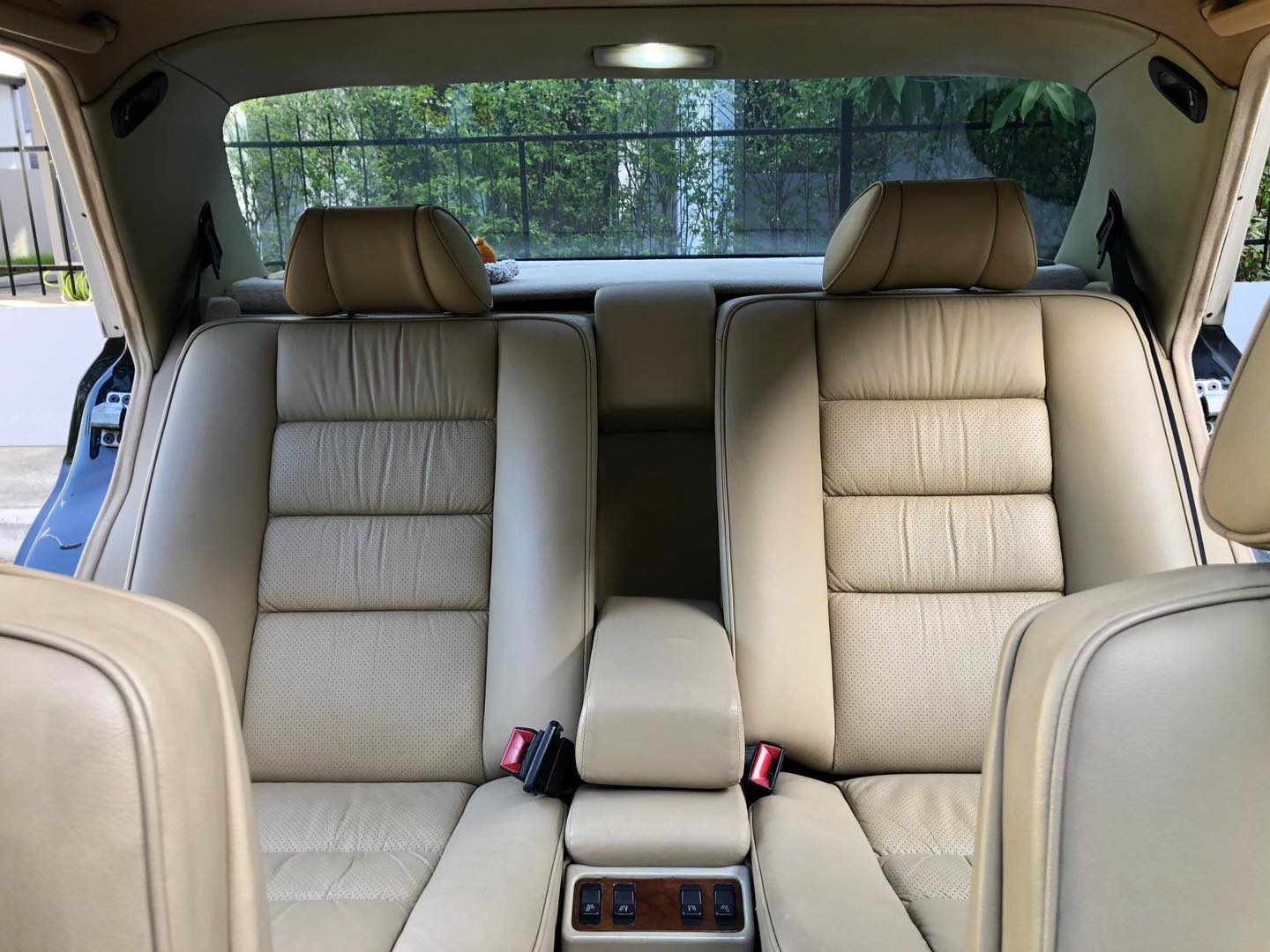
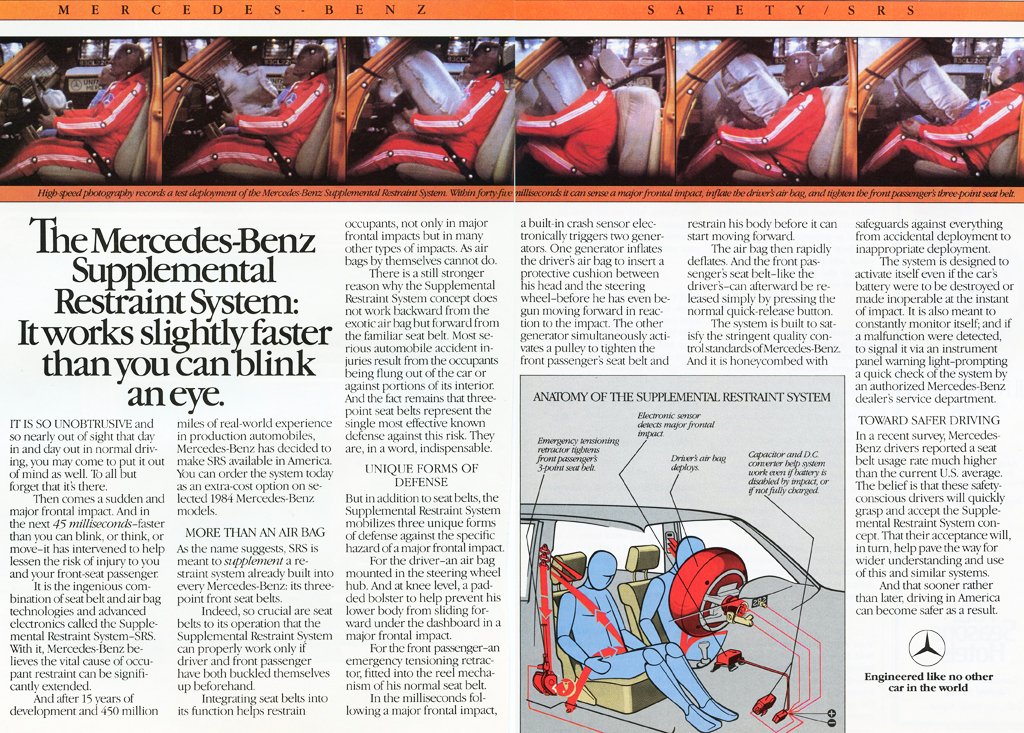
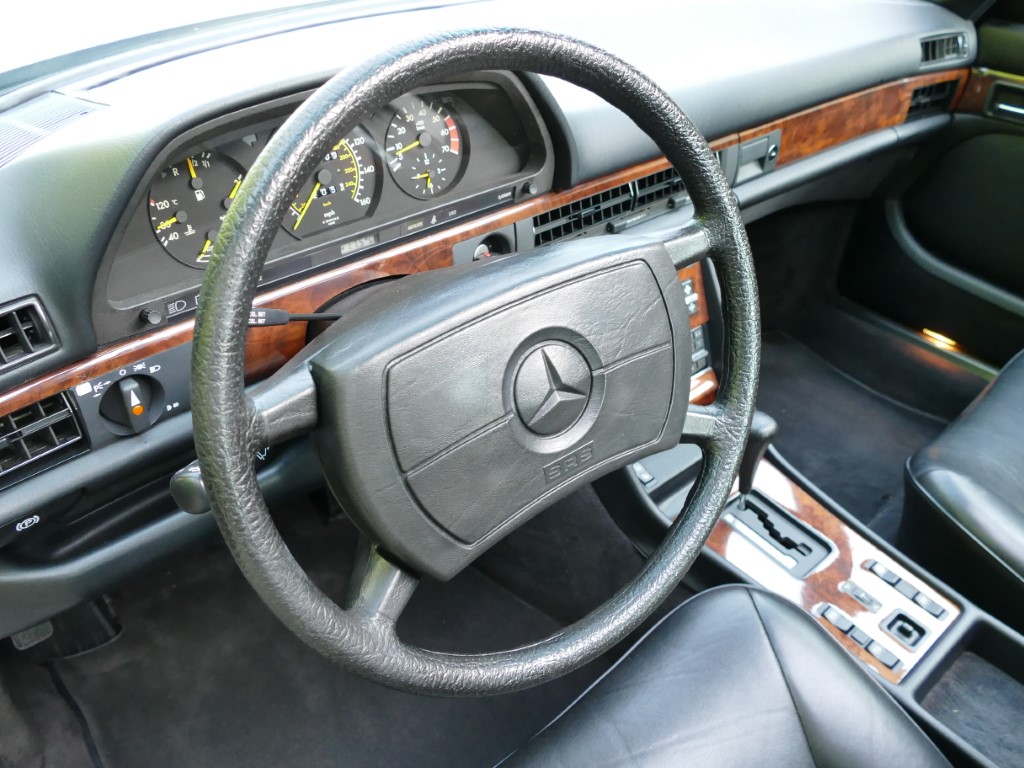

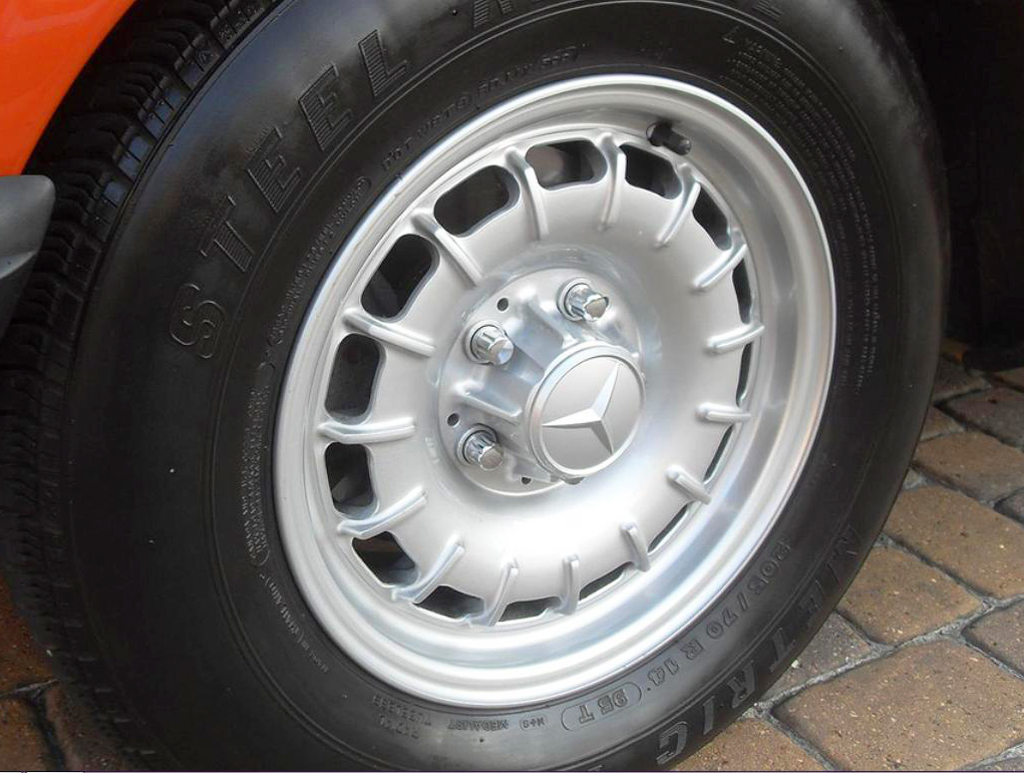
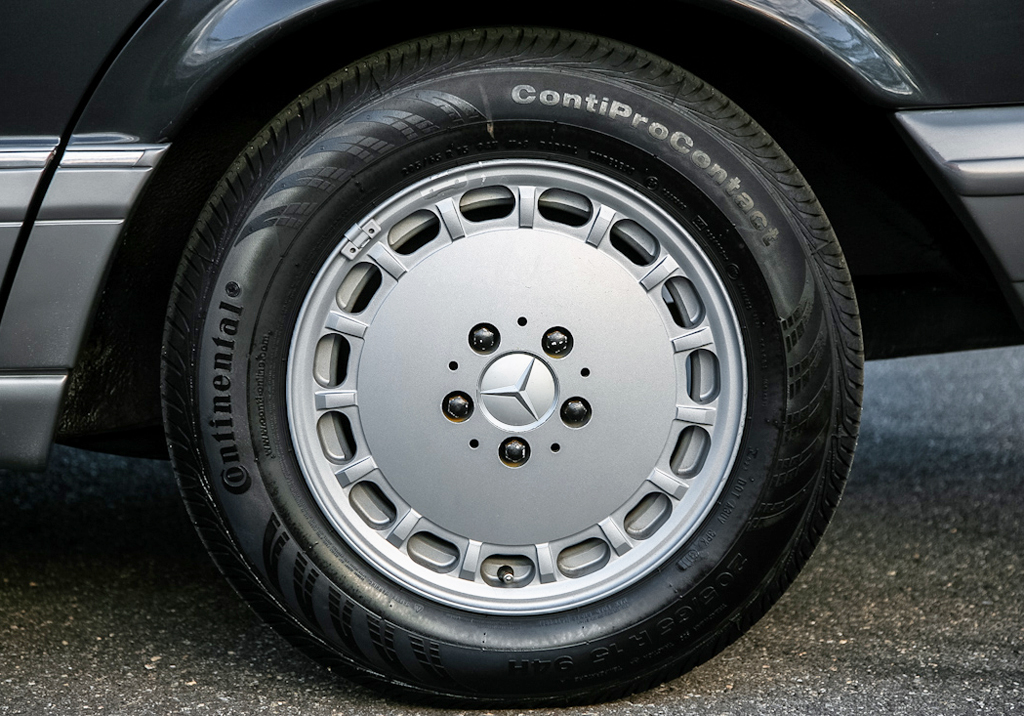
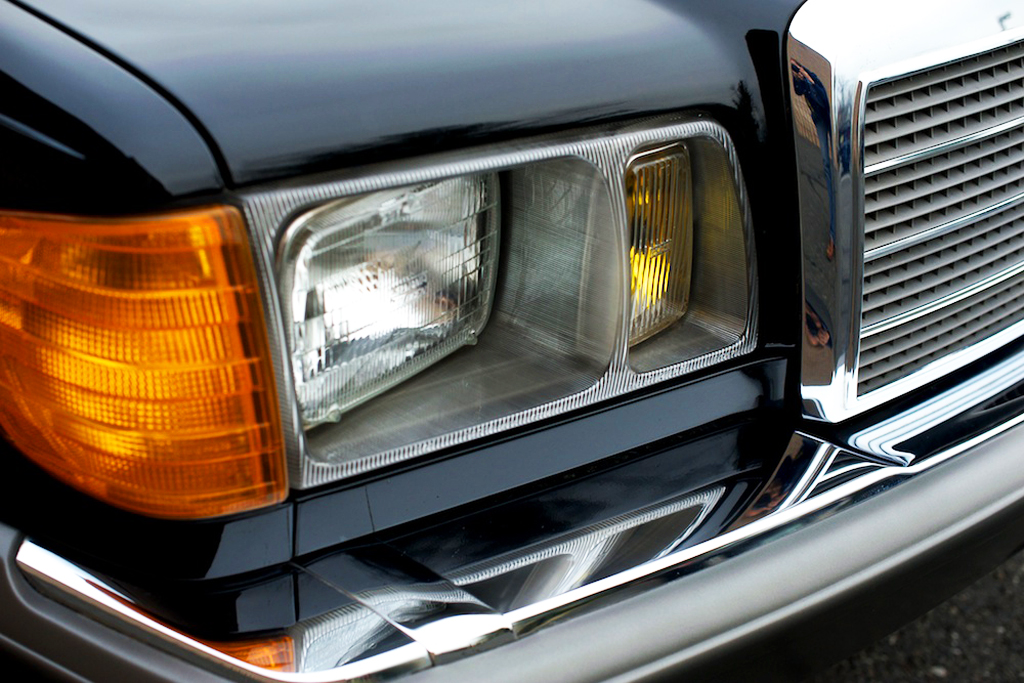
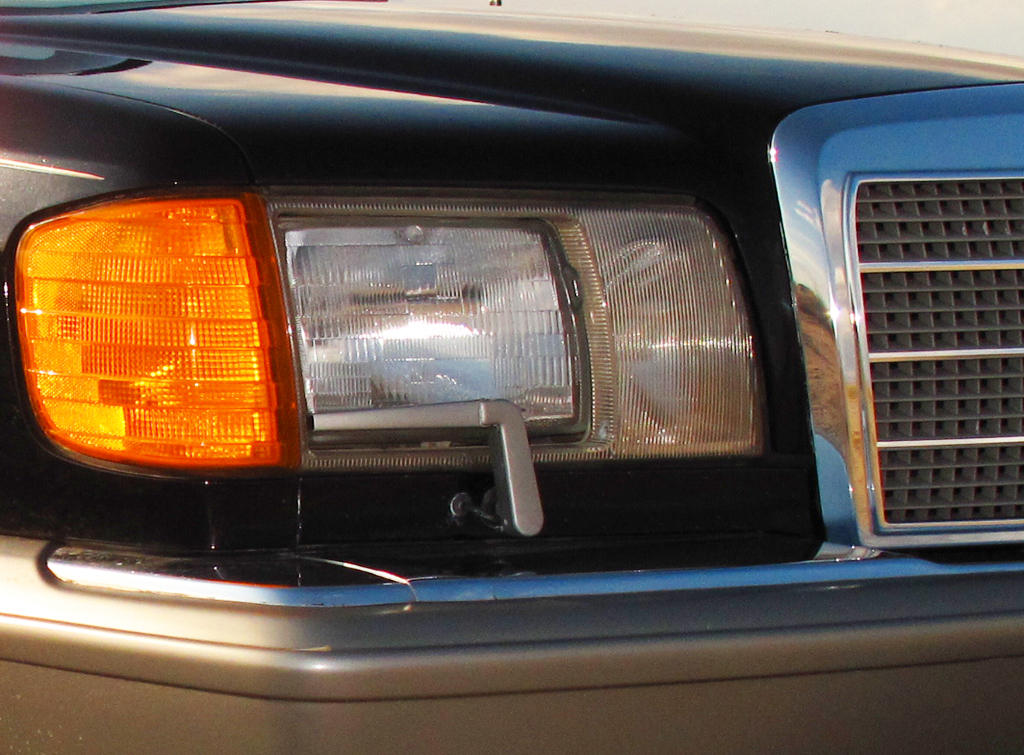
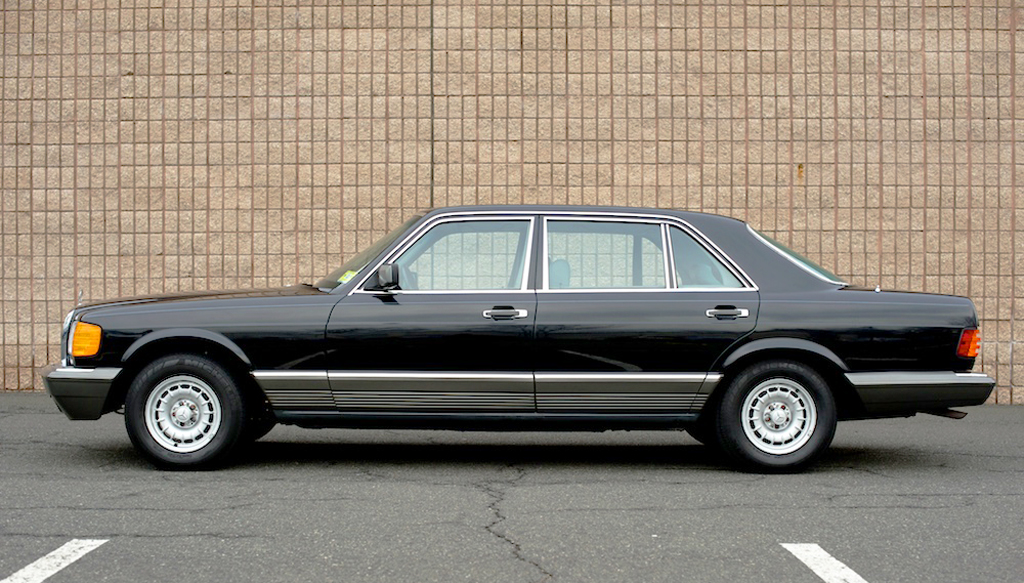
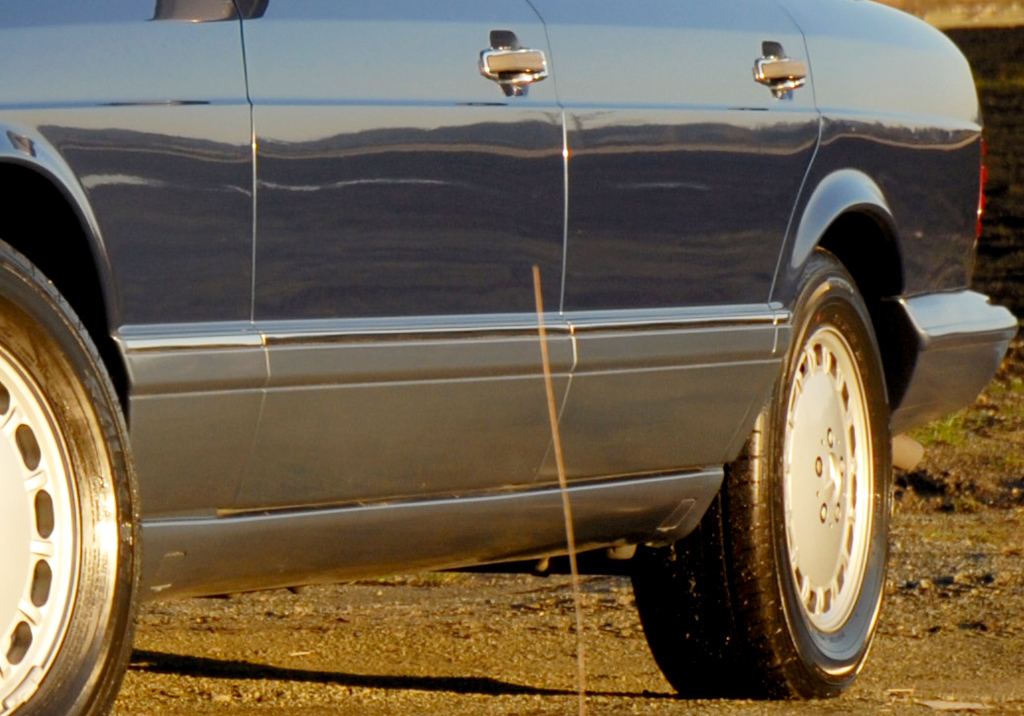
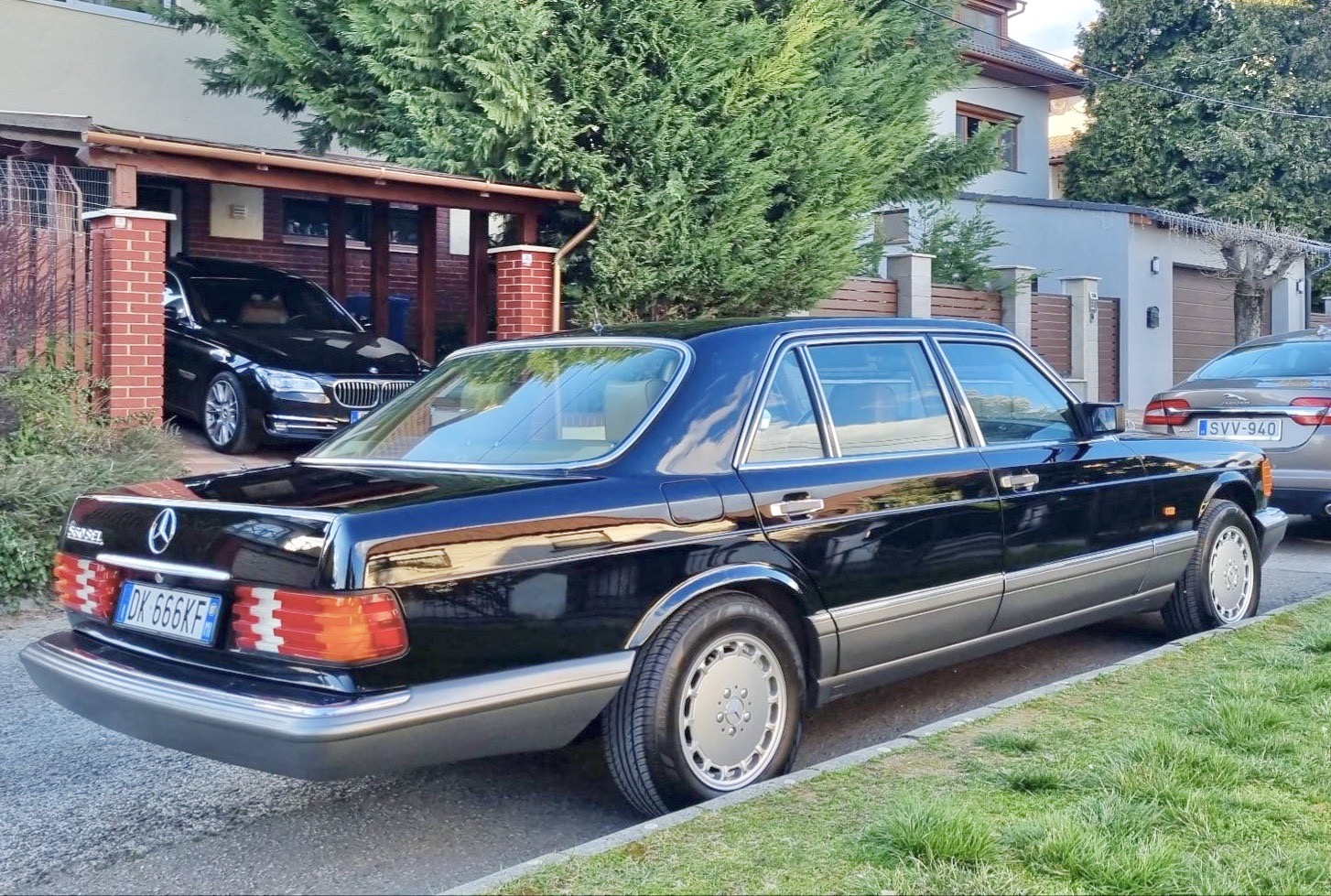



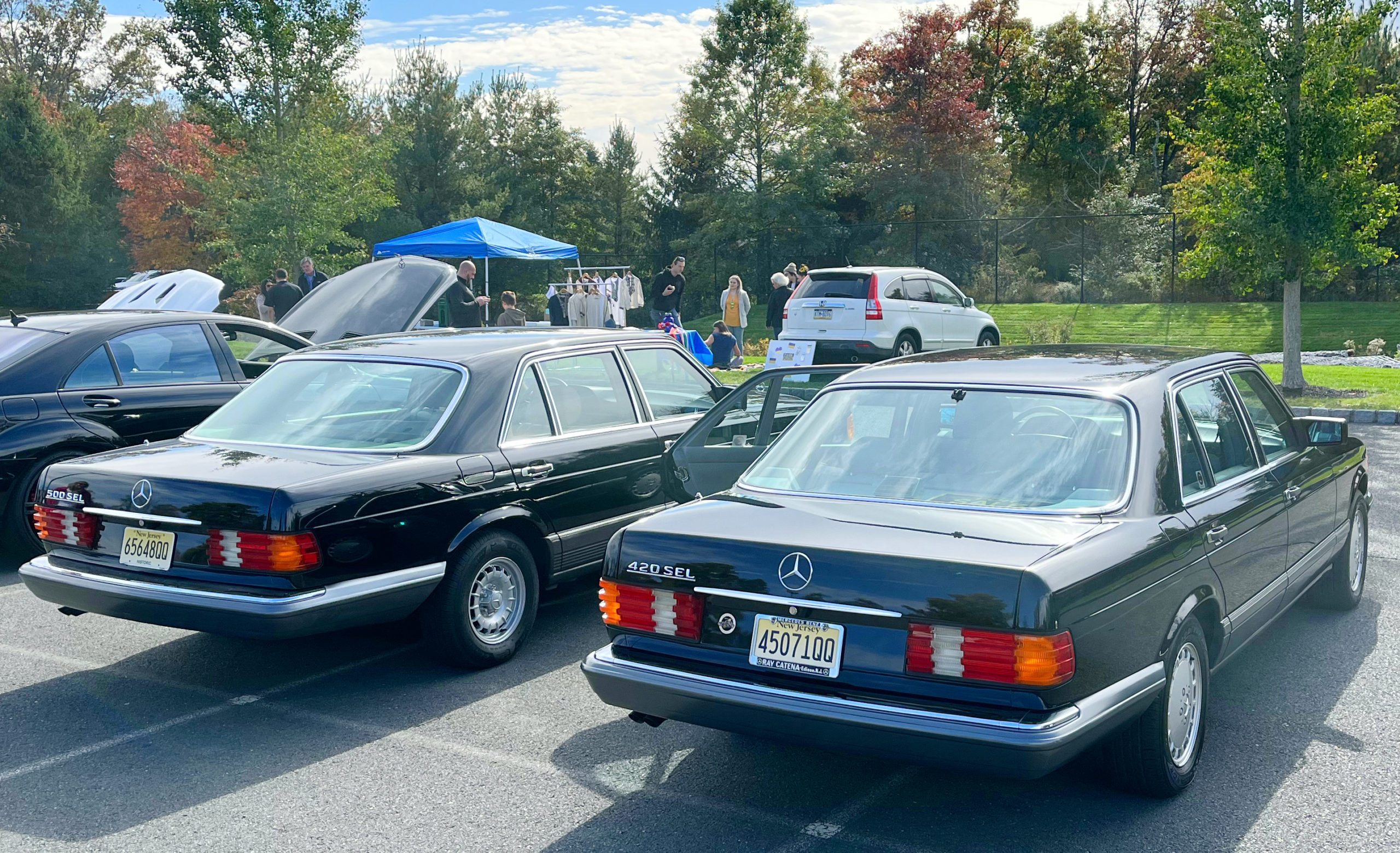
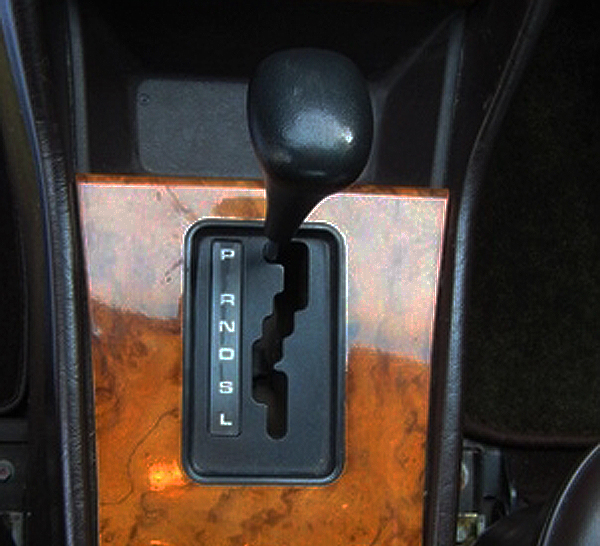
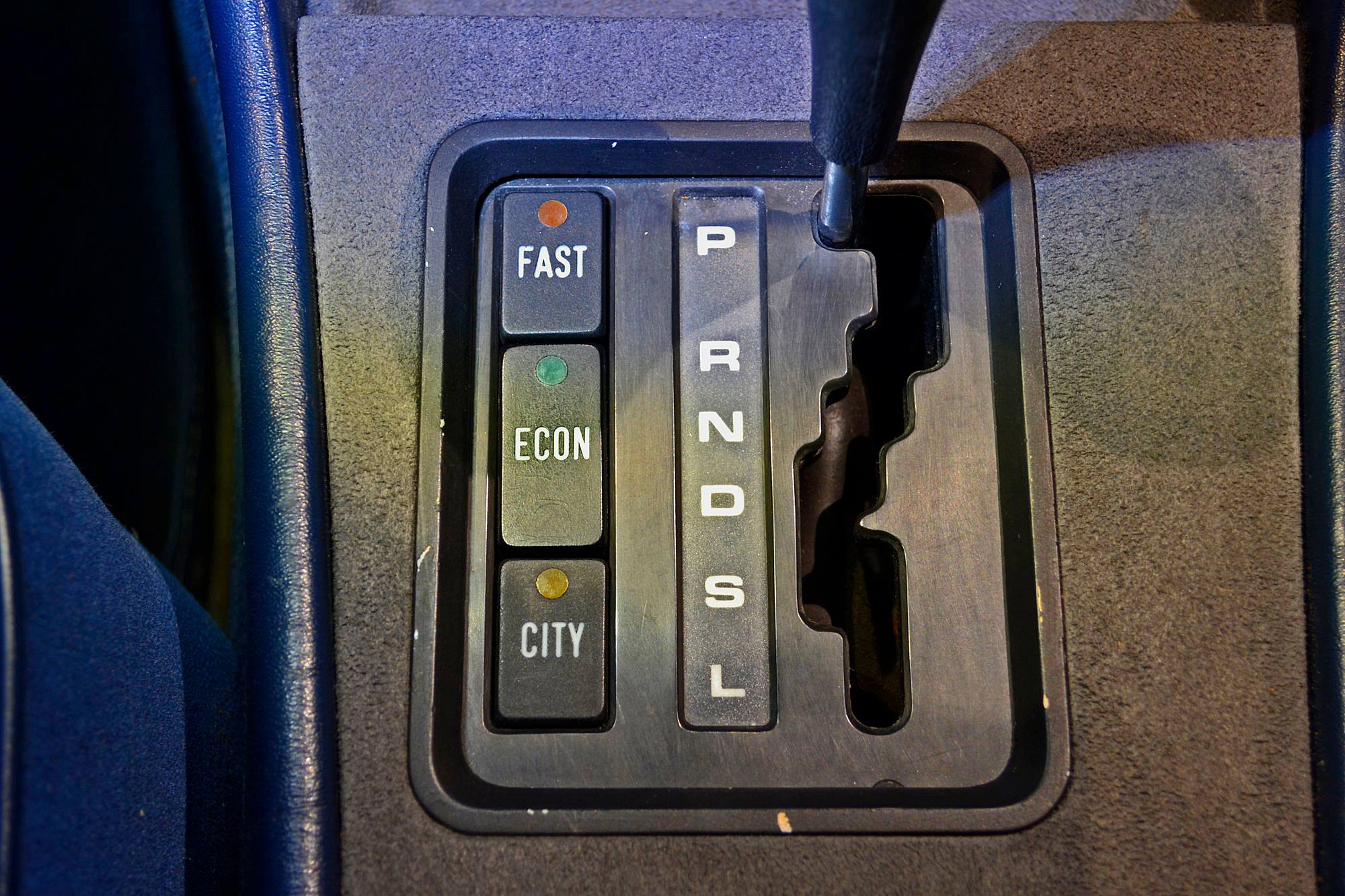
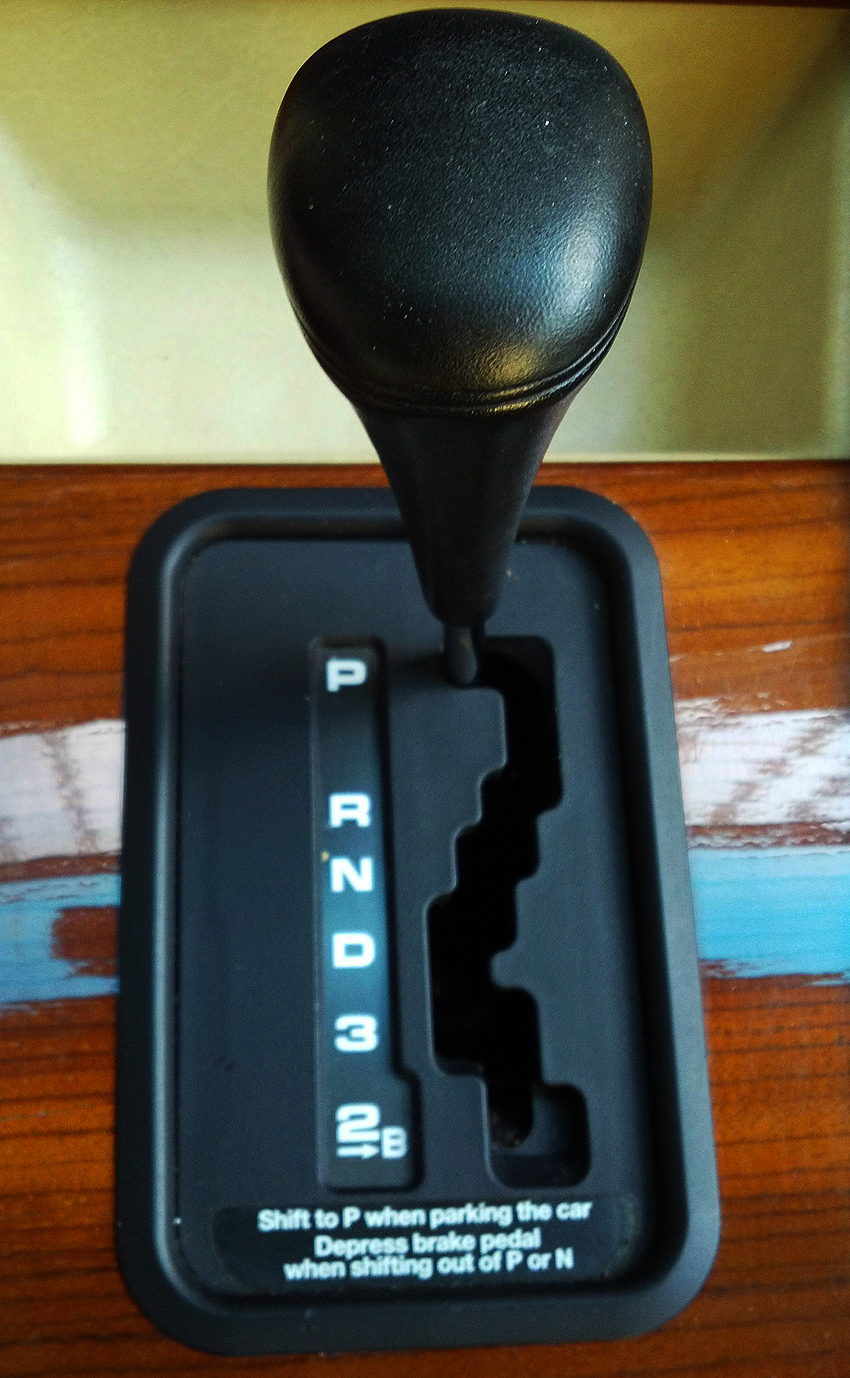
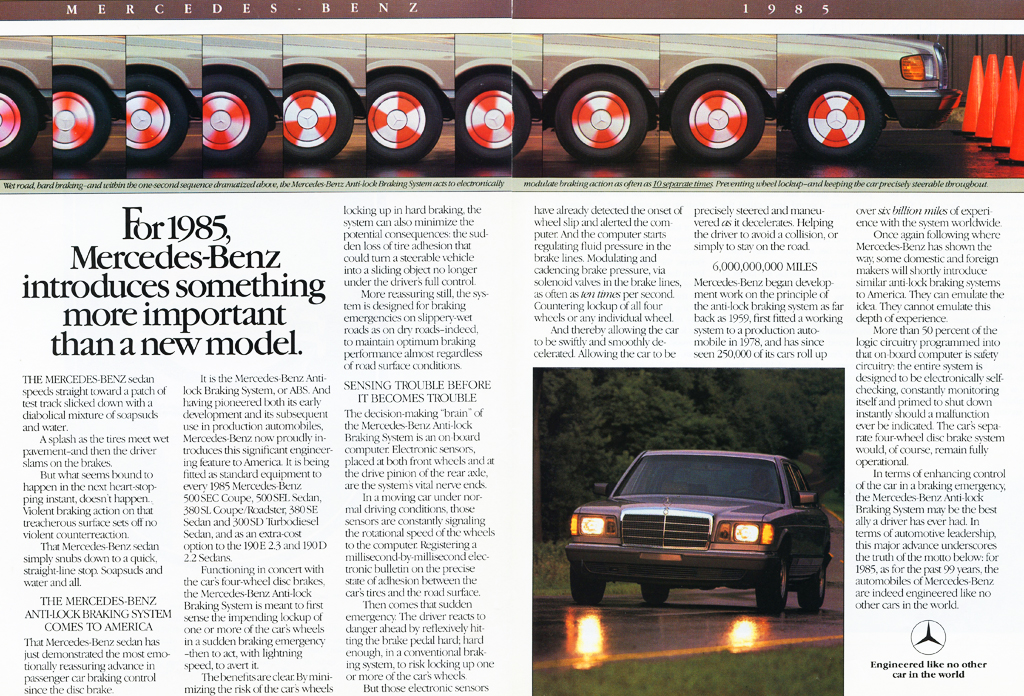
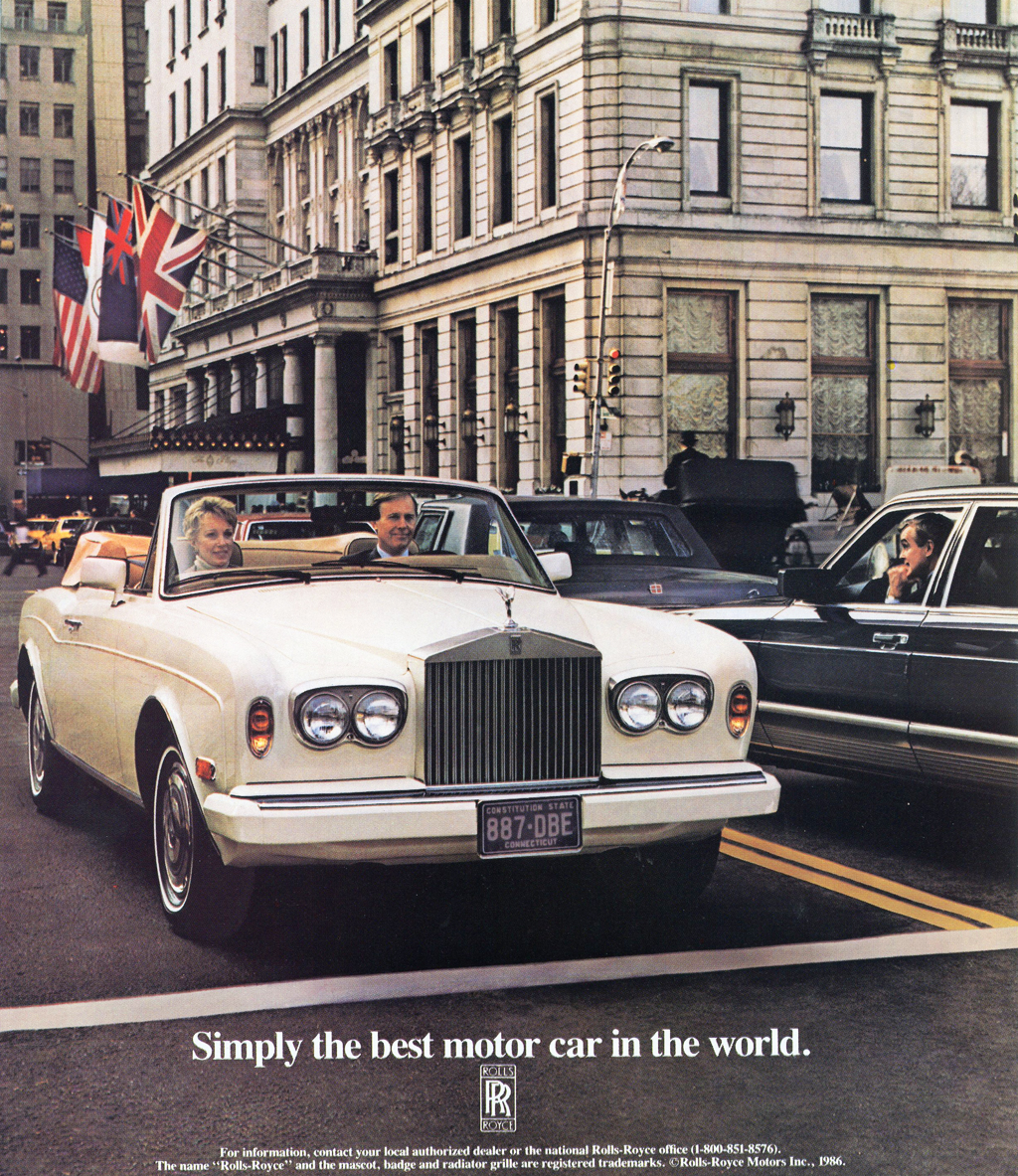
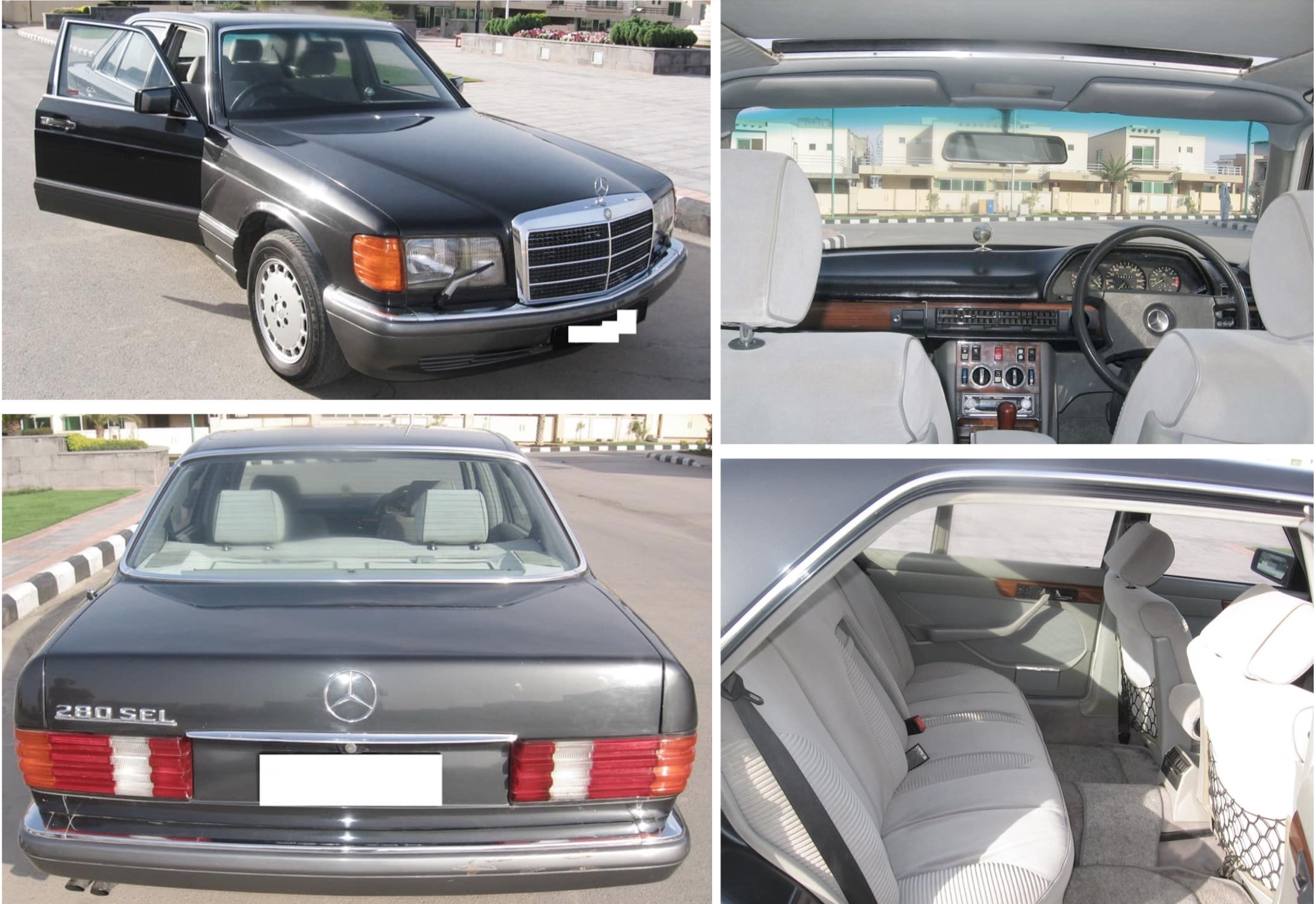
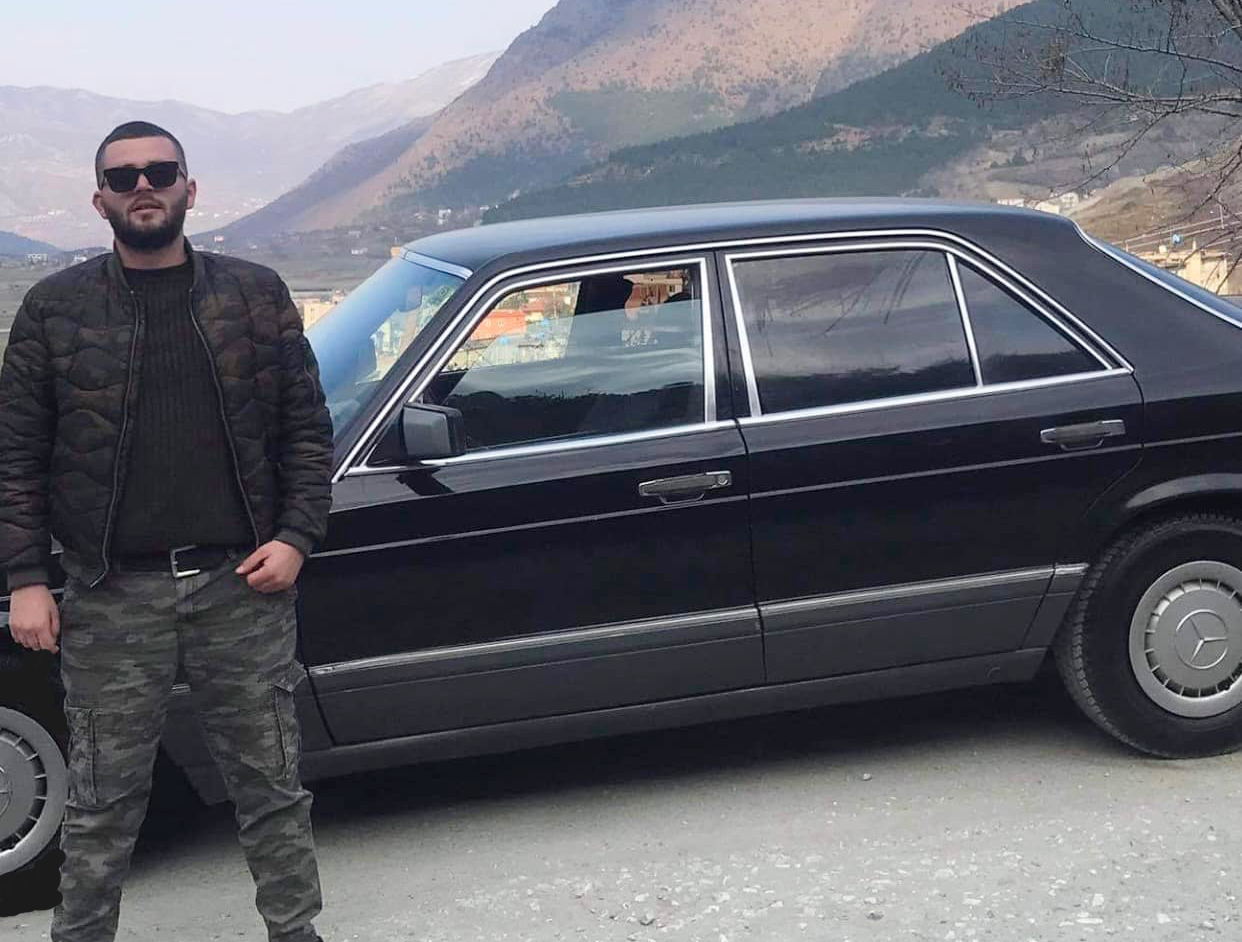
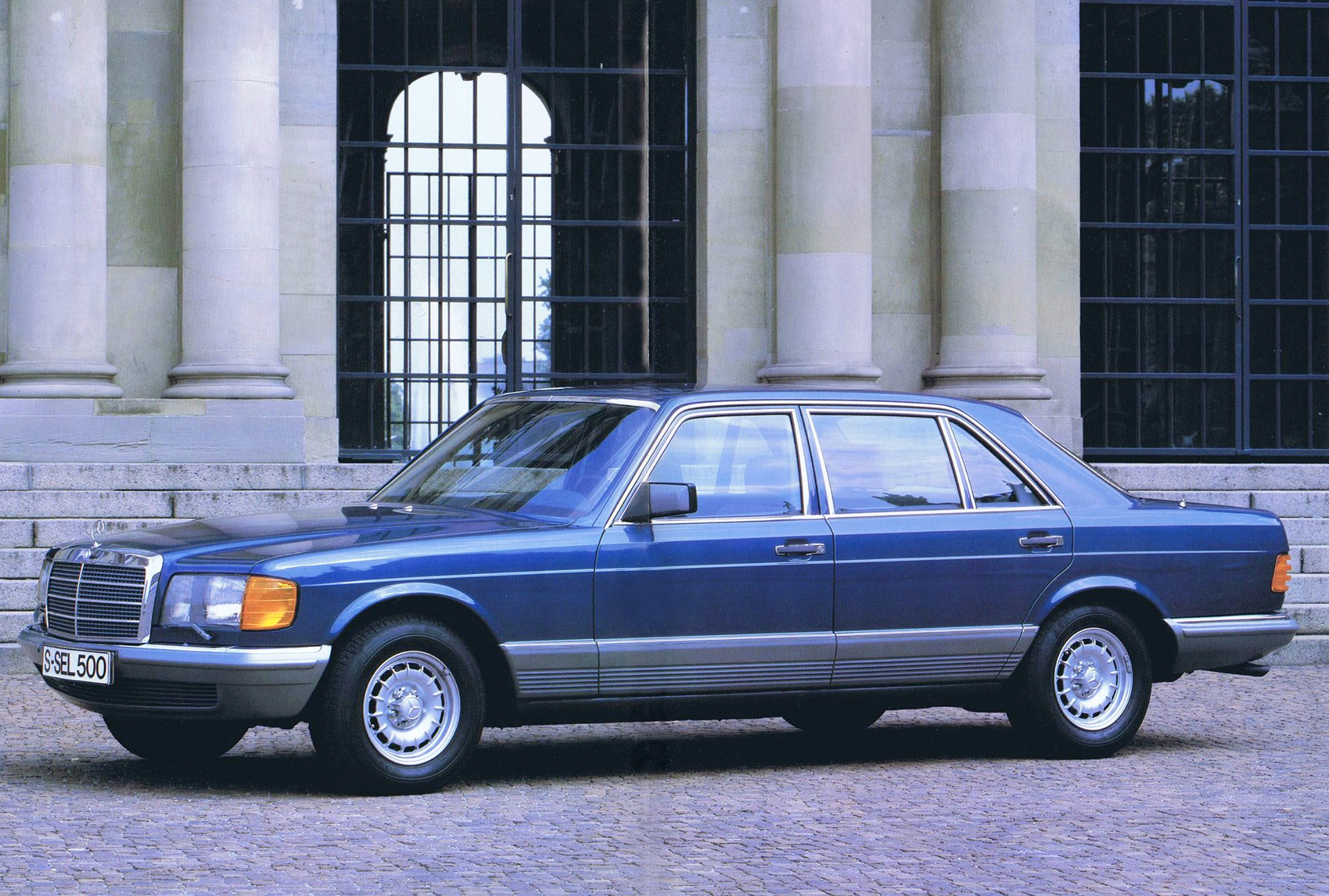
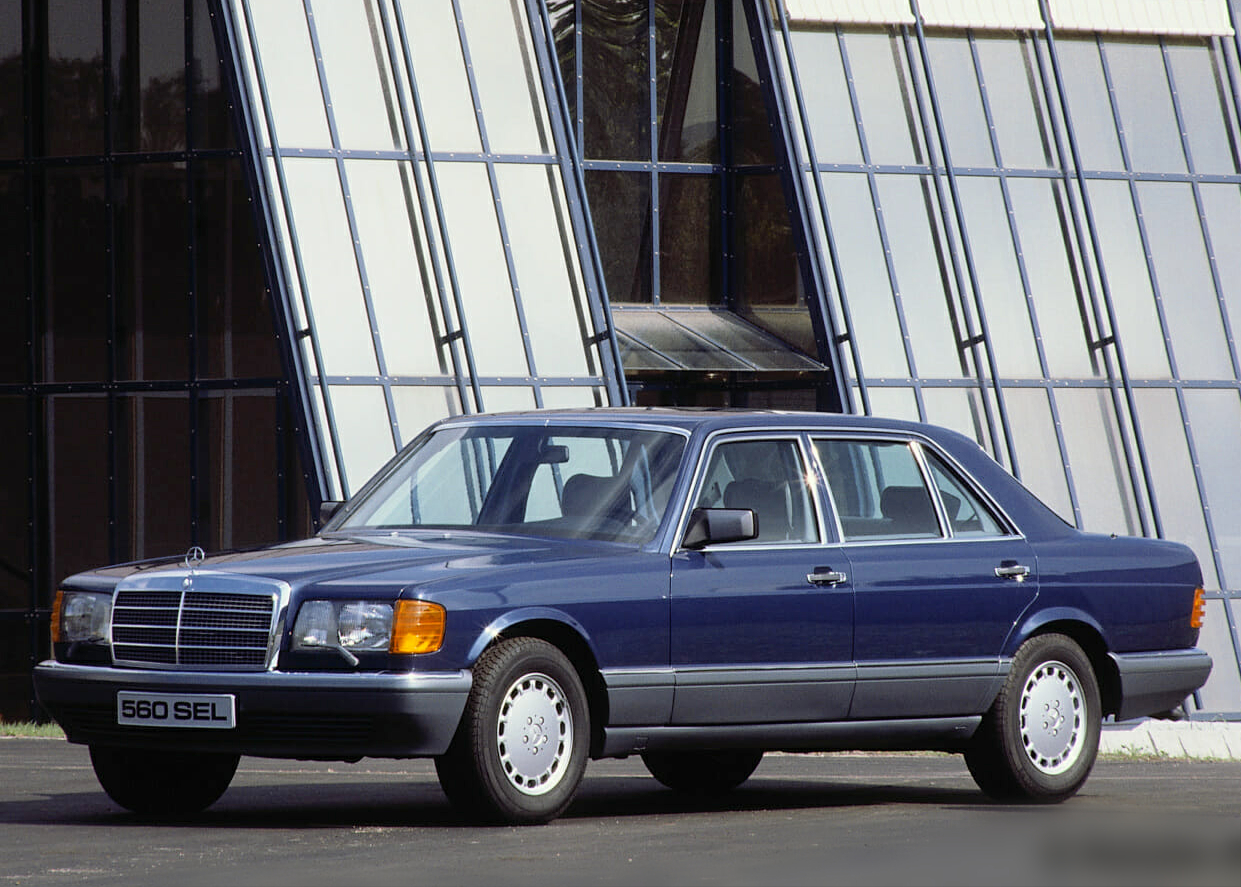
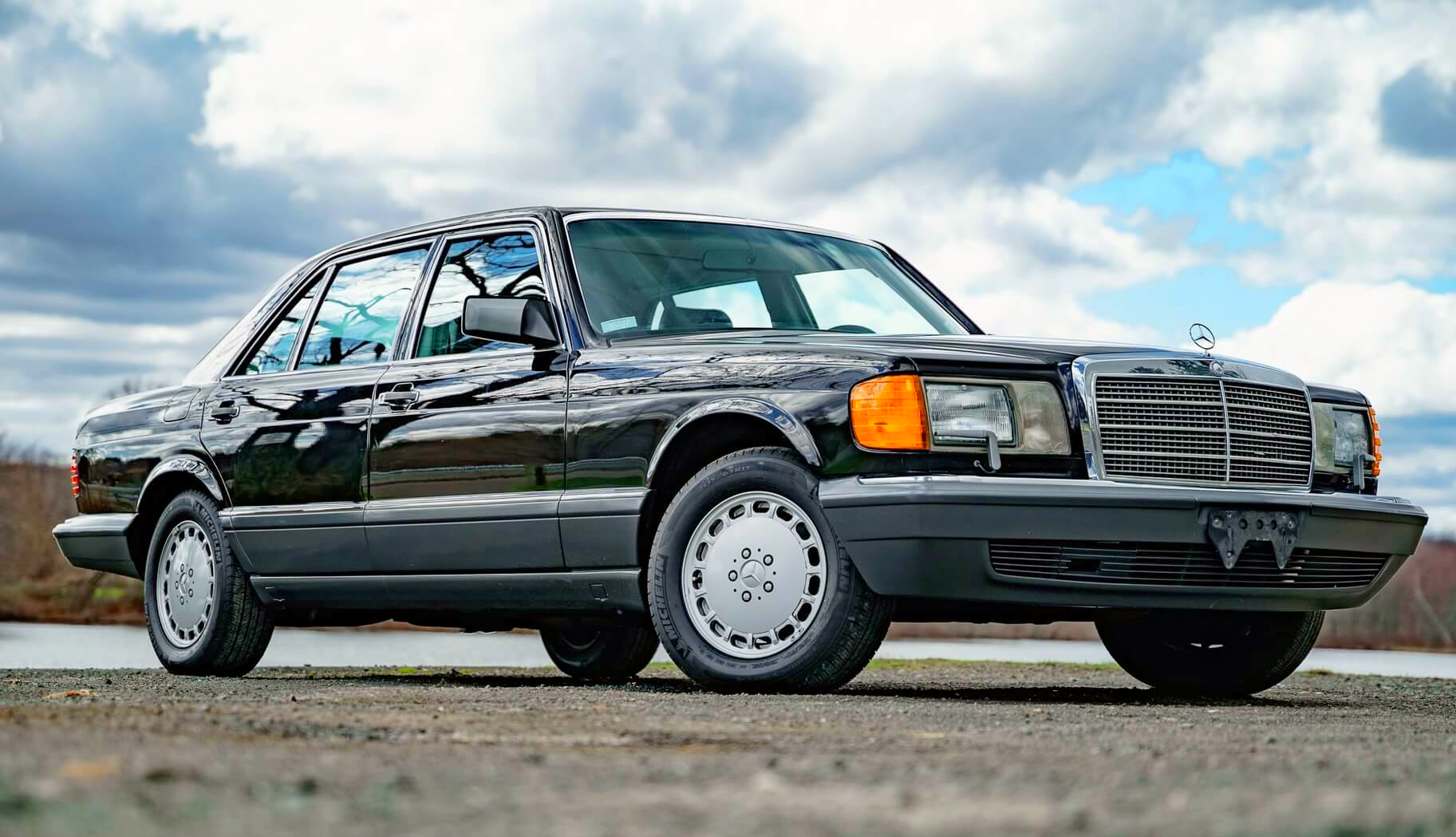
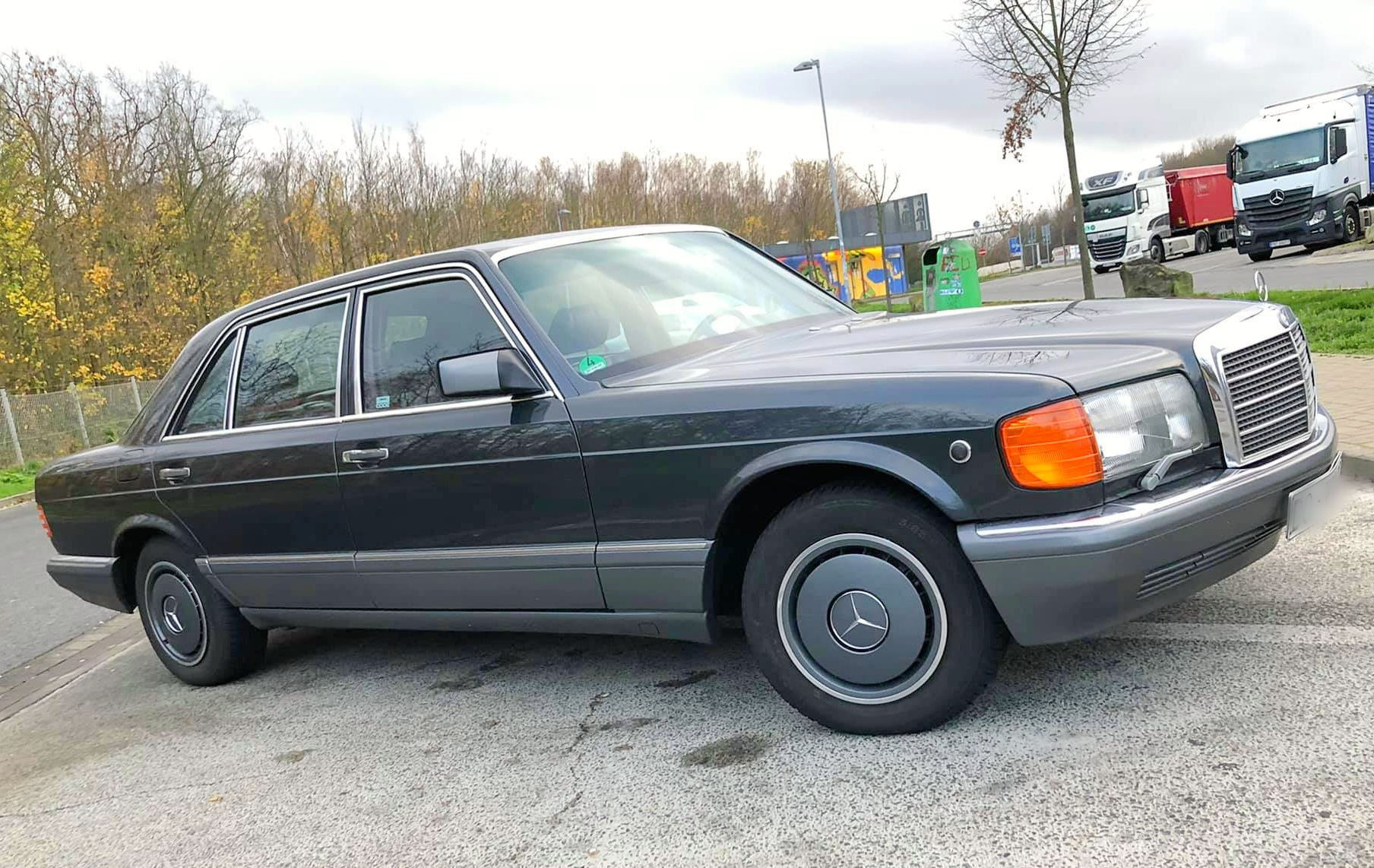
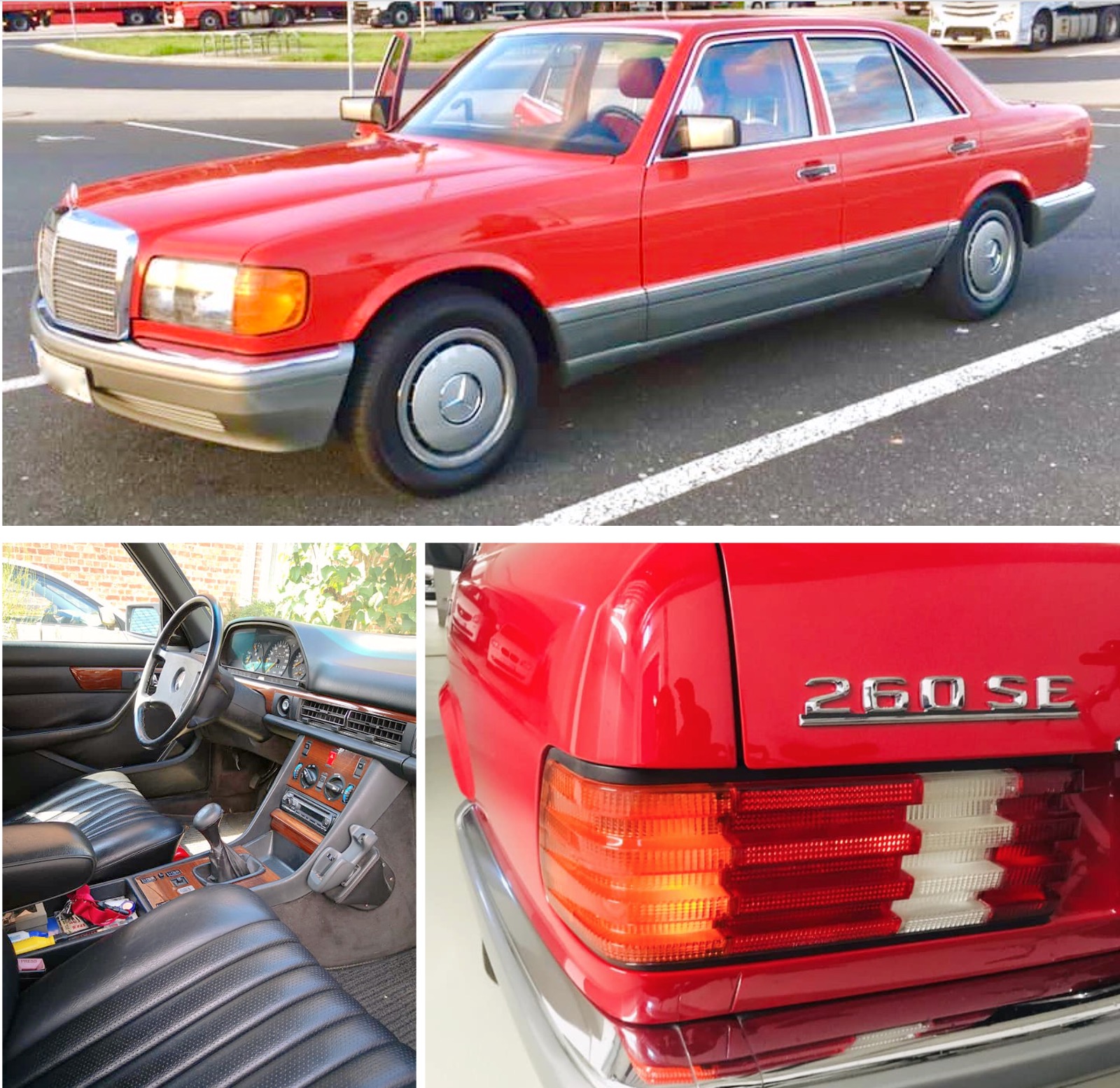
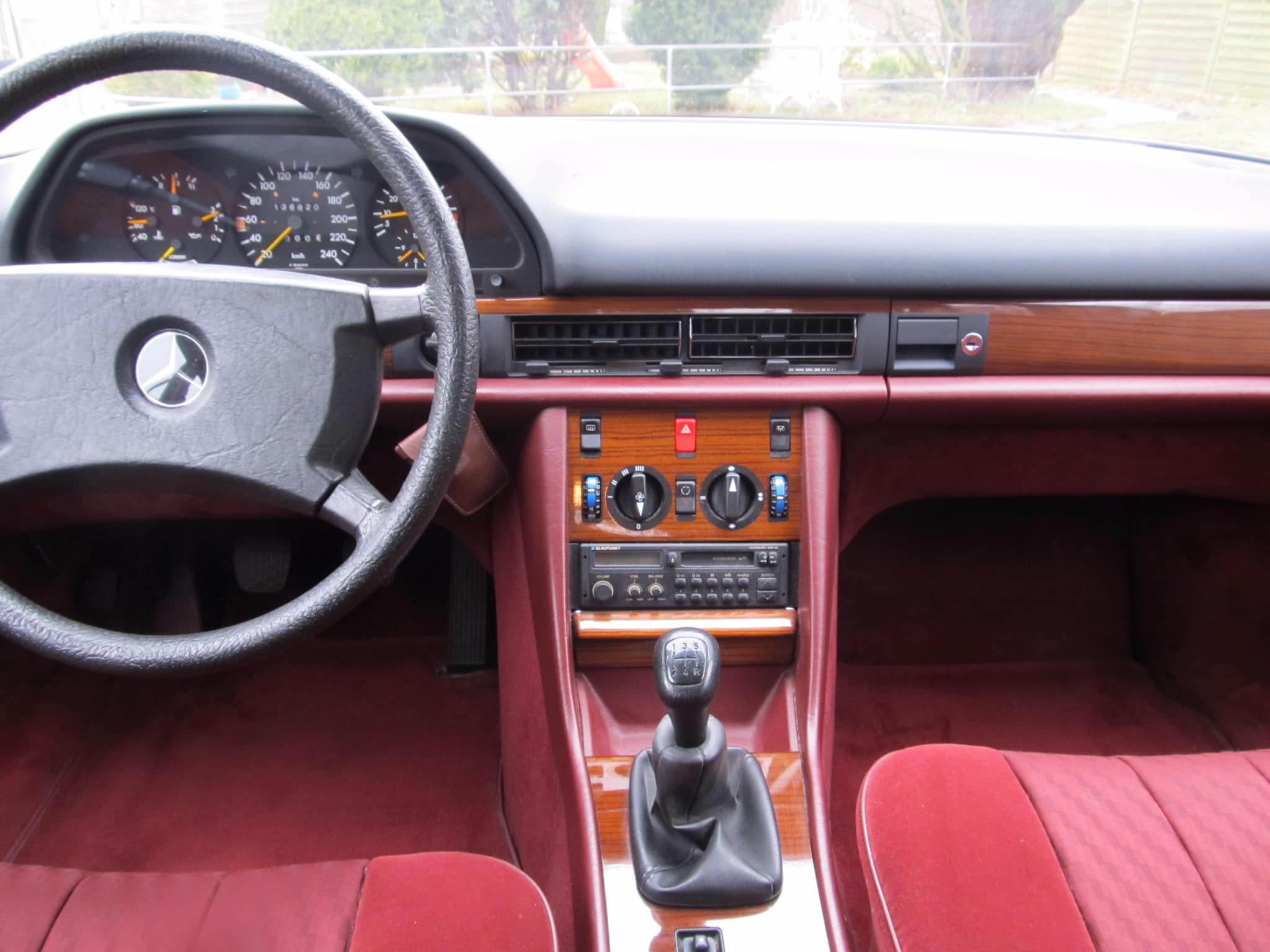
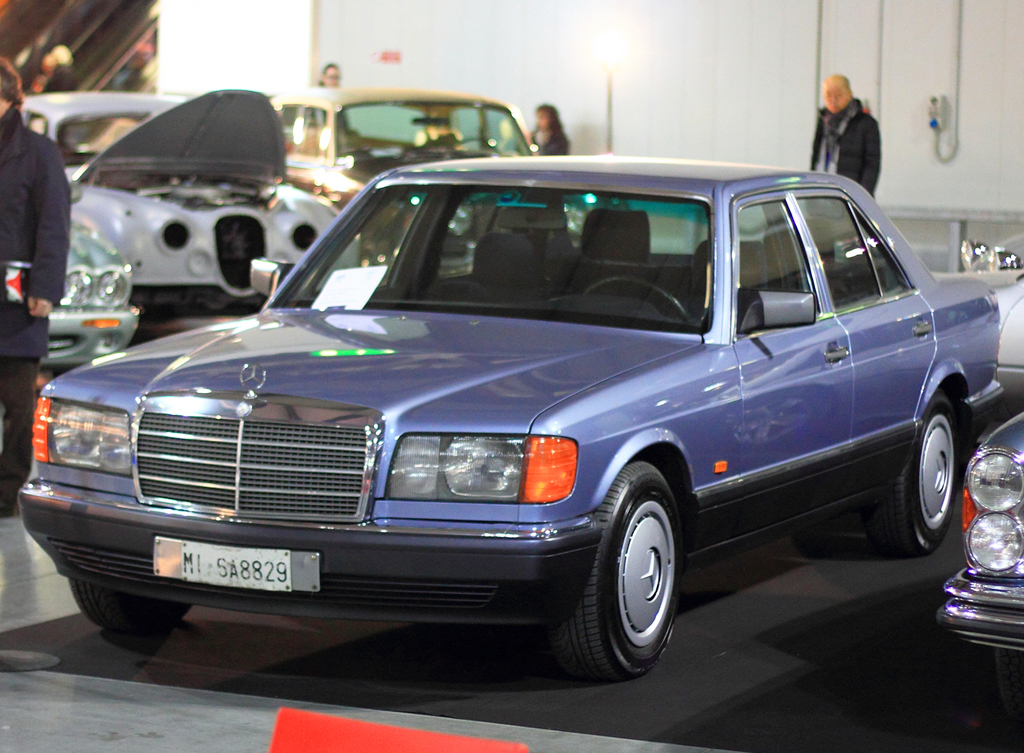
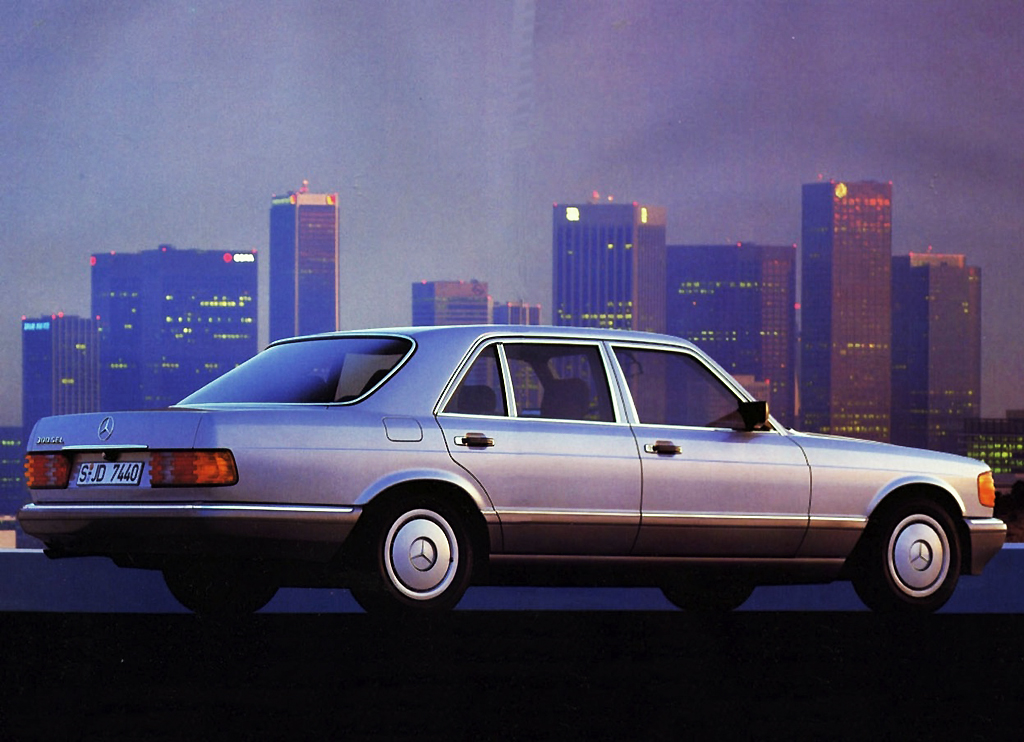
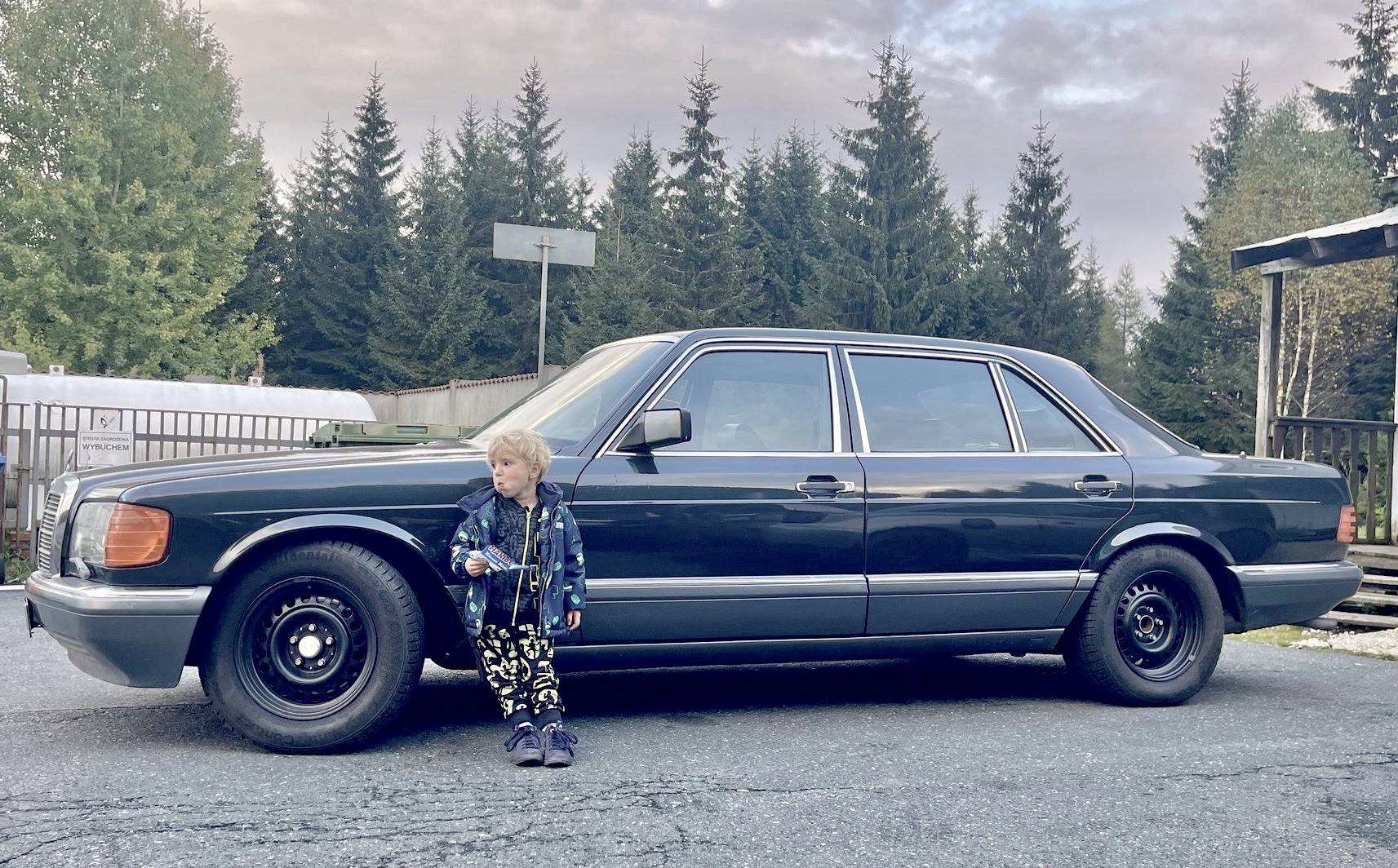
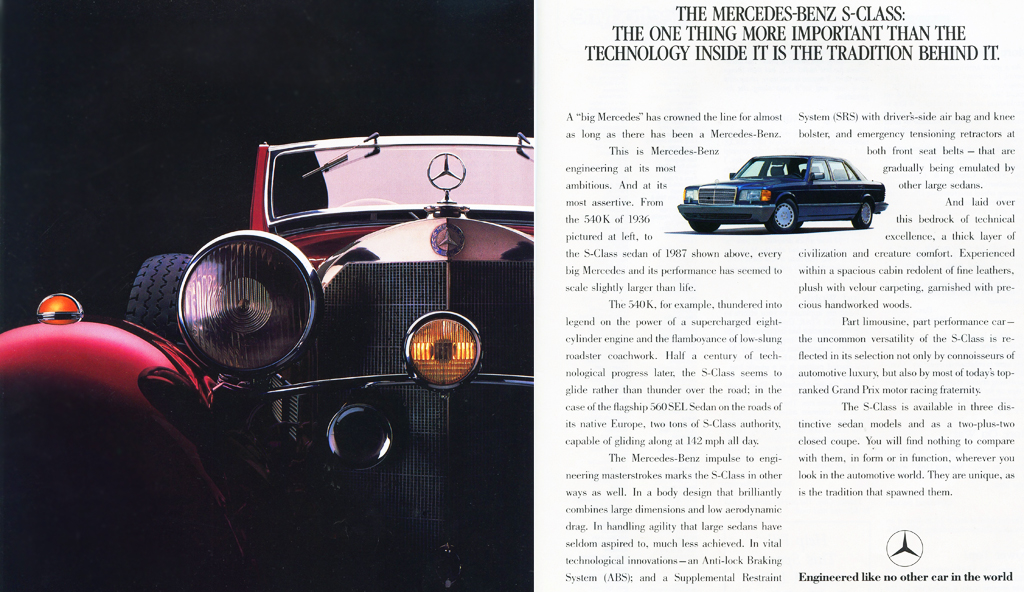
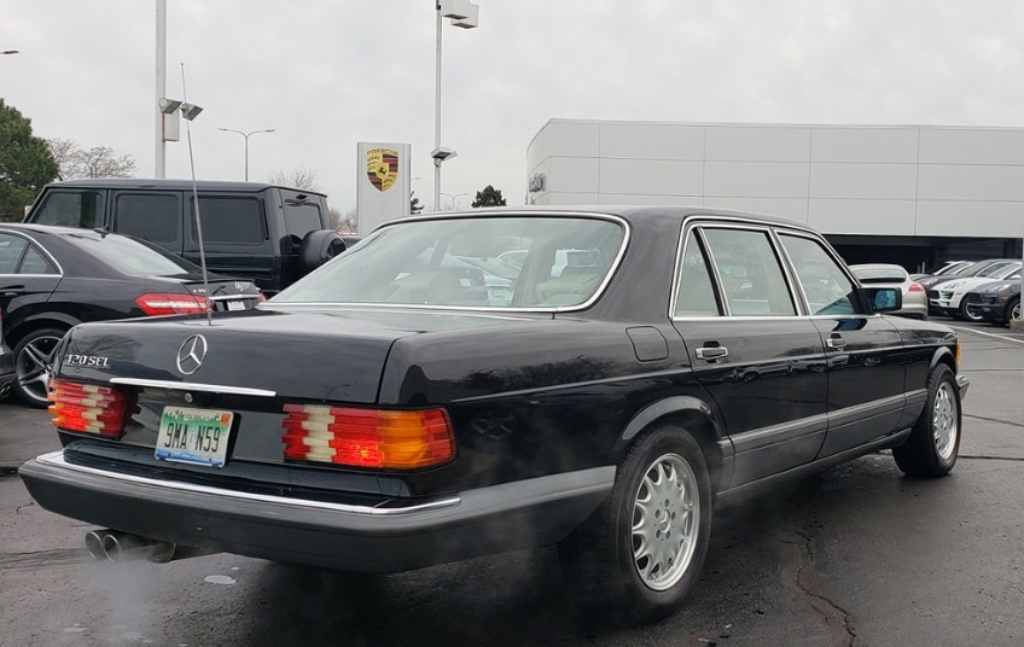
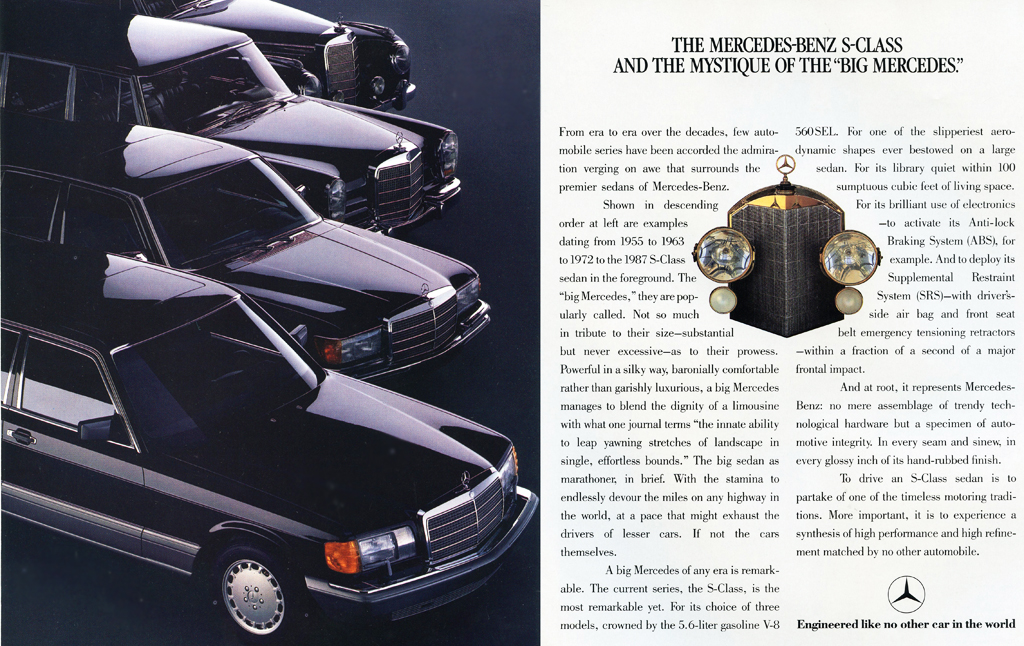
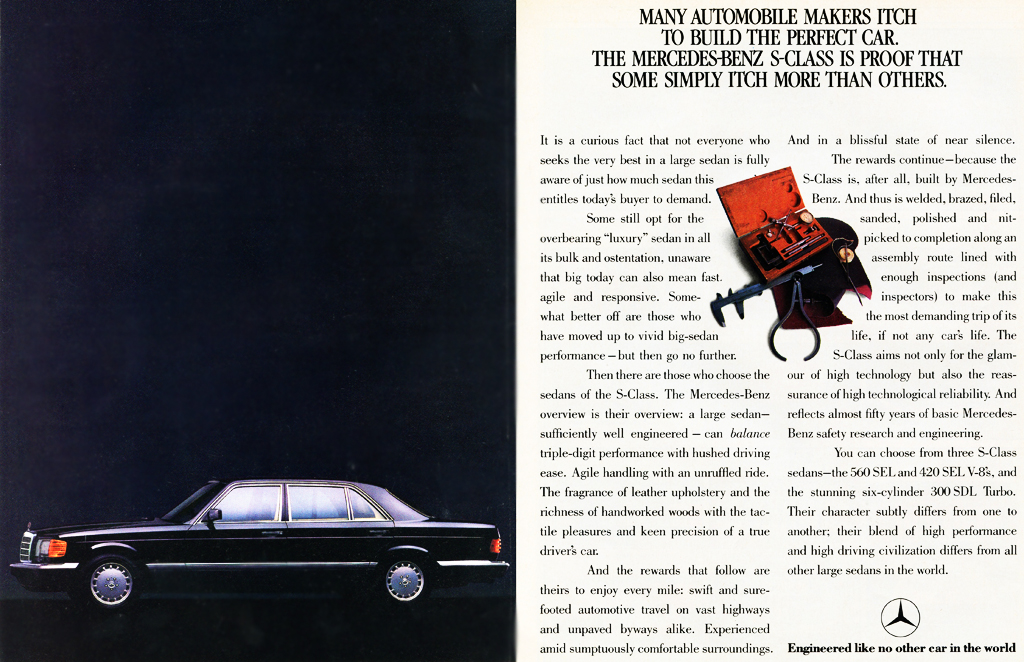
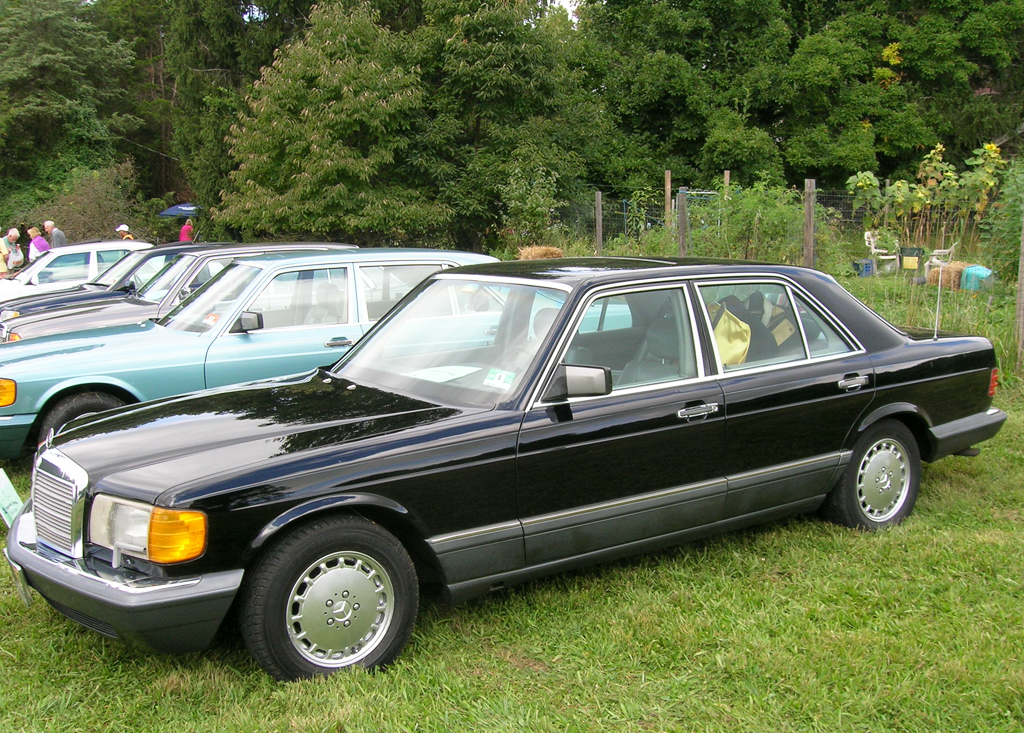
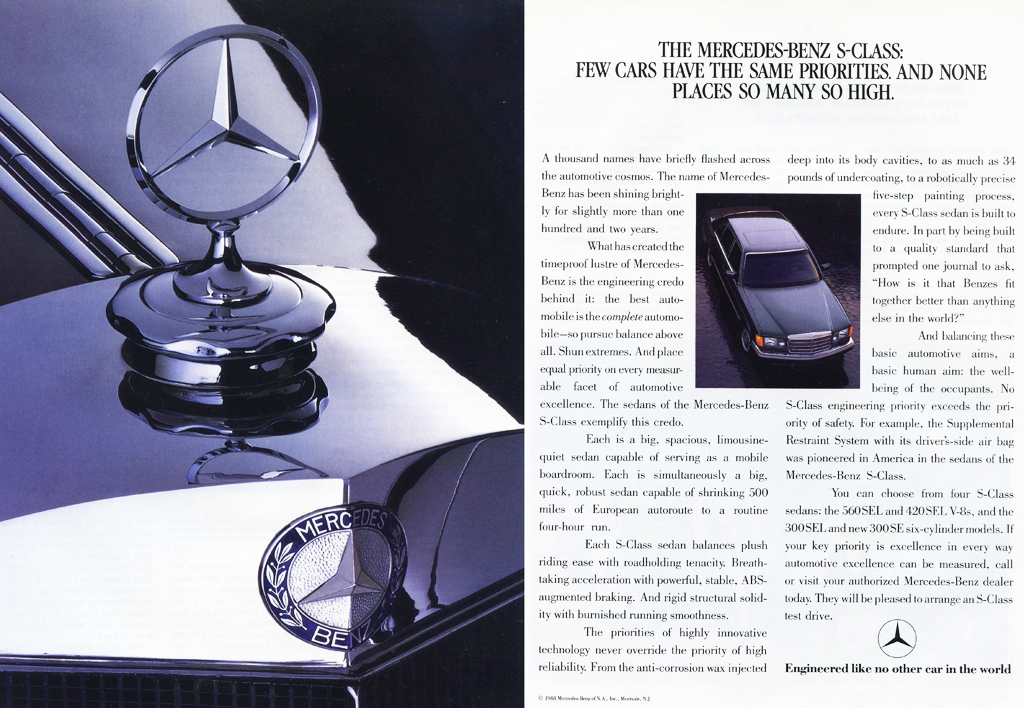
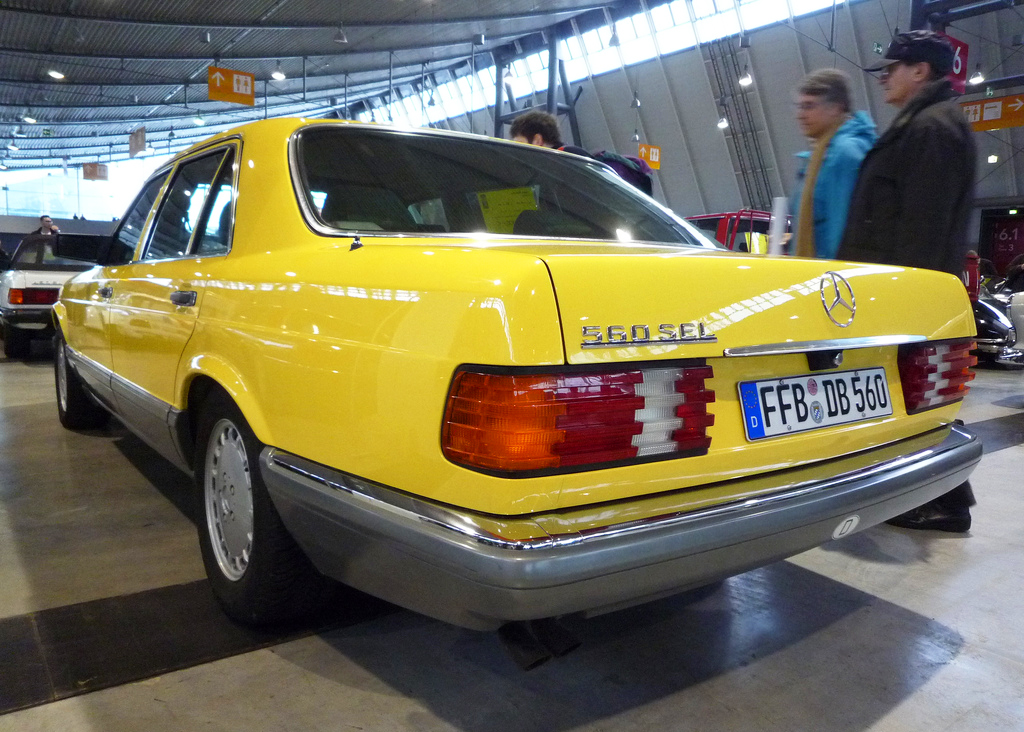
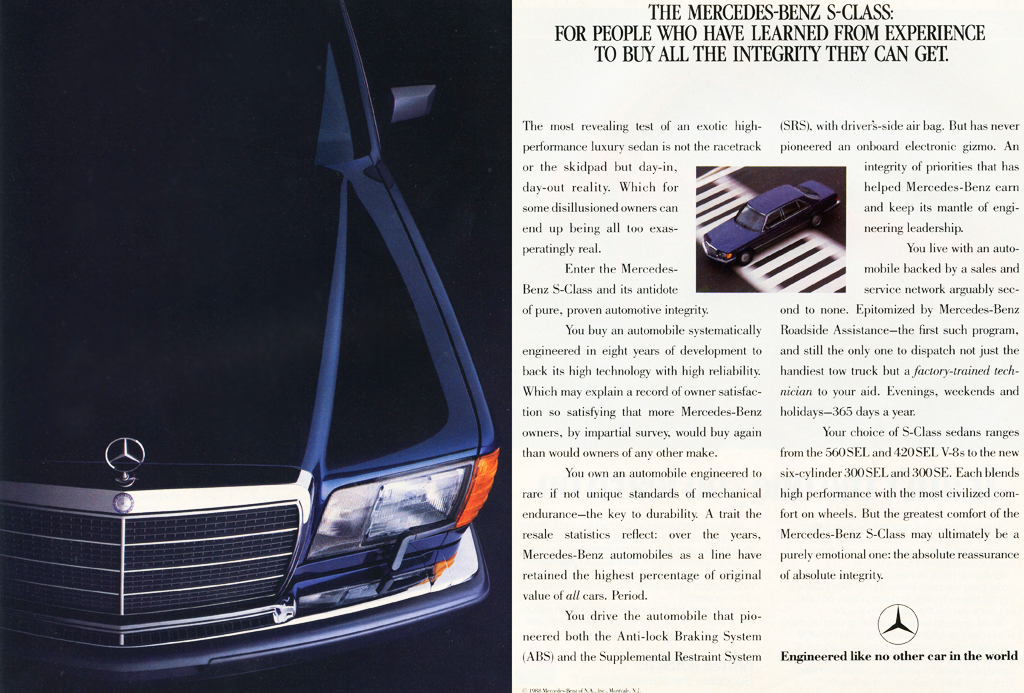
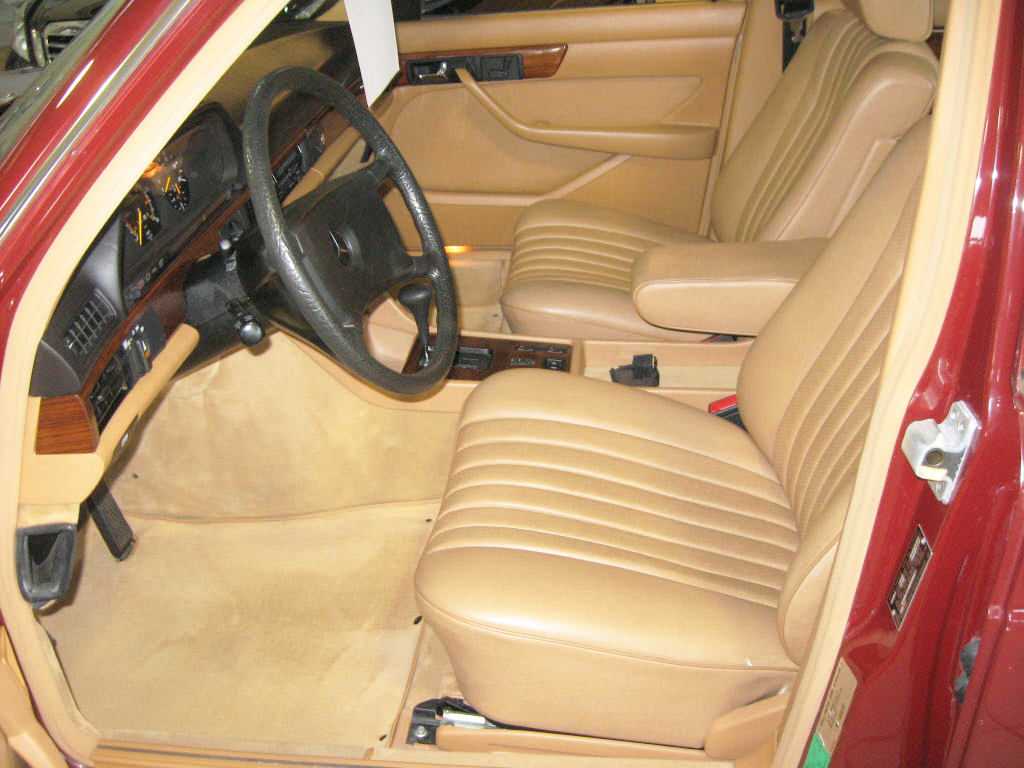
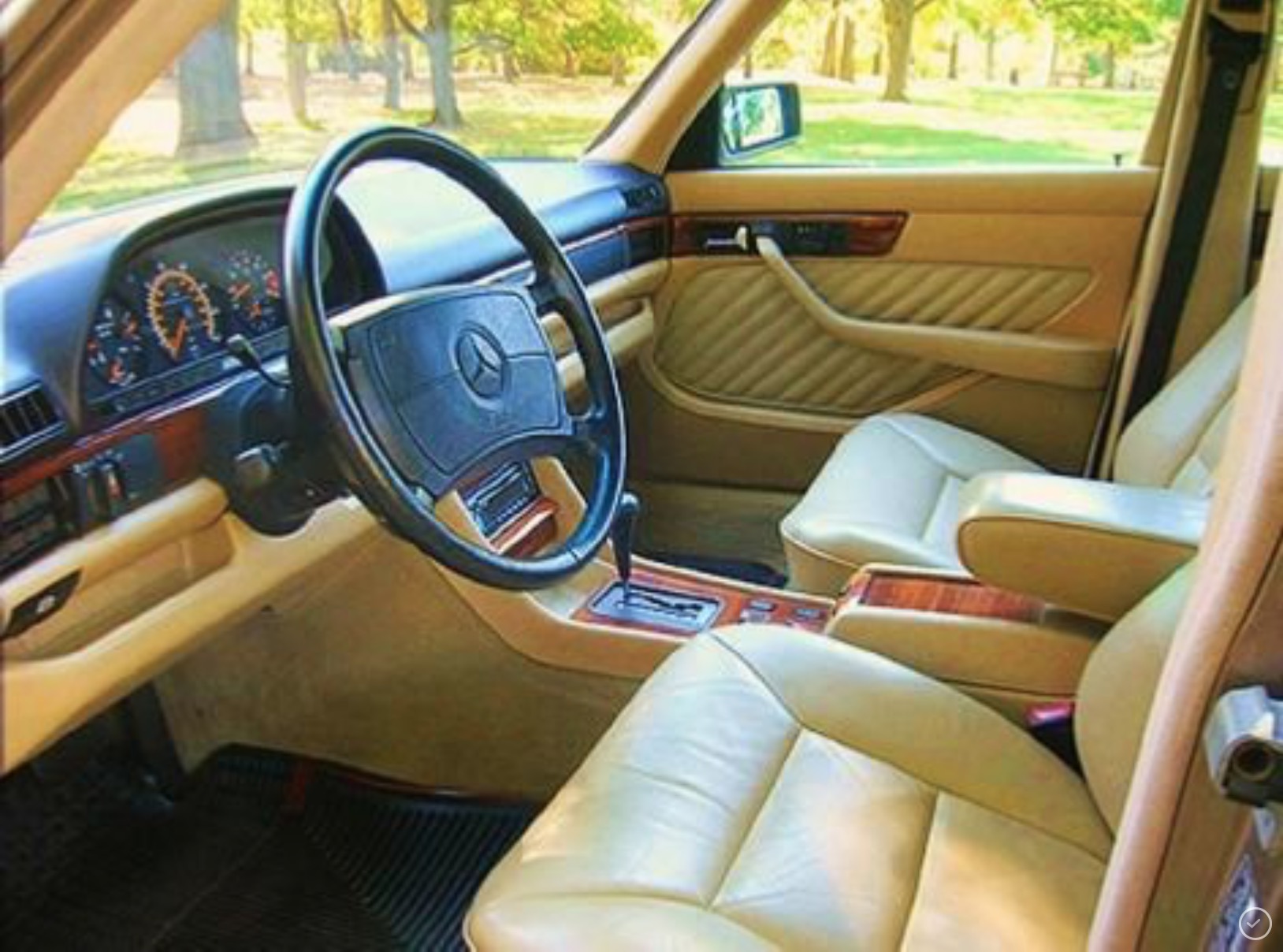
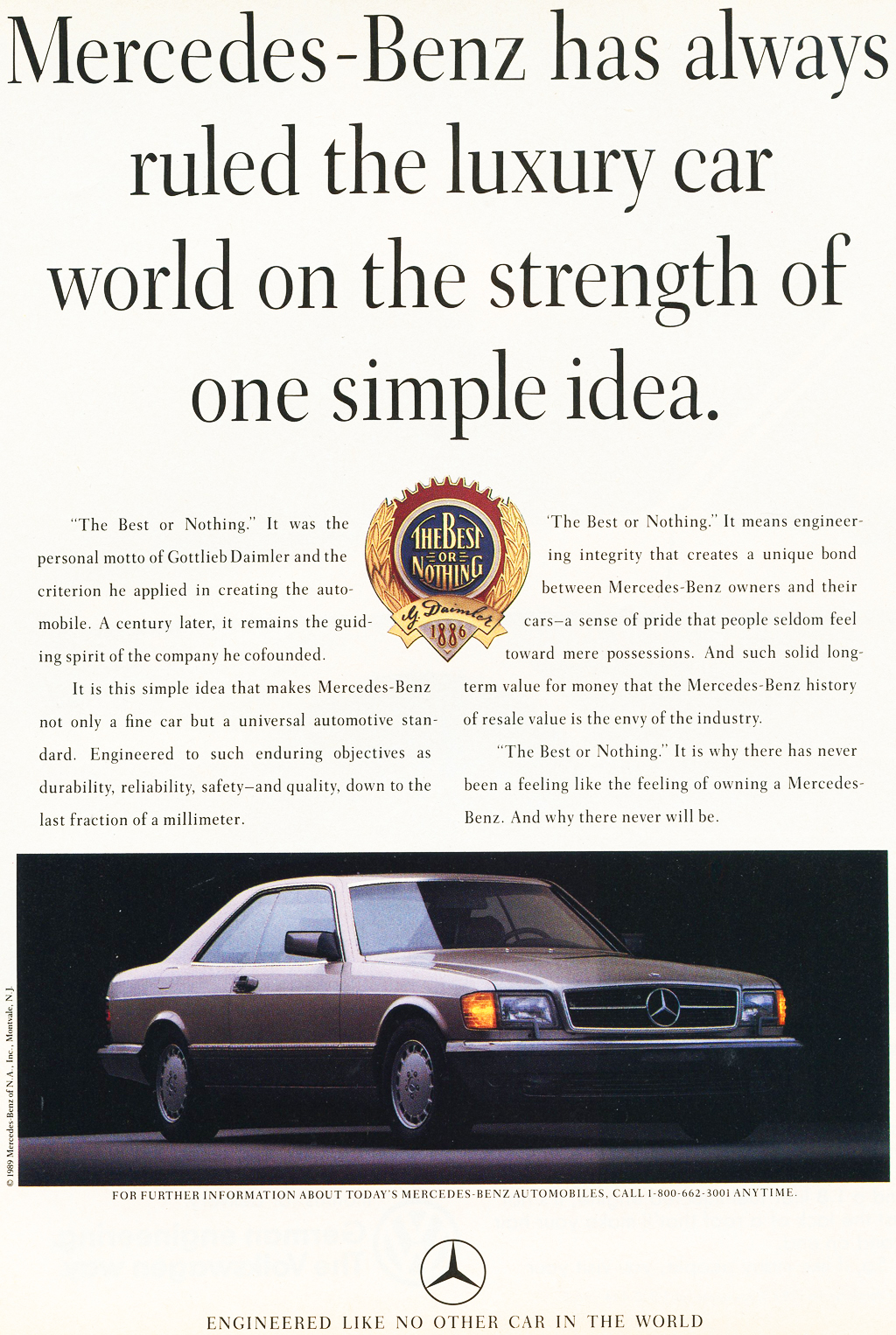
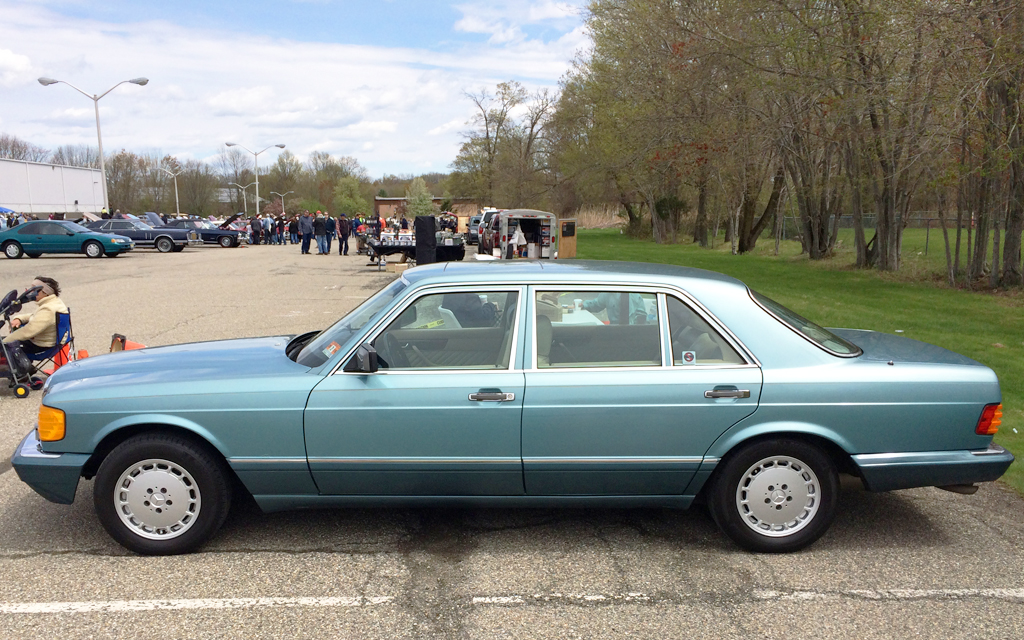
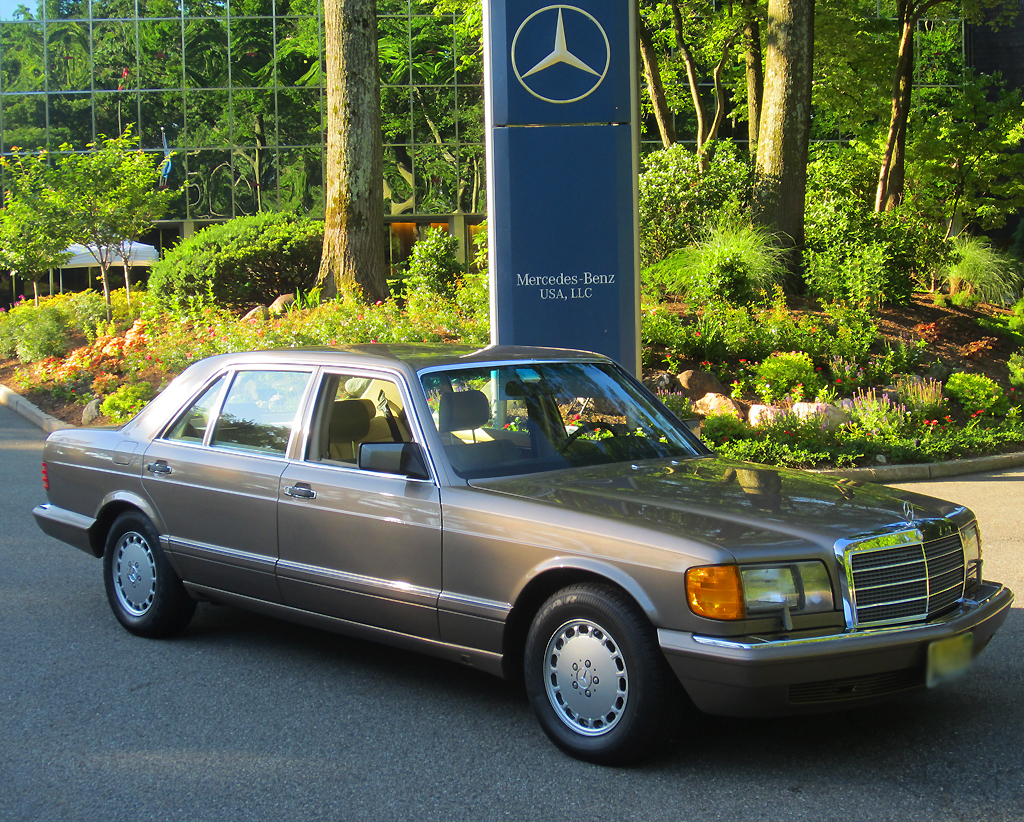
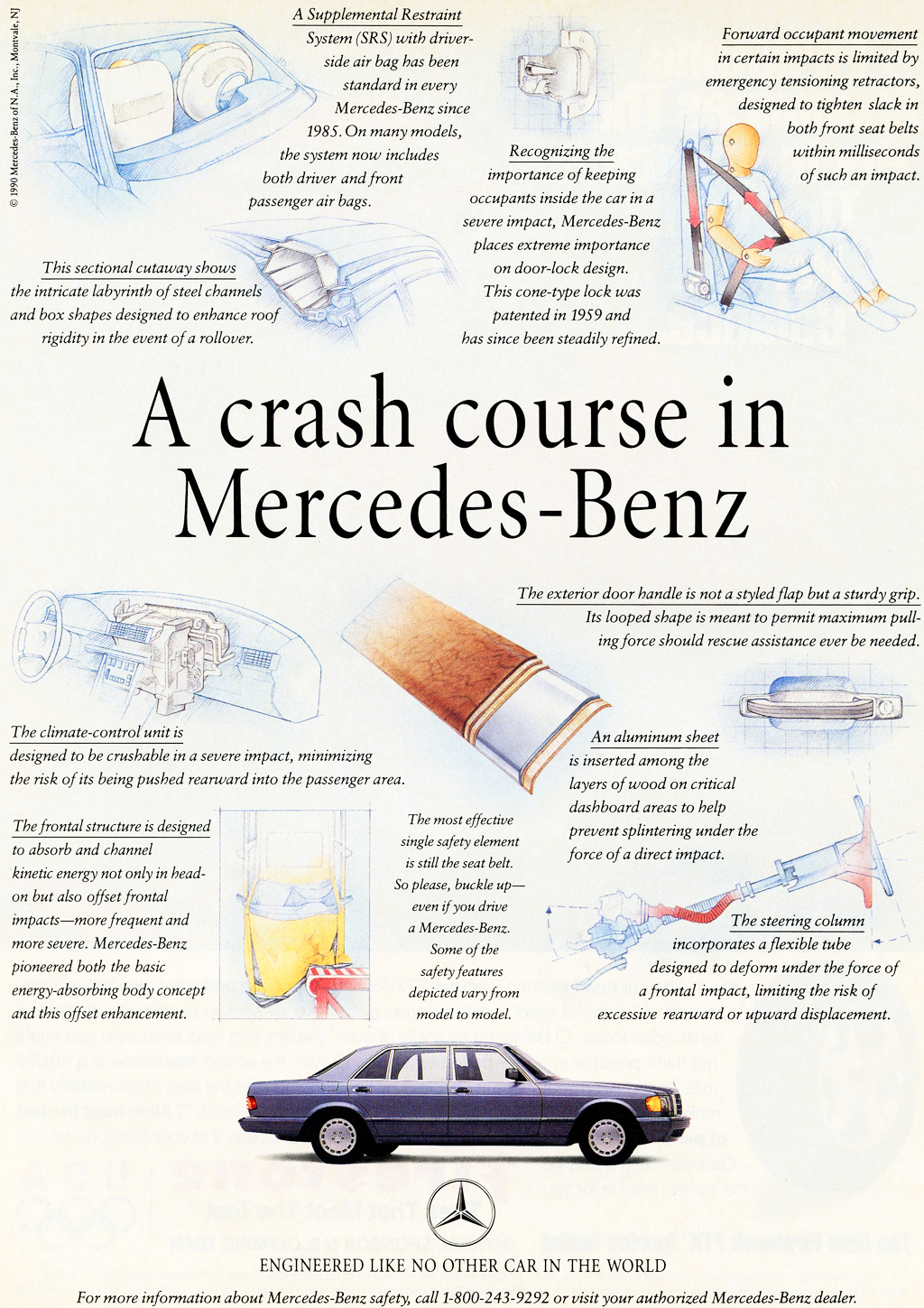
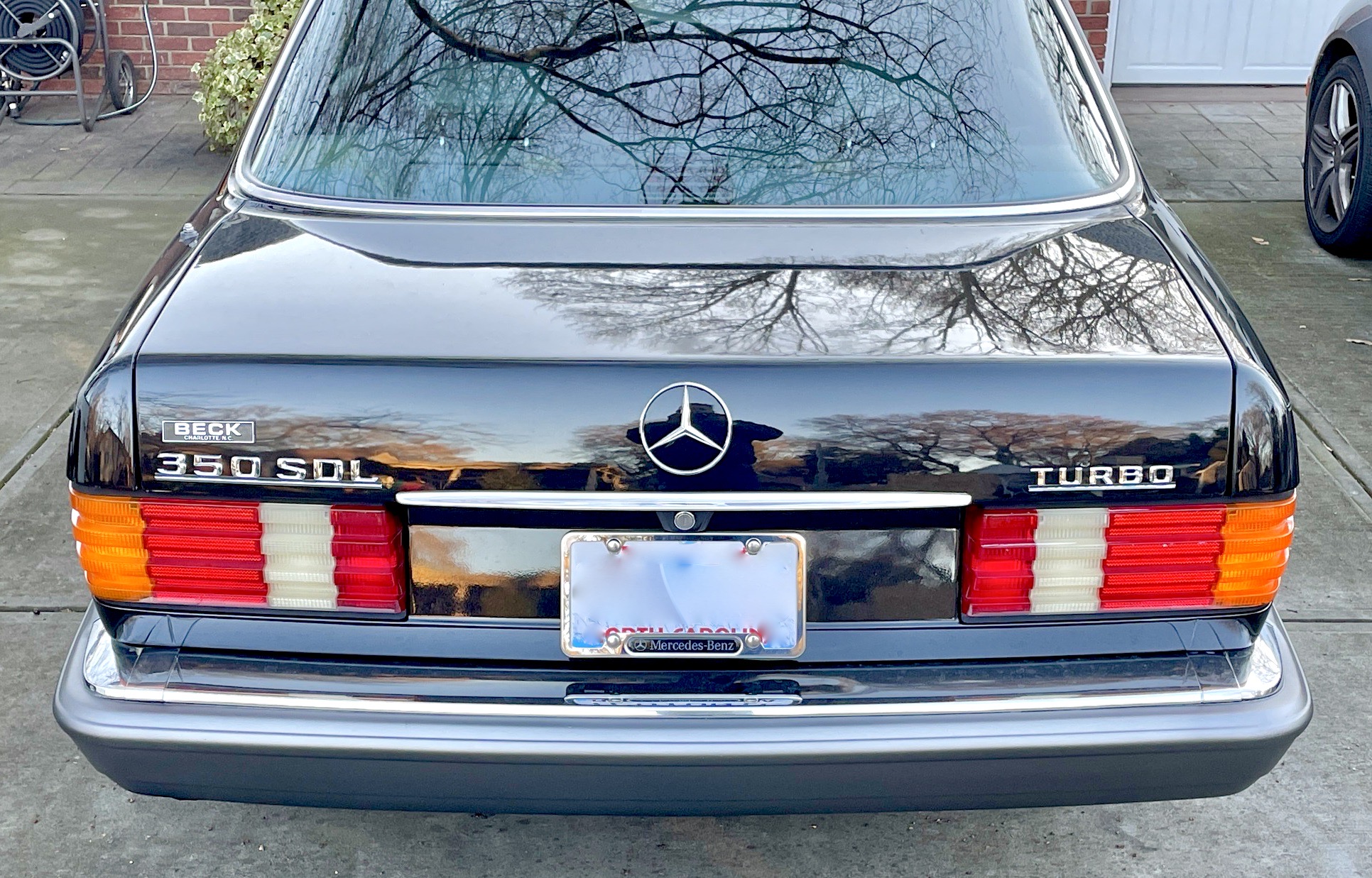
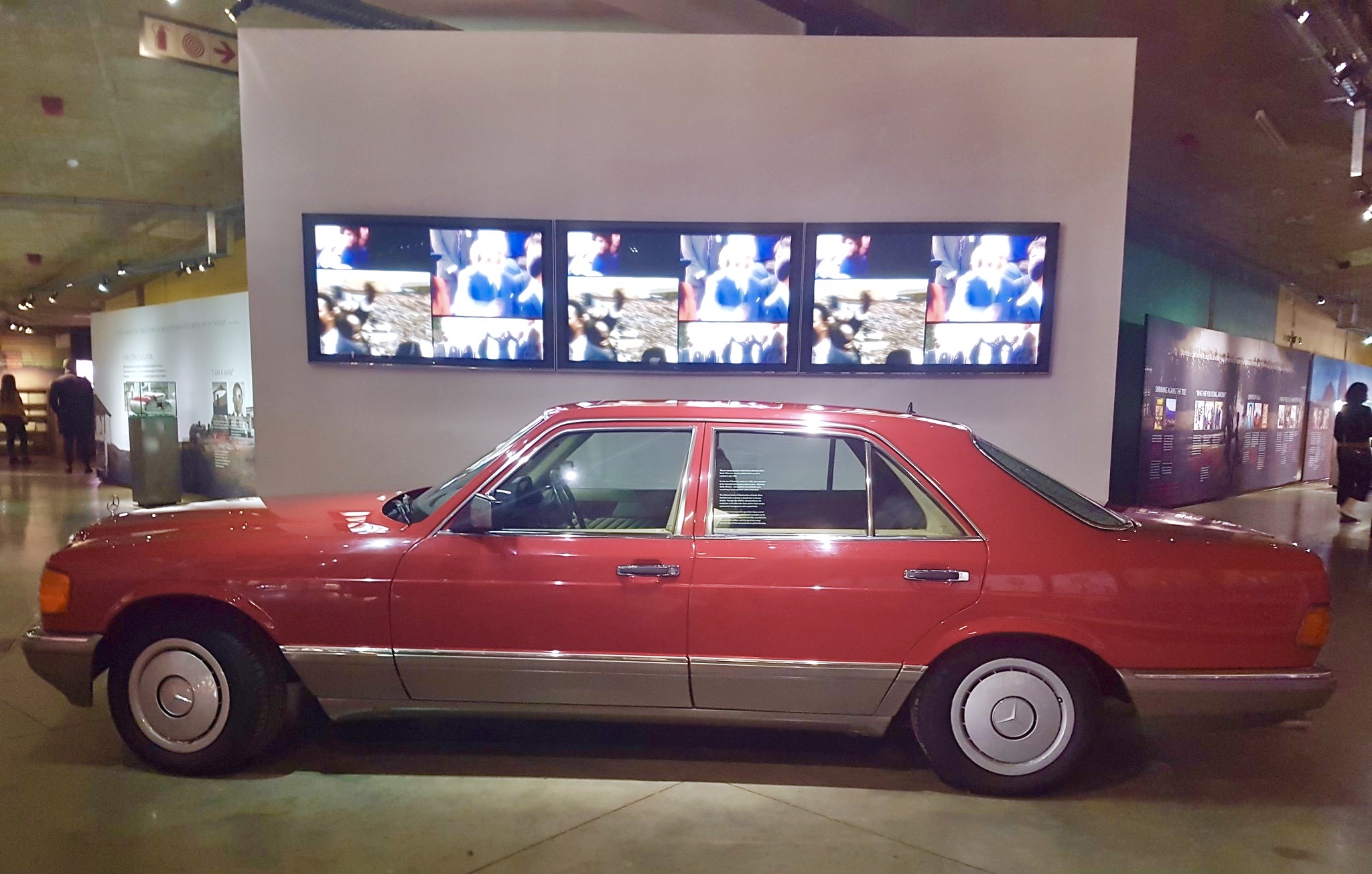
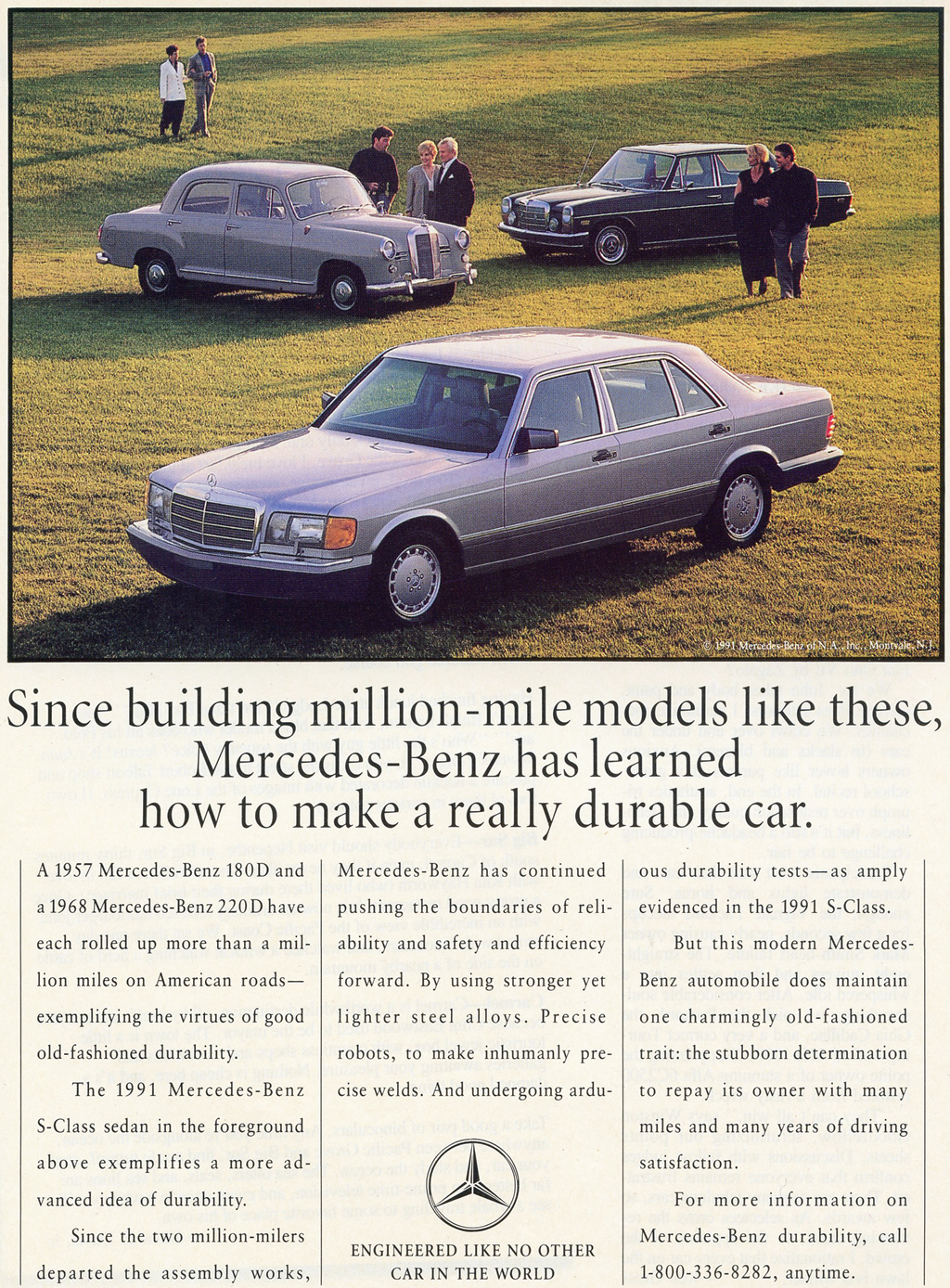
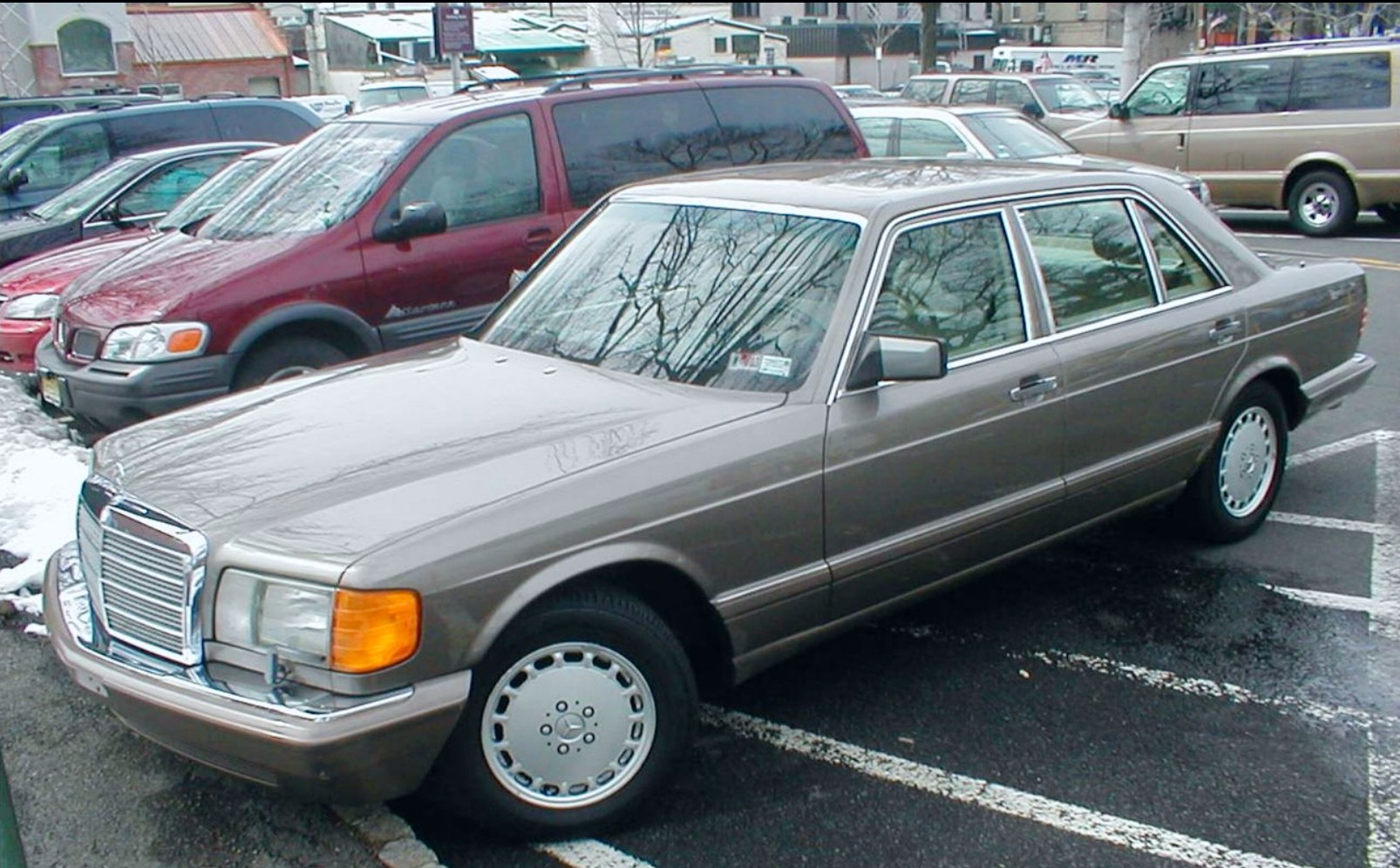
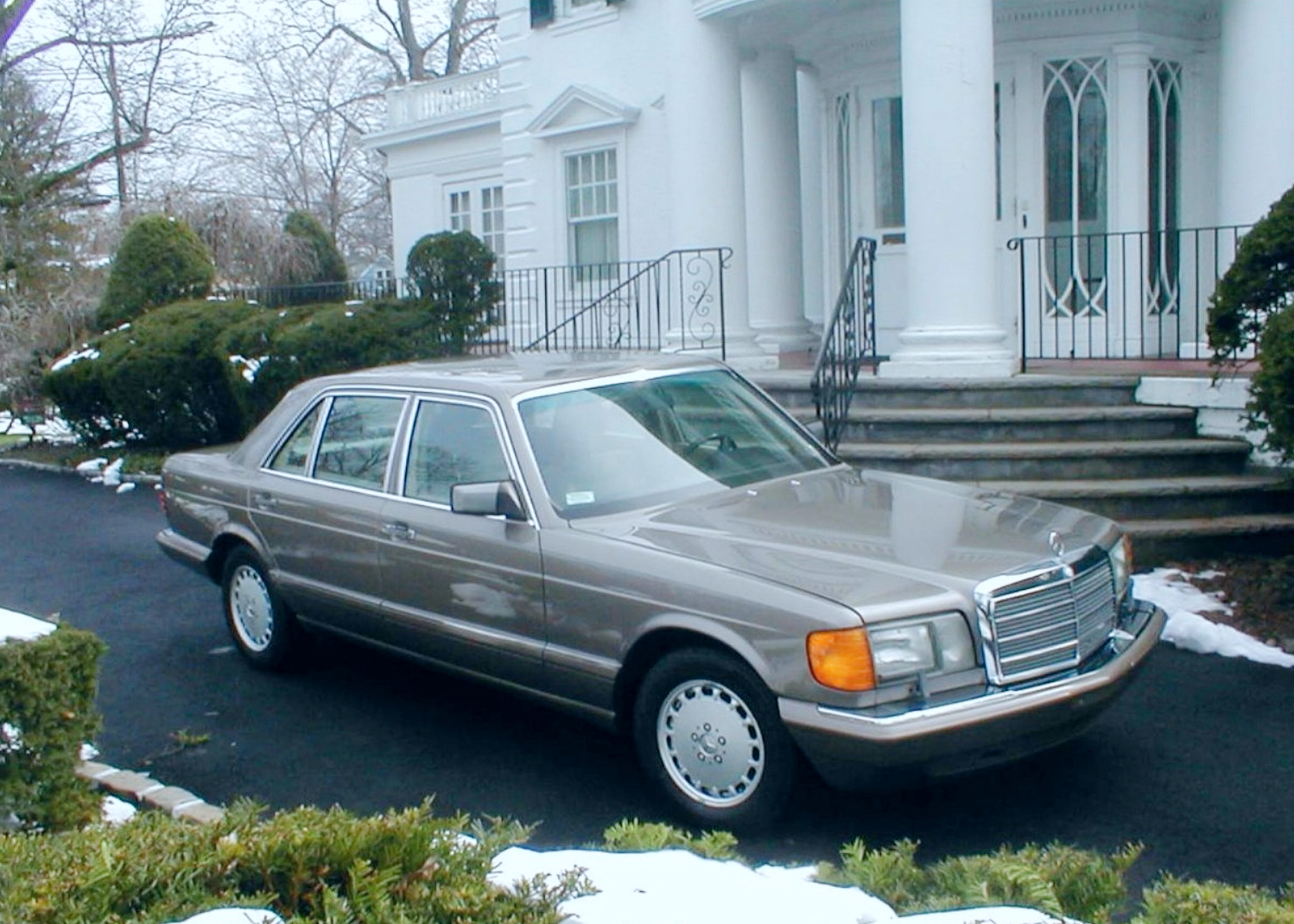
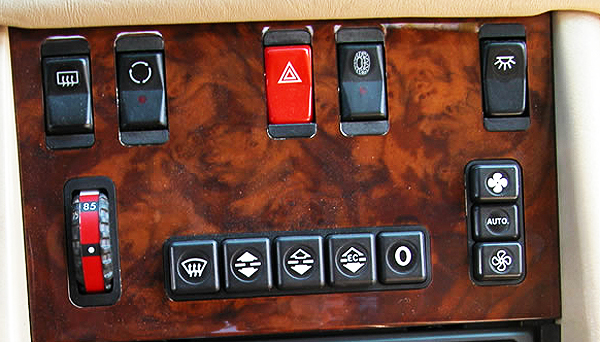
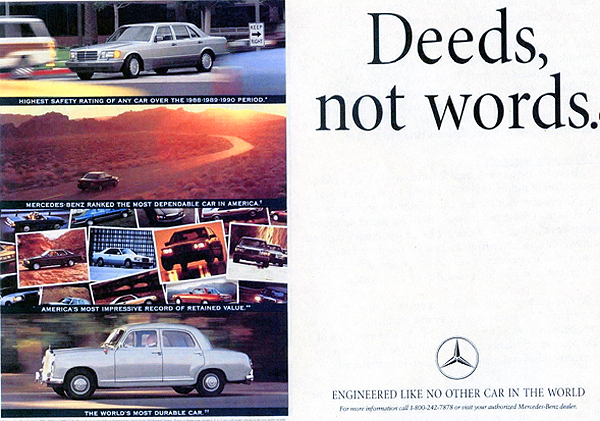

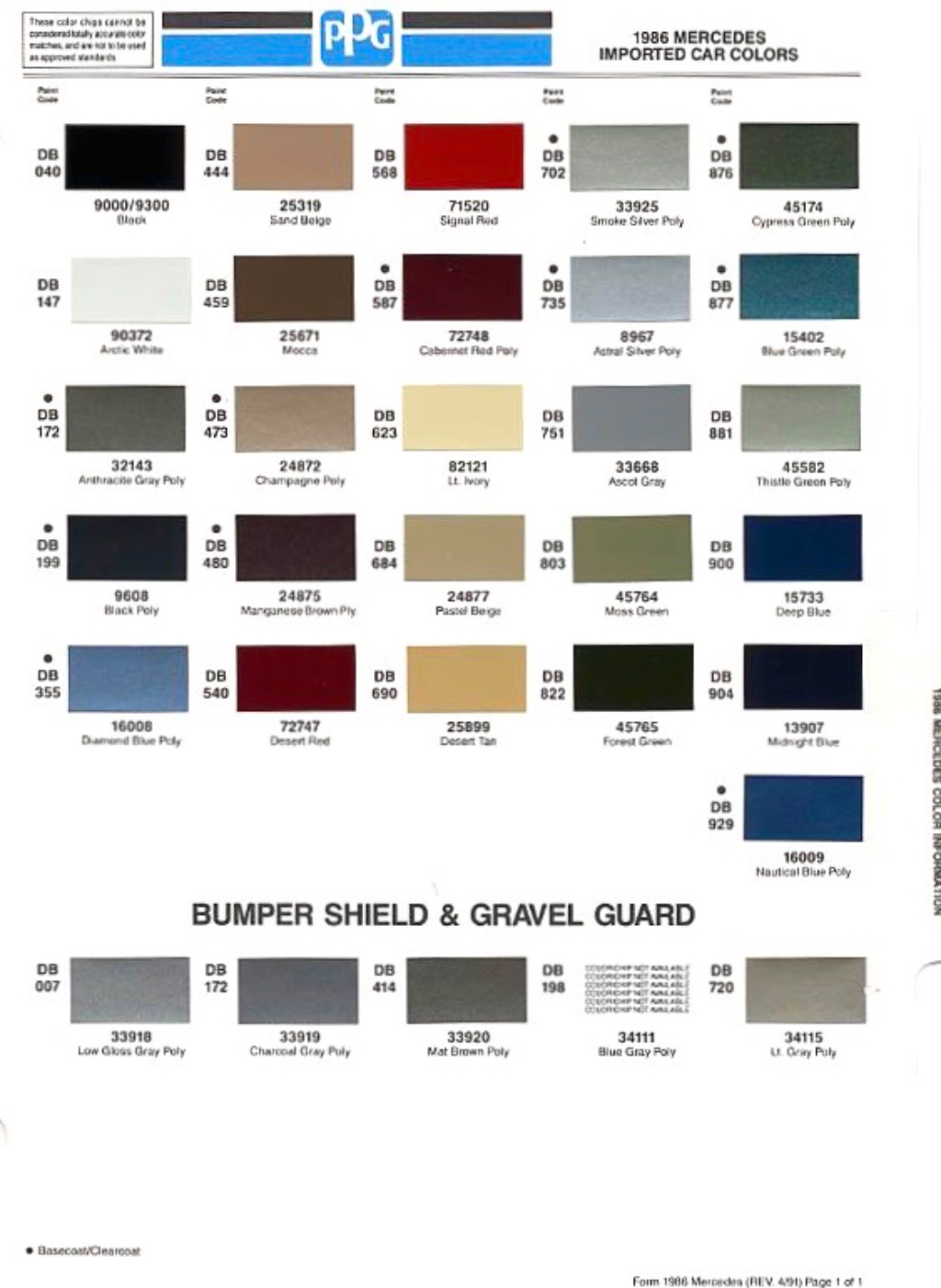
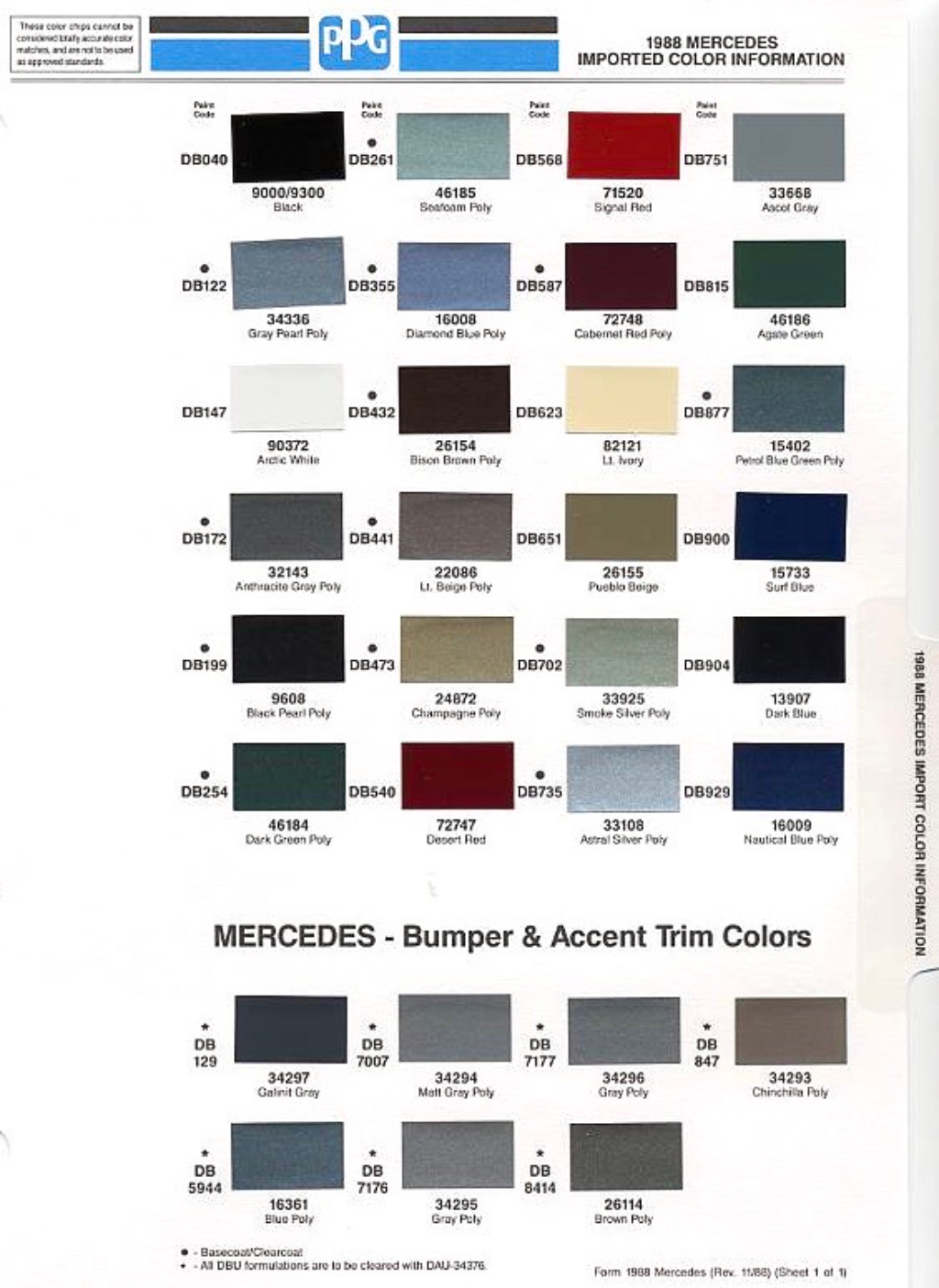
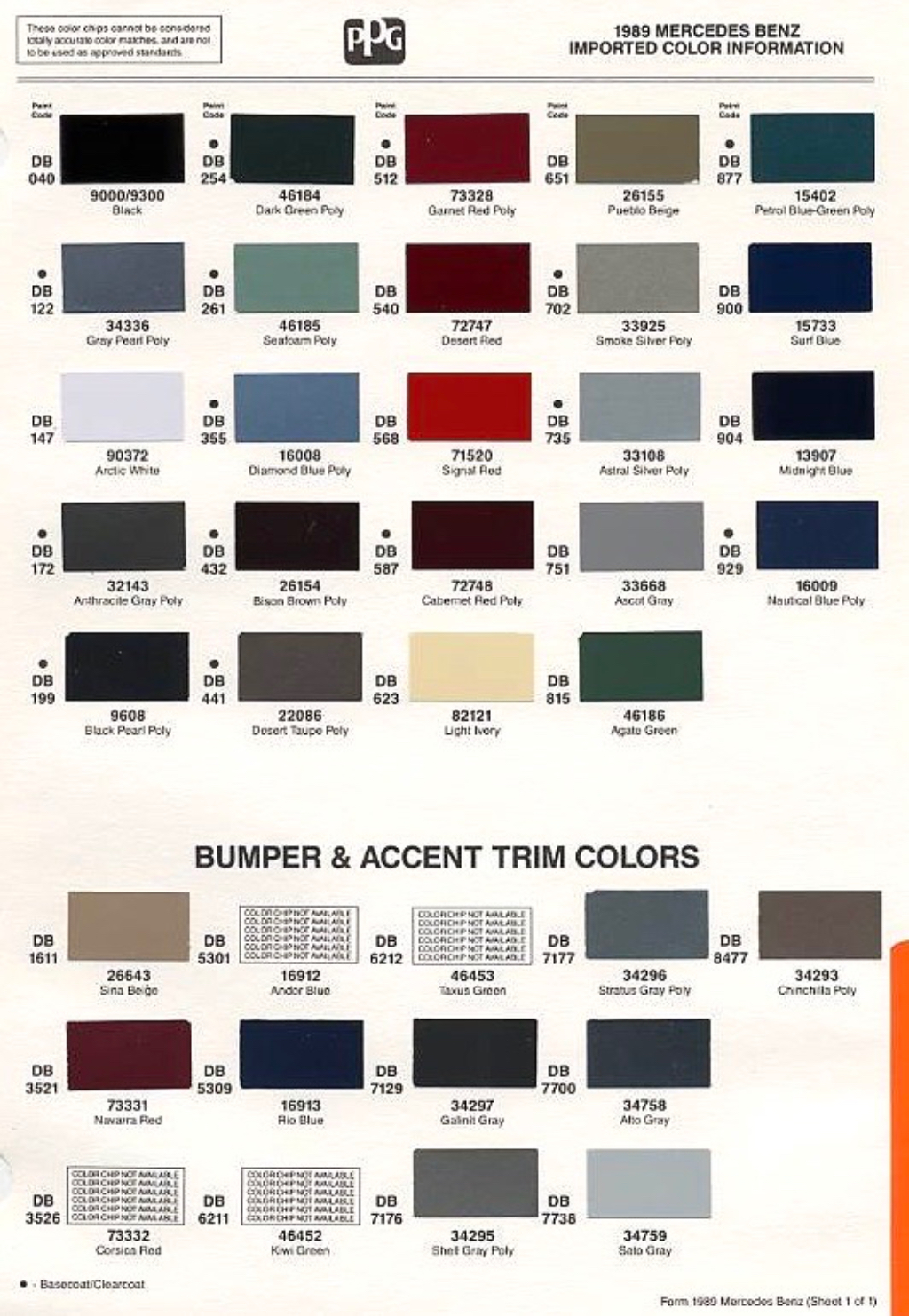
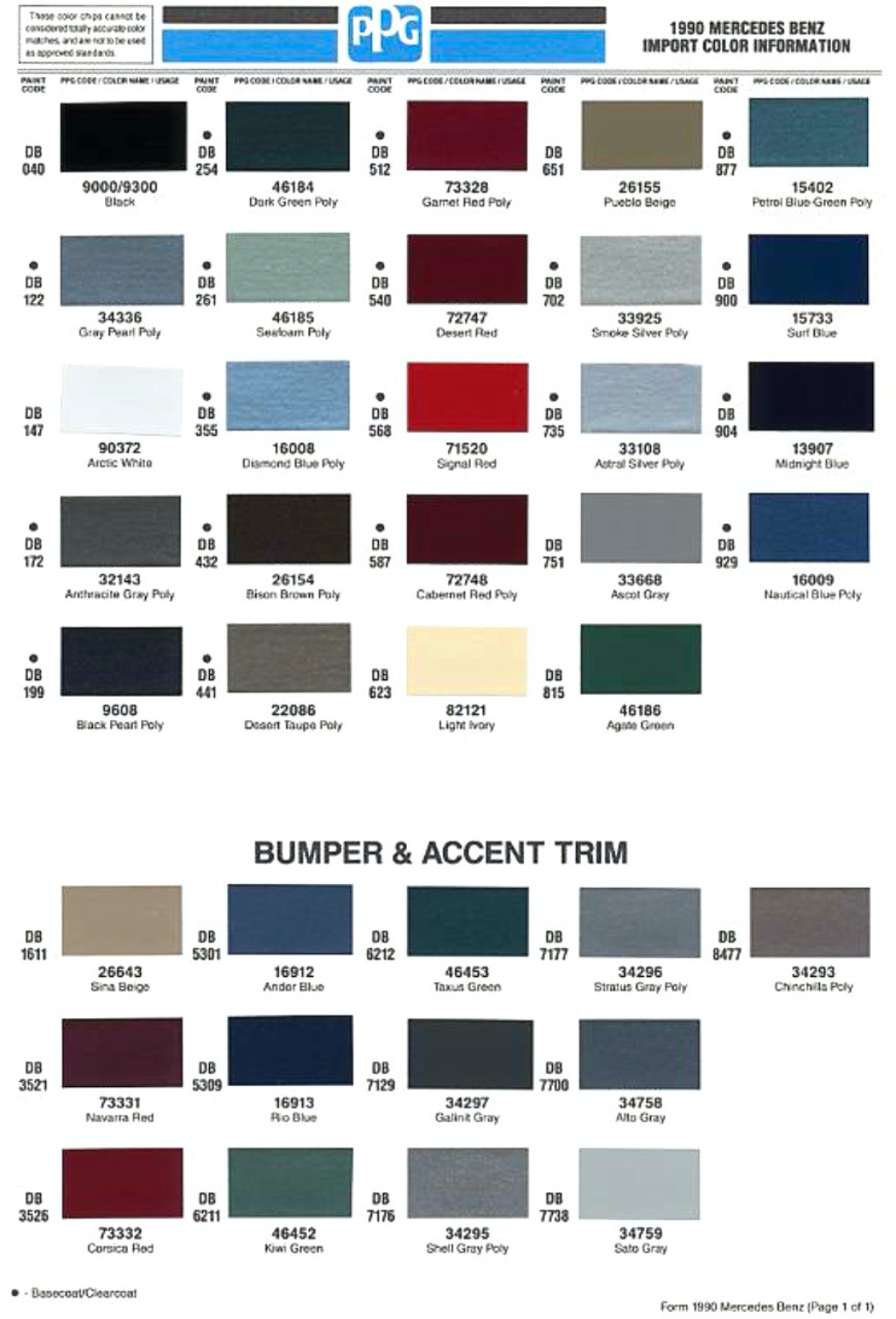
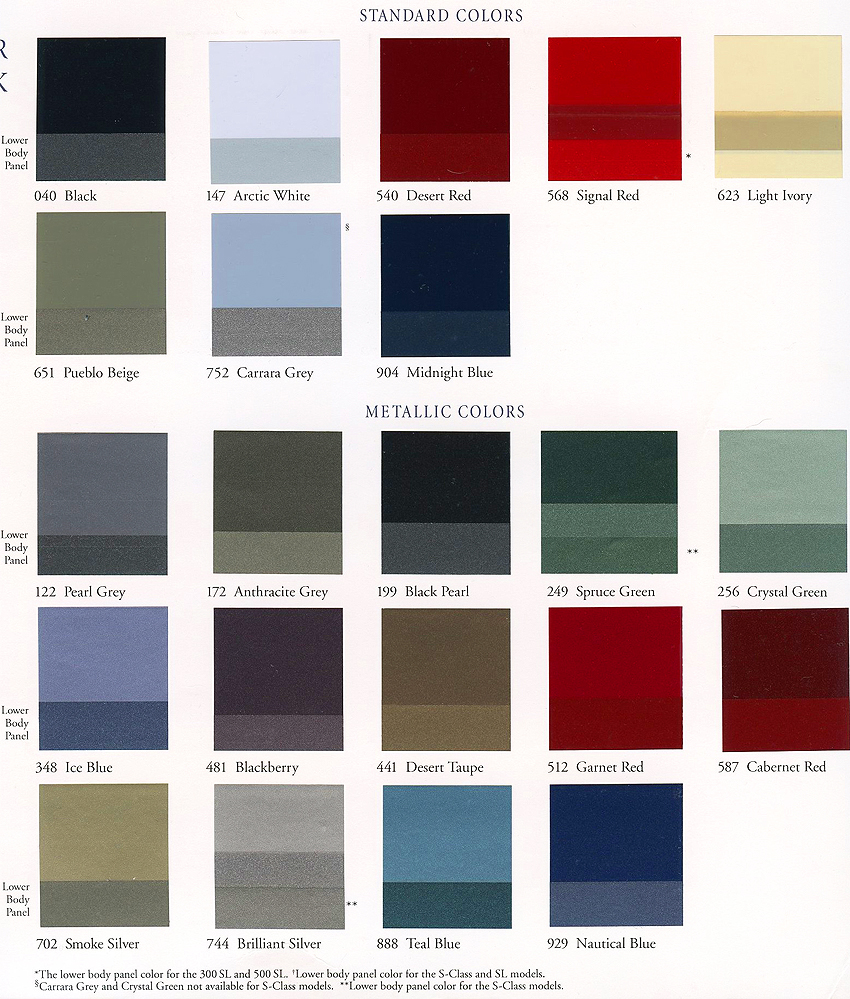
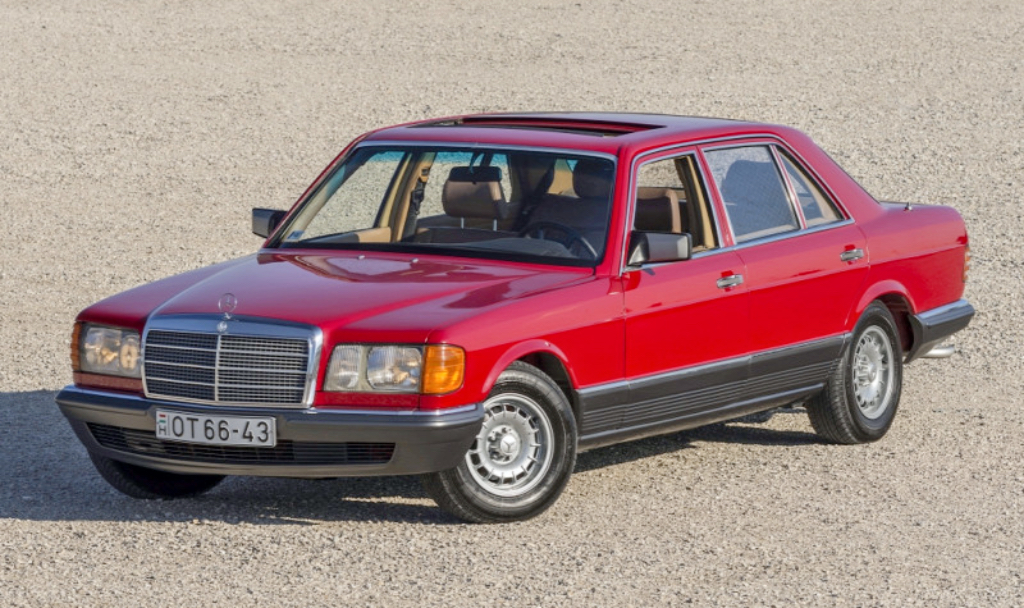
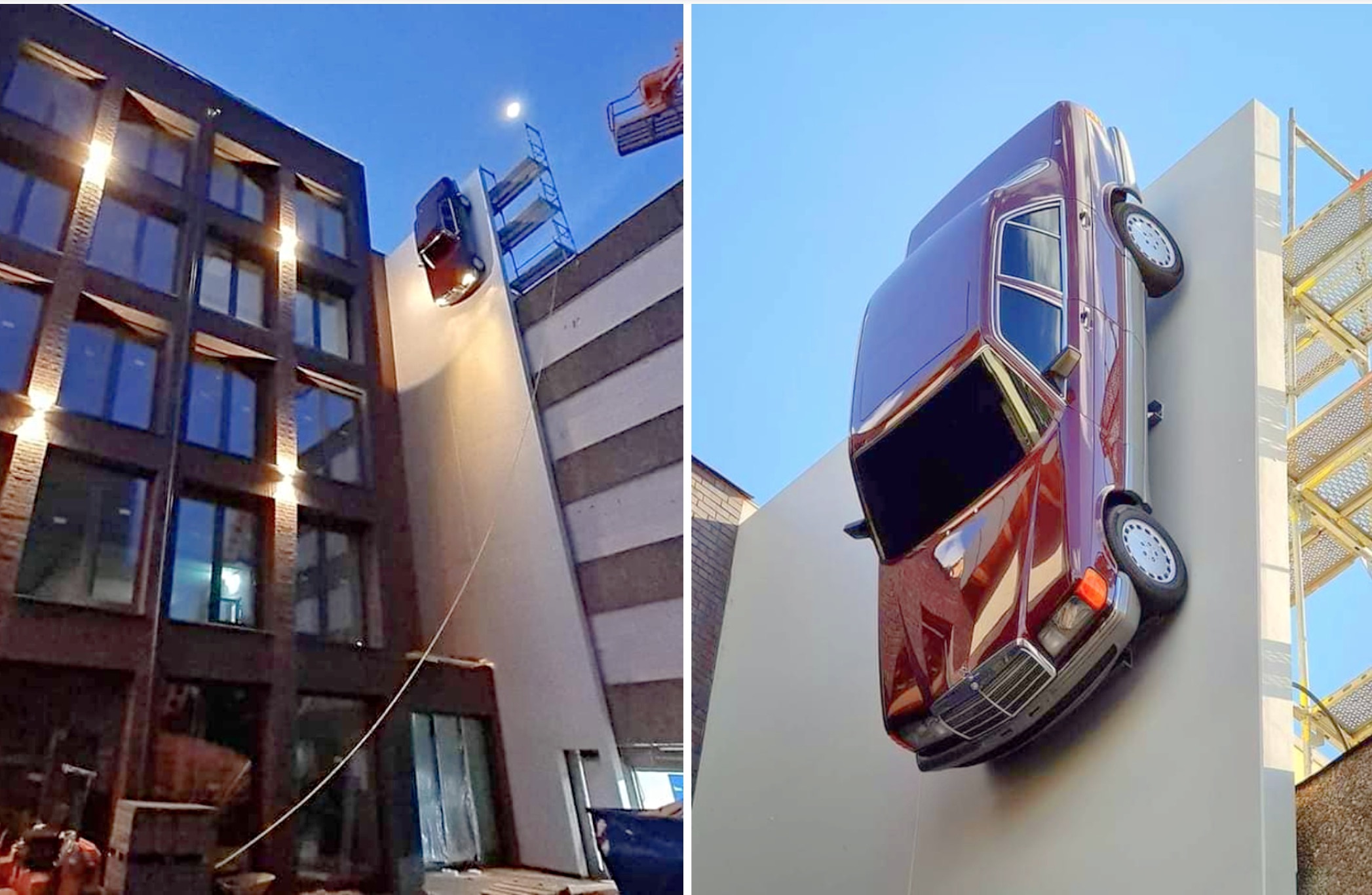
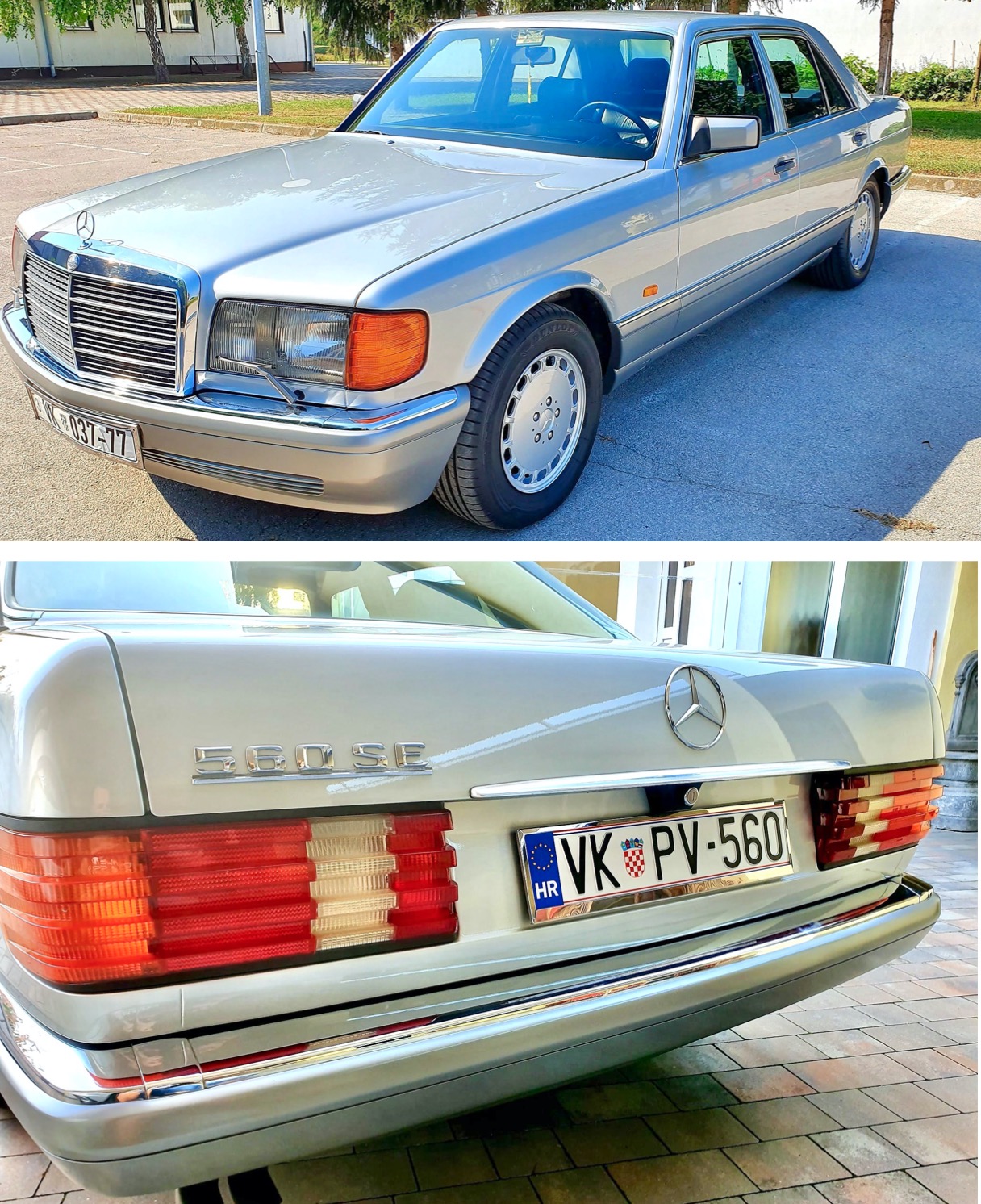
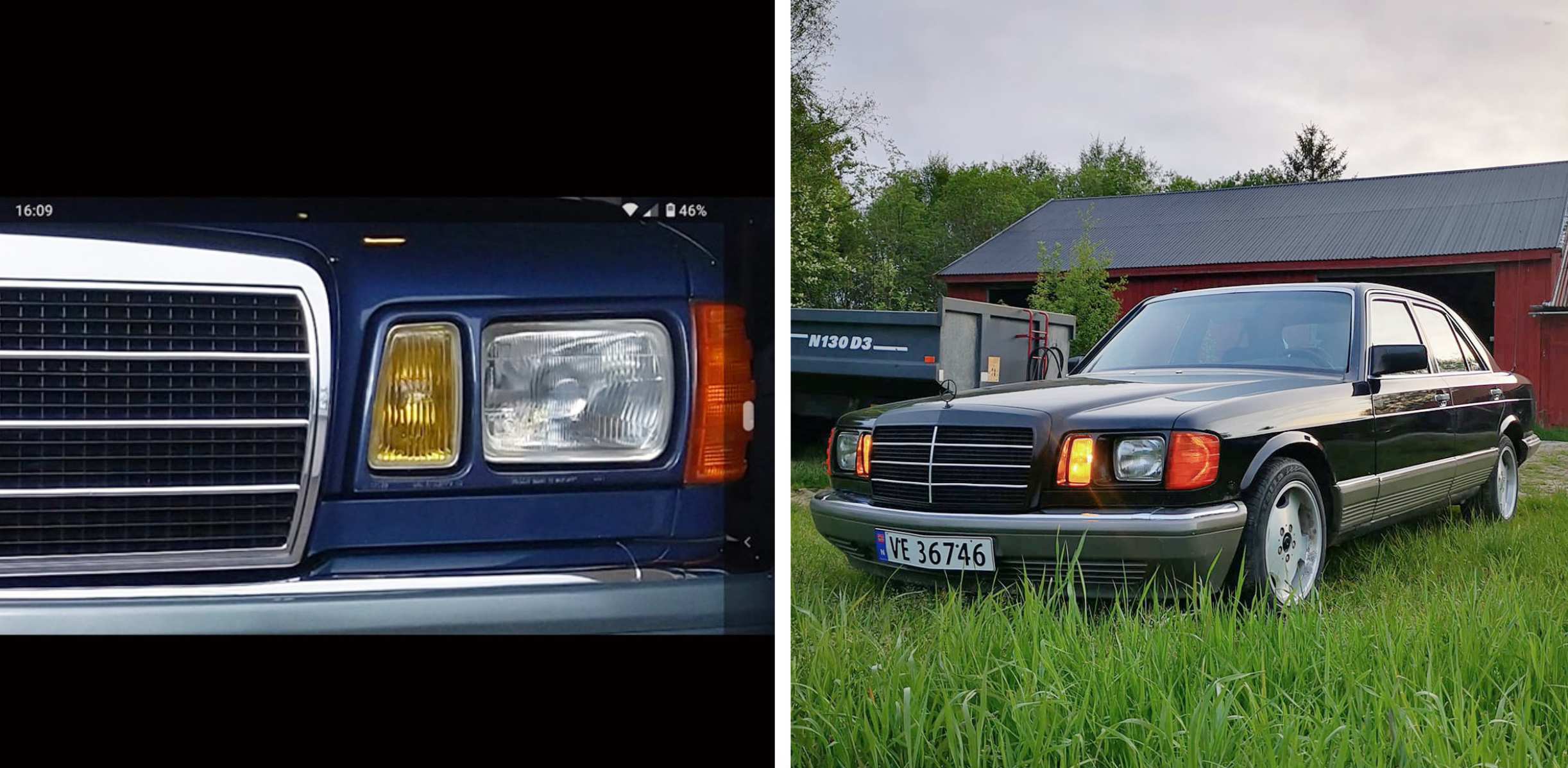
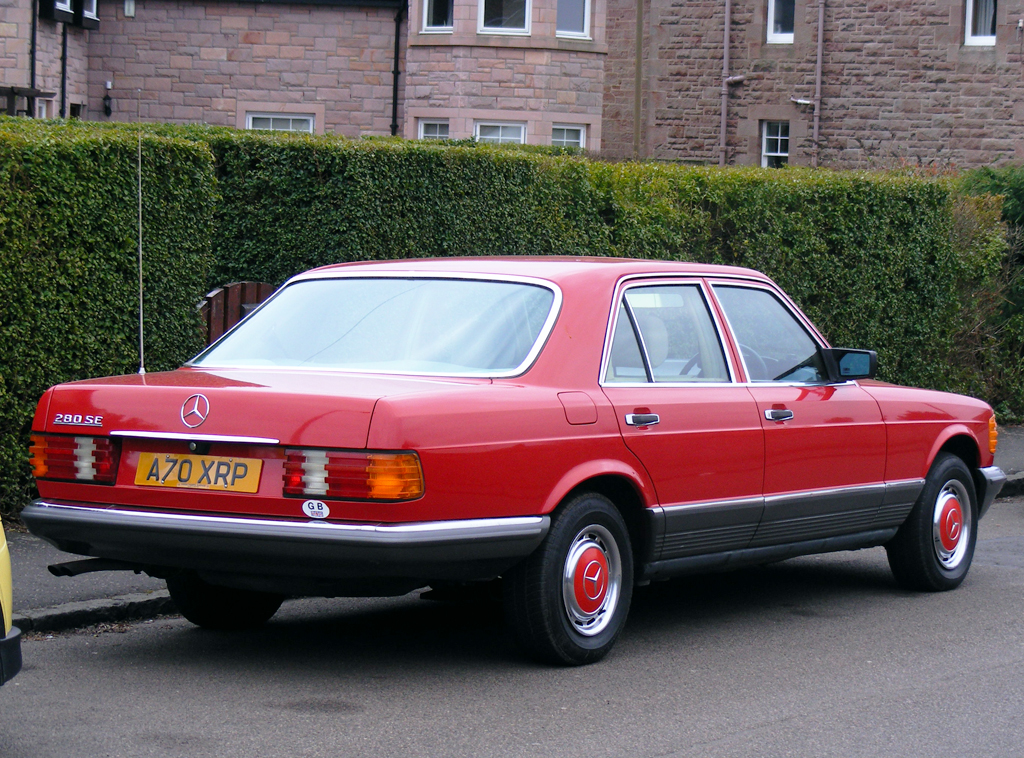
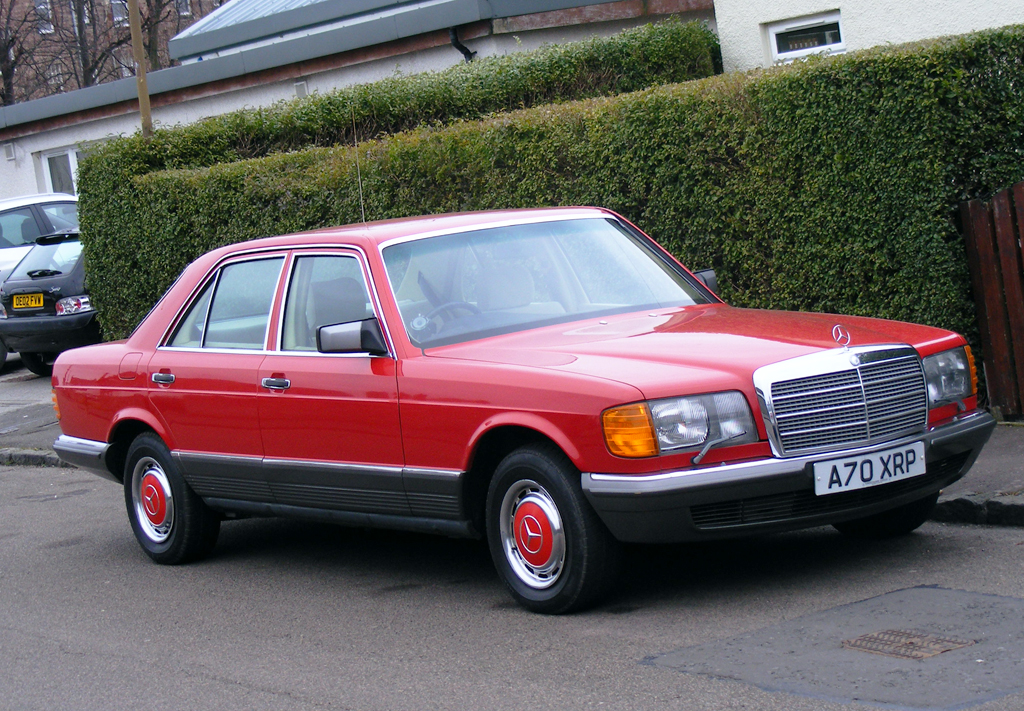
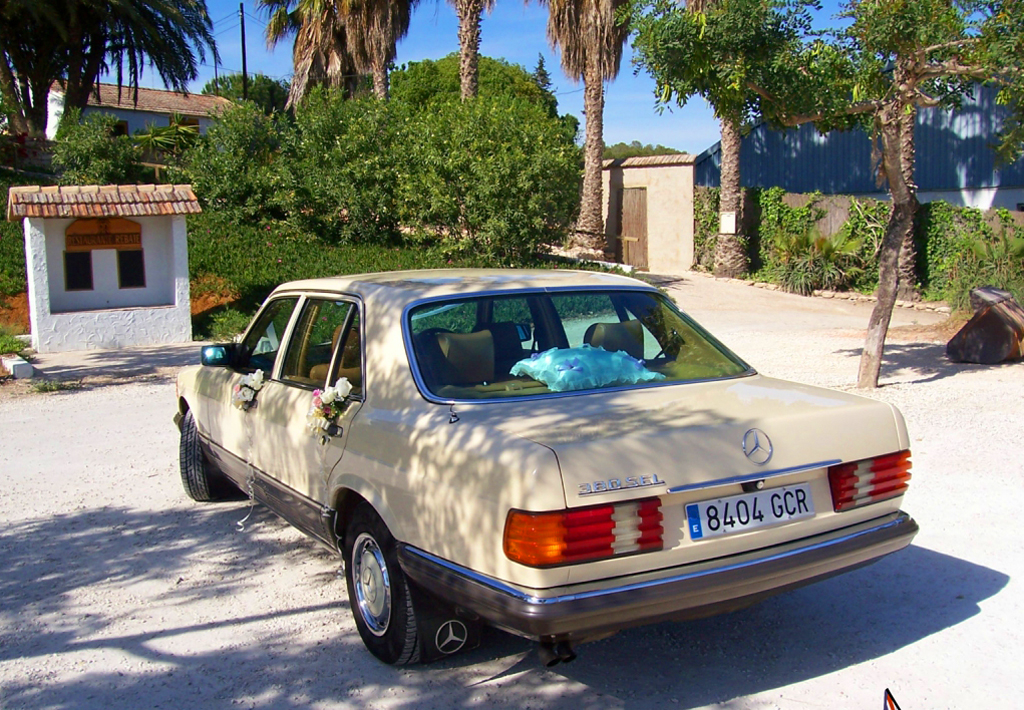
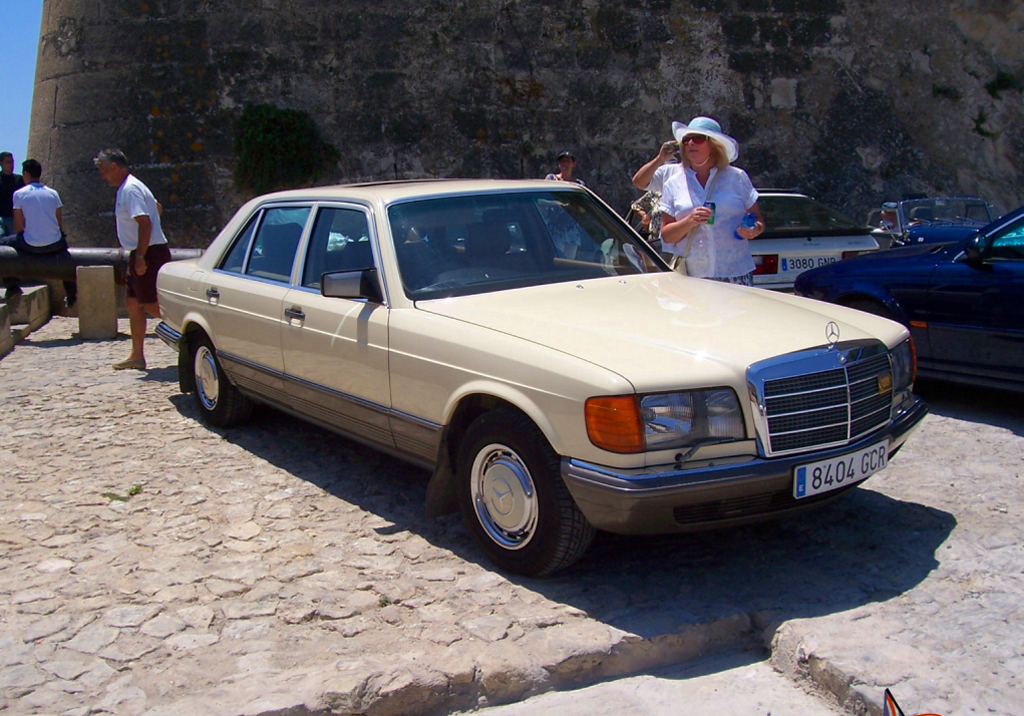
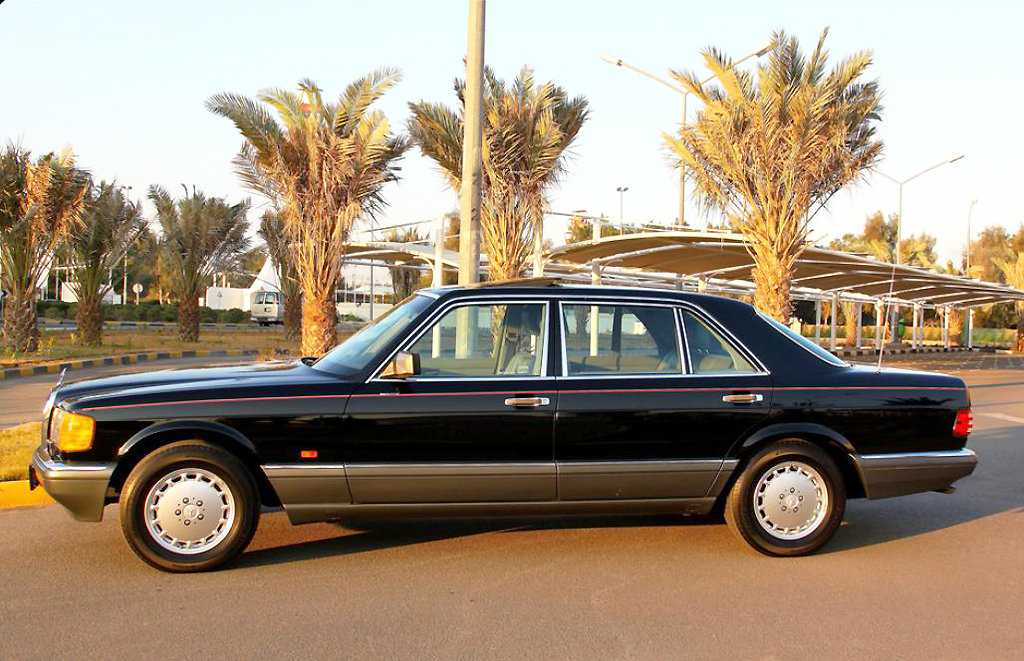
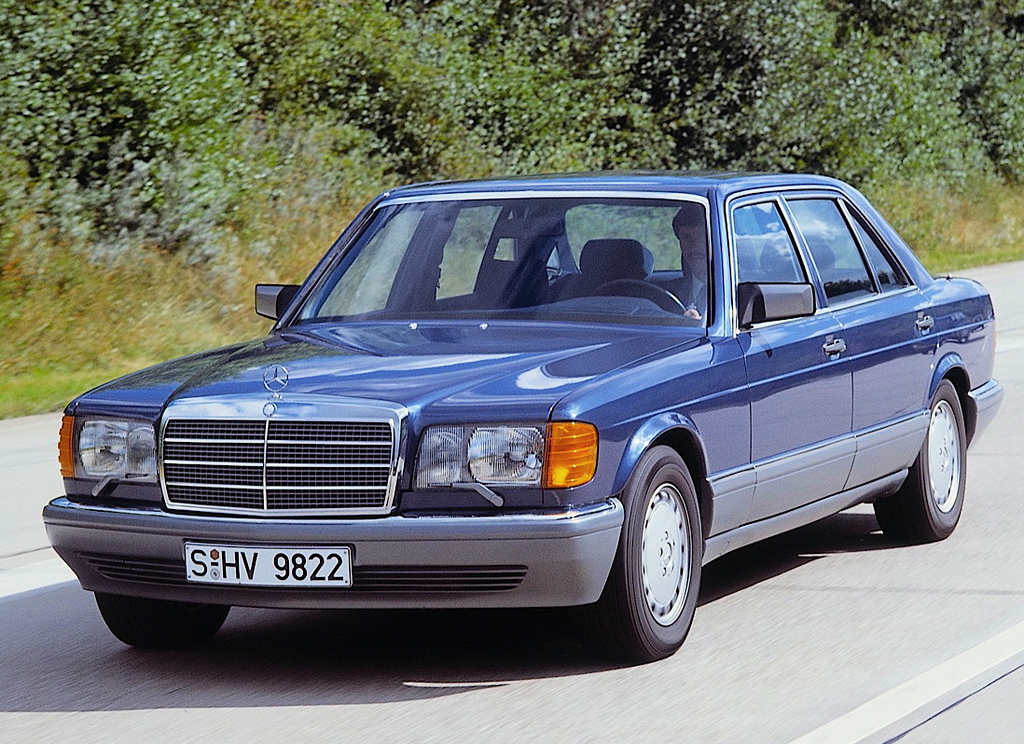
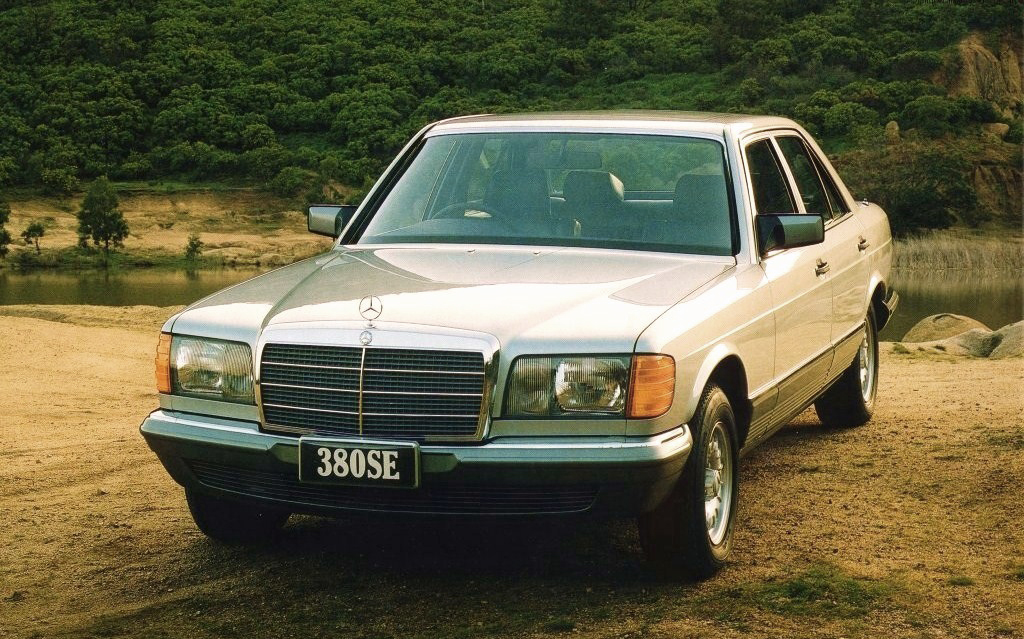
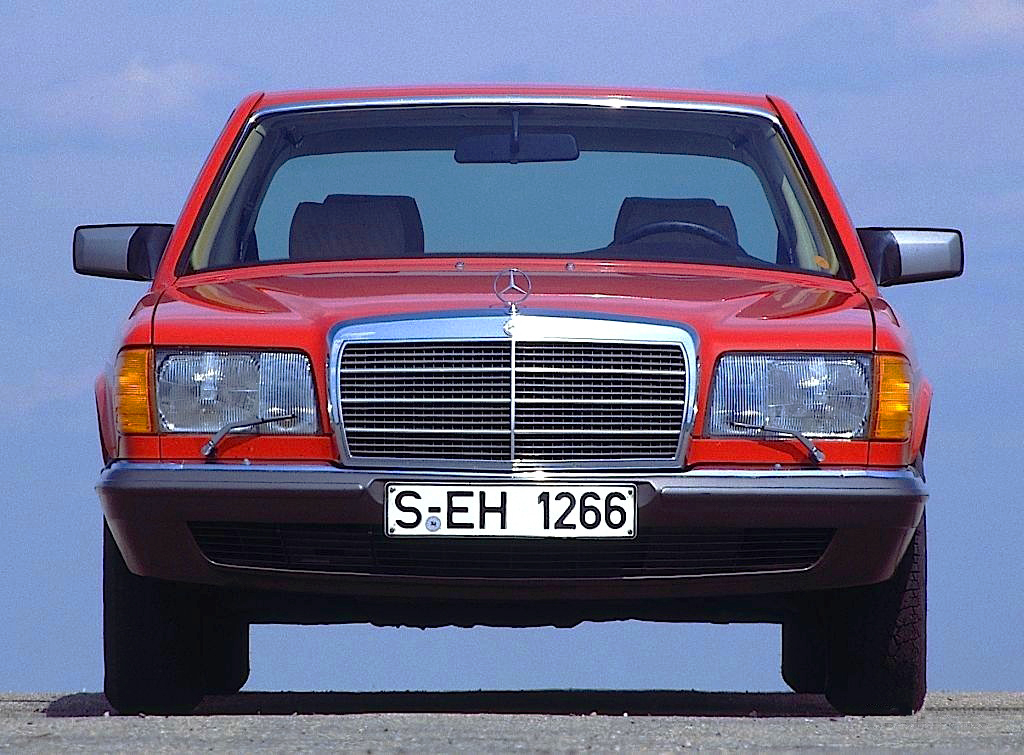
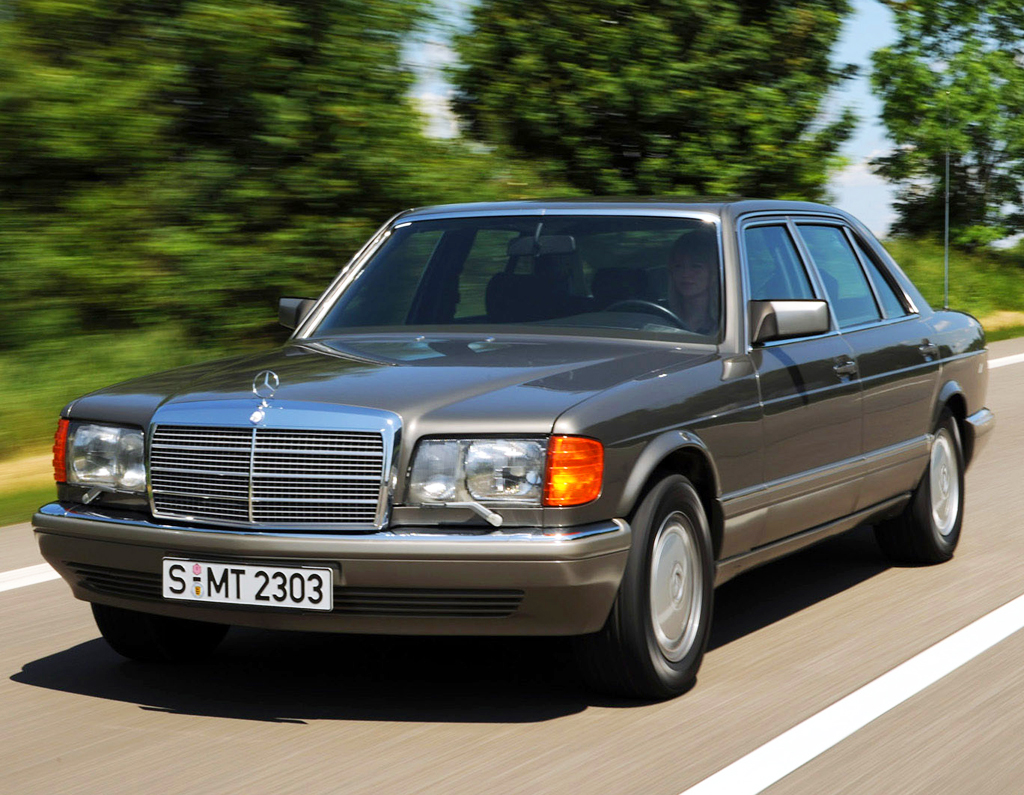
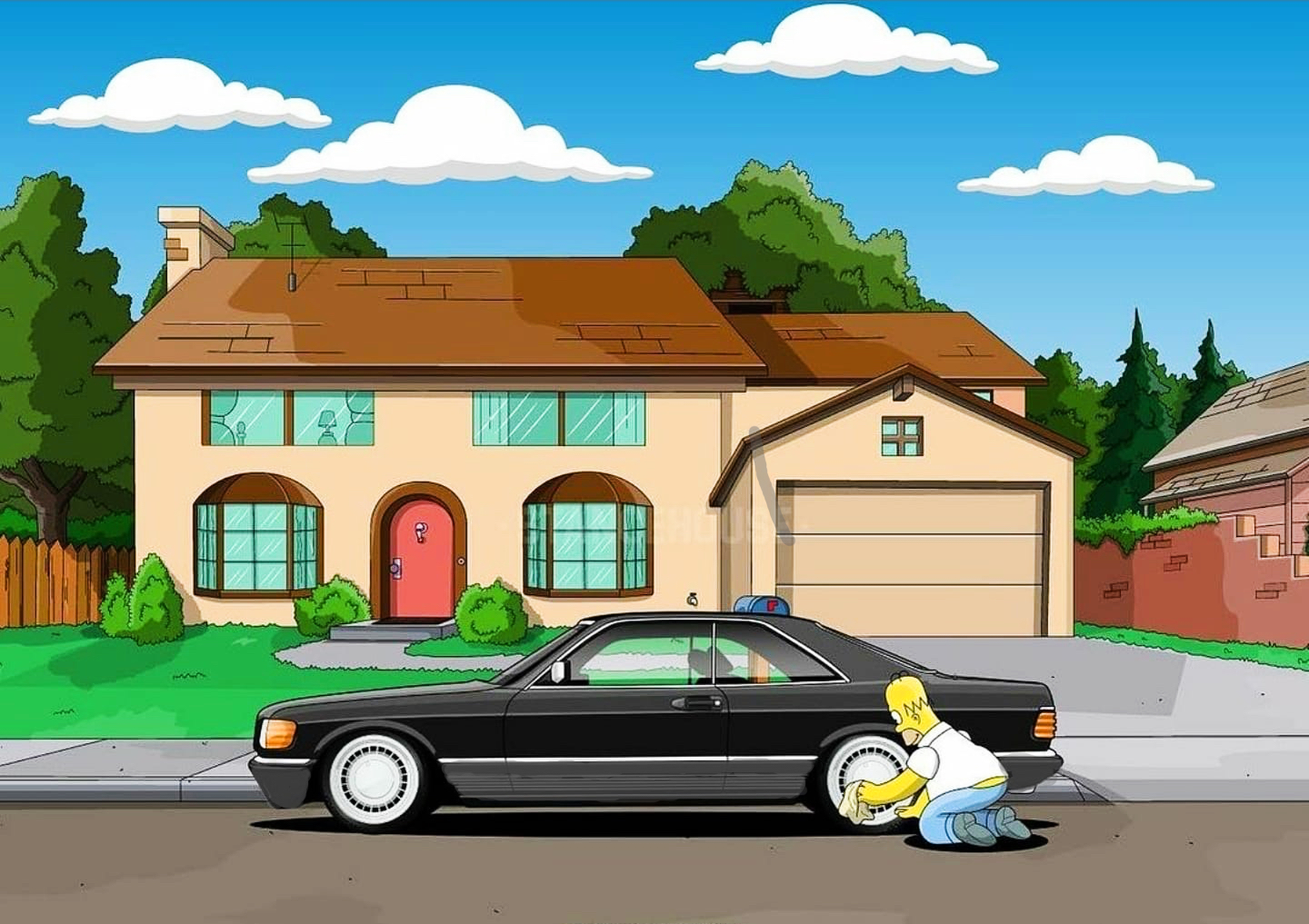
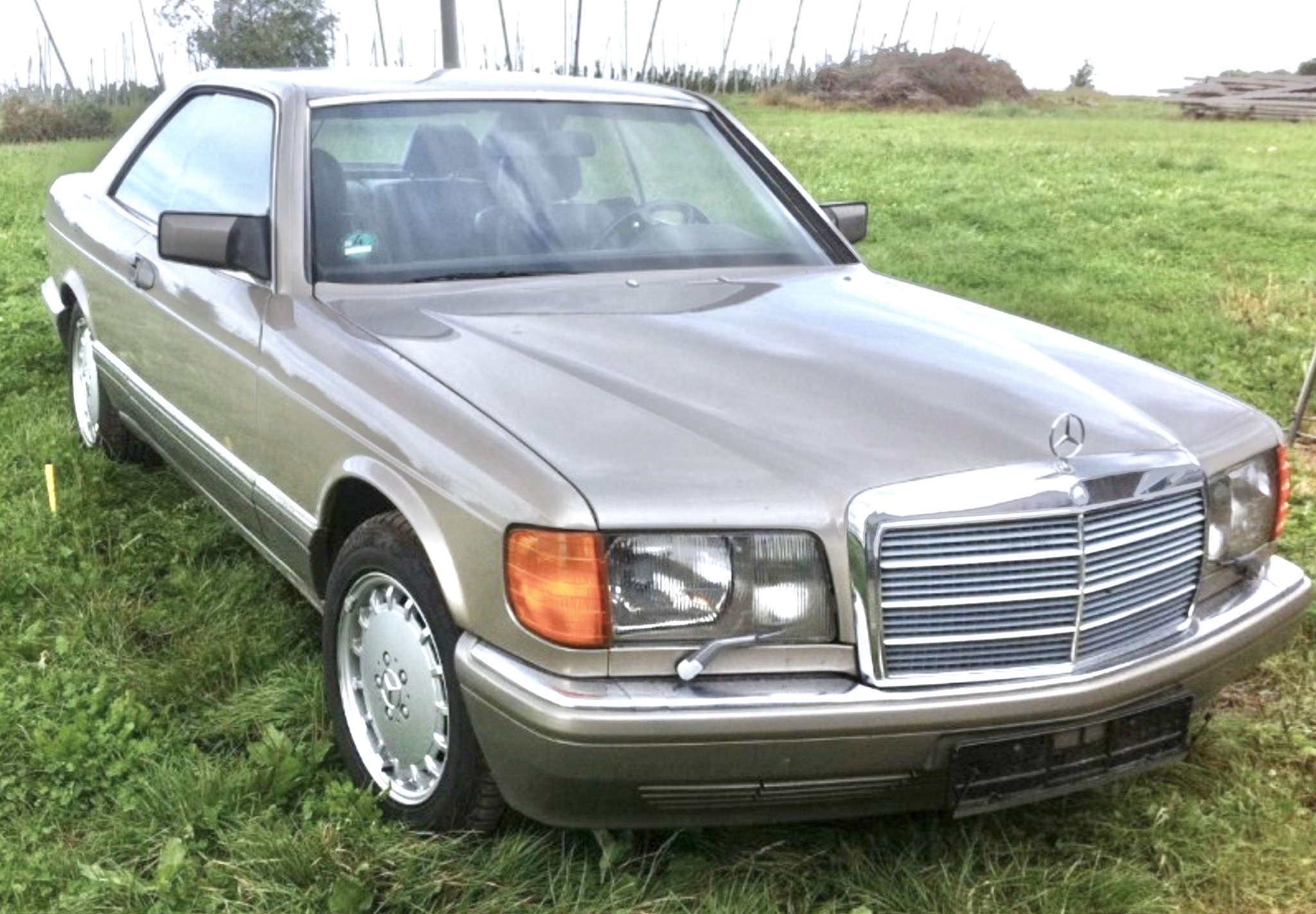
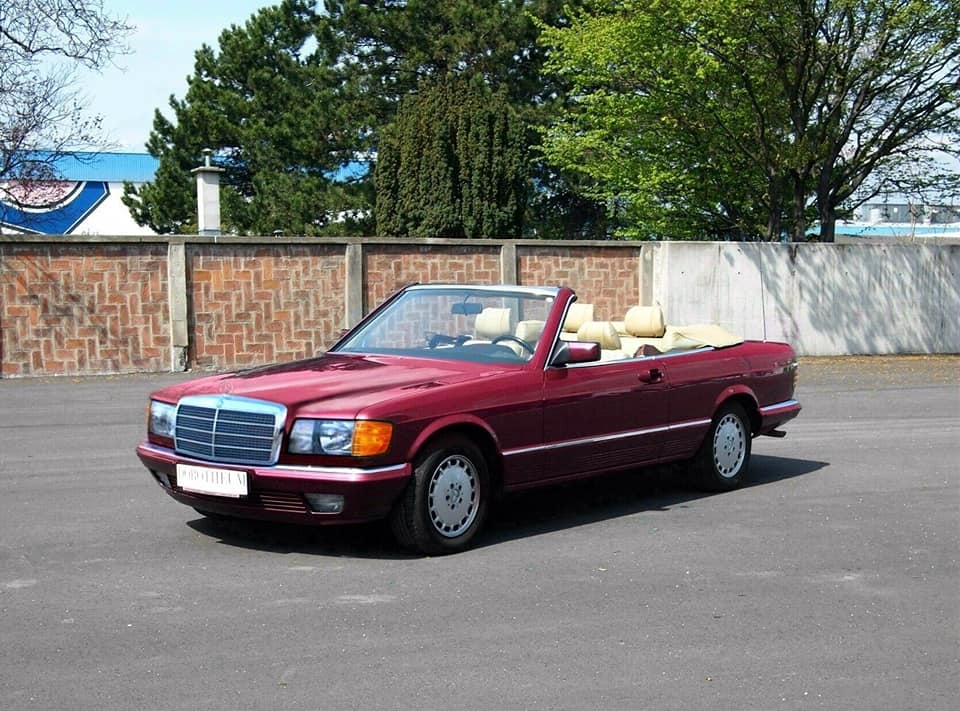
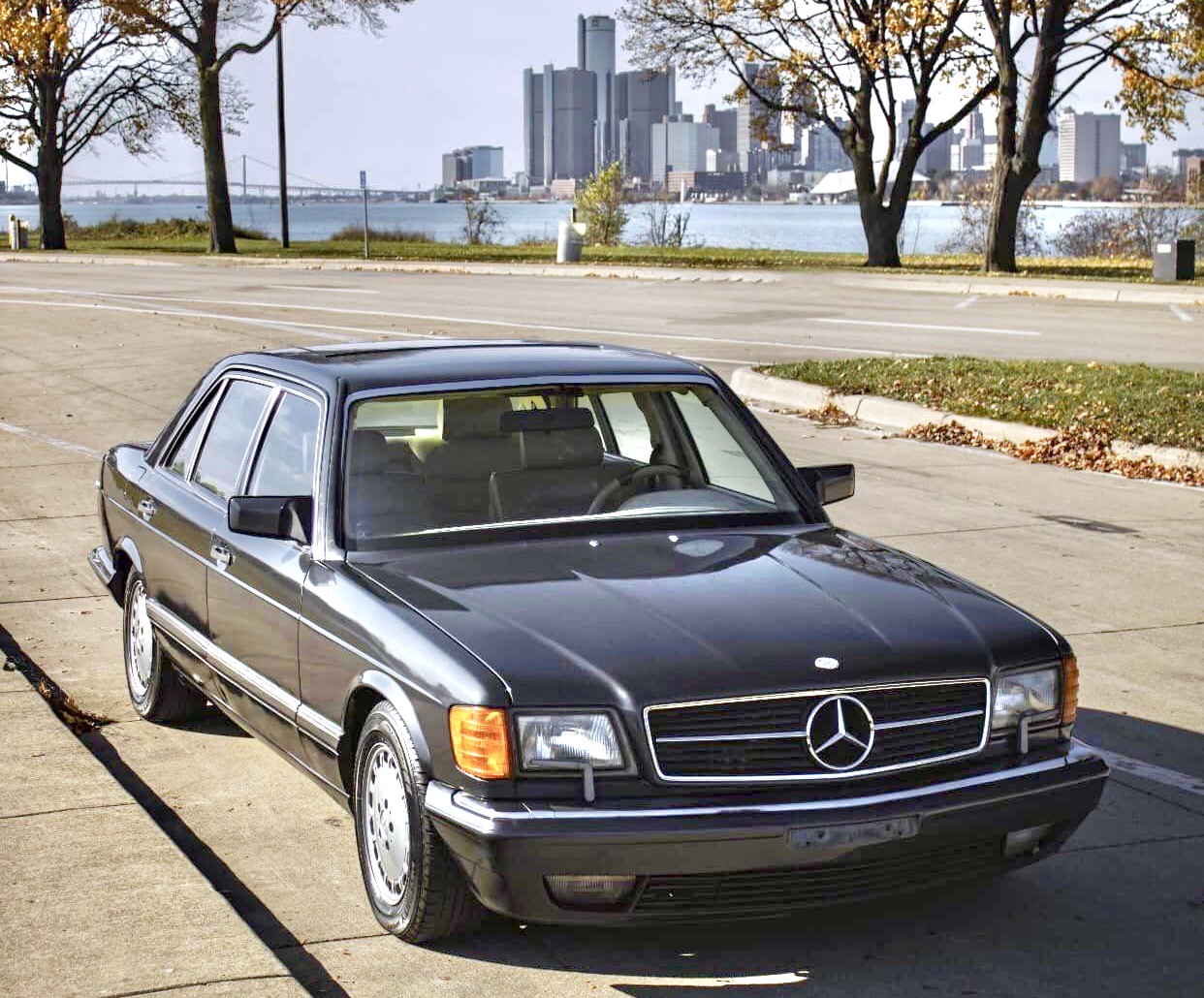
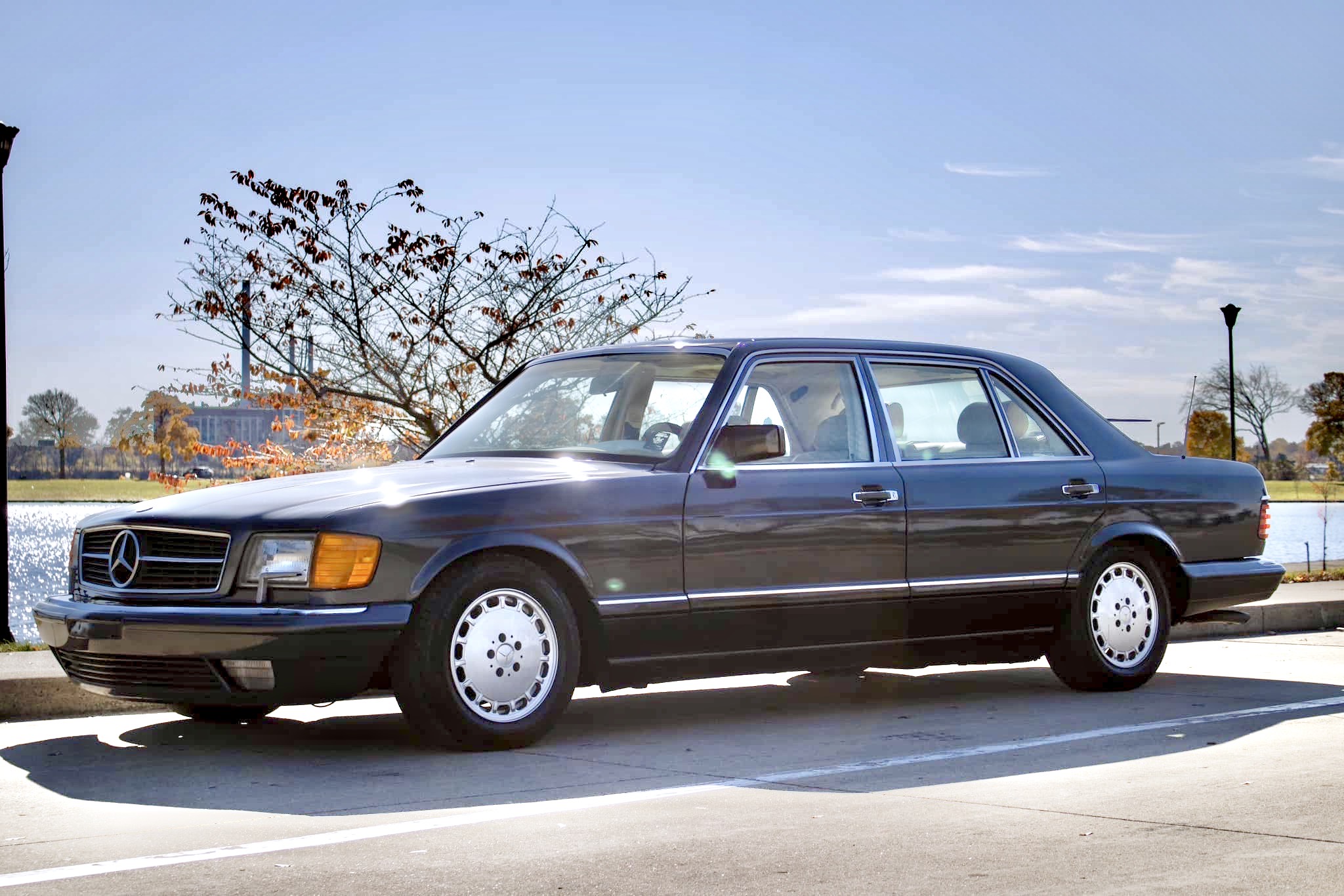
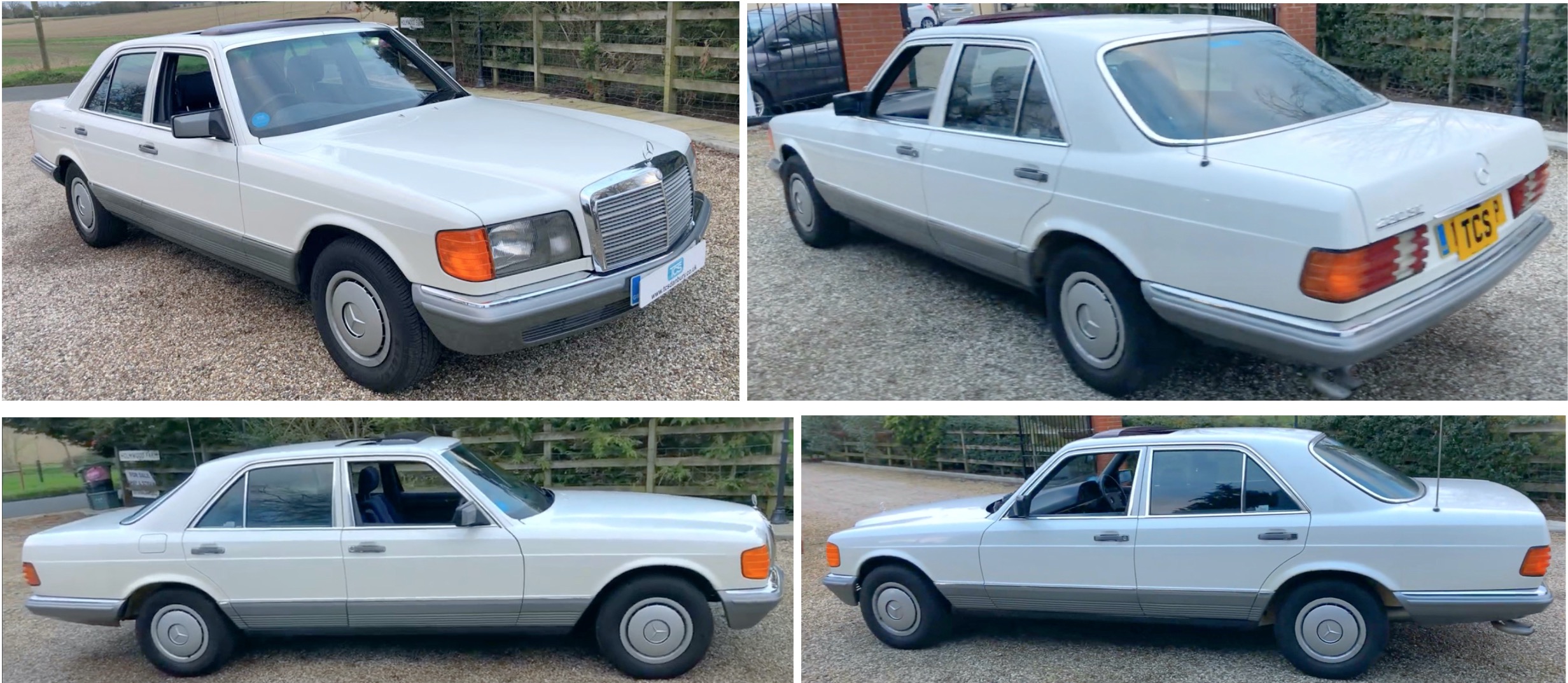
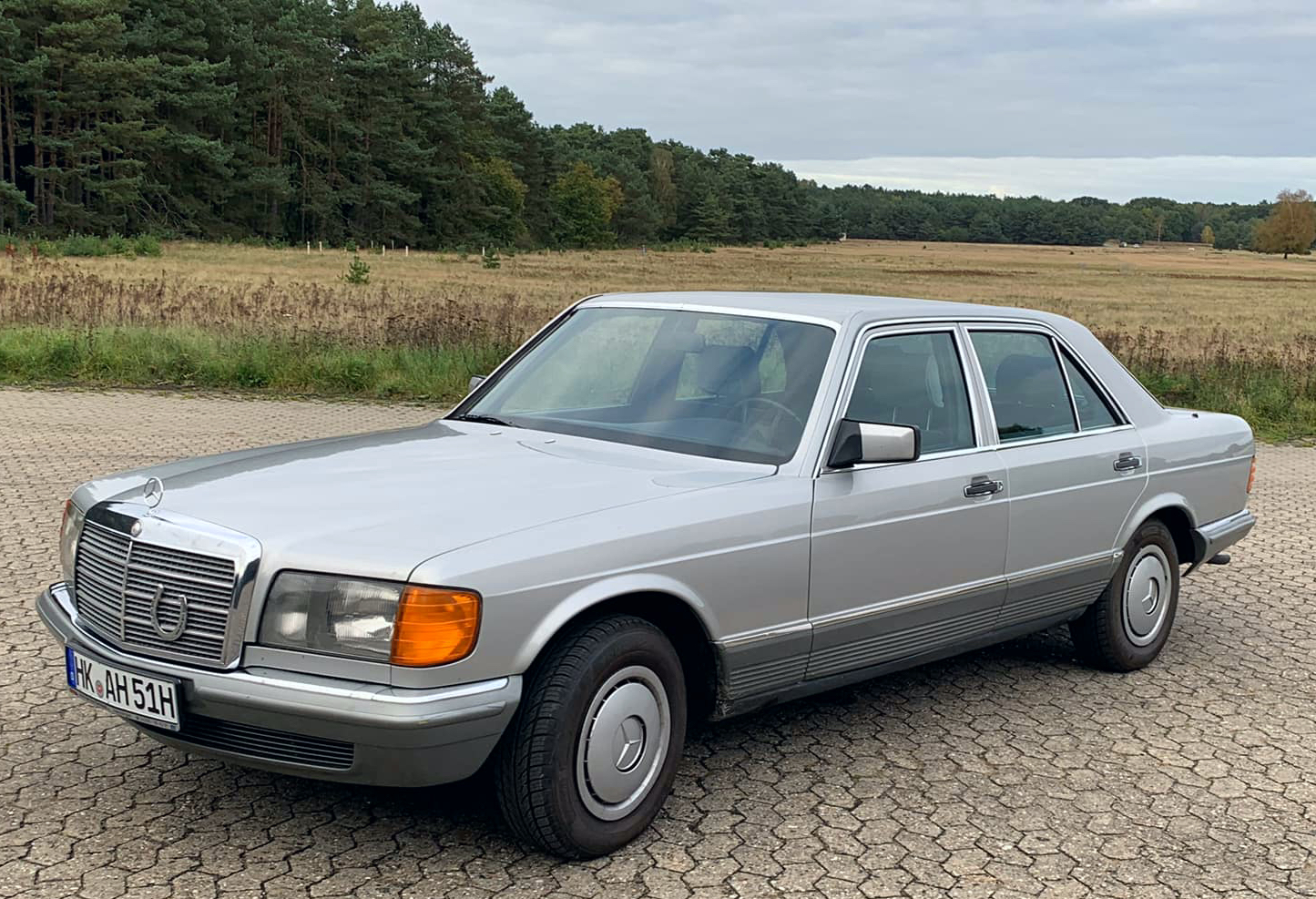
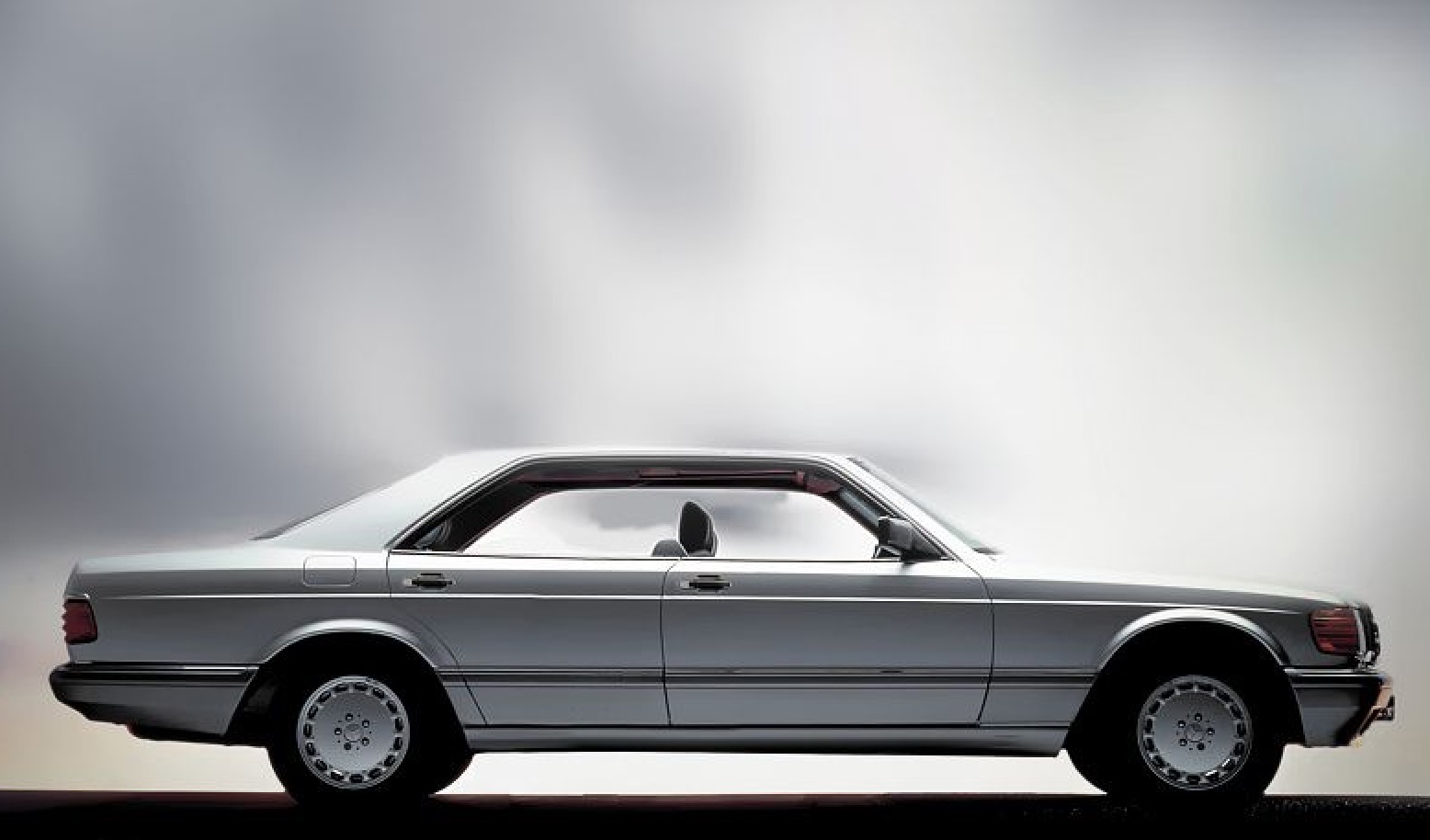
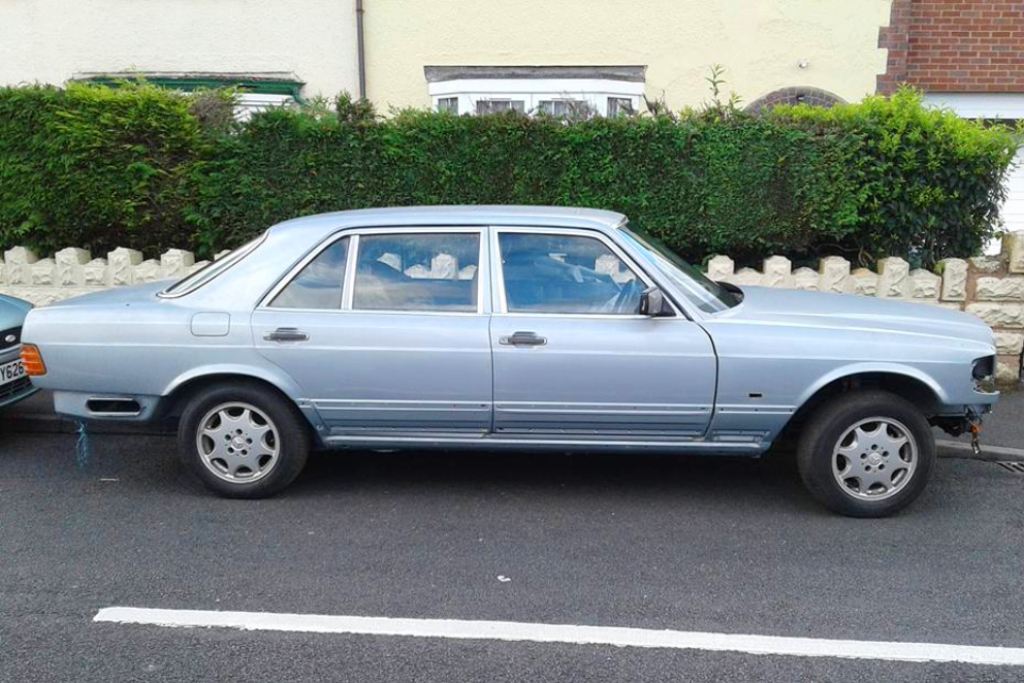
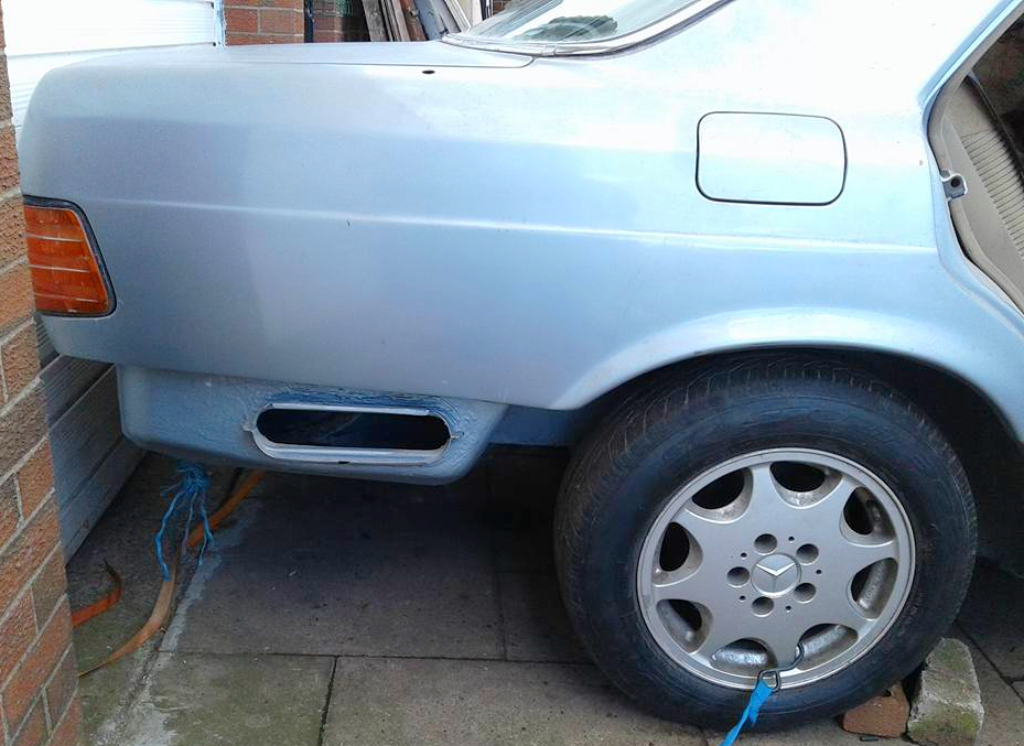
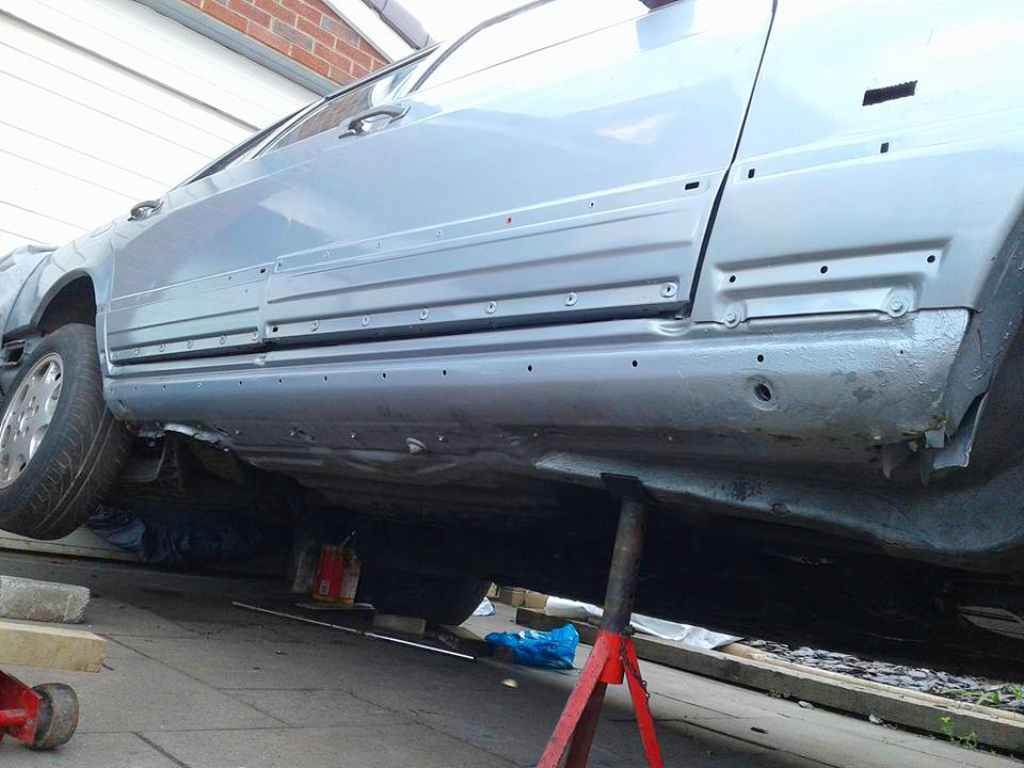
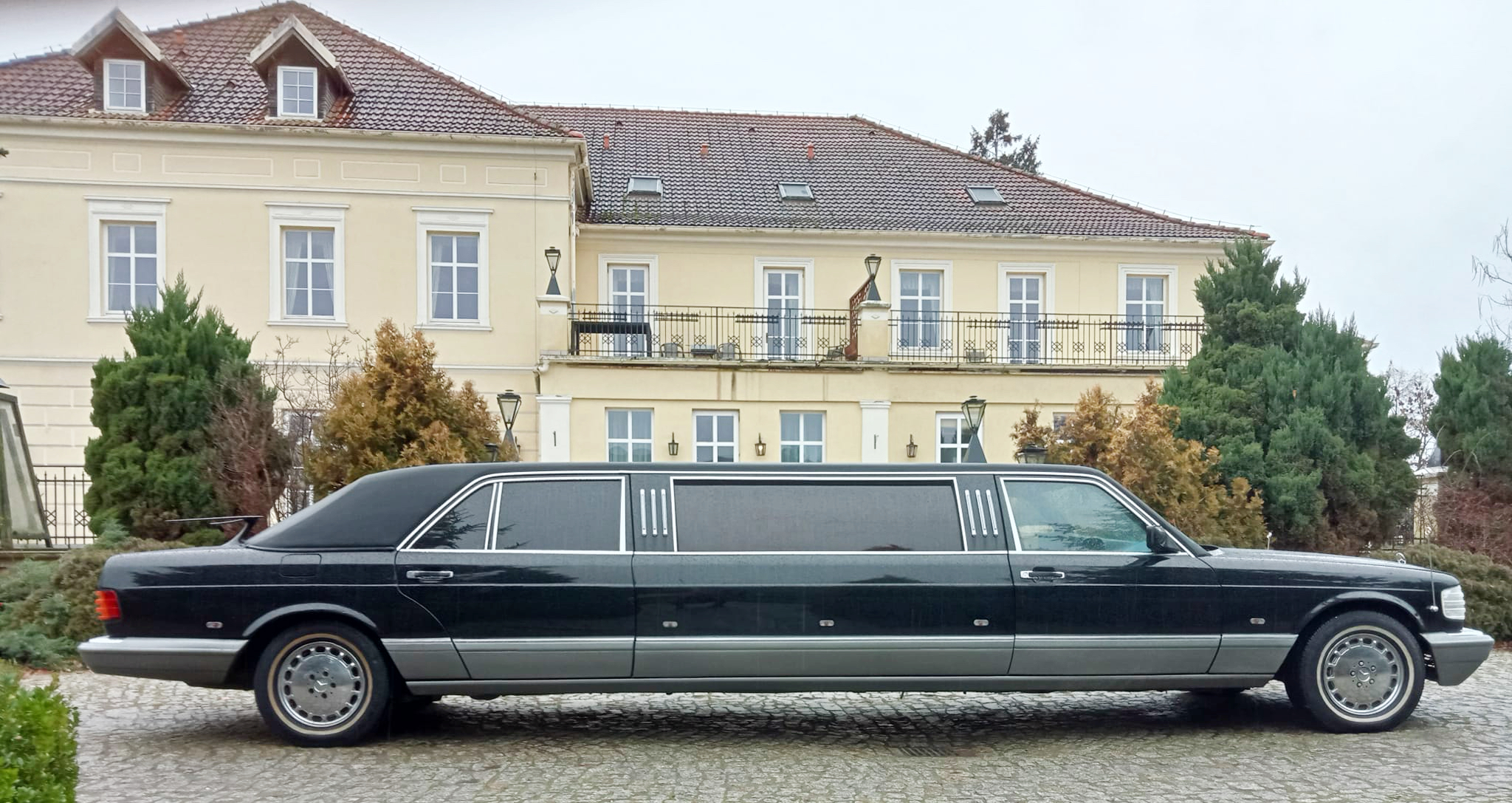
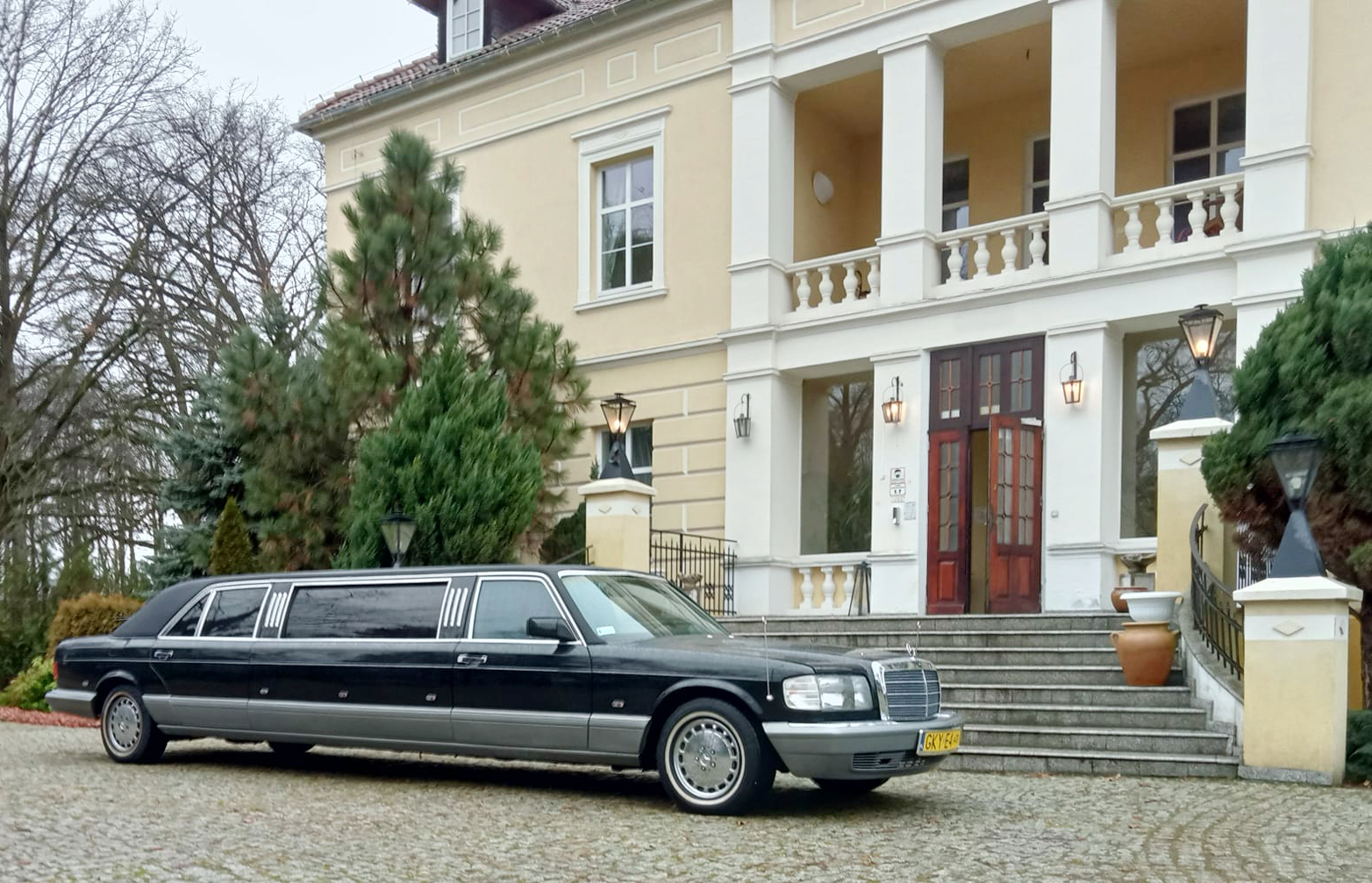
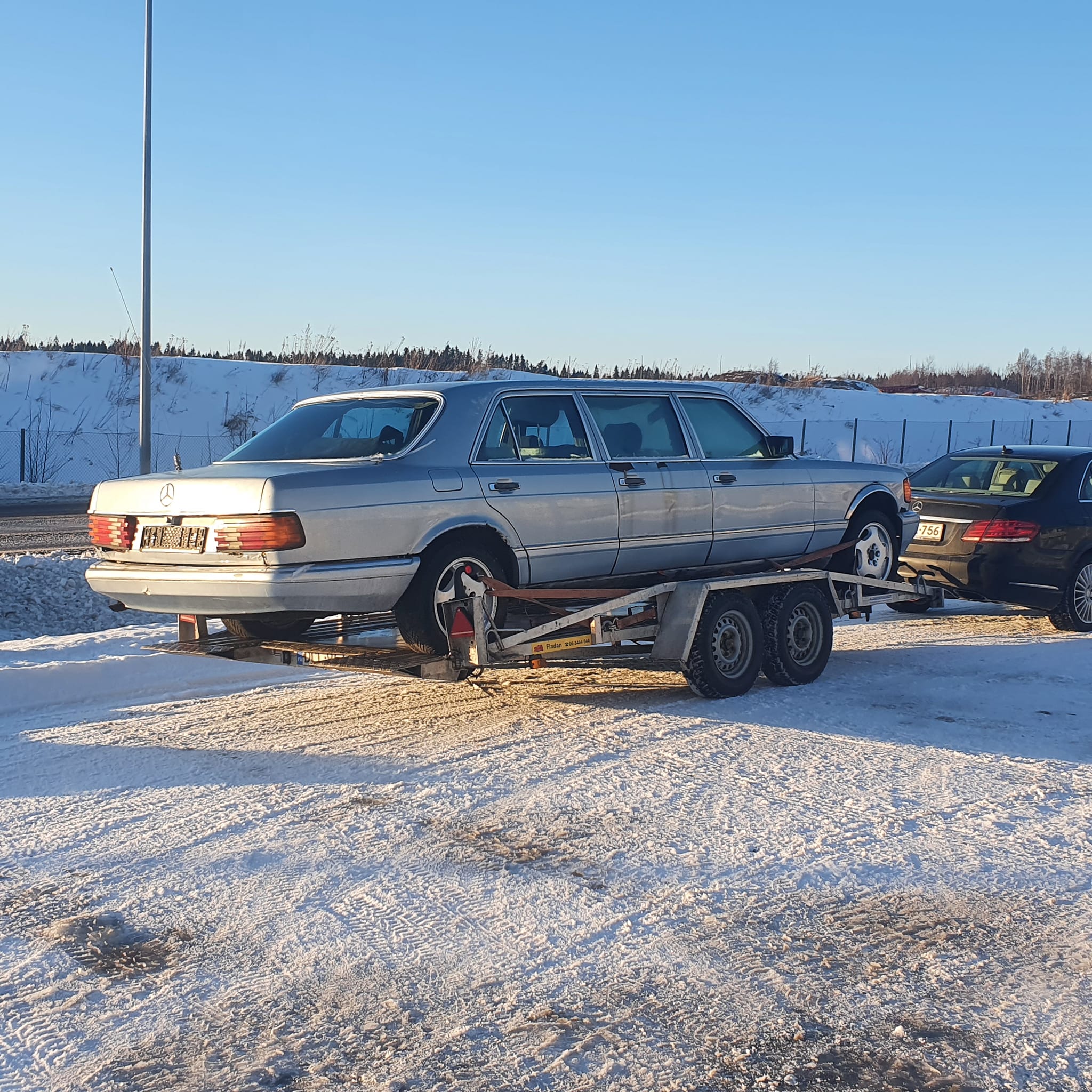
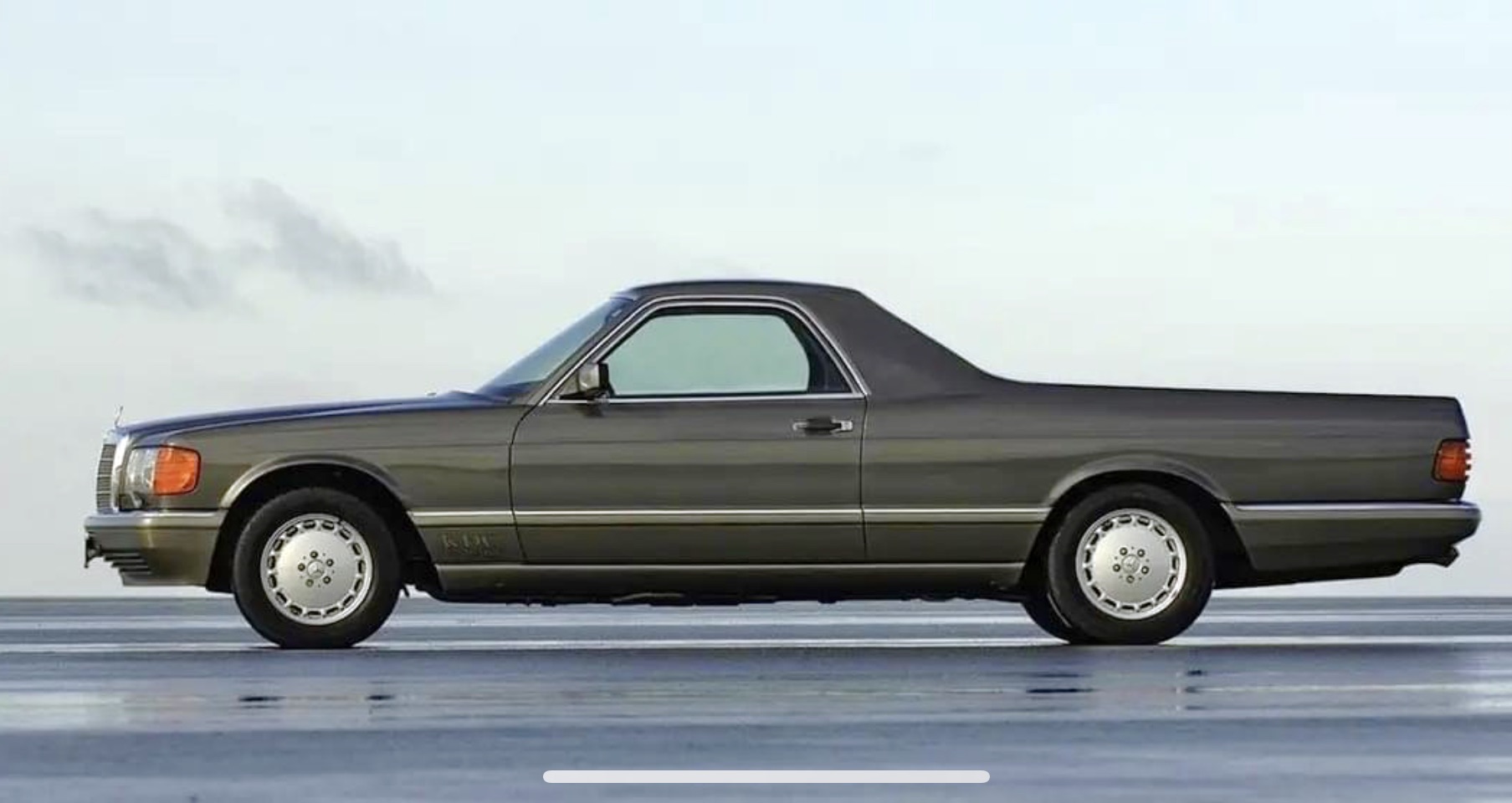
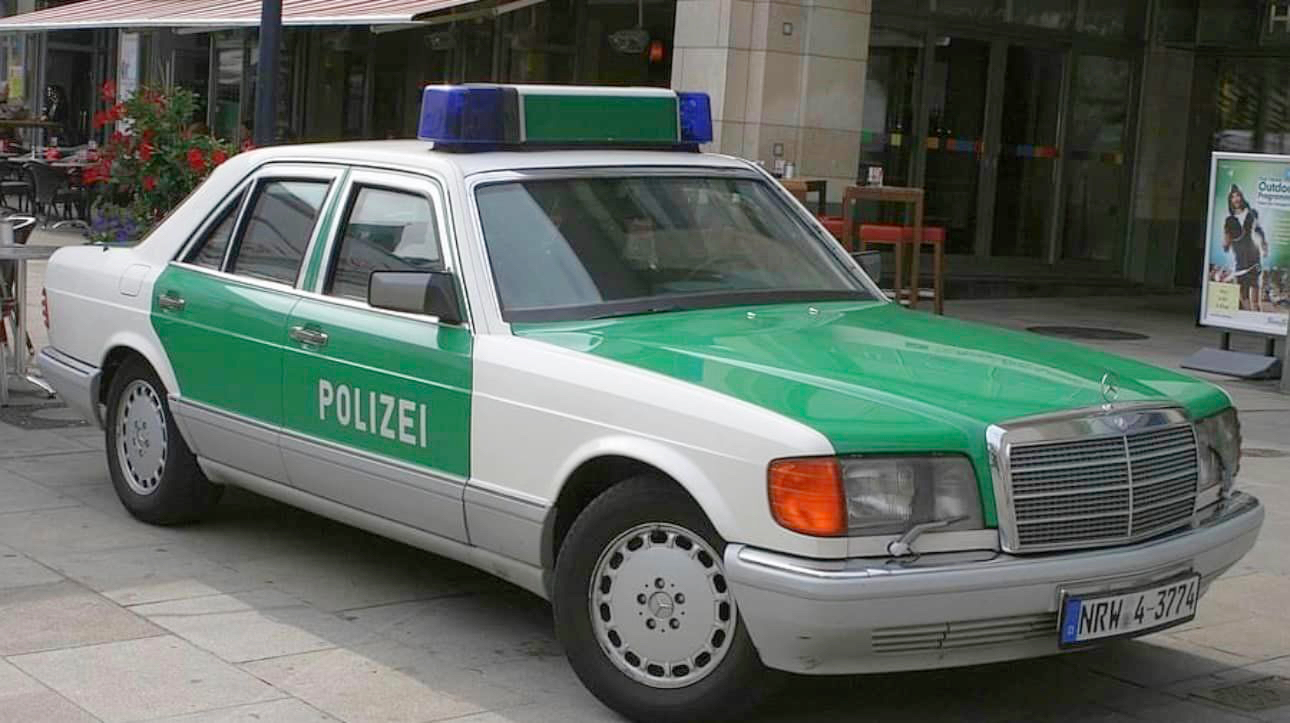
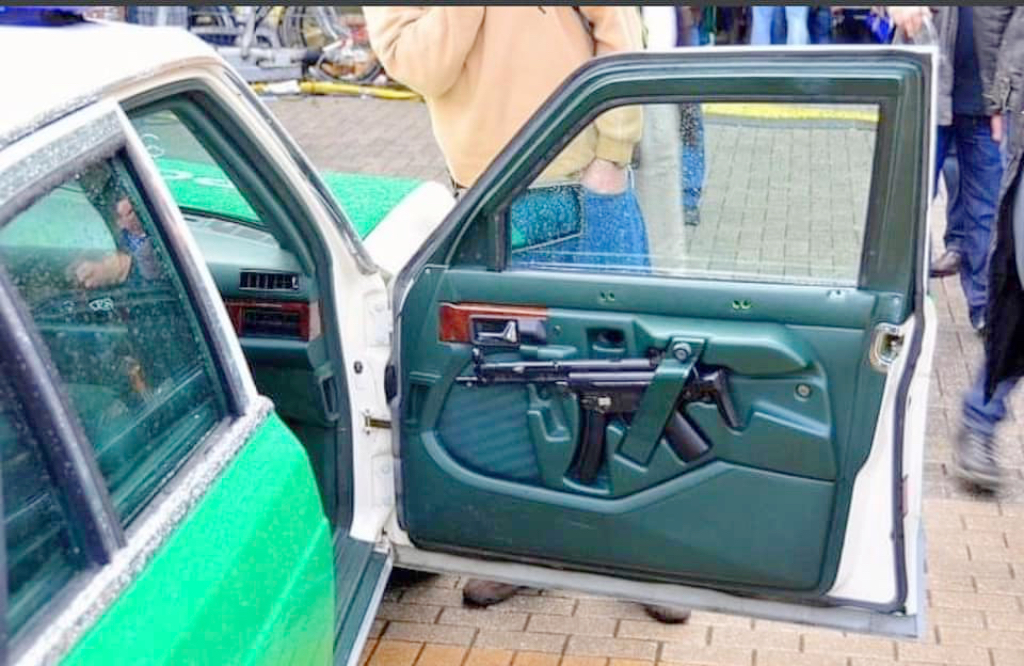
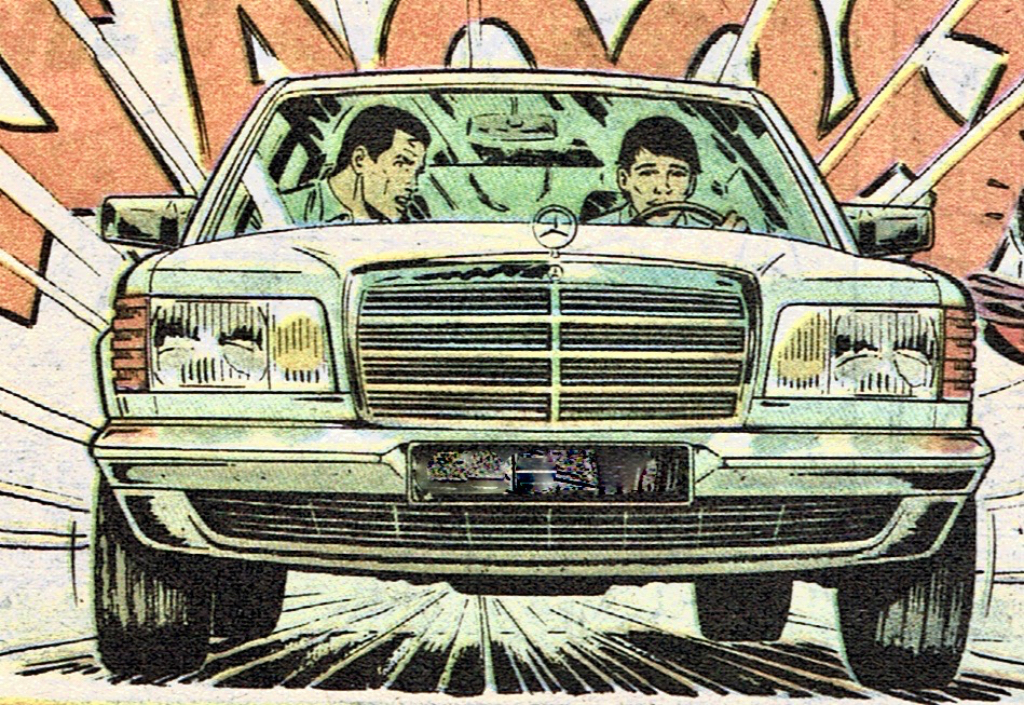
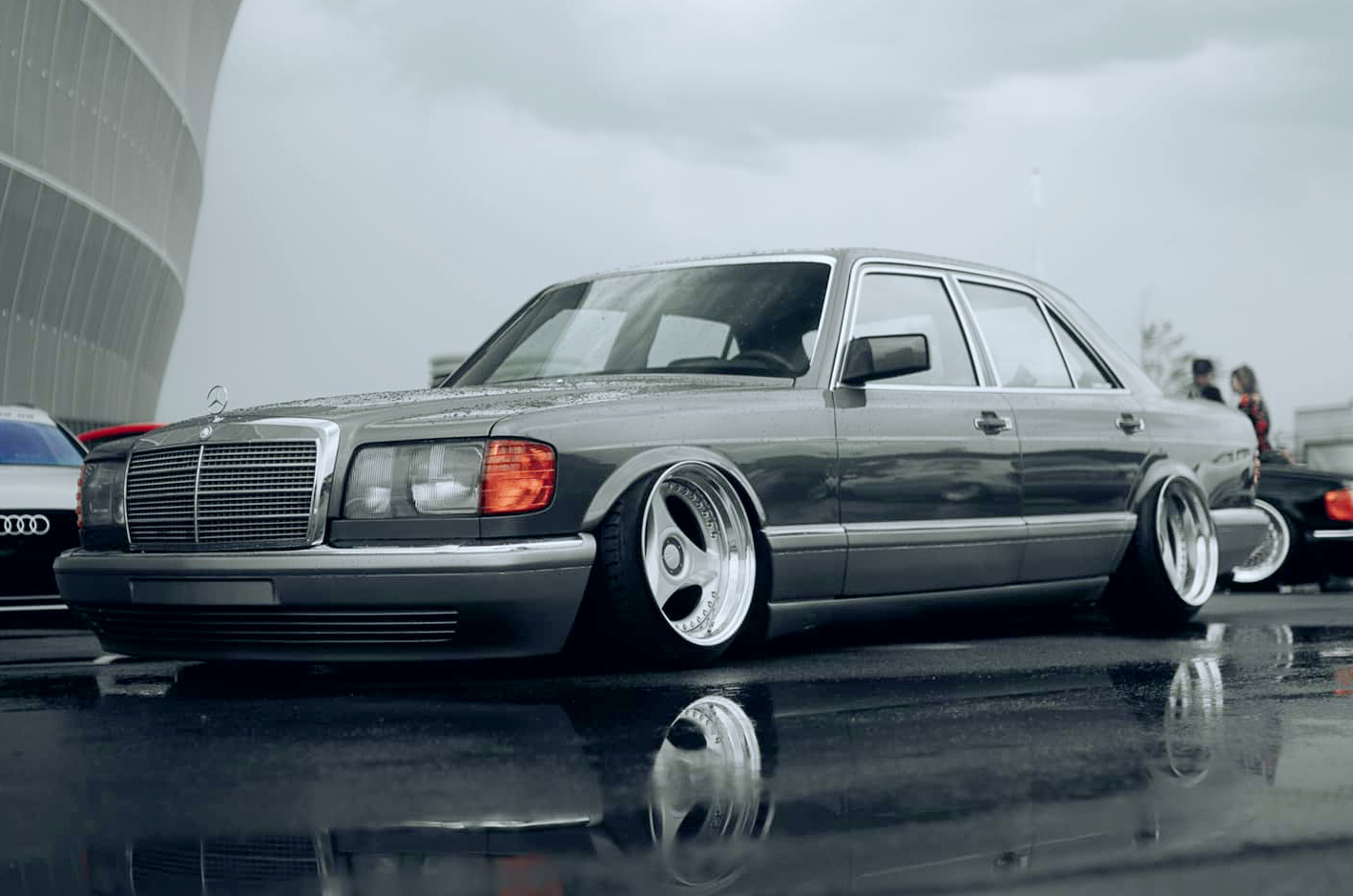

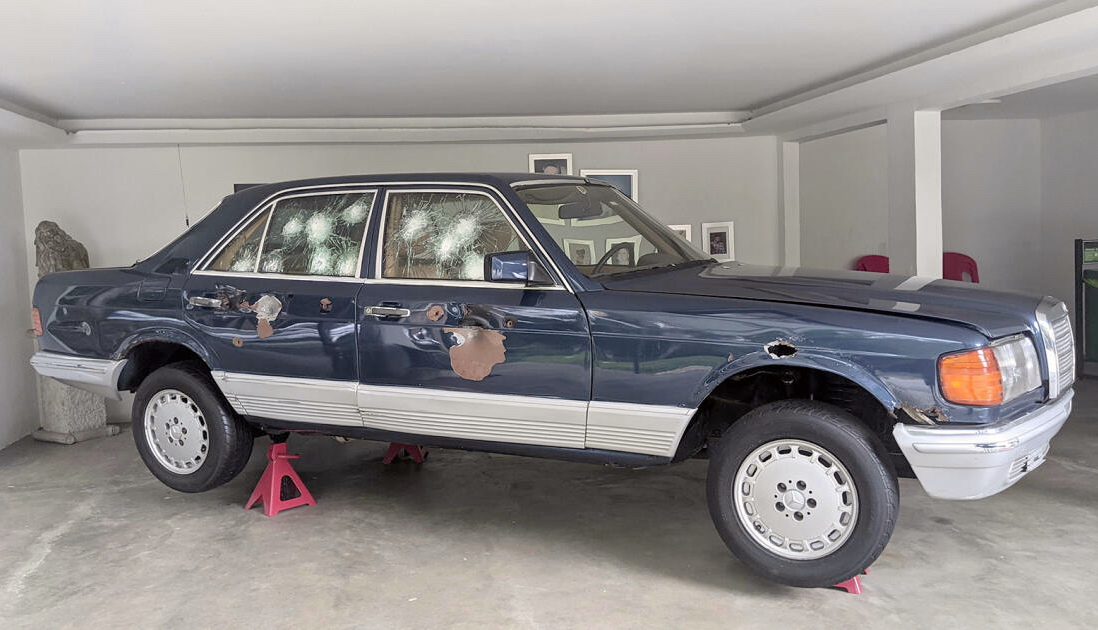
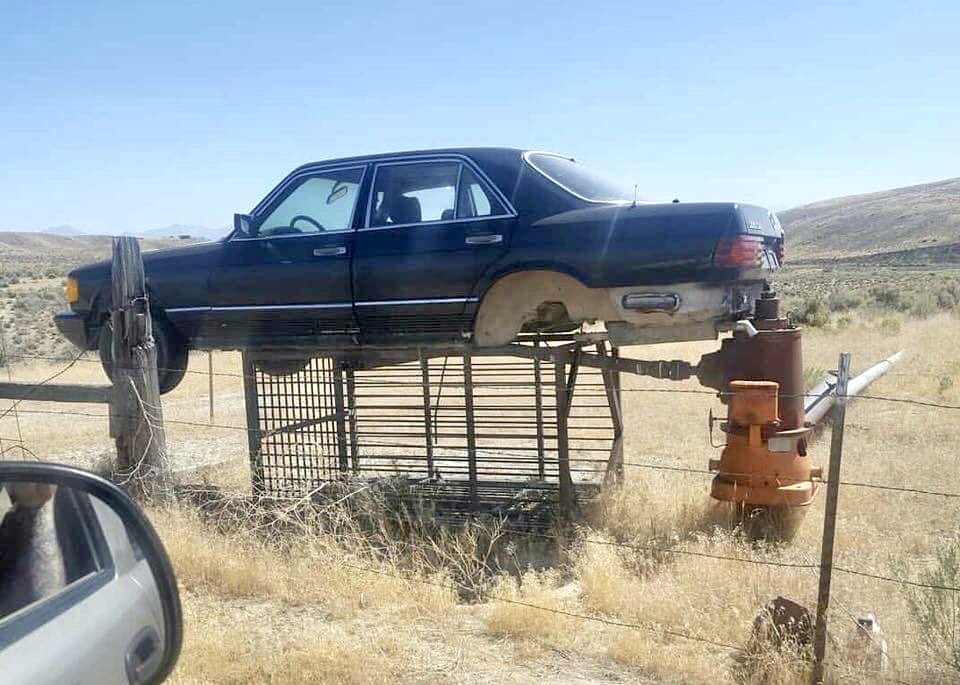
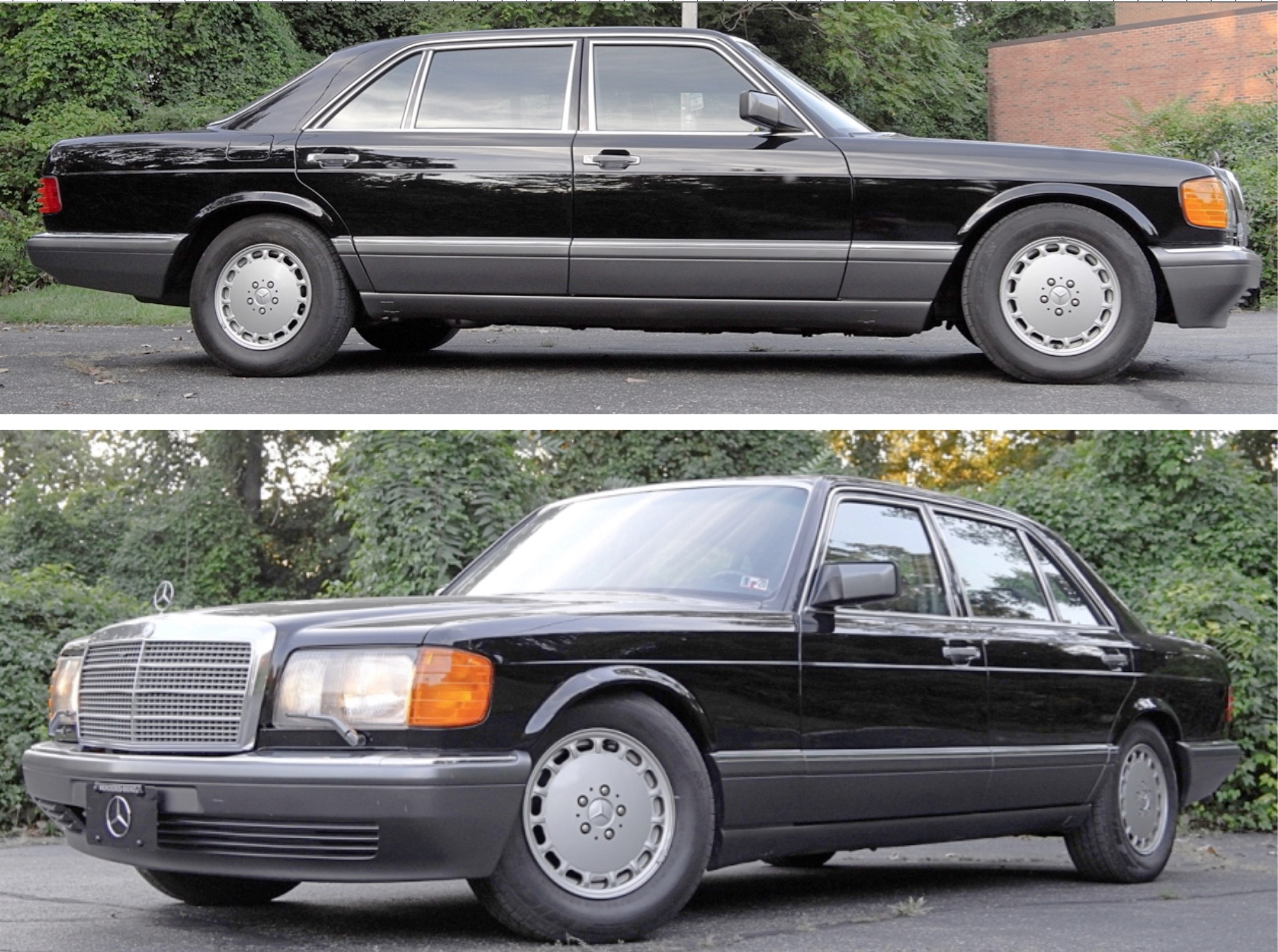
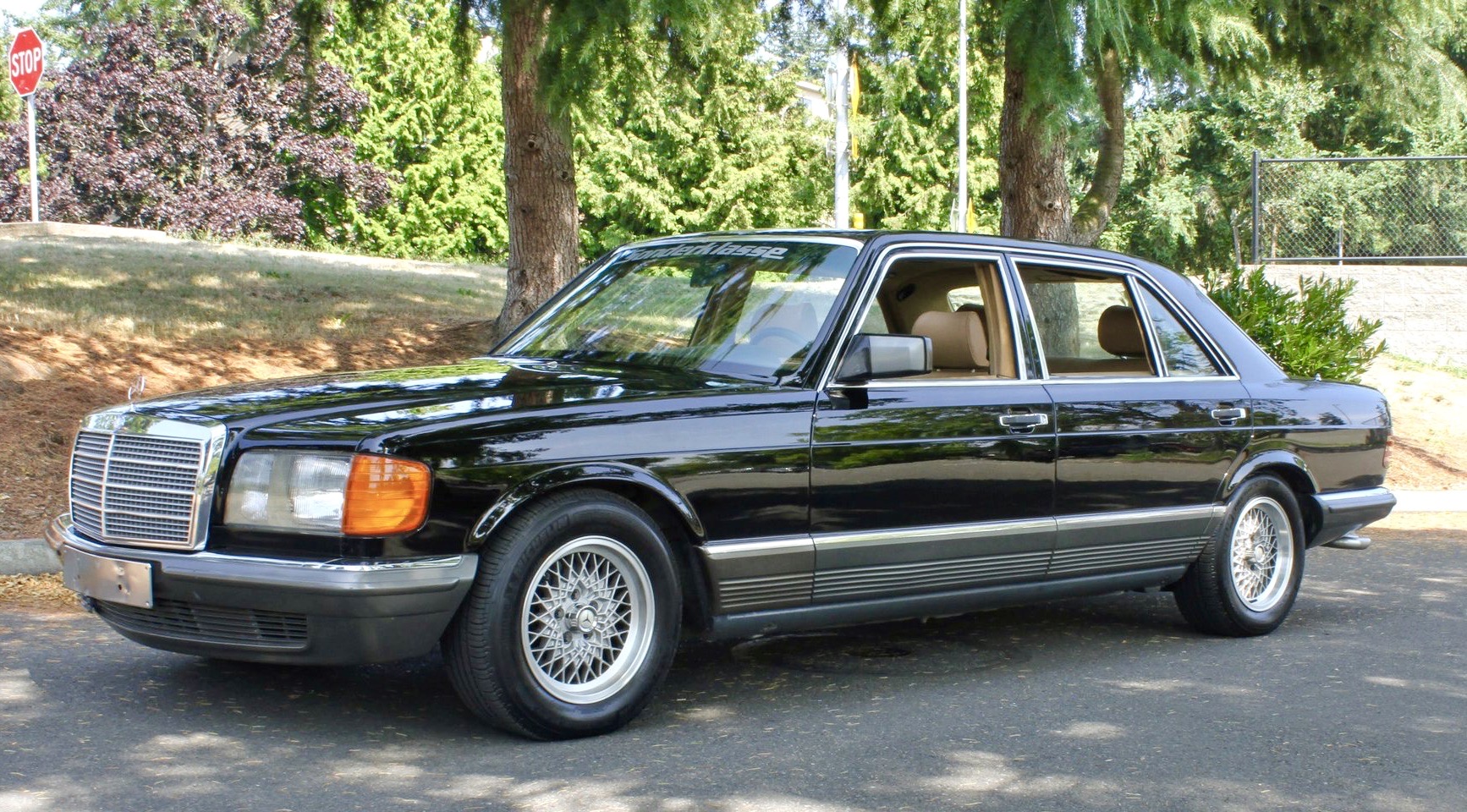
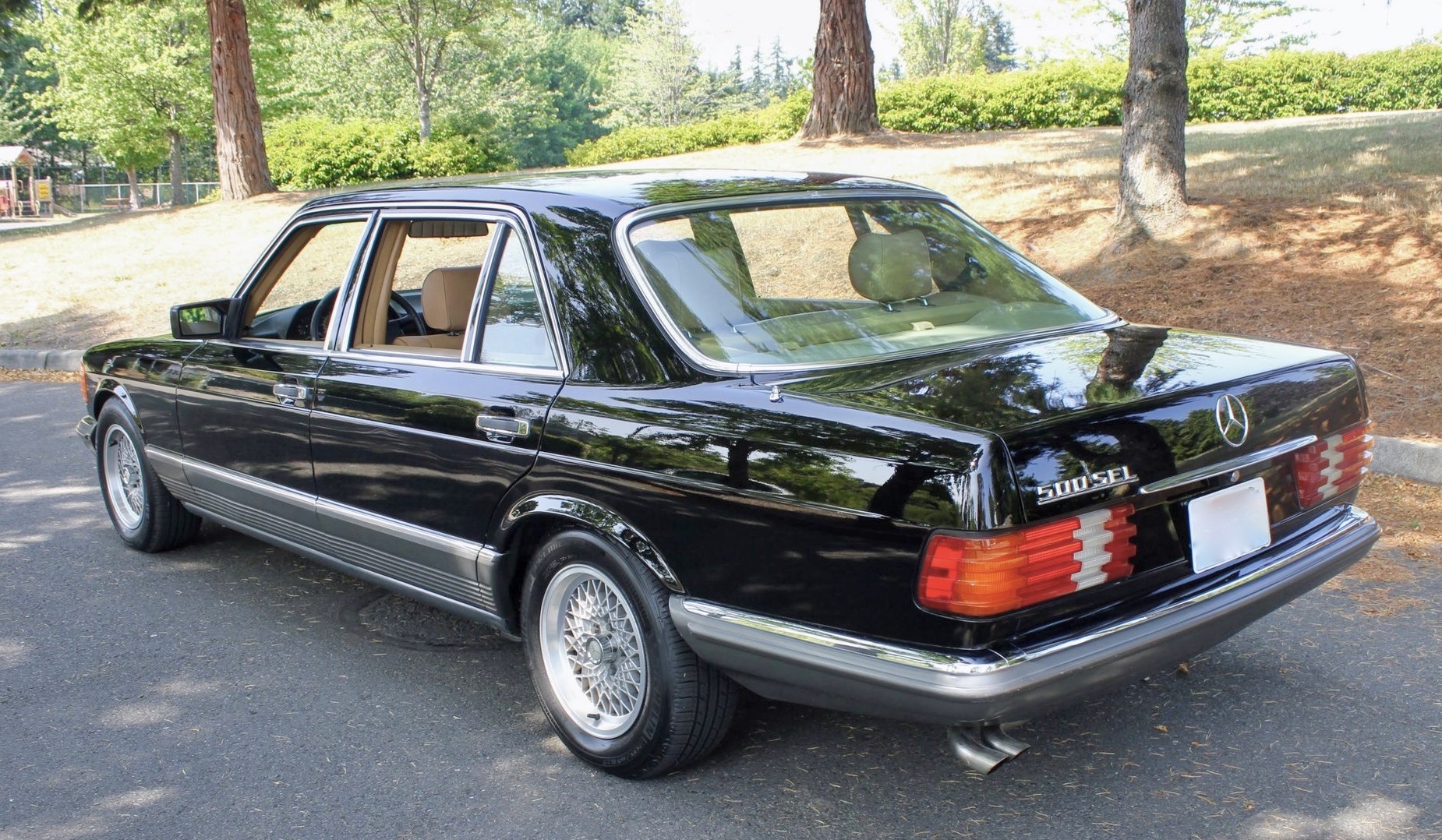
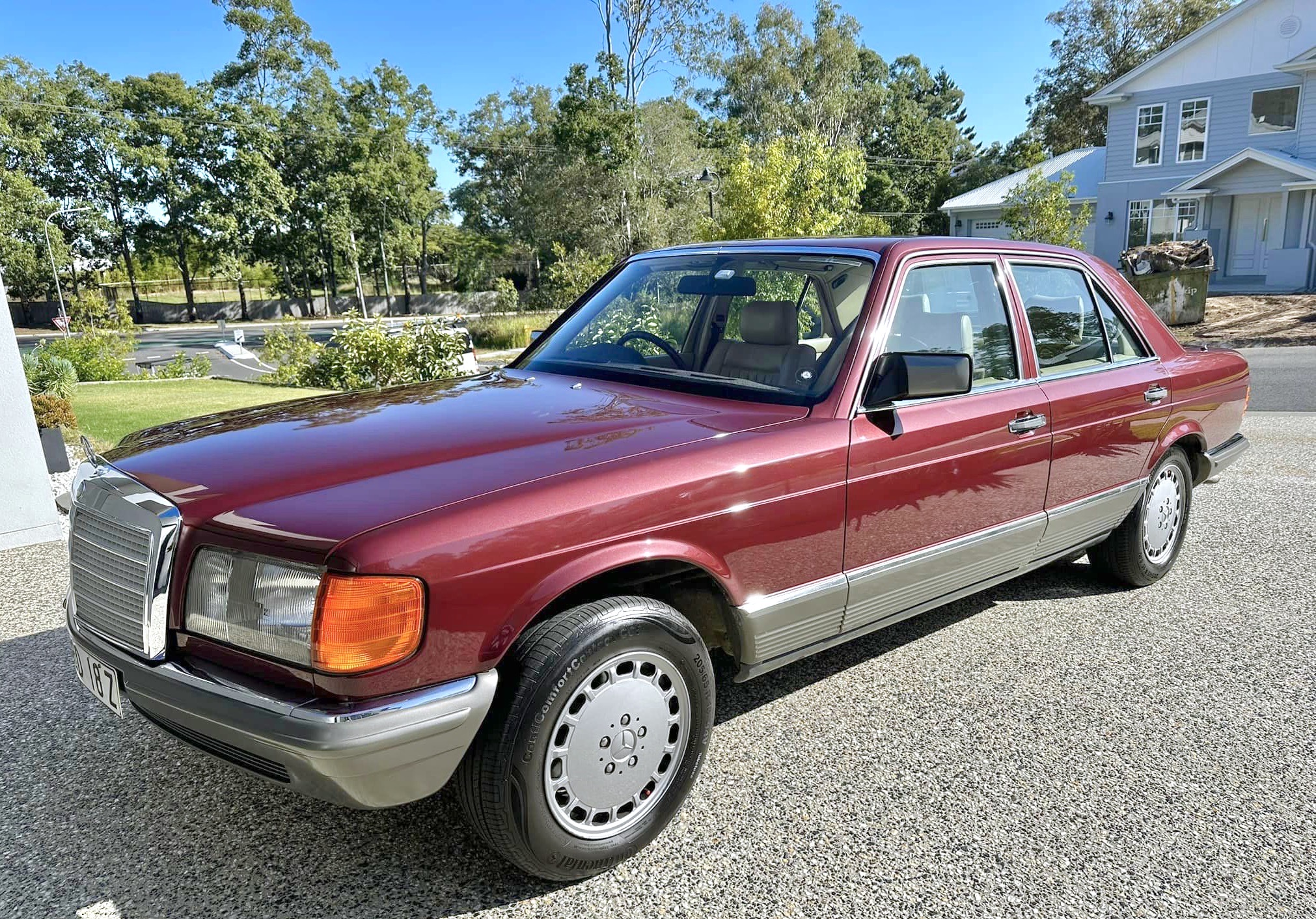
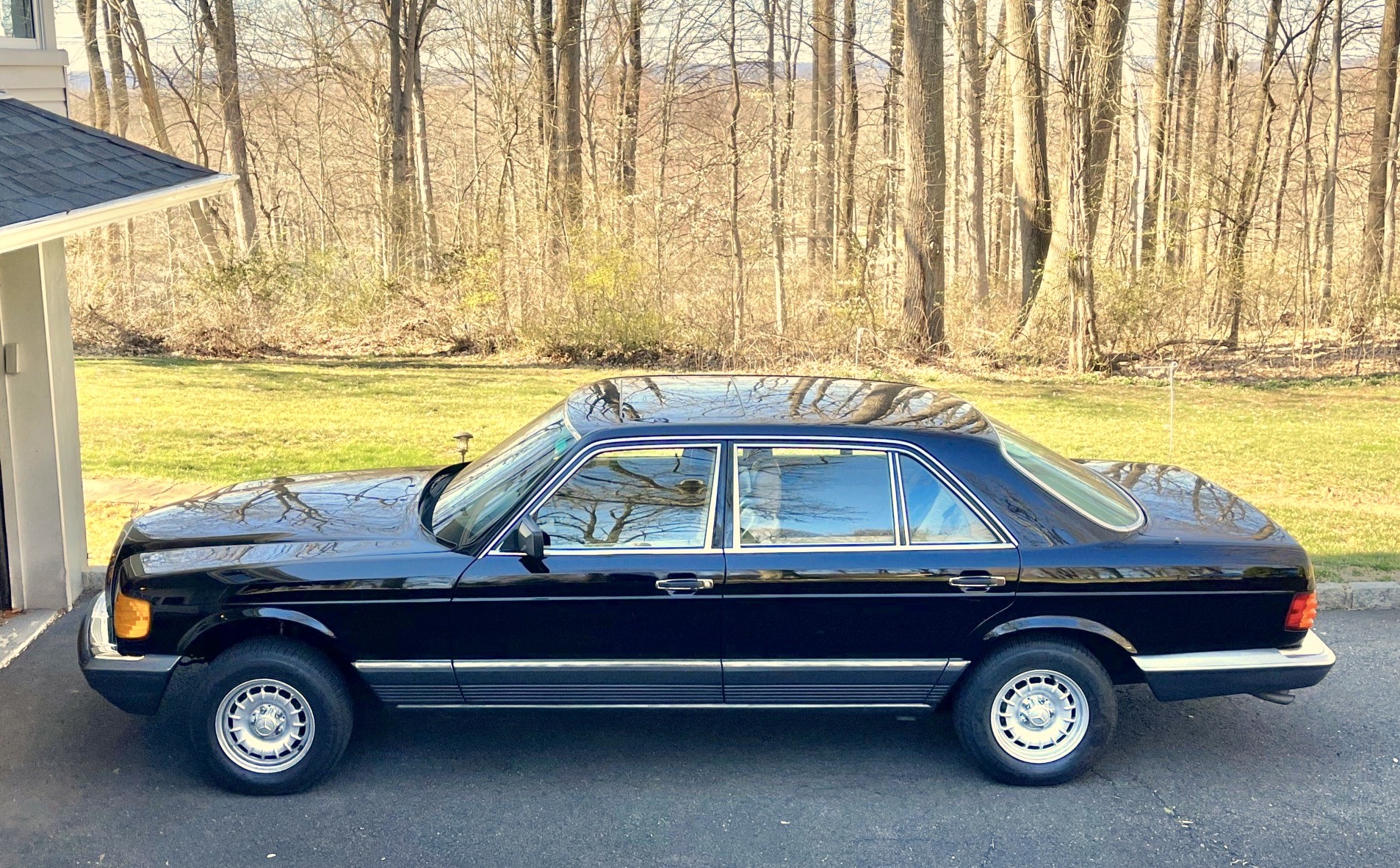
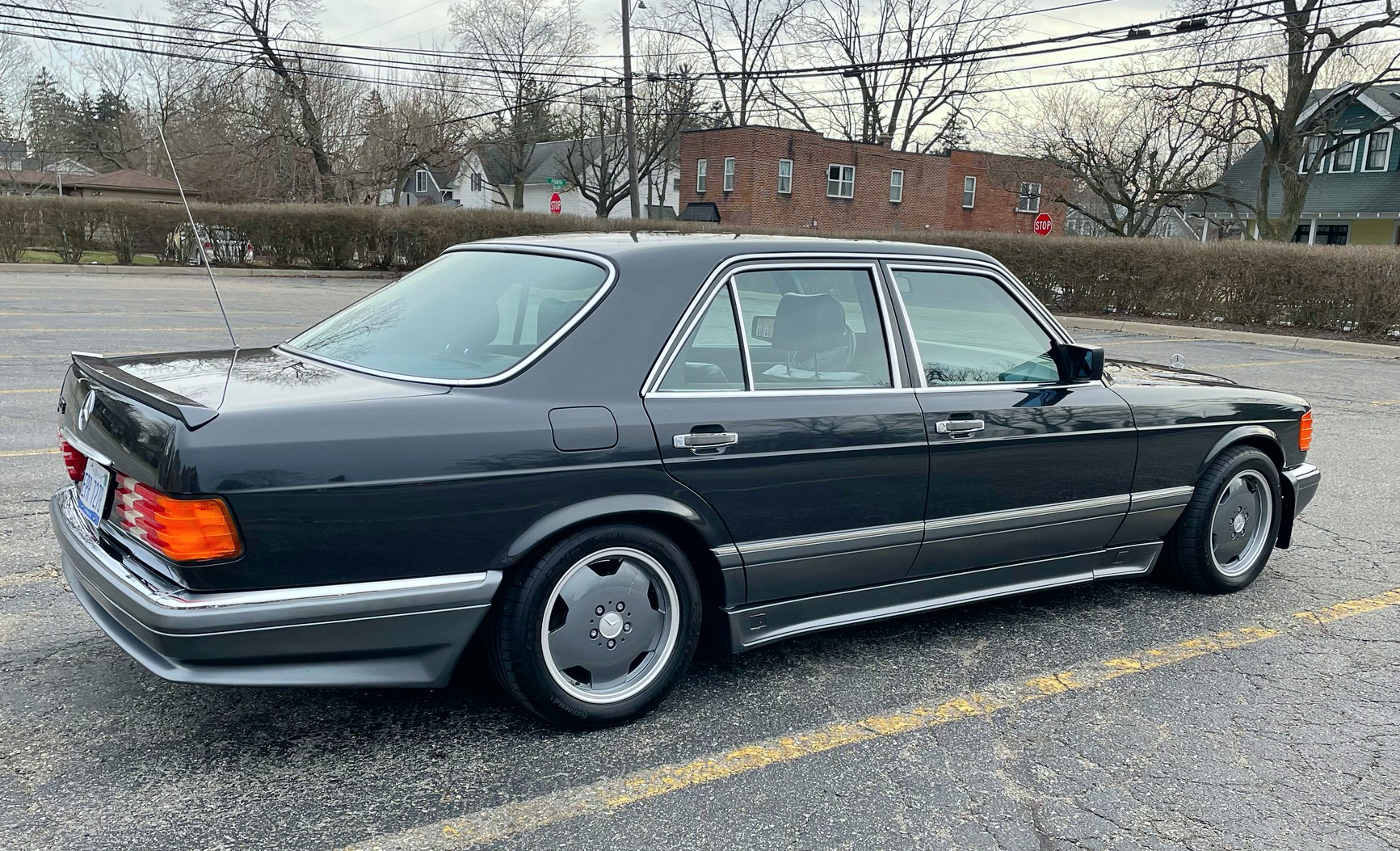
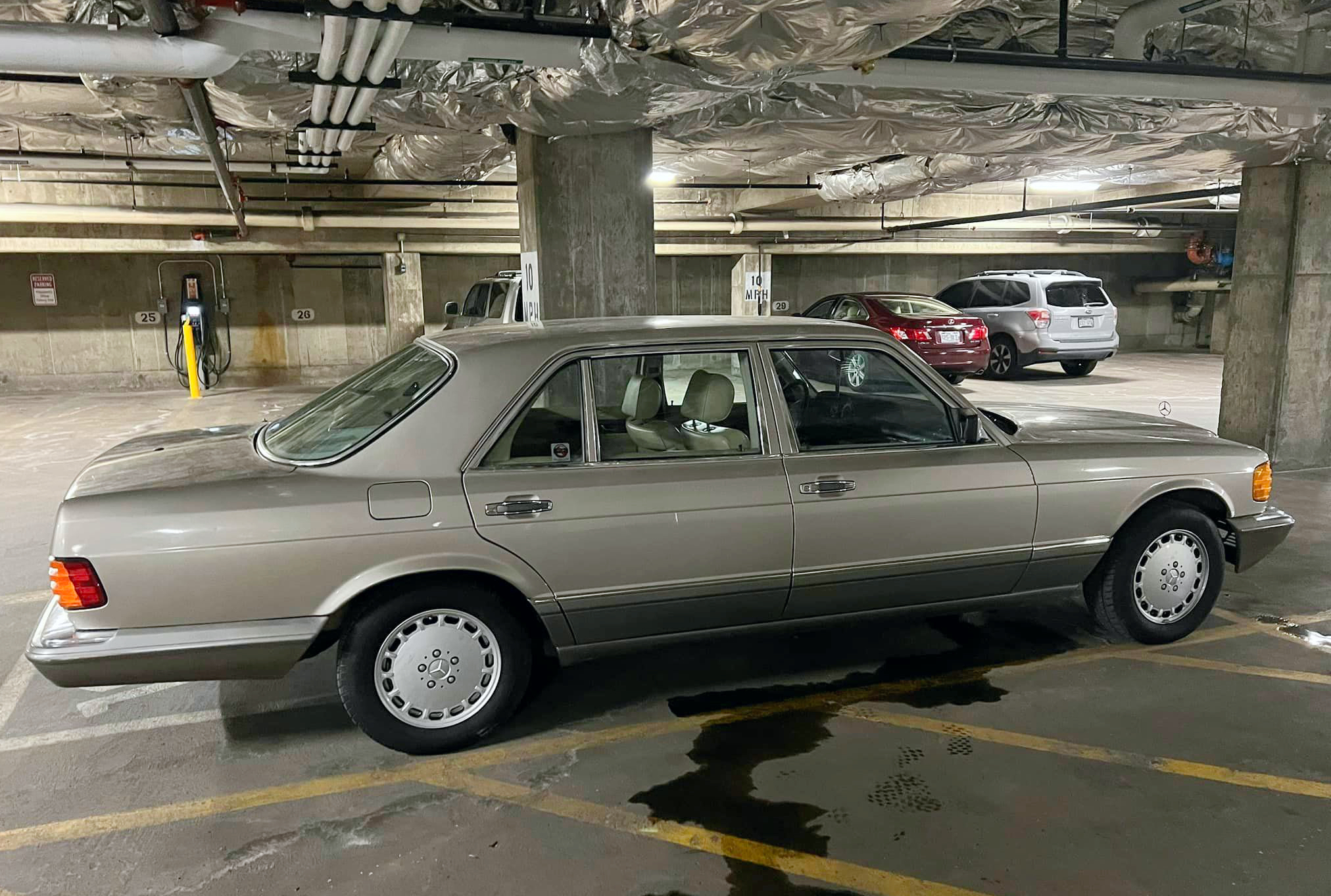
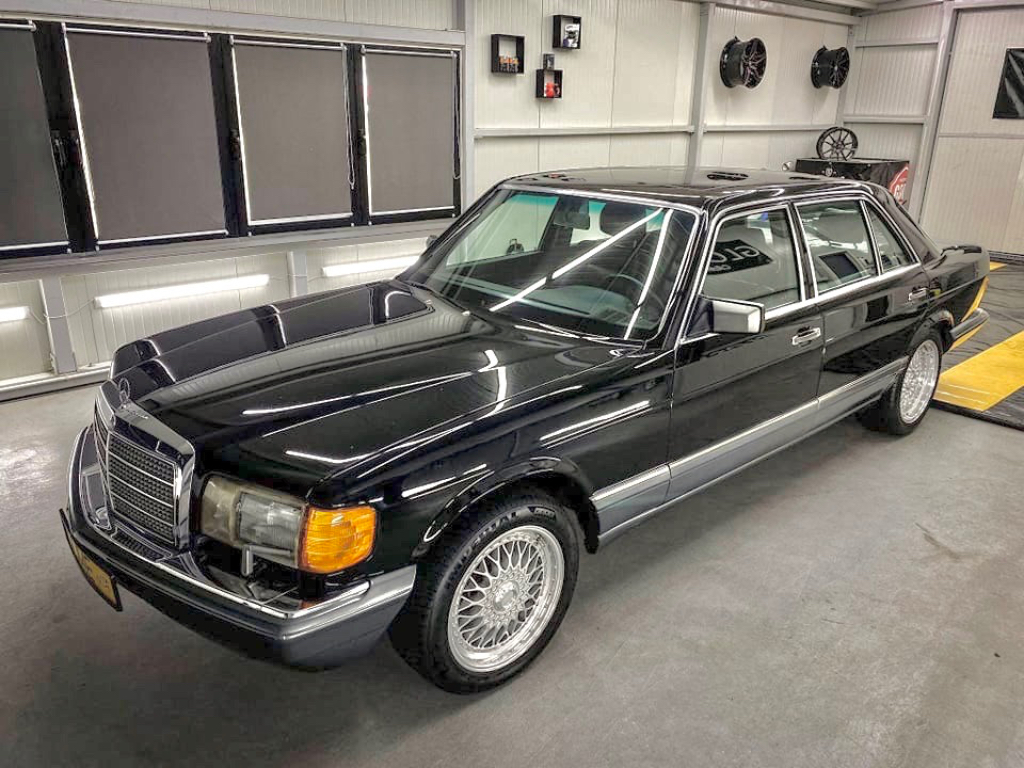

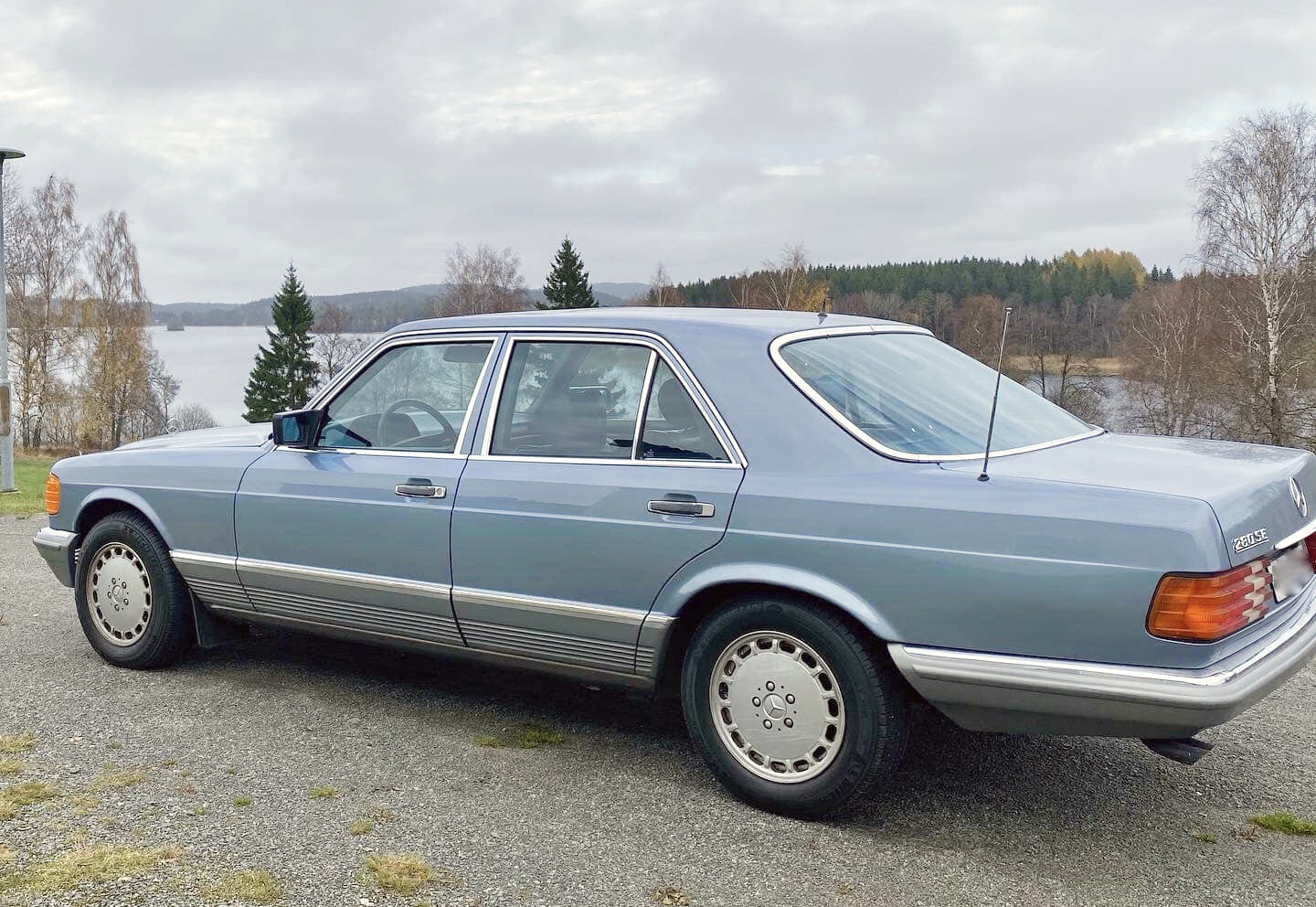
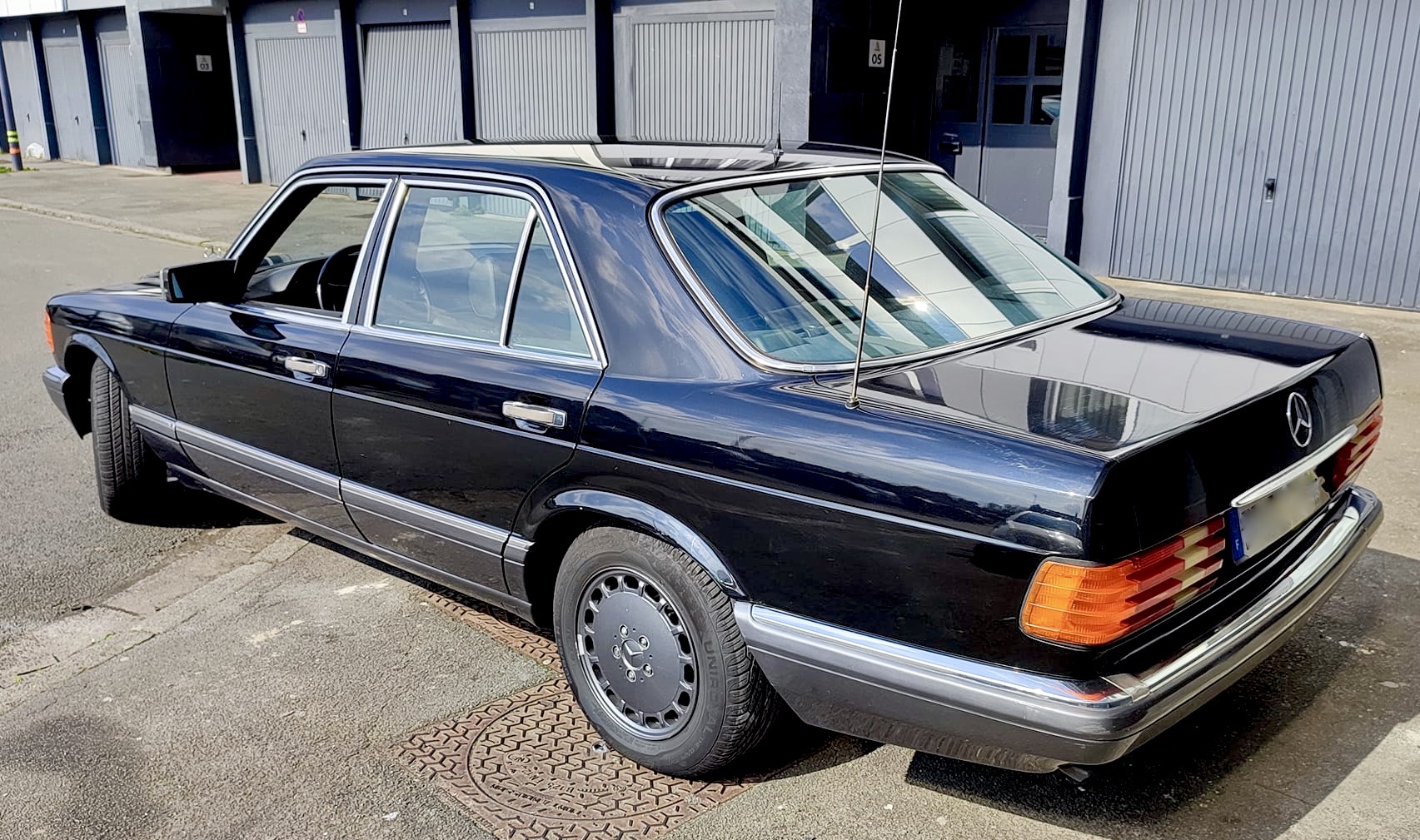
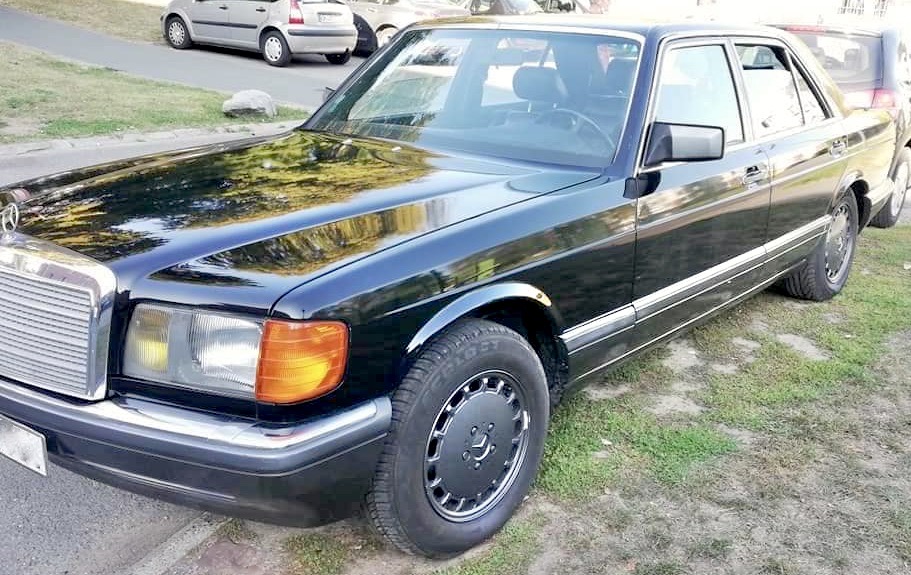
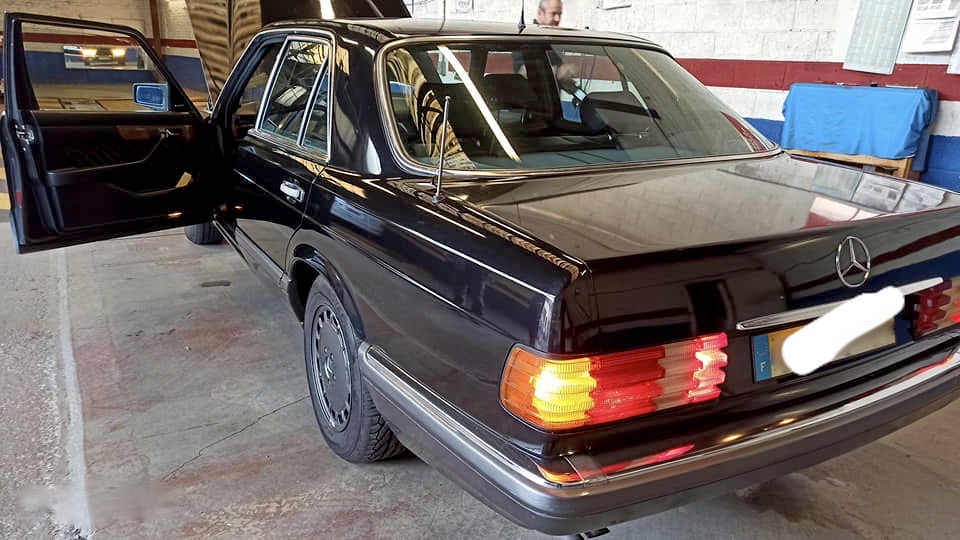
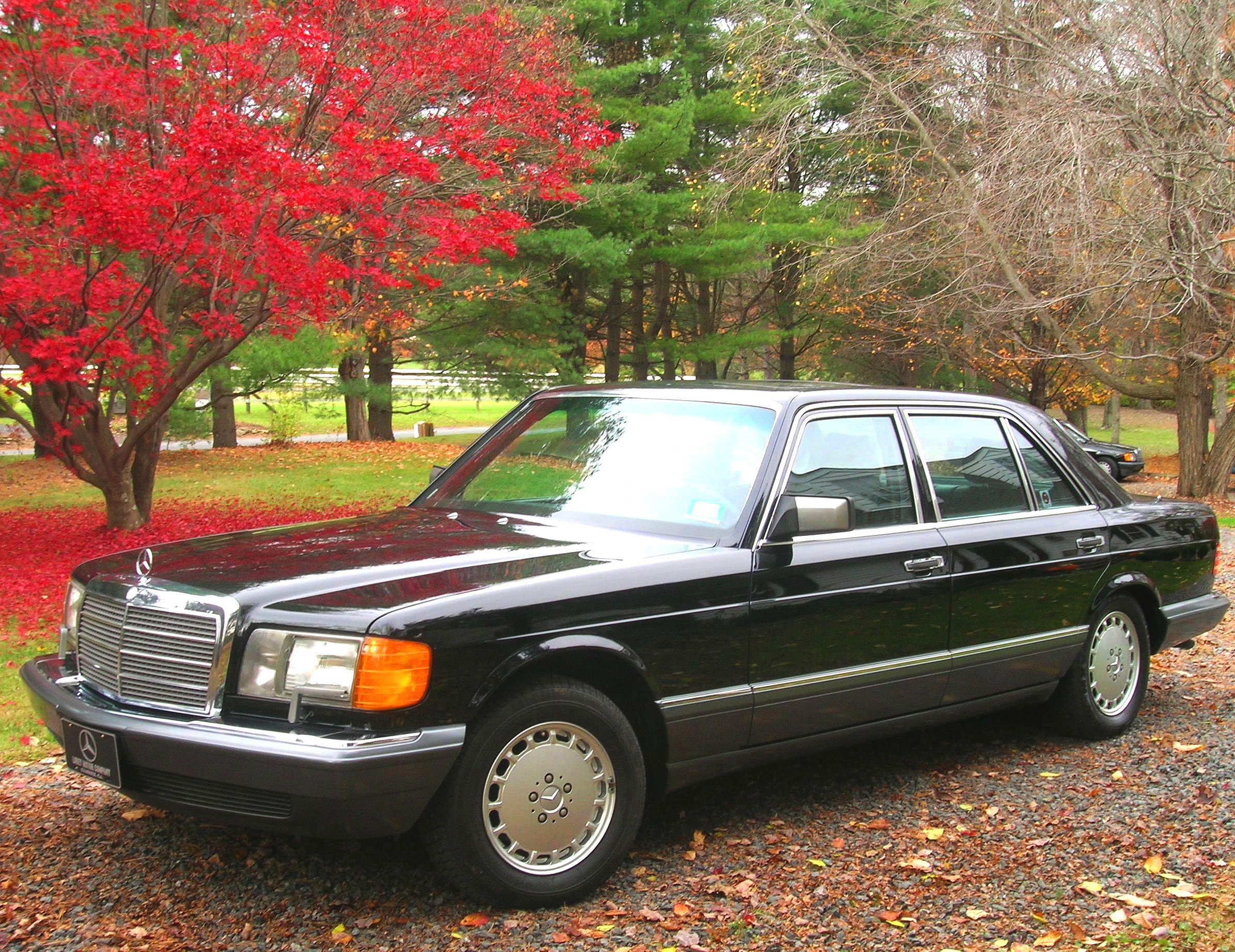
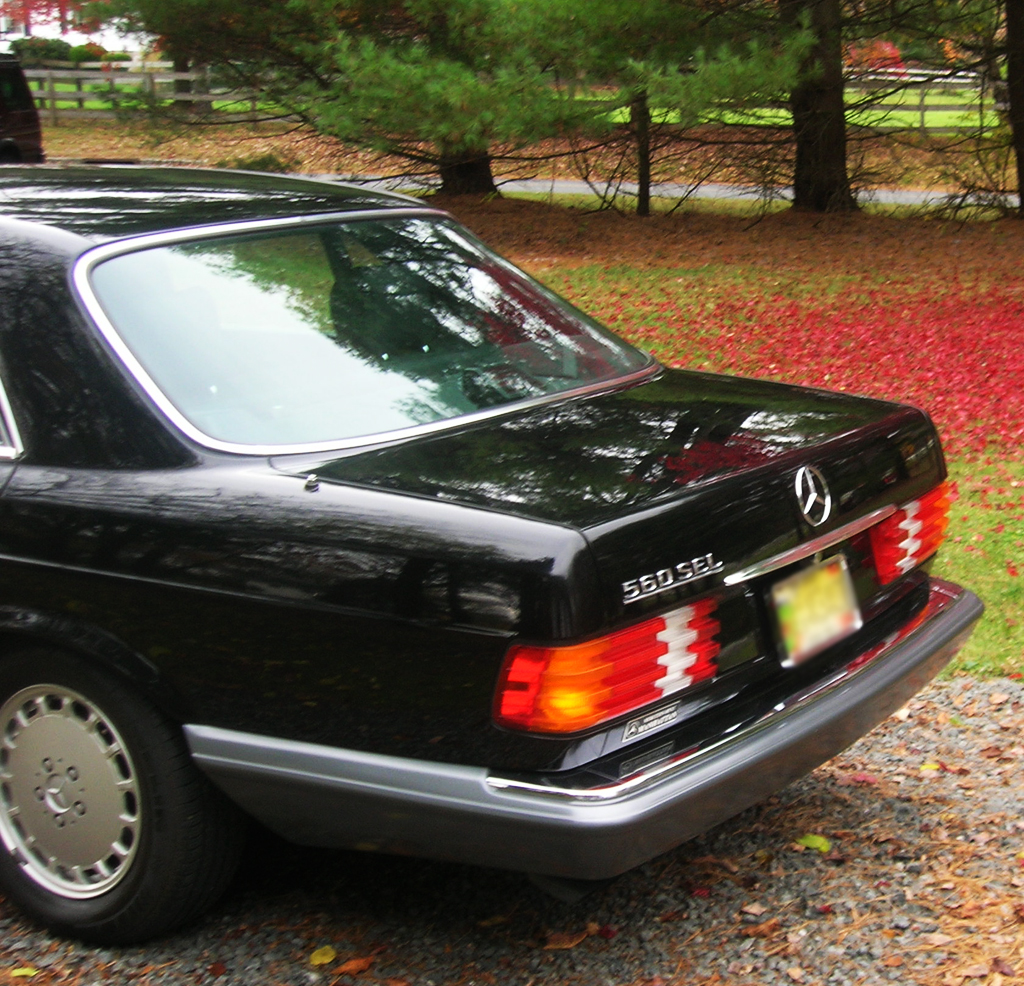
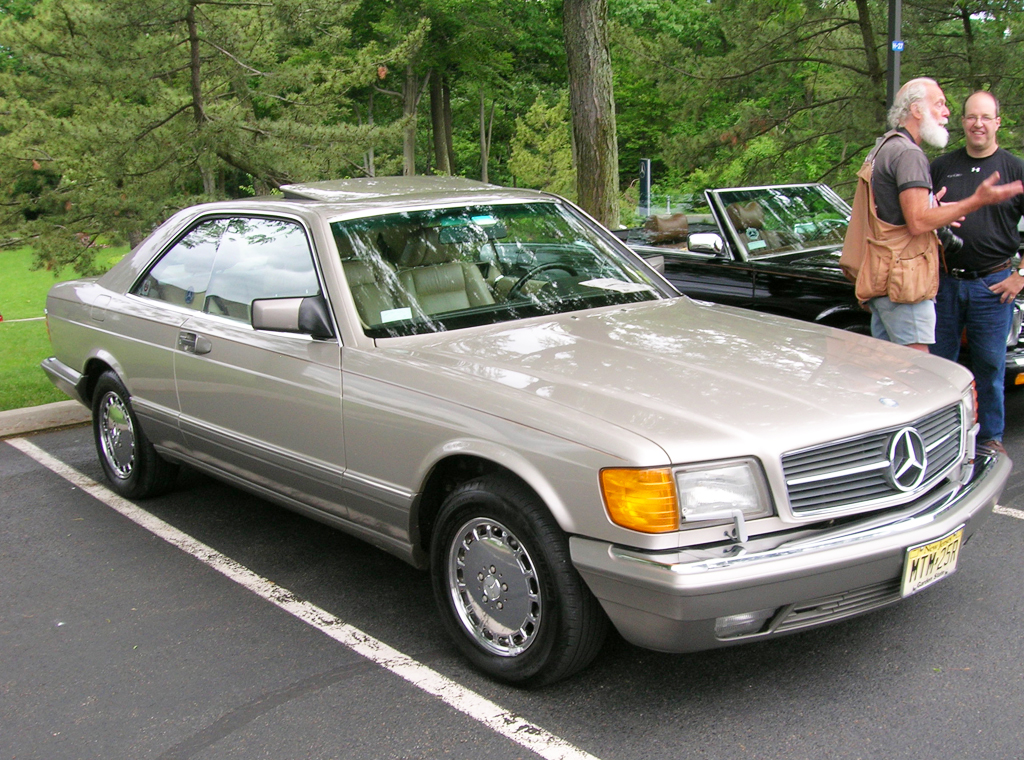
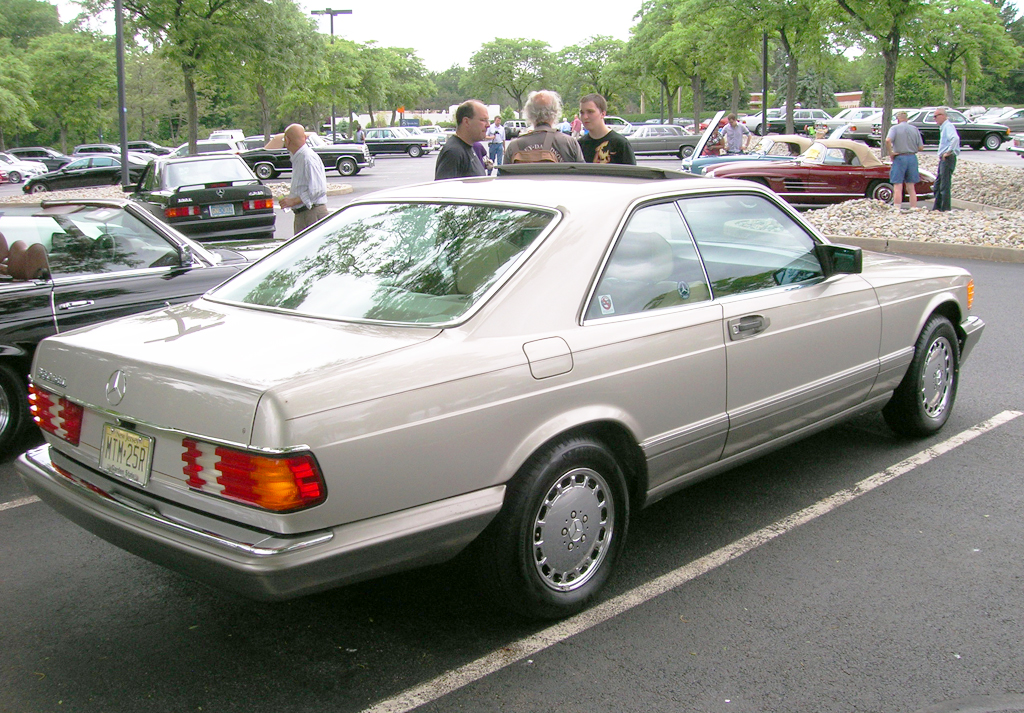
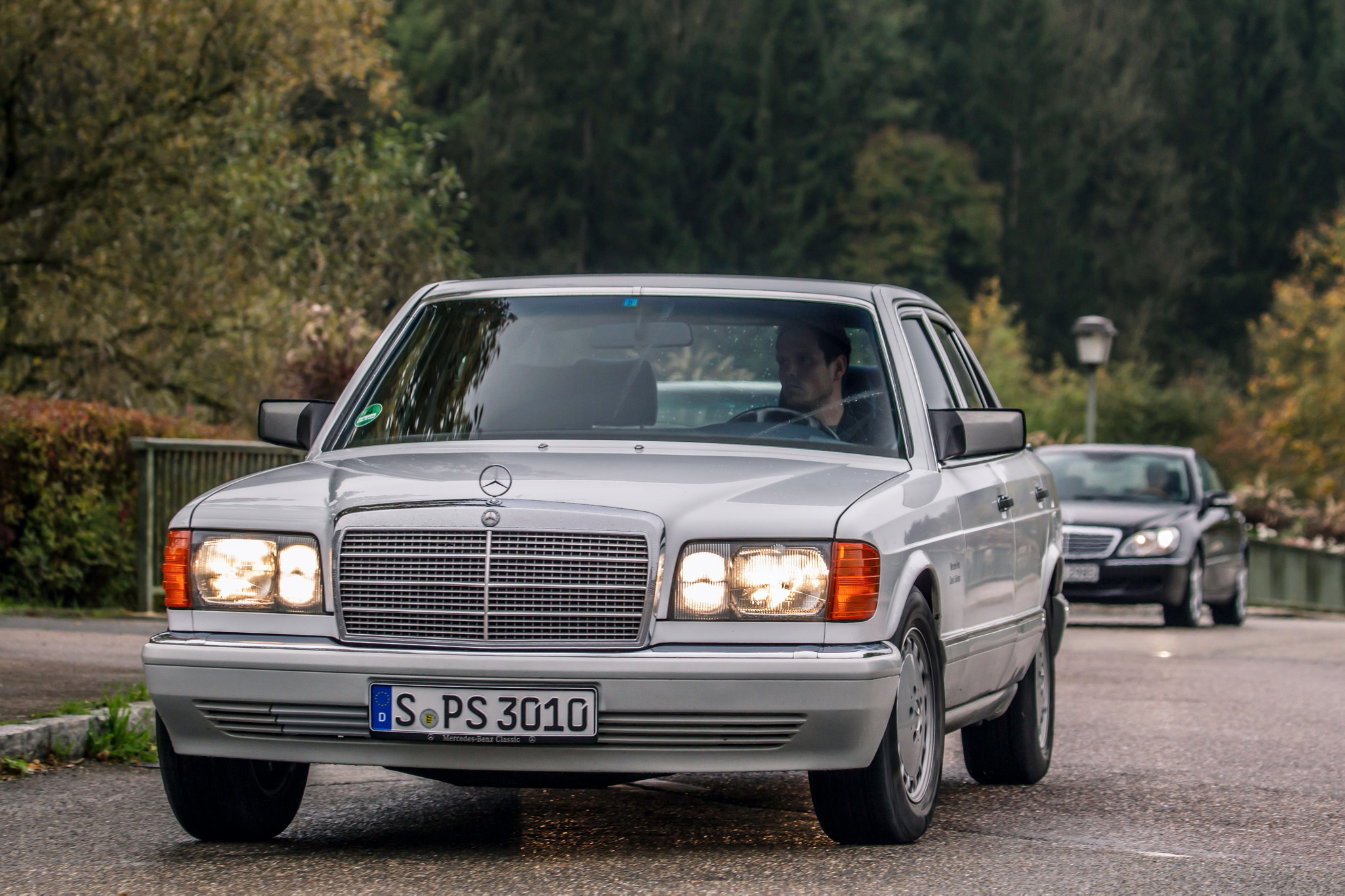
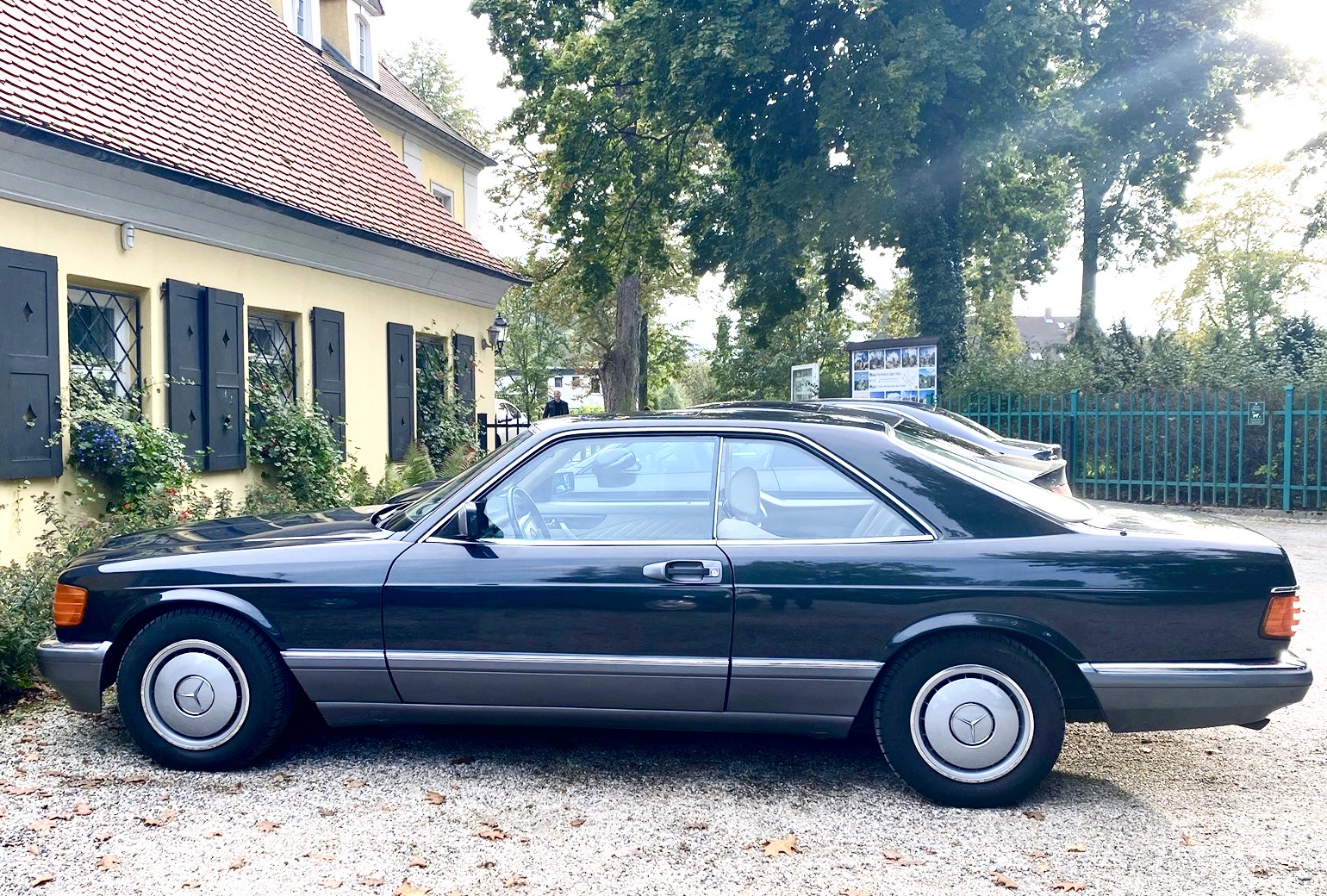
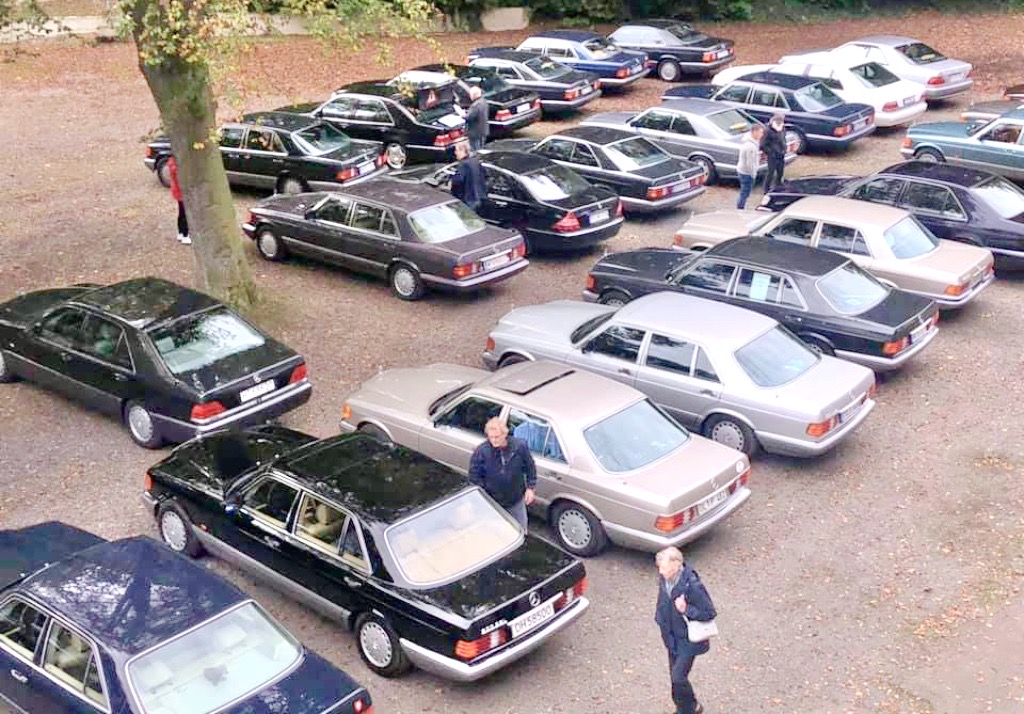
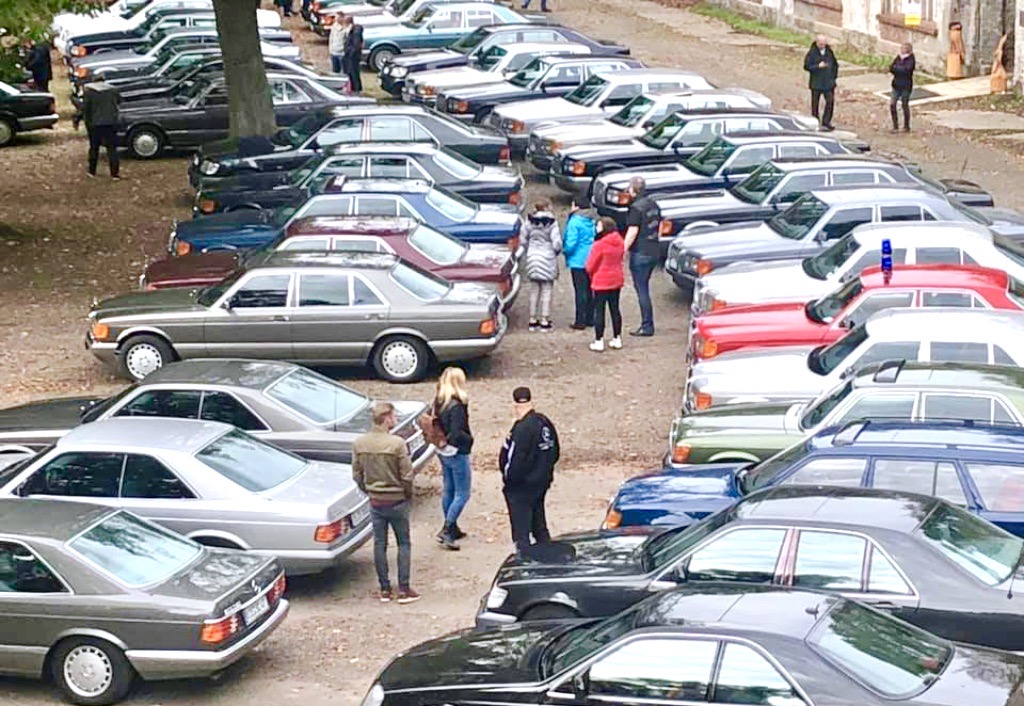
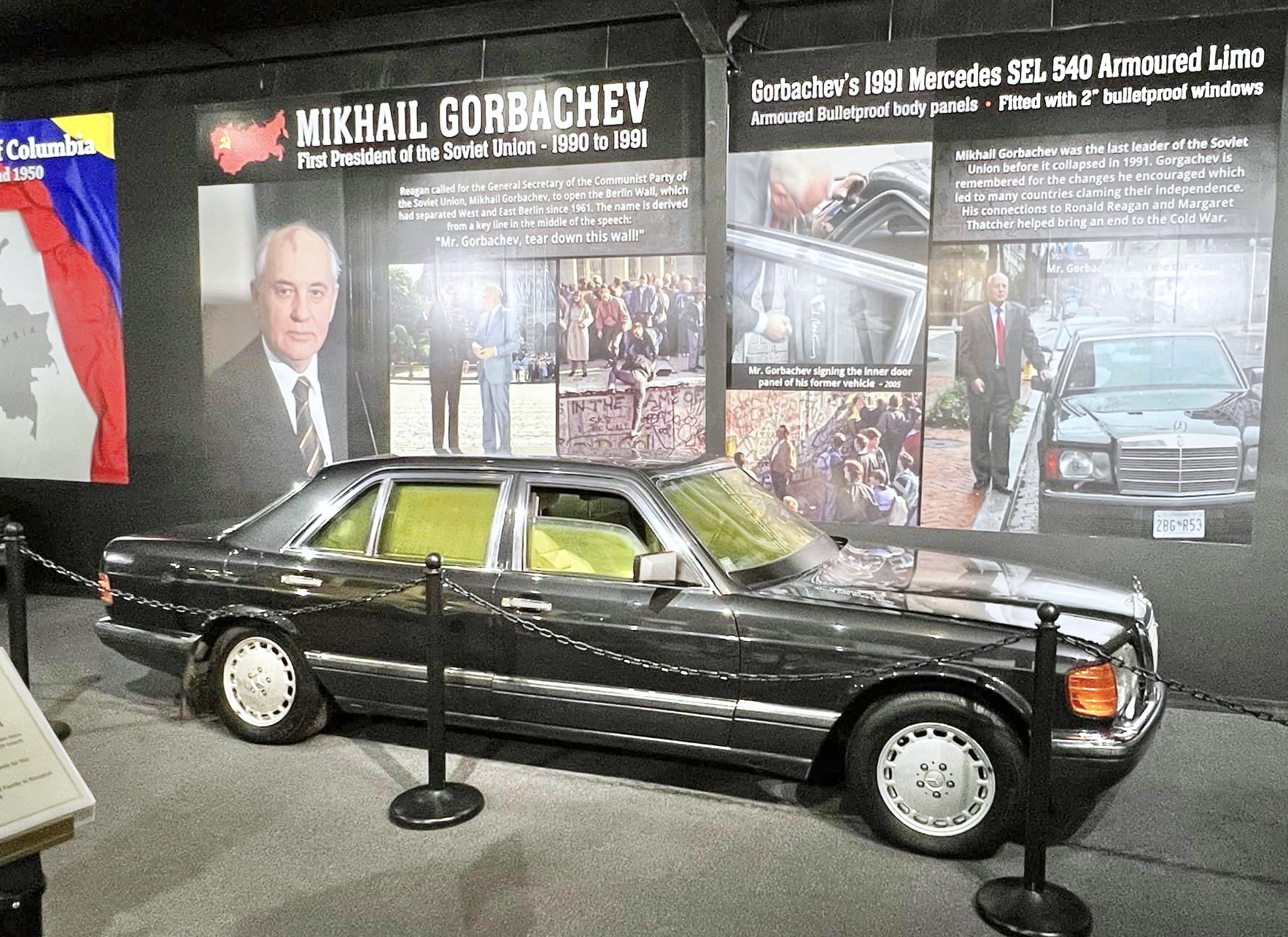
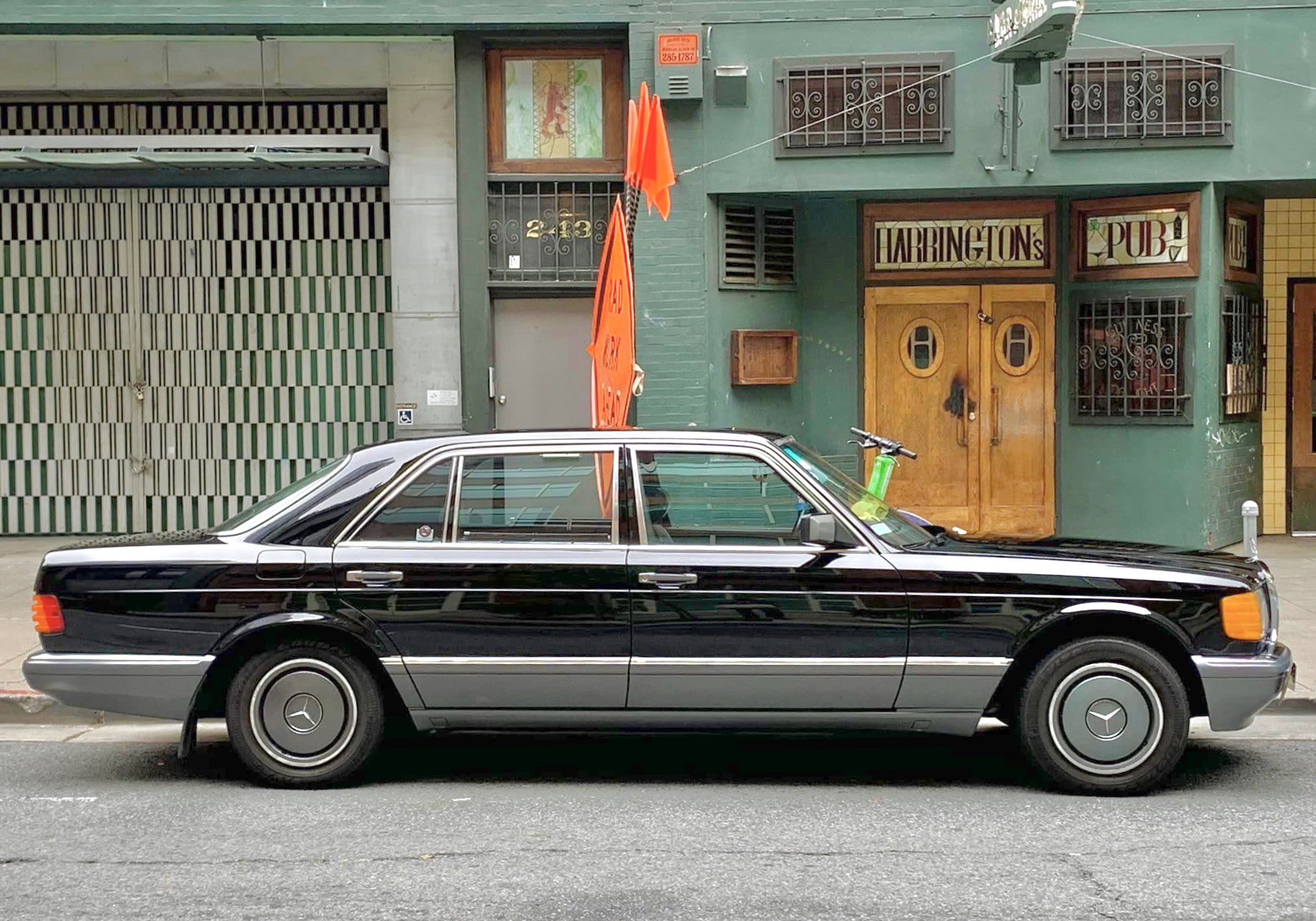
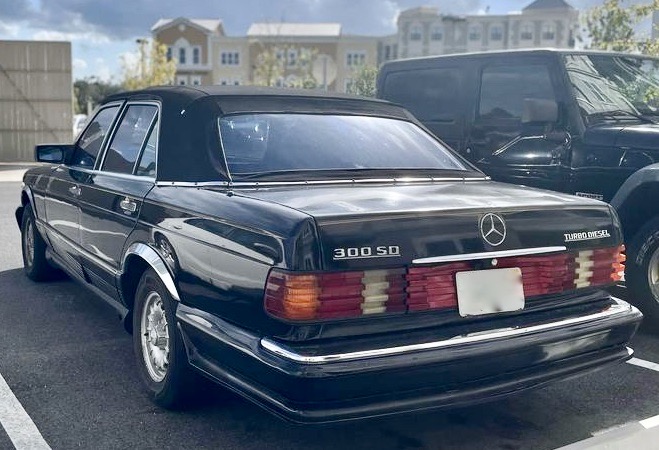
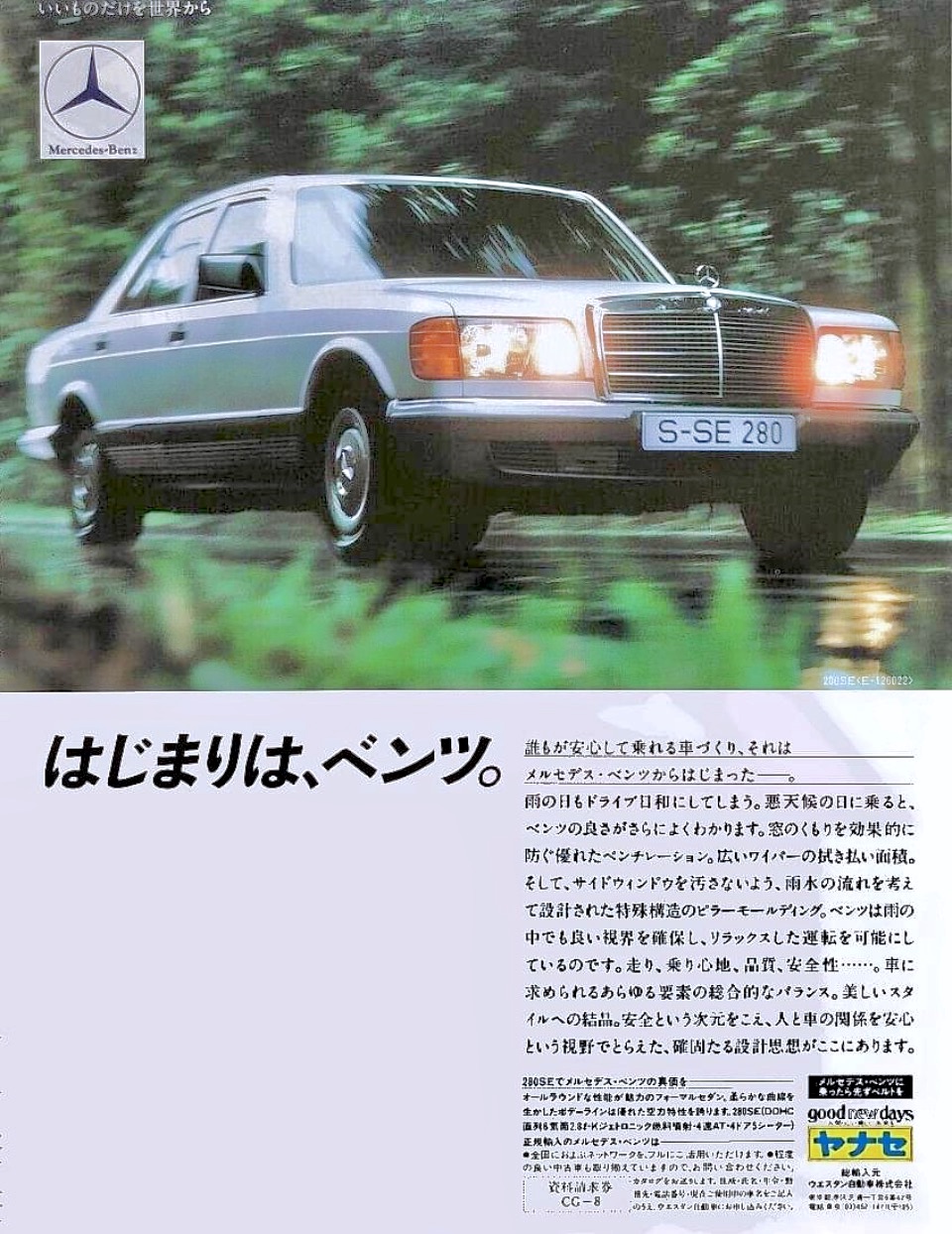
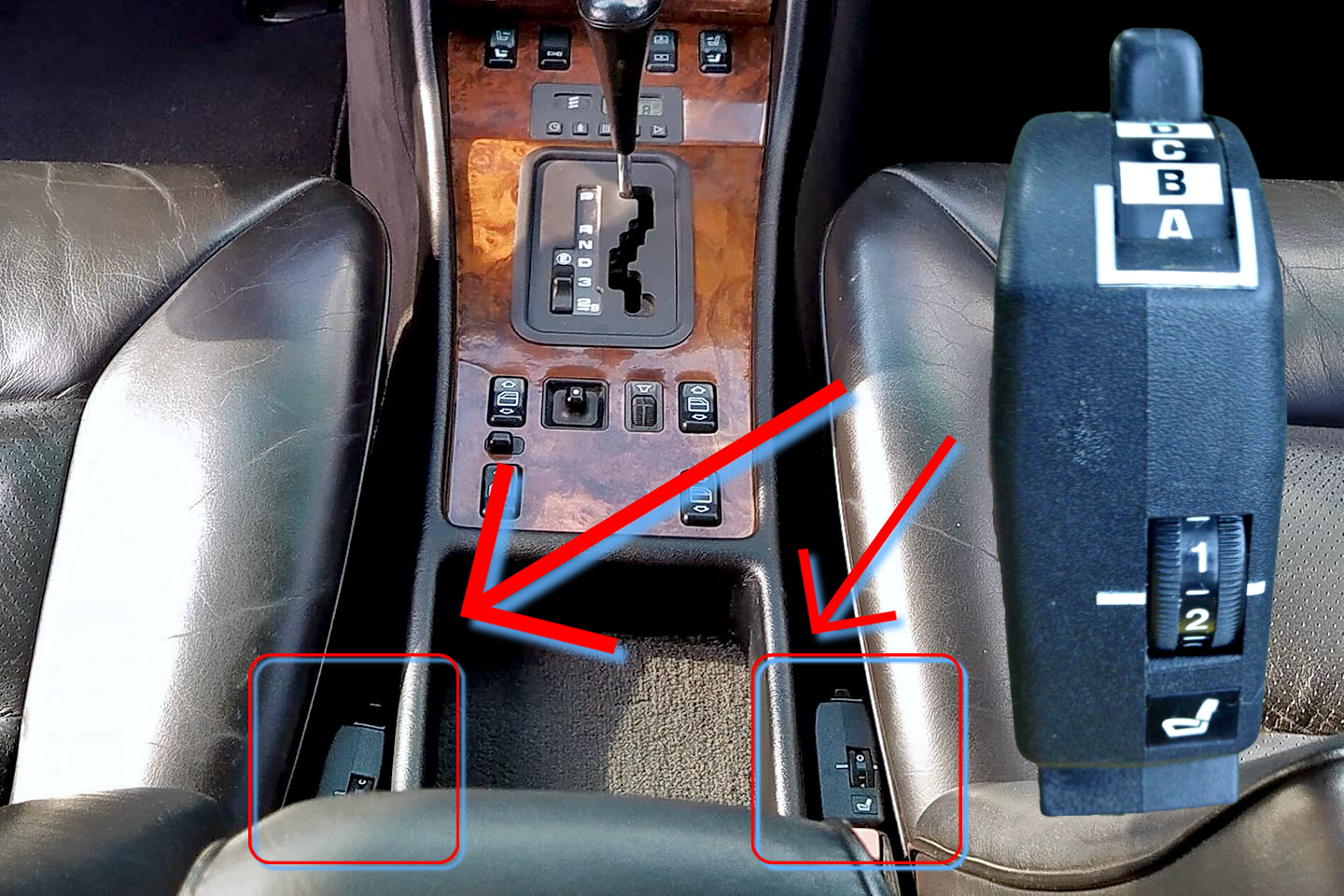
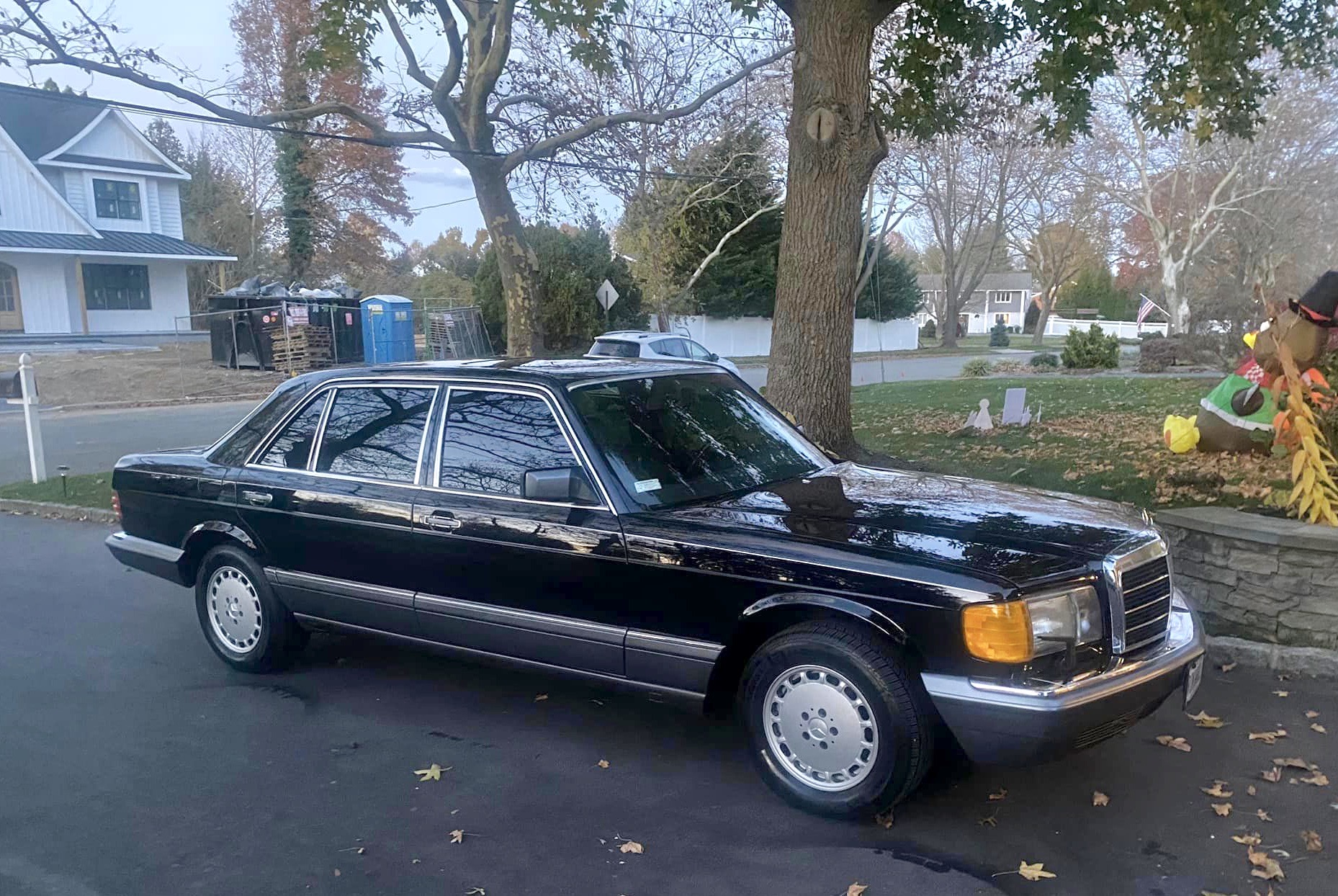
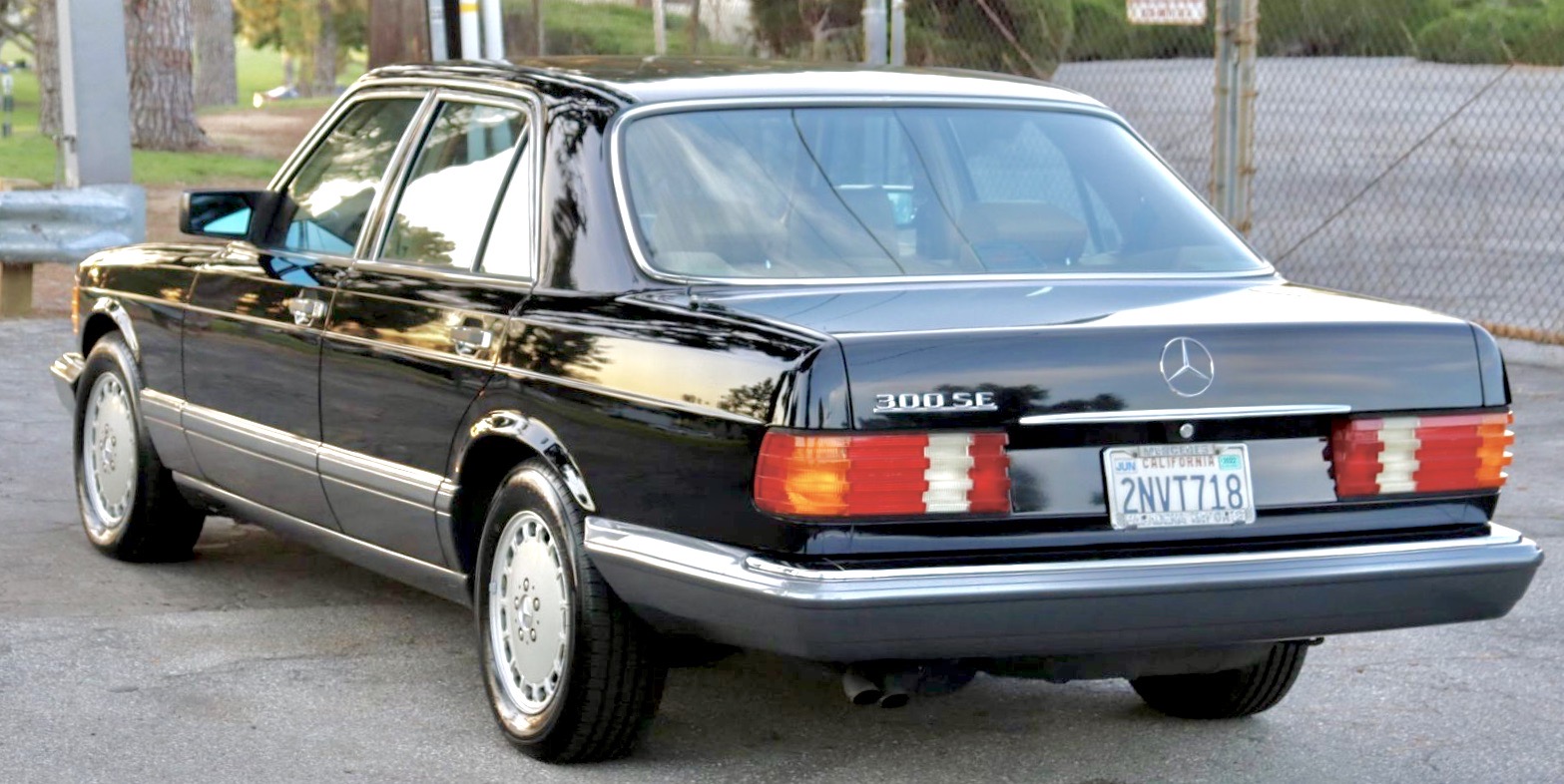
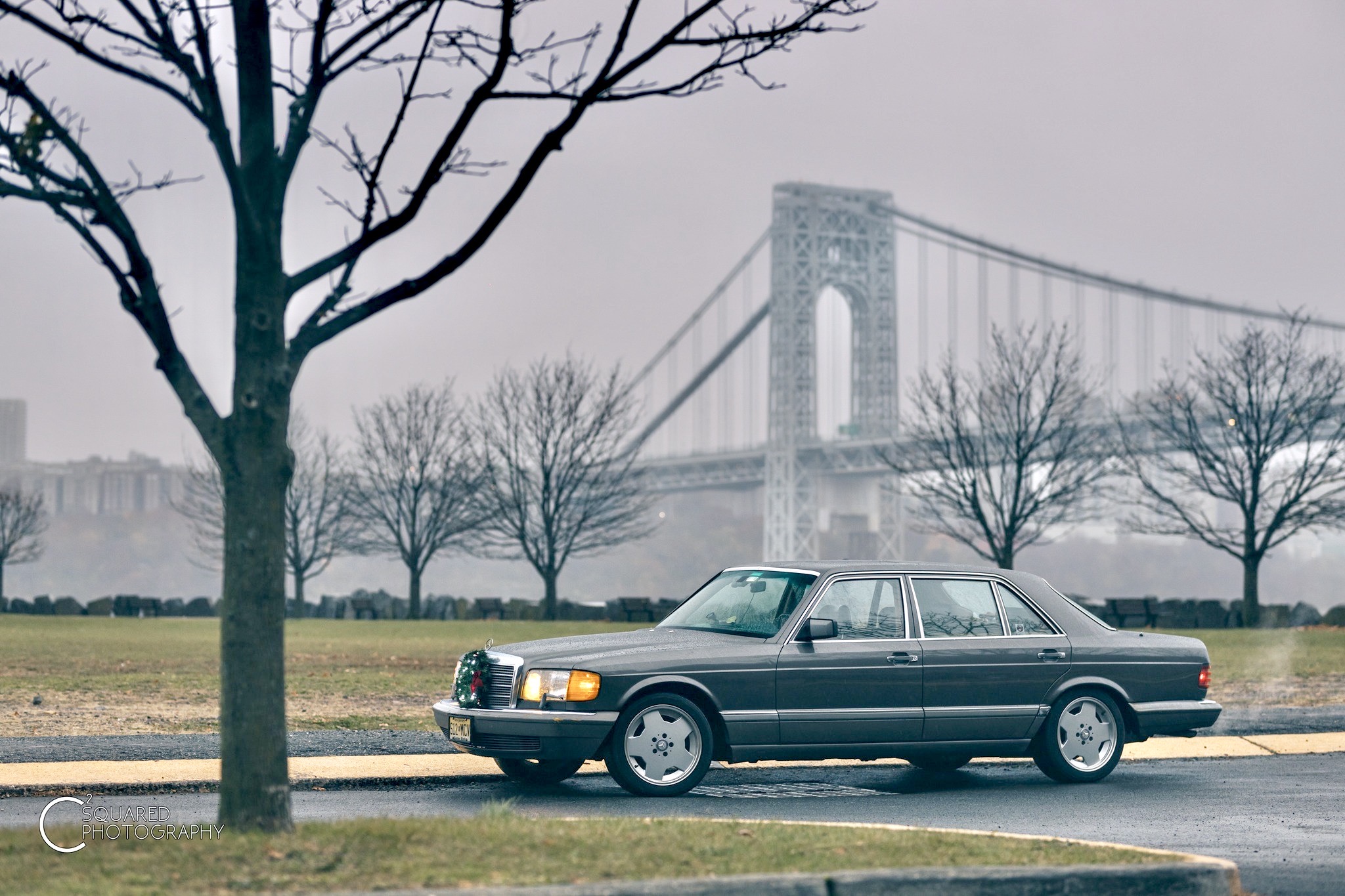
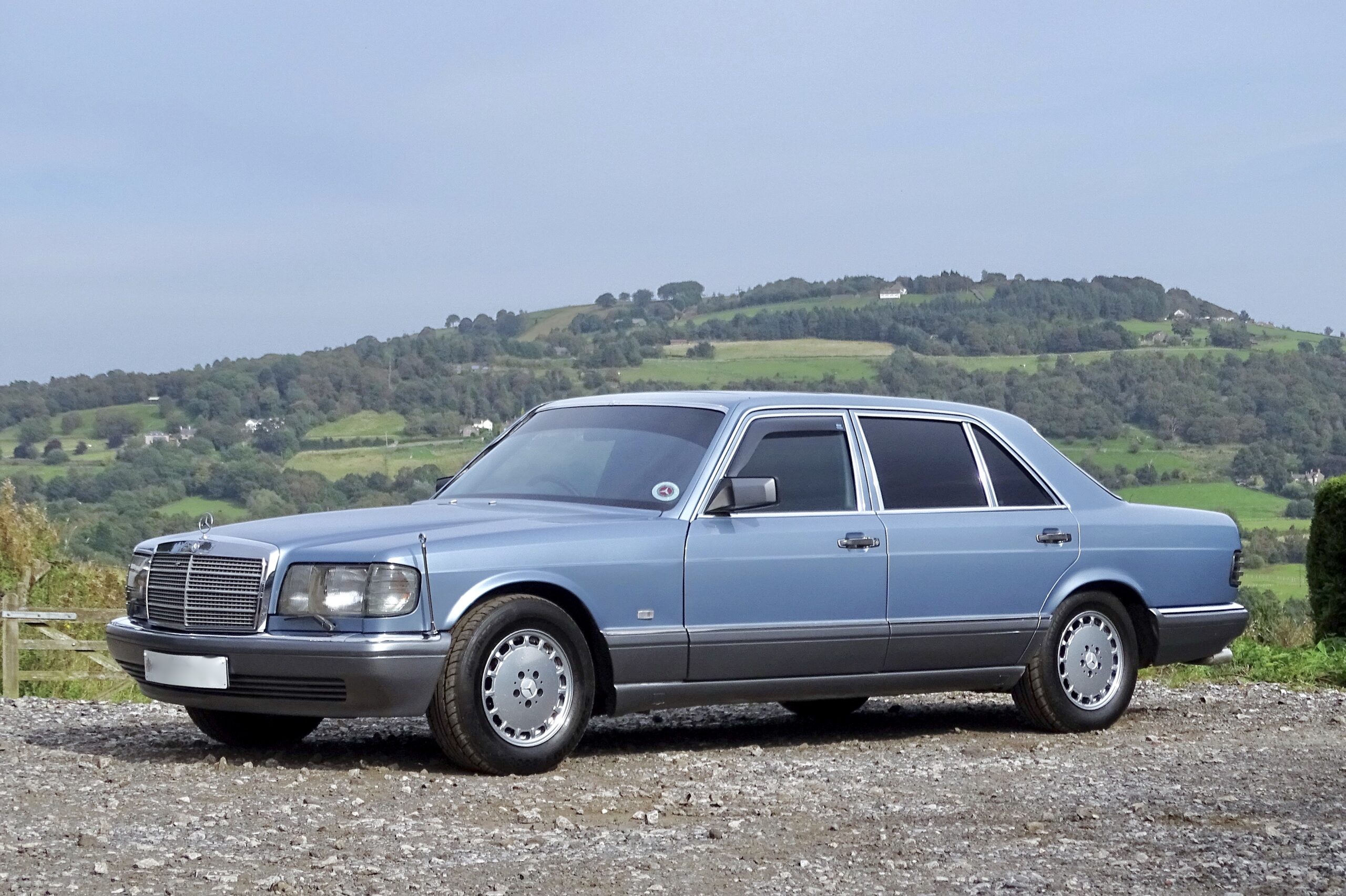
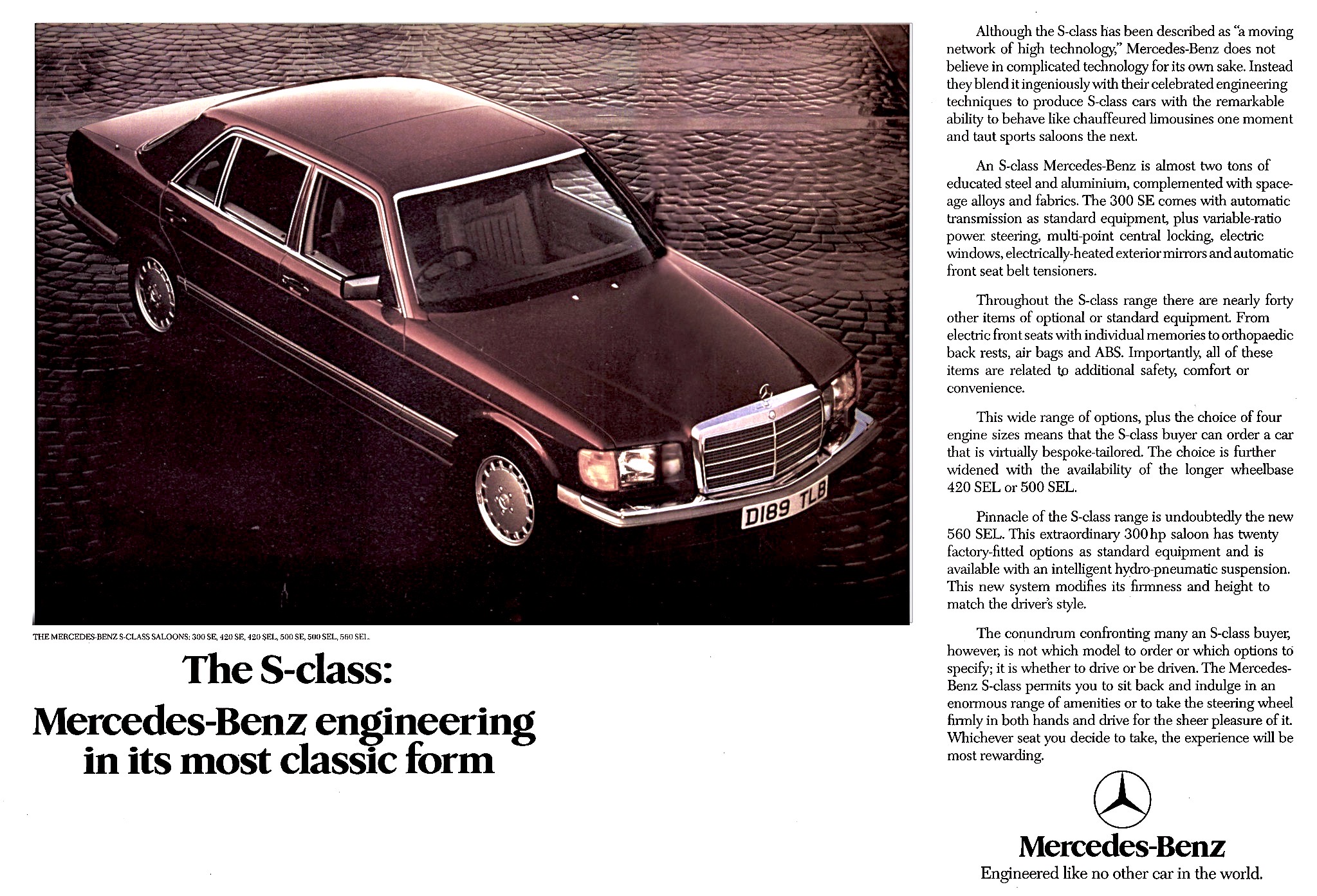
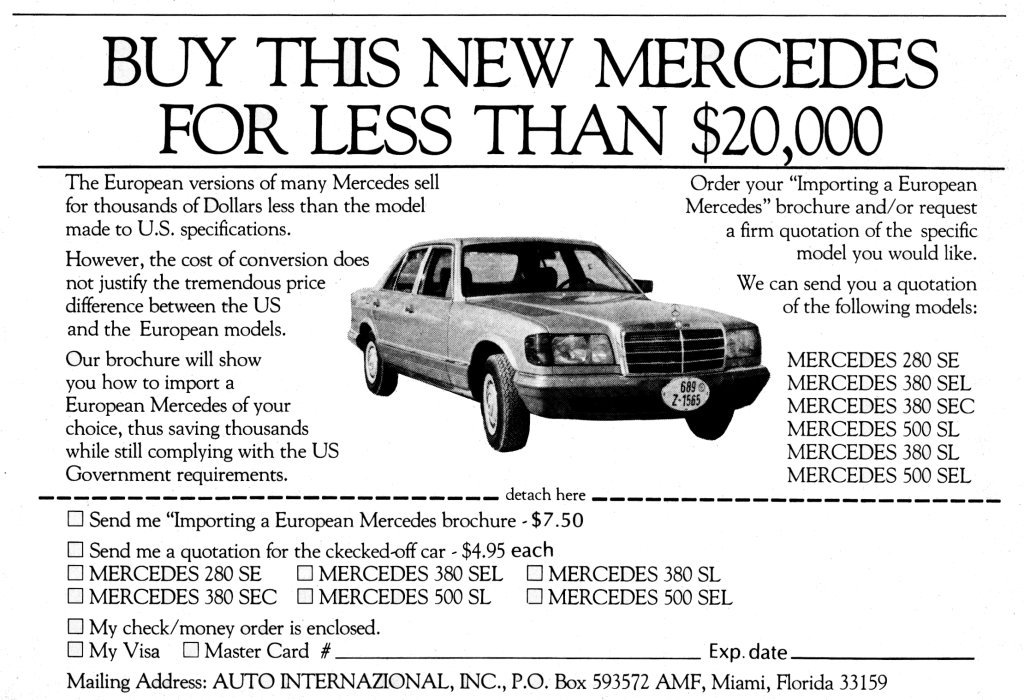
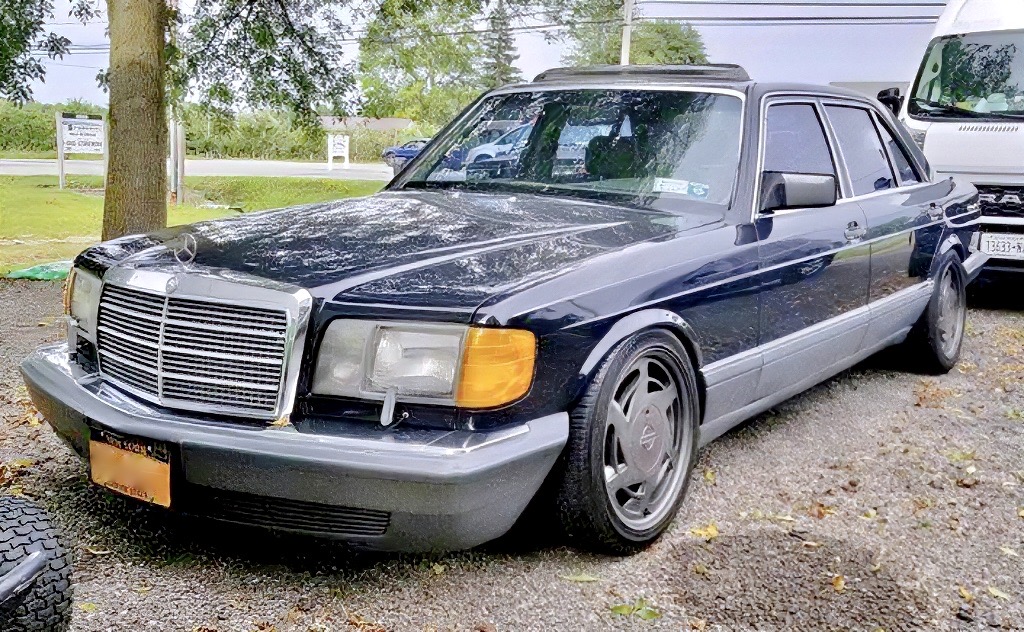
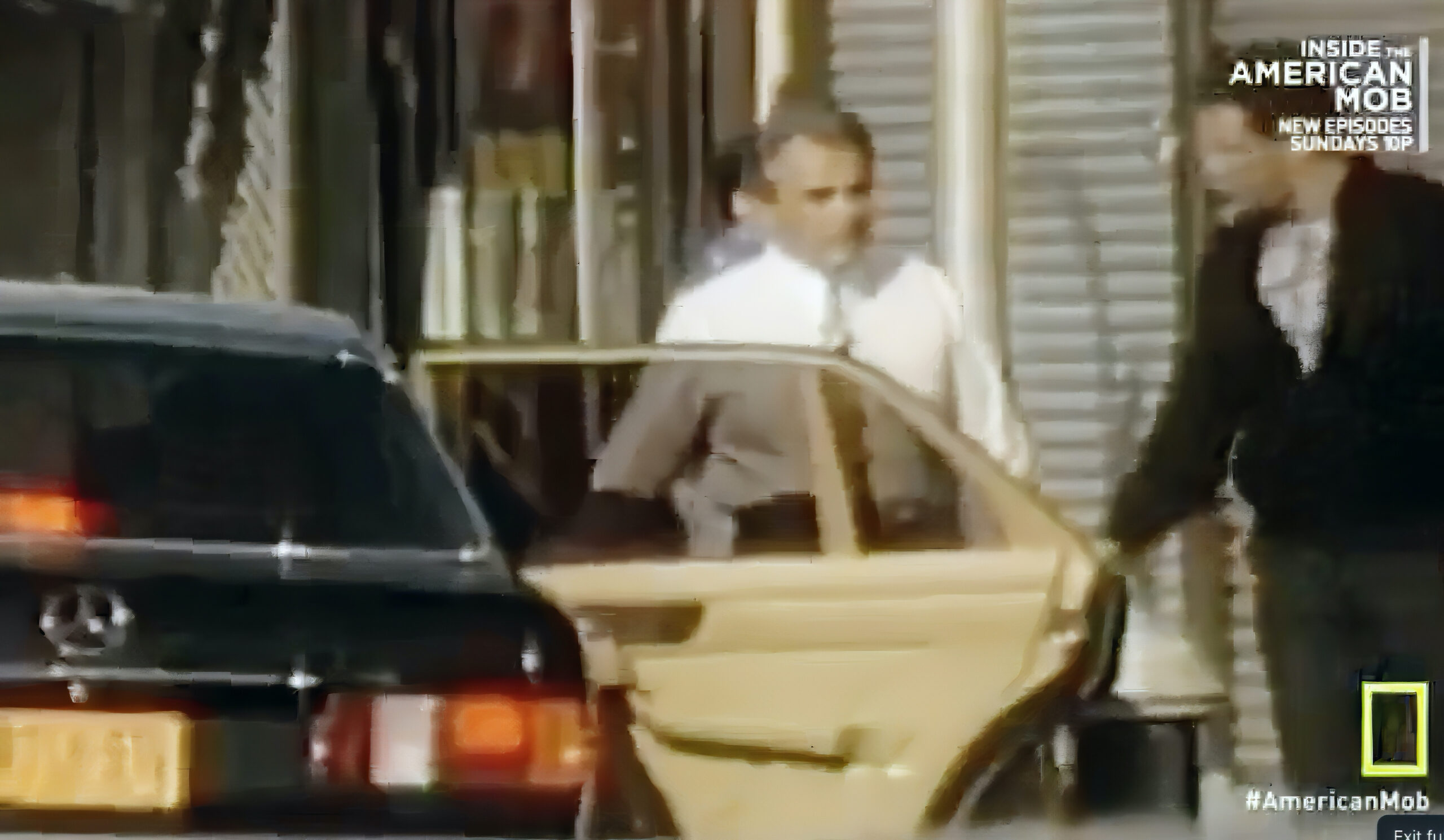

































I had a 1987 300SDL that I really liked, though unless you’re wrenching them yourself (which you can, given a lift and a metric toolset) they can get pretty expensive to keep up-to-date on service. The 3.0l diesel OM603 gets a bad rap because of the trap oxidiser, but pretty much any you would buy today will have had that trap removed a long time ago, likely under warranty. There were also 3.5l OM603s in at least the 1987 model year (1987 350SDL), and those were the first to have con rod bending issues. A properly-maintained 300SDL will last a million miles, and the body will likely rust out or the owner will tire of expensive maintenance long before the car needs to die.
Very good article and great car 🙂